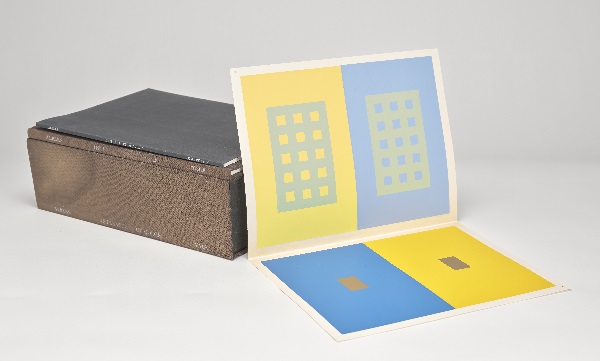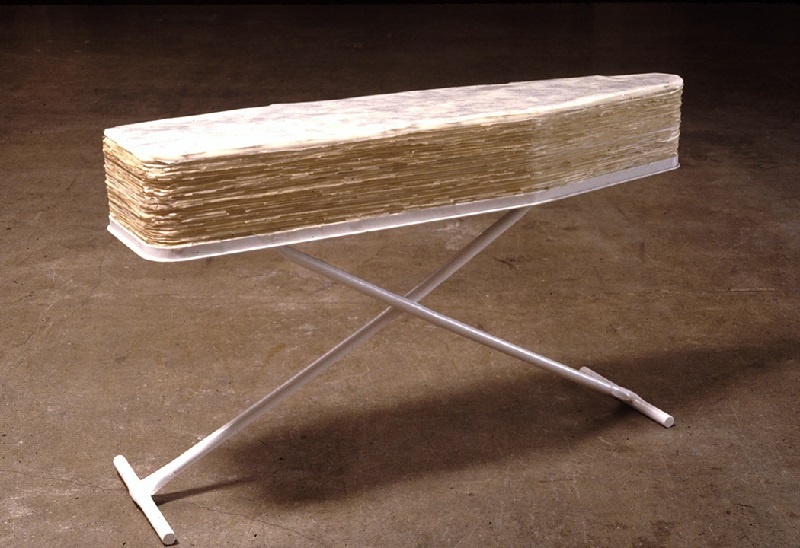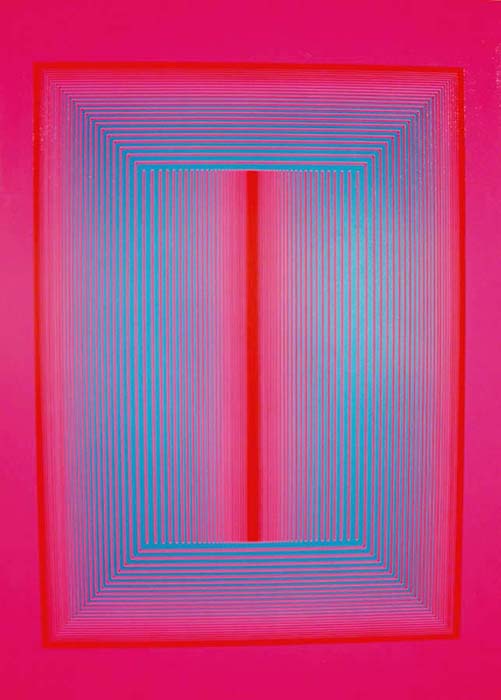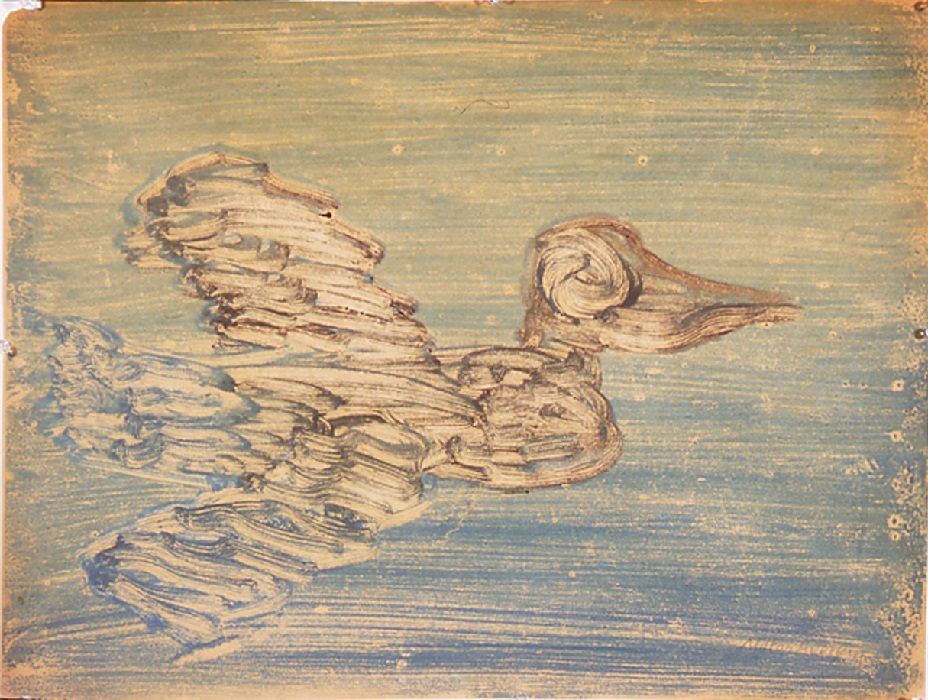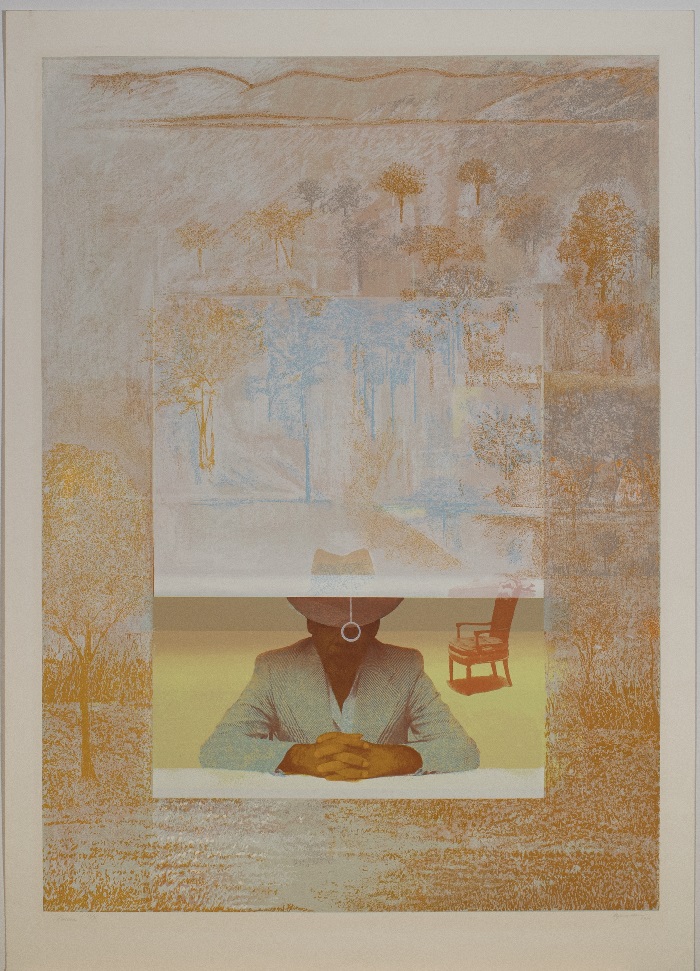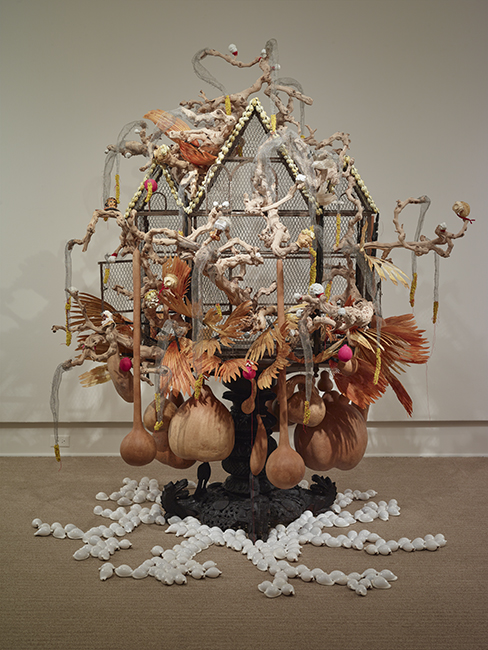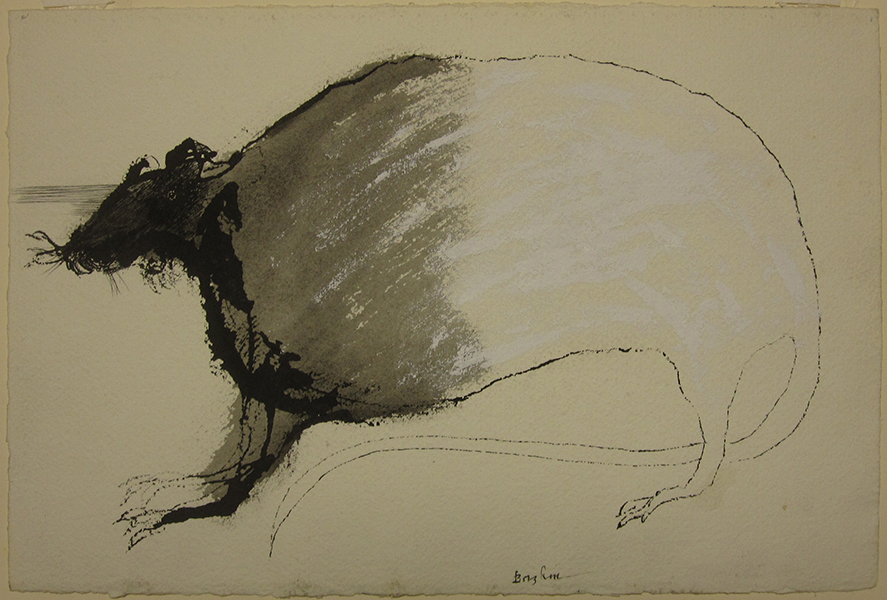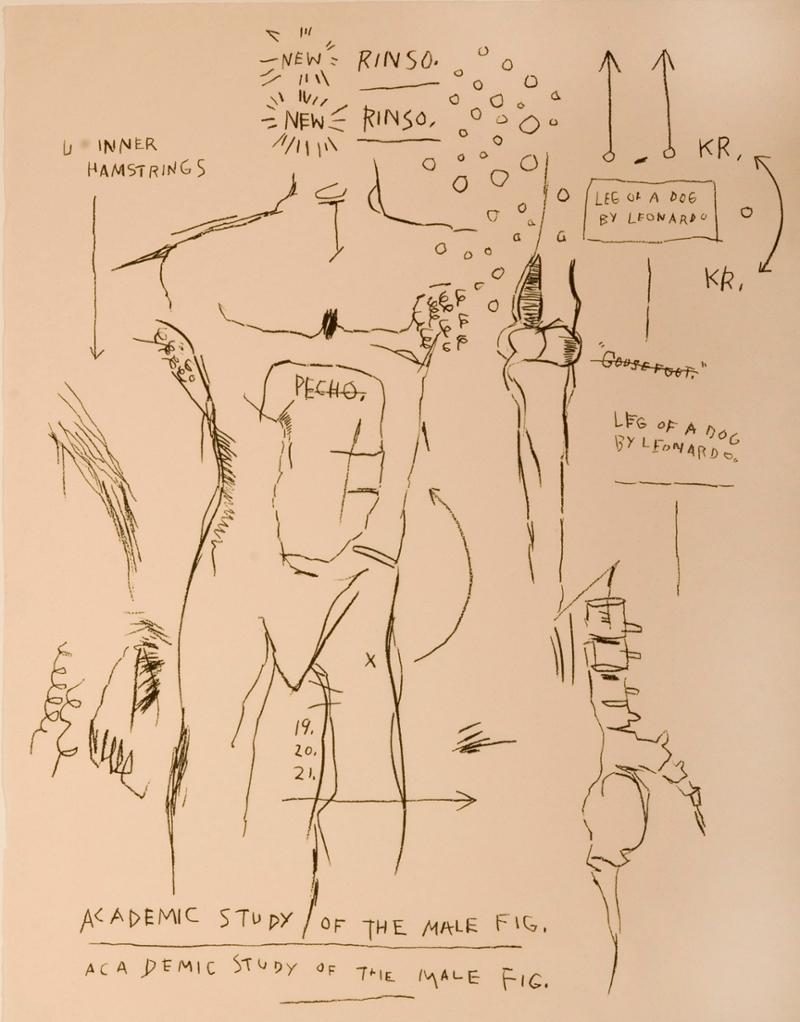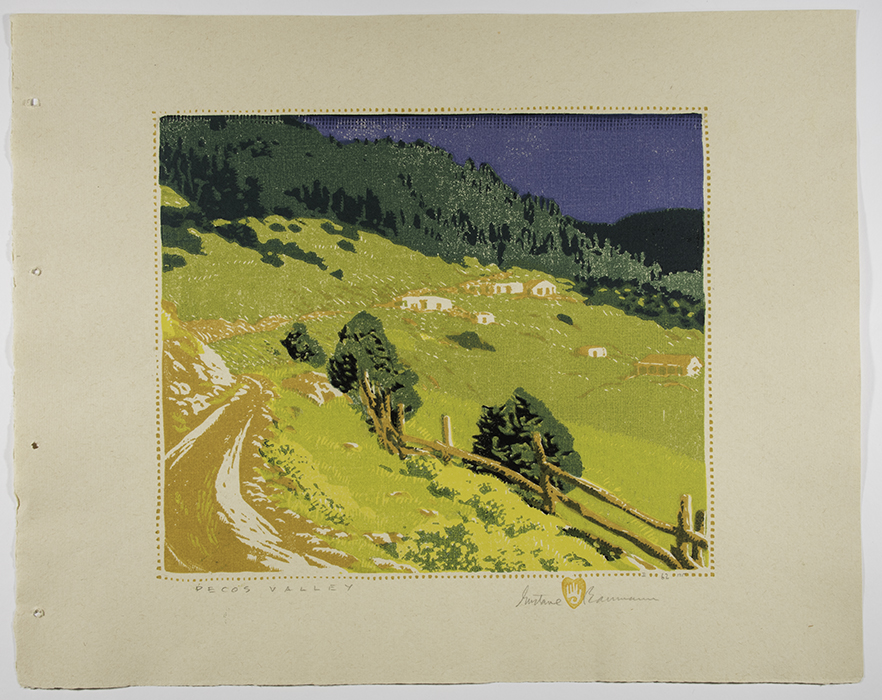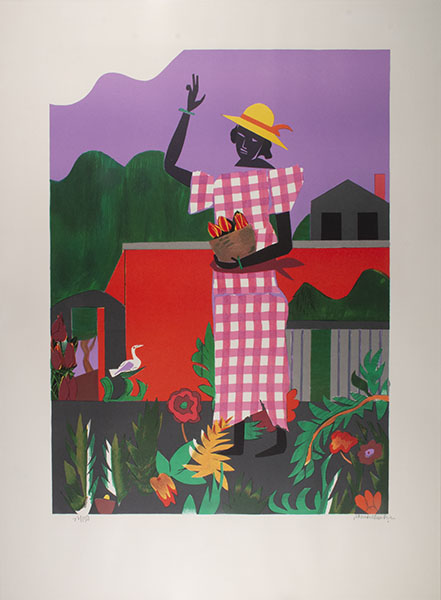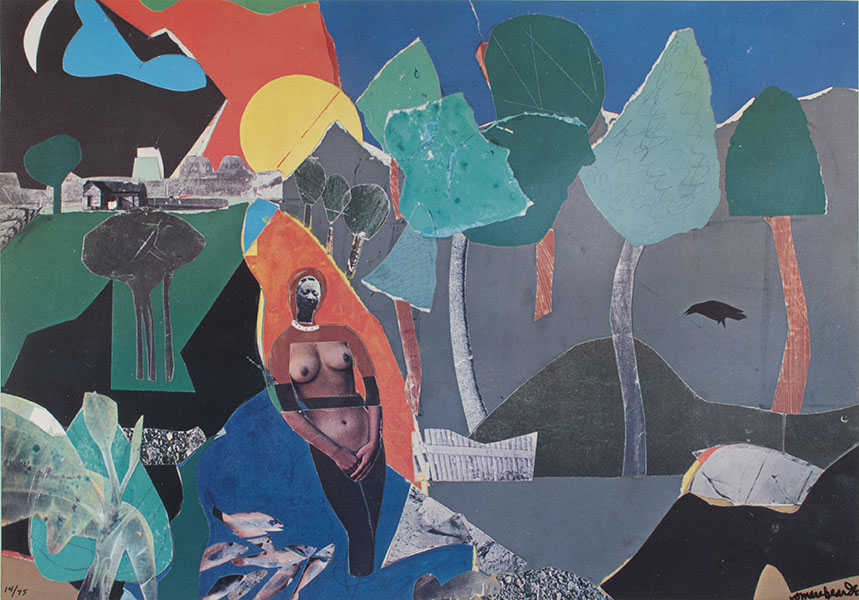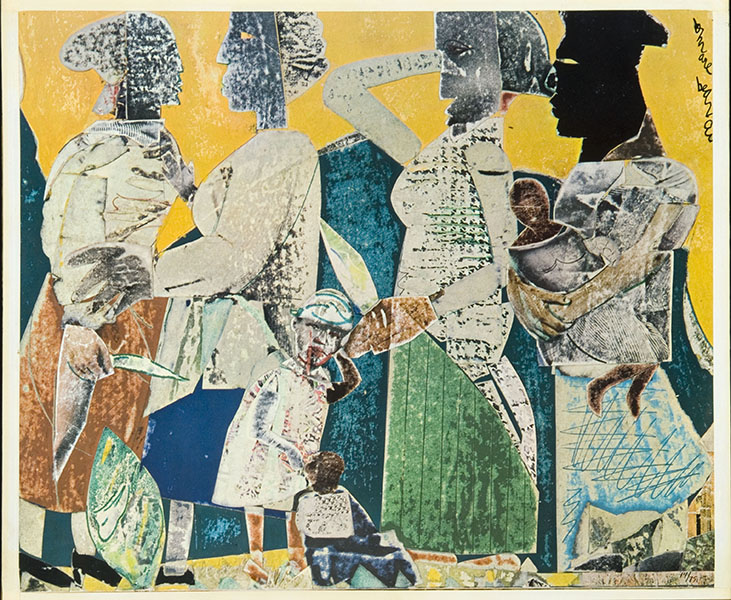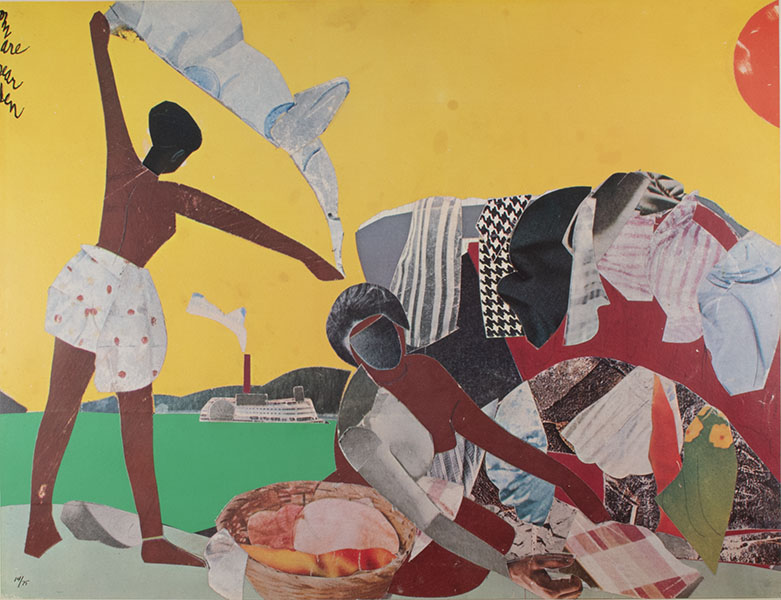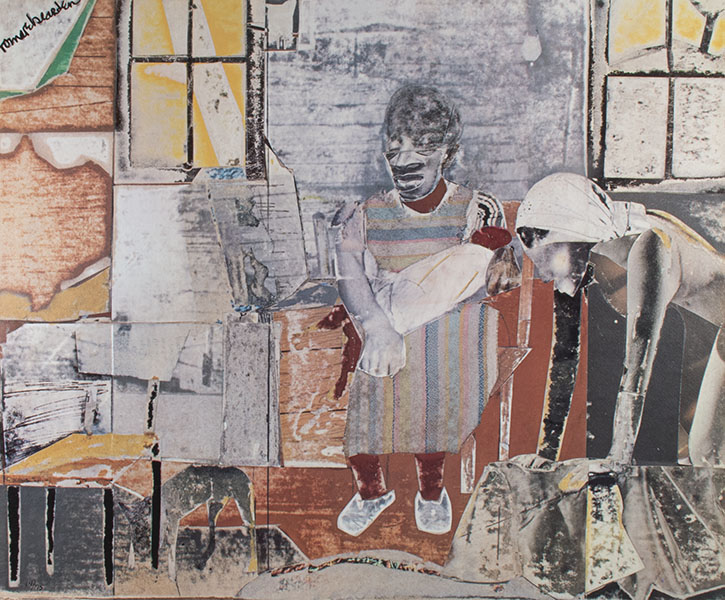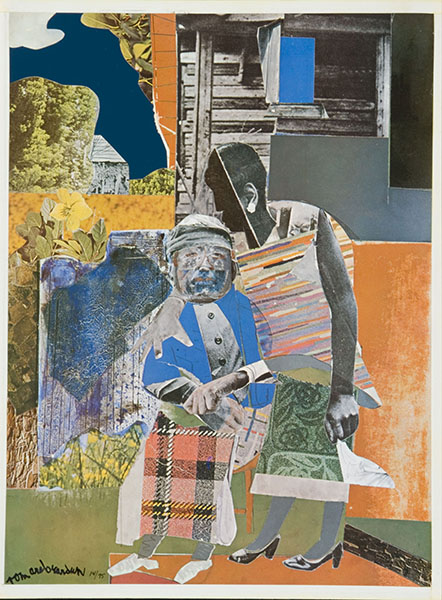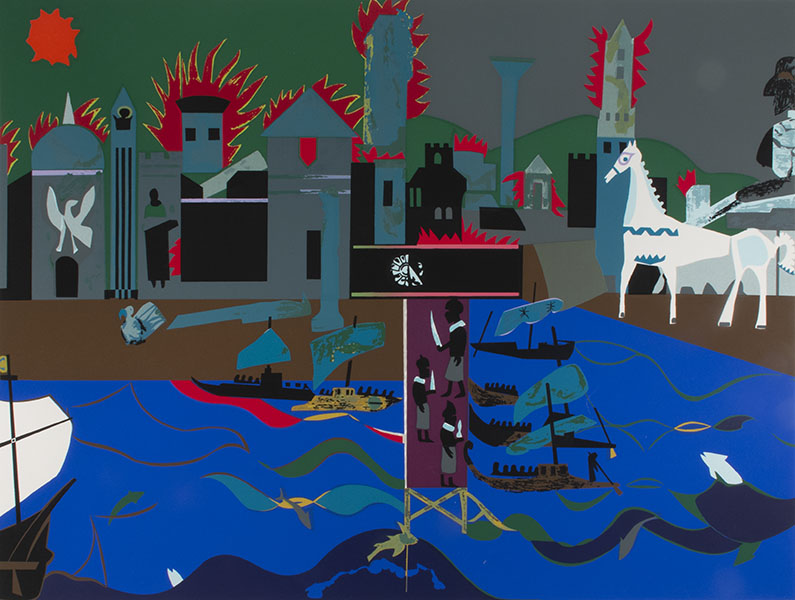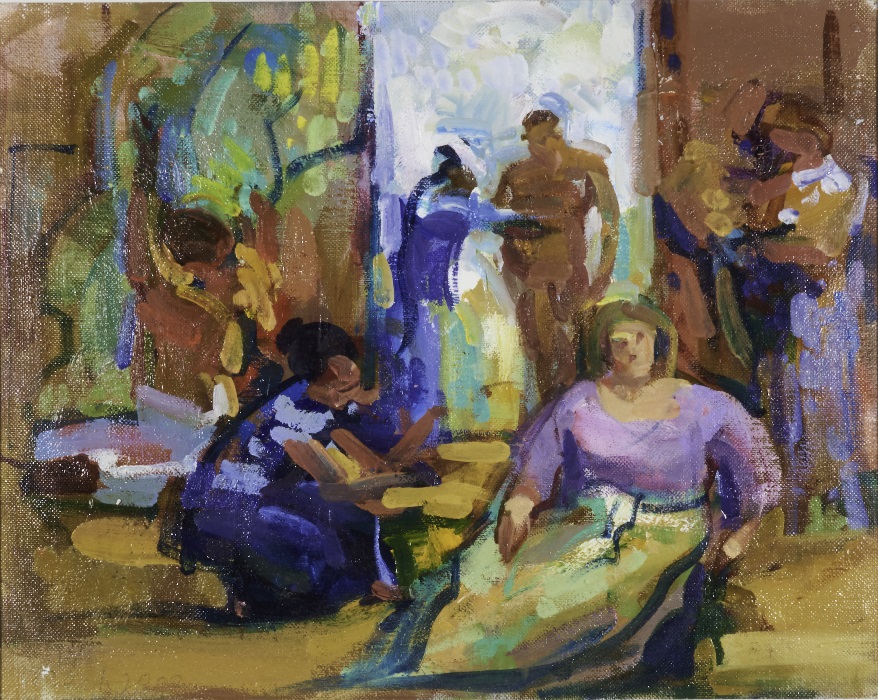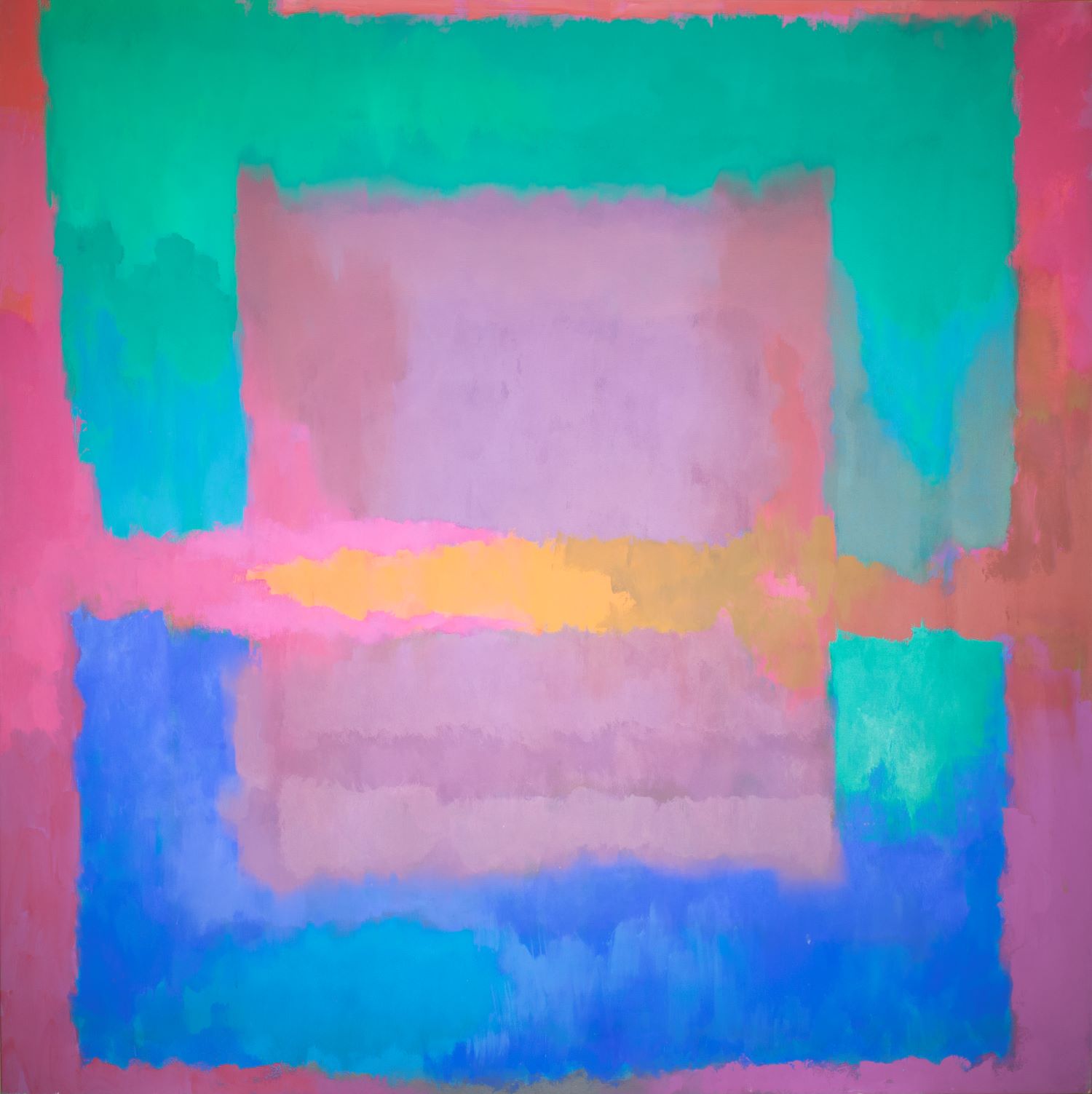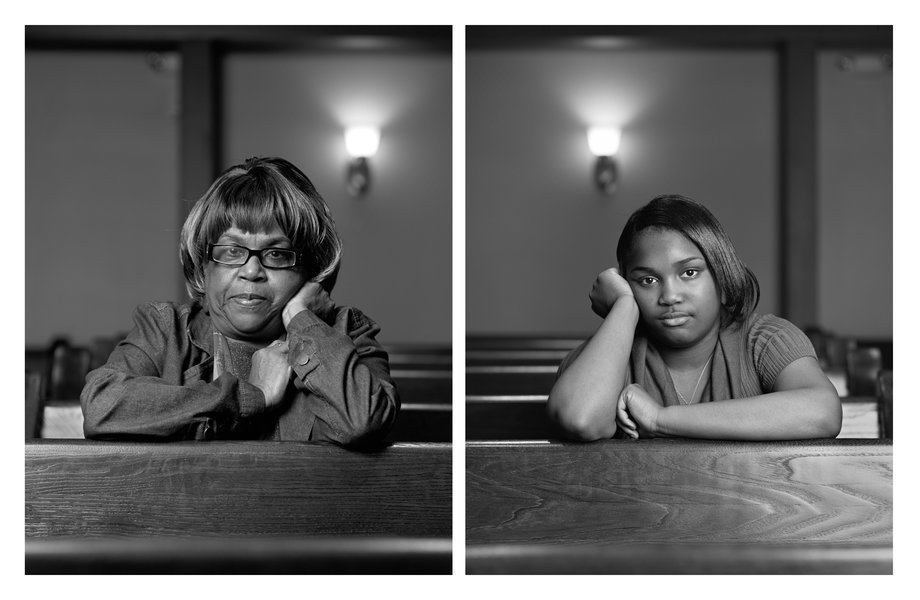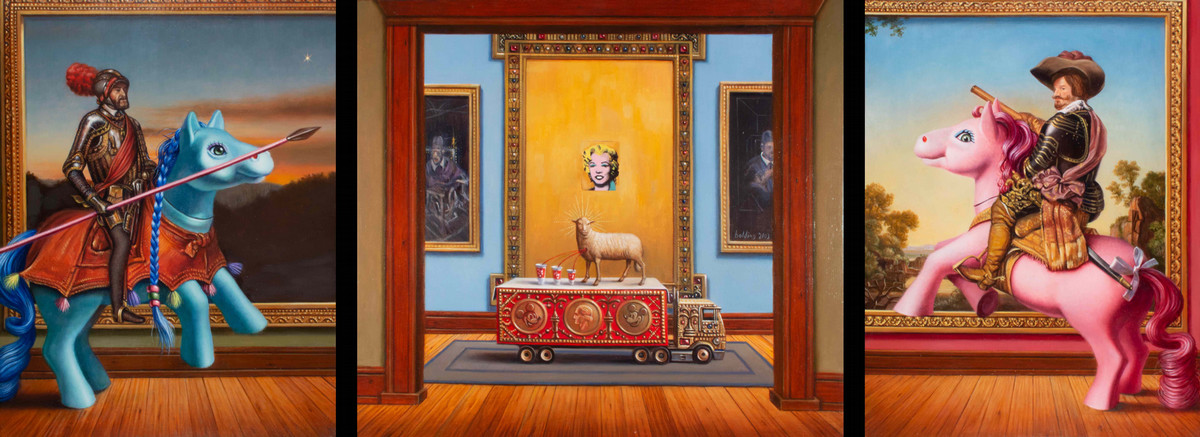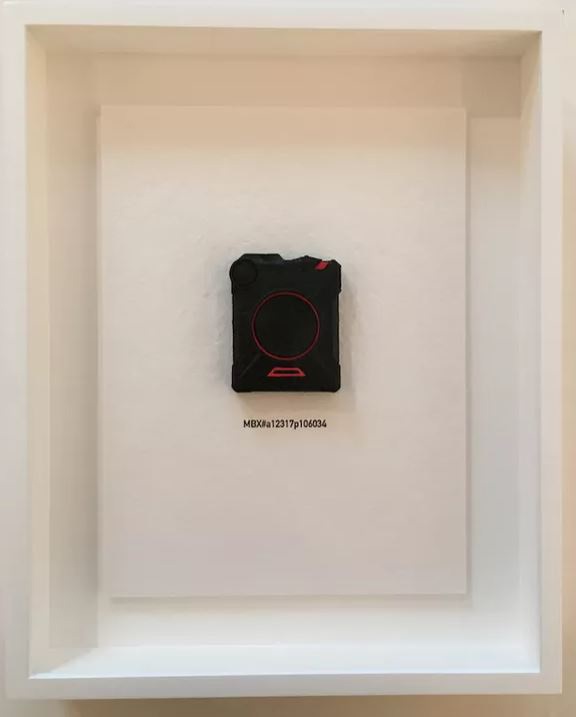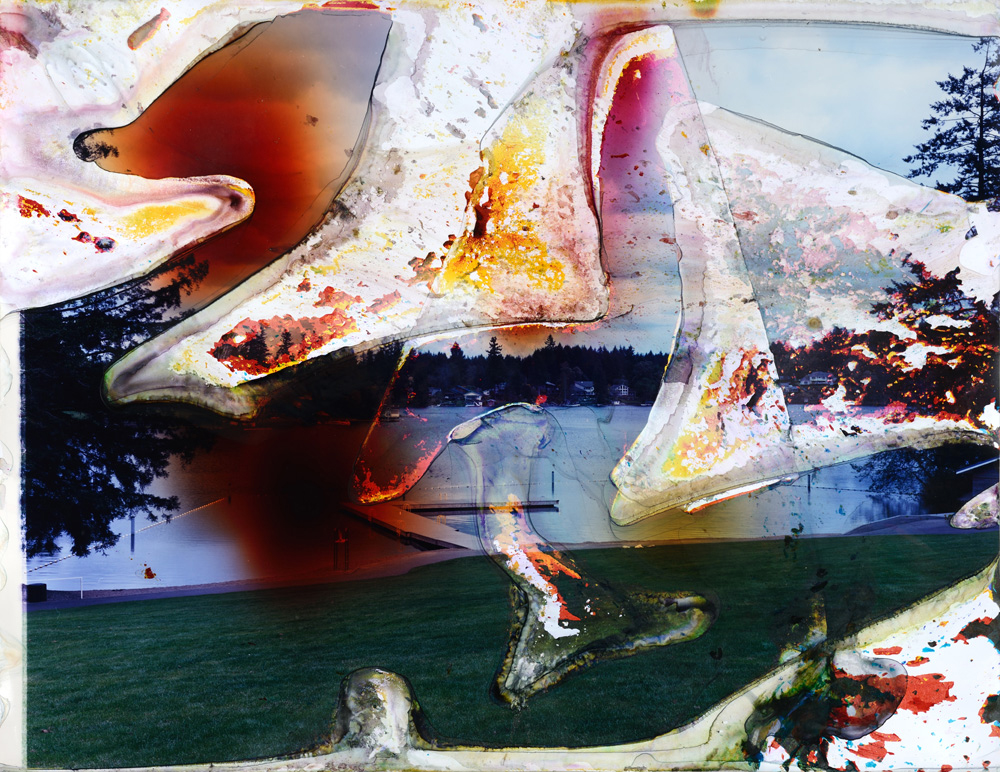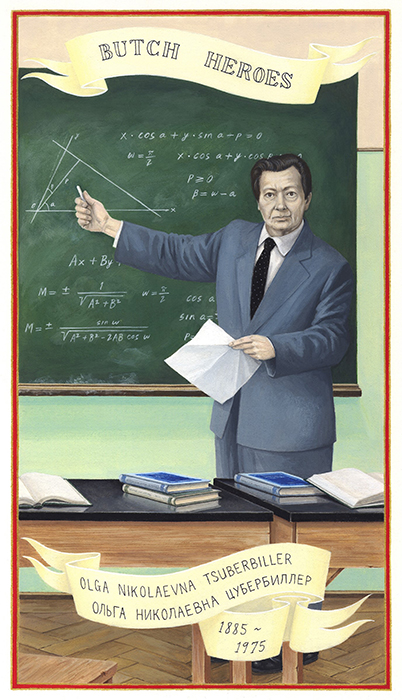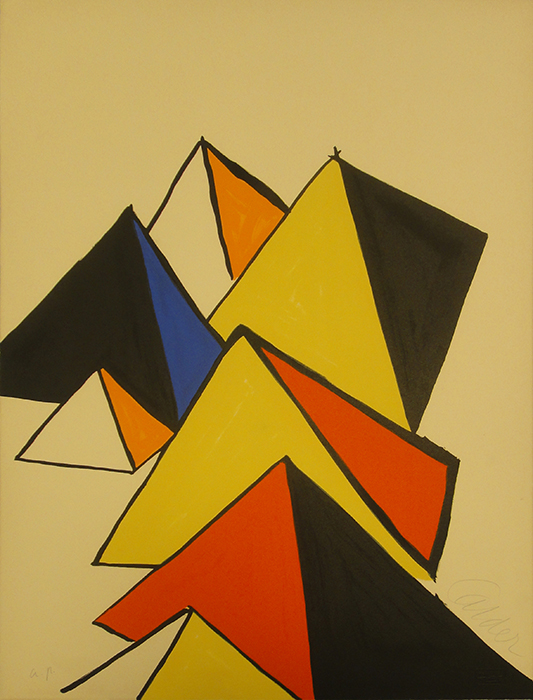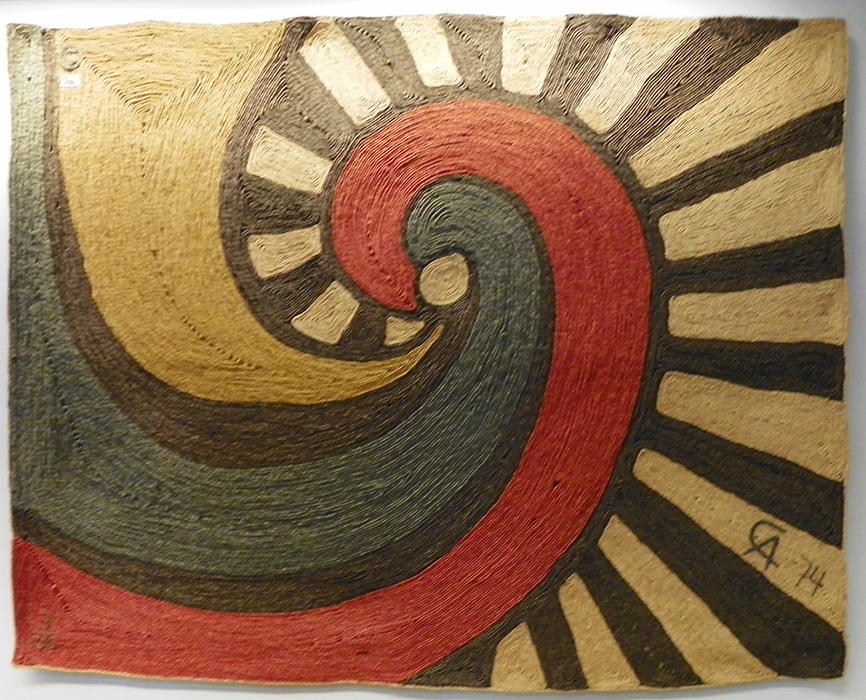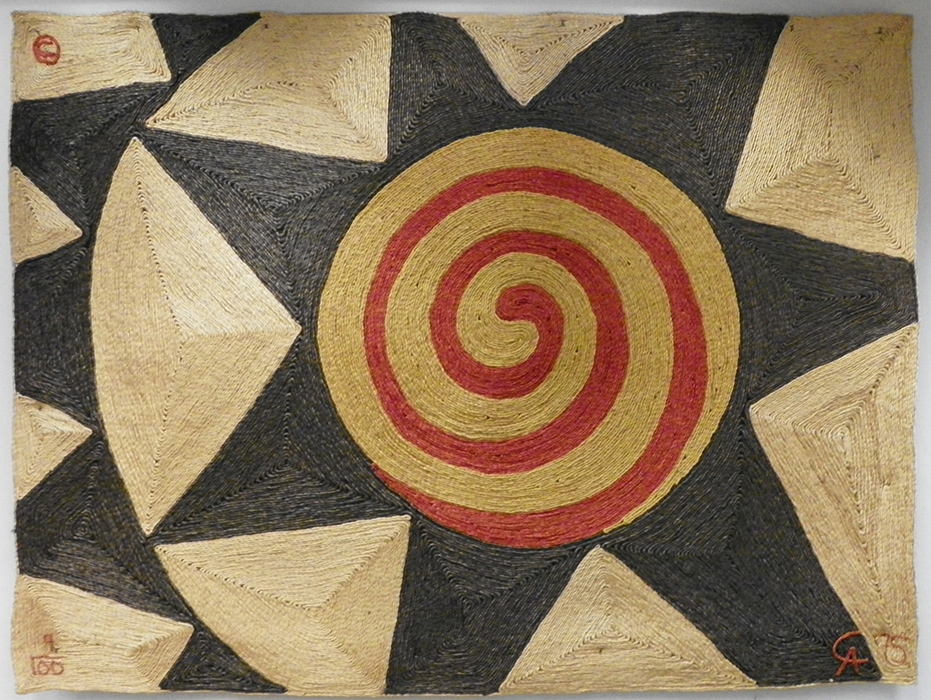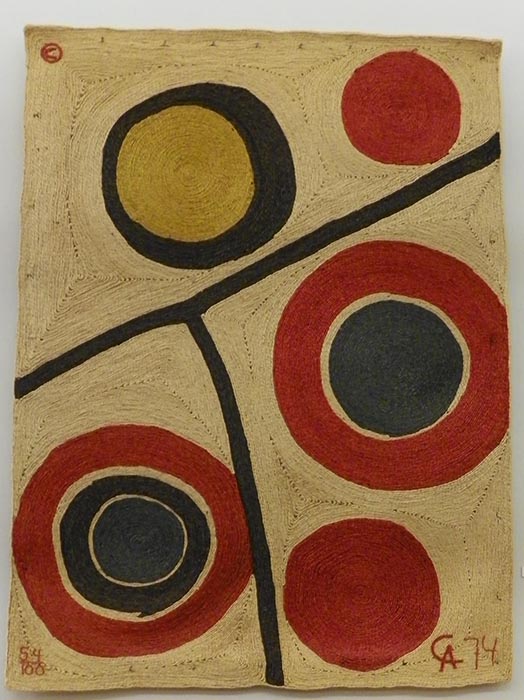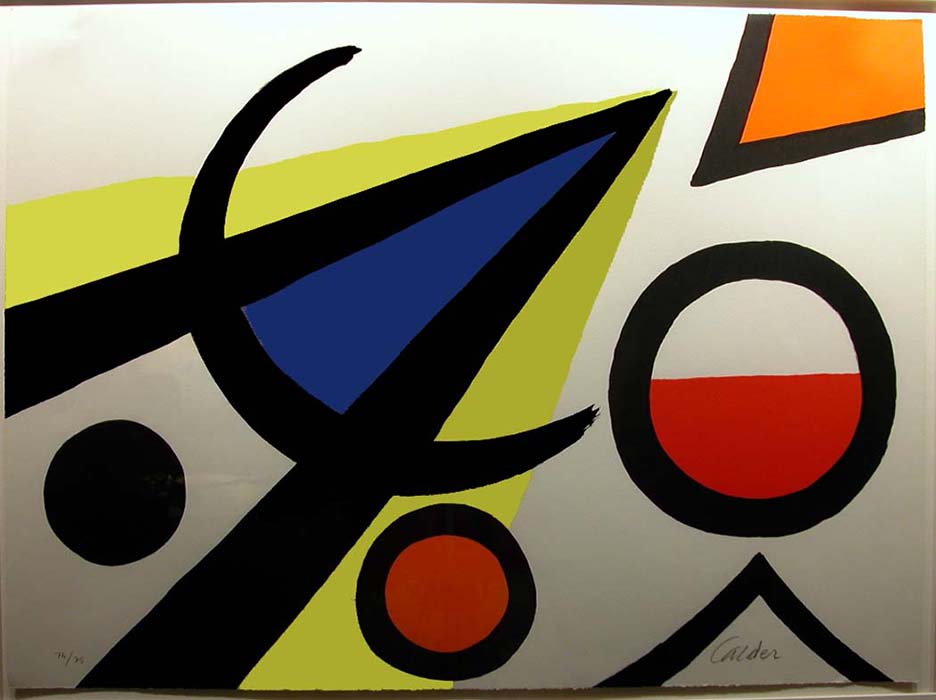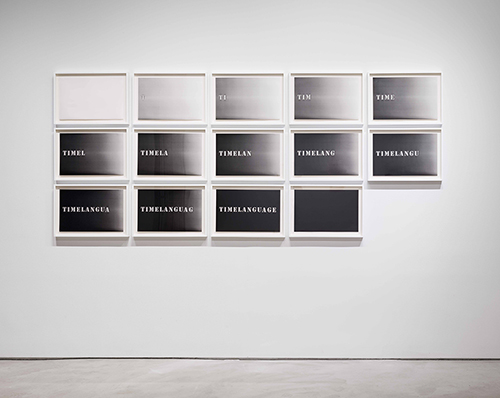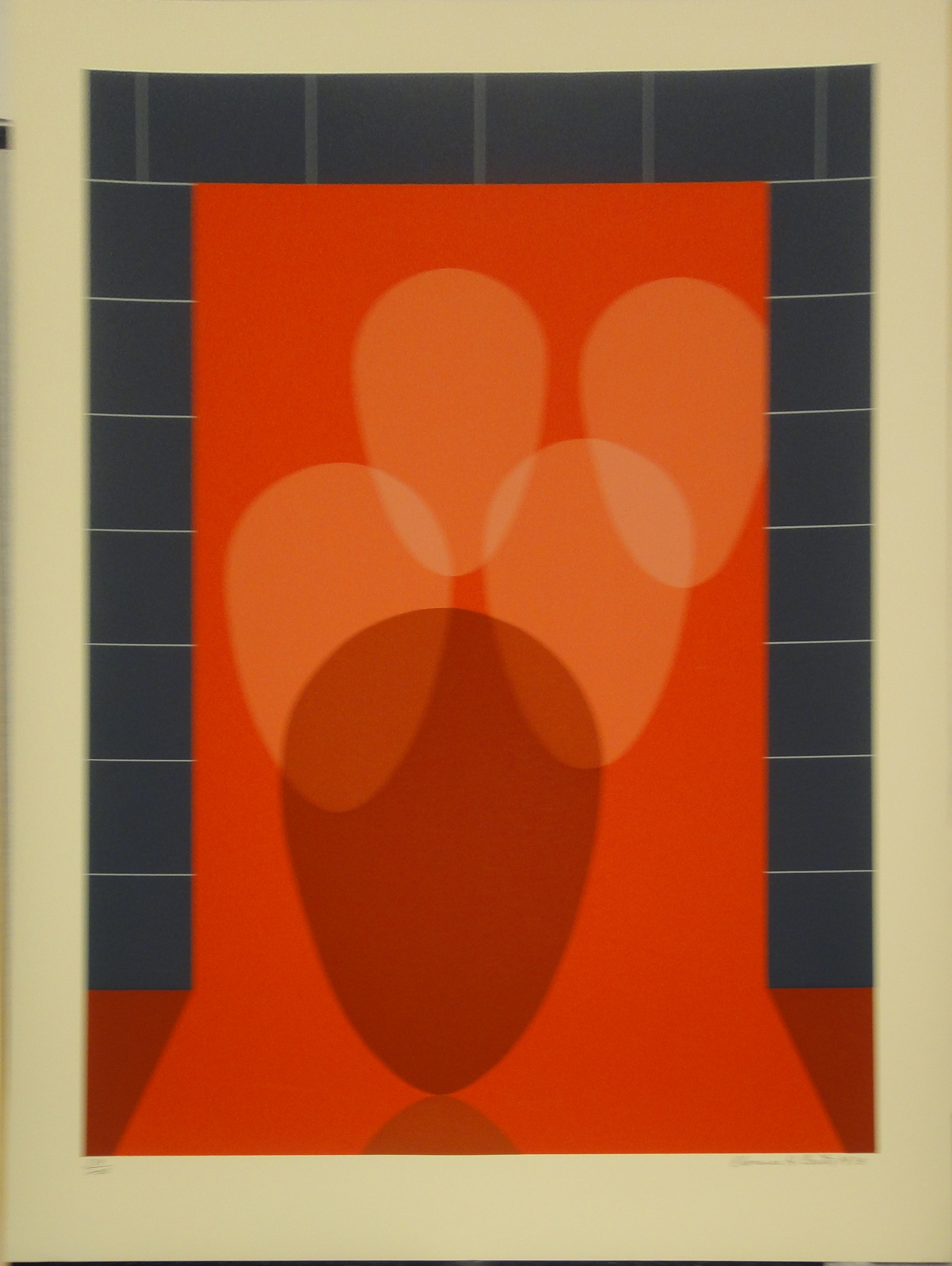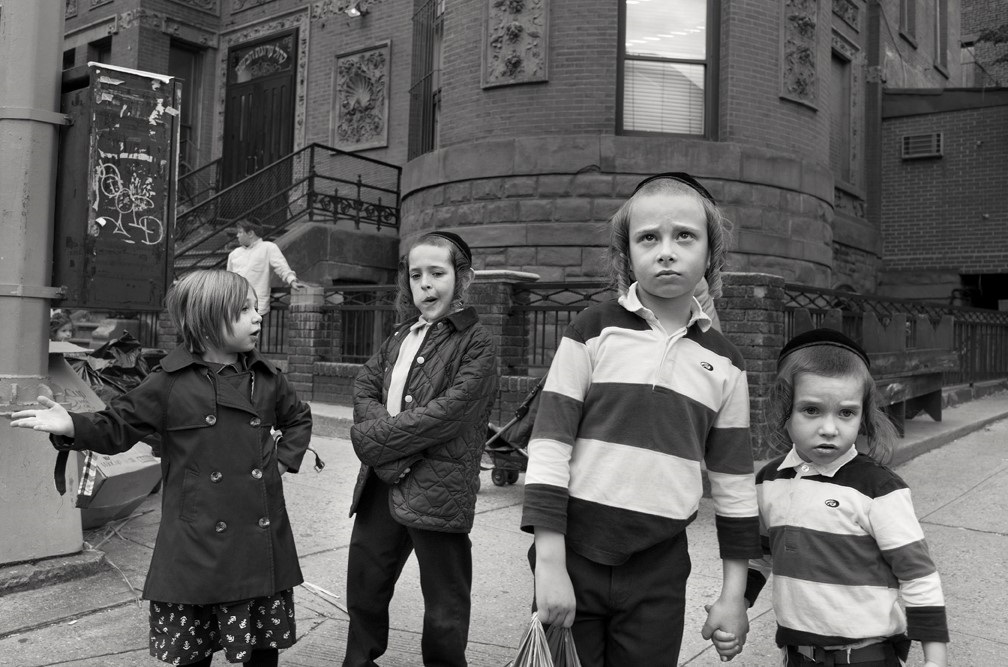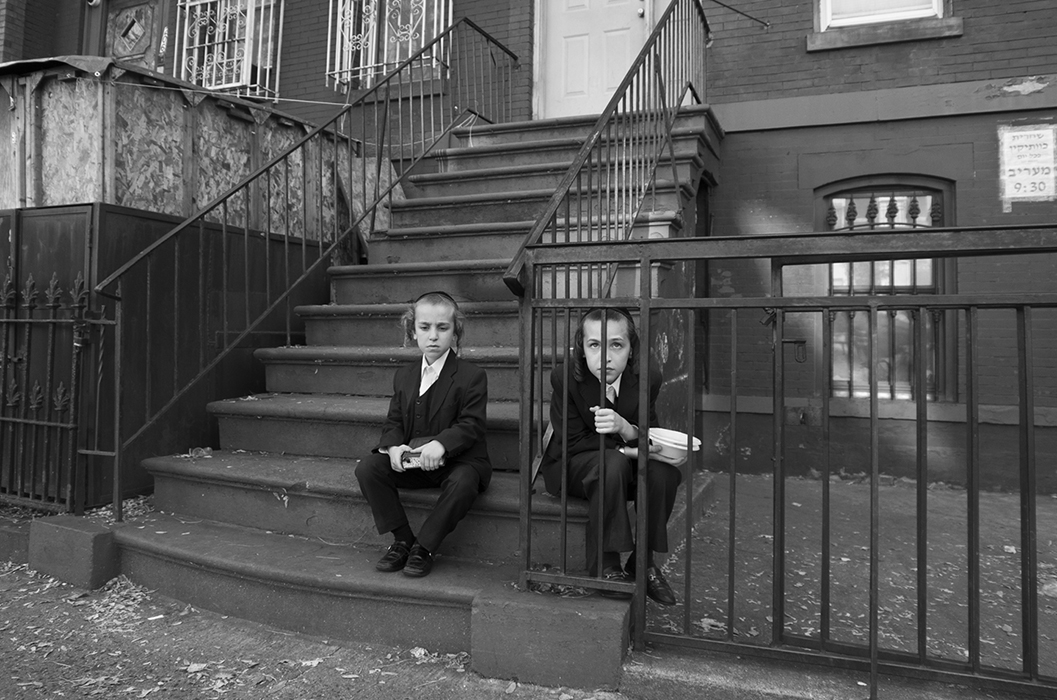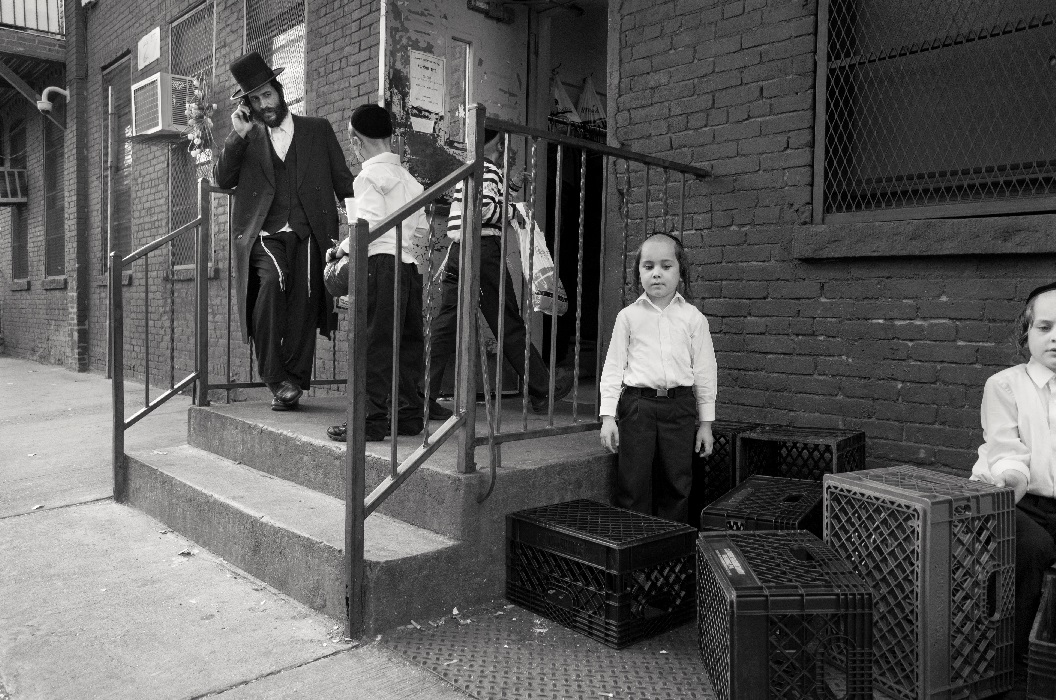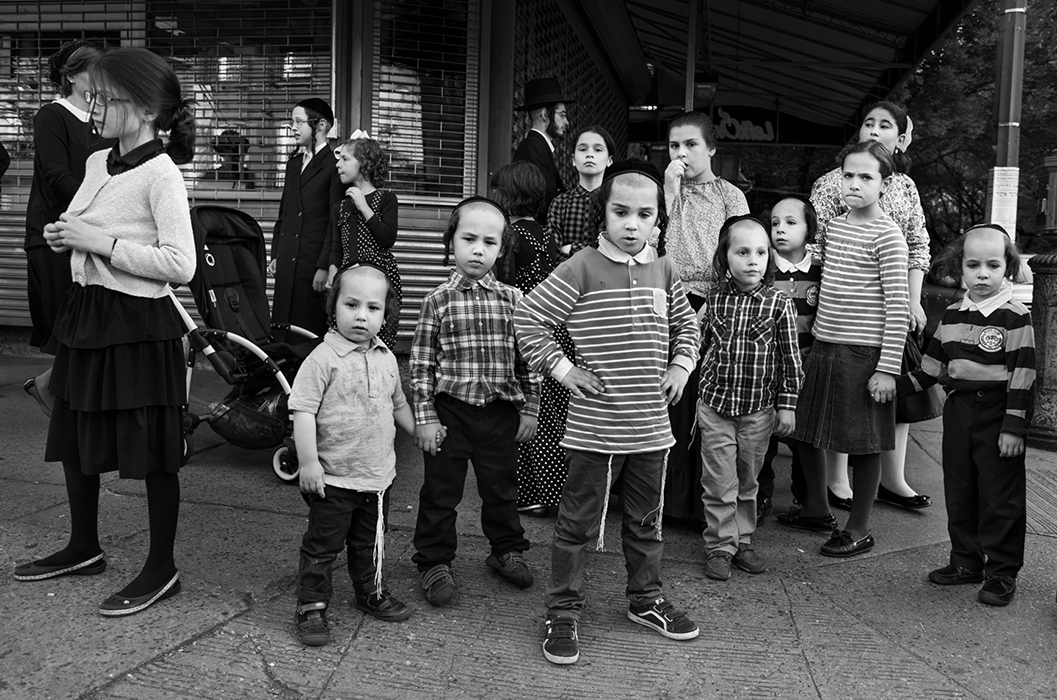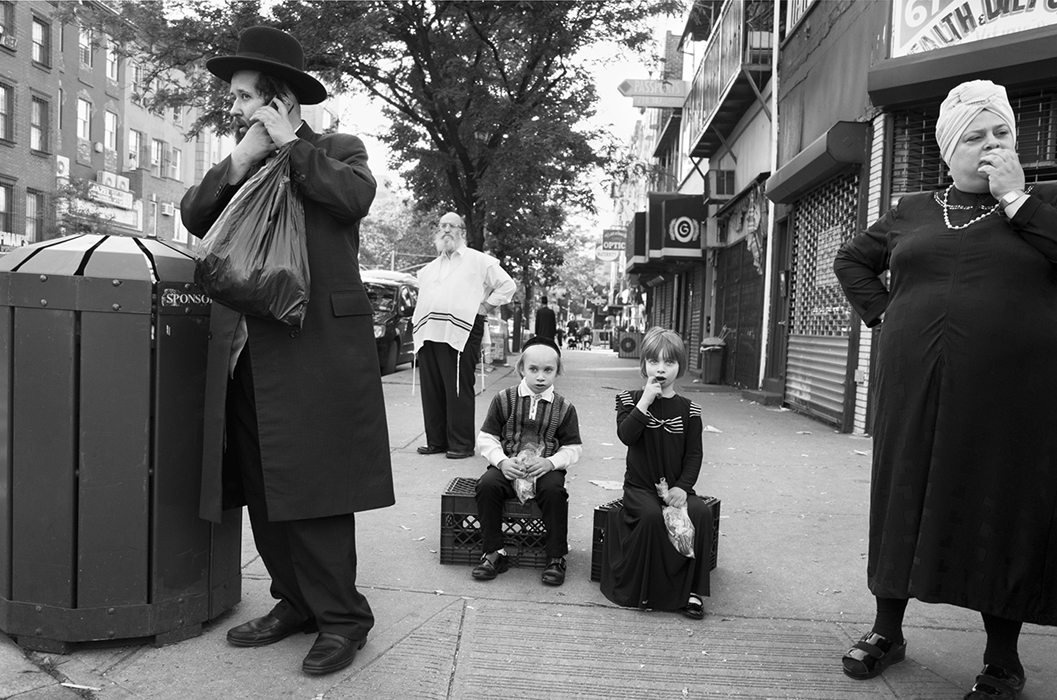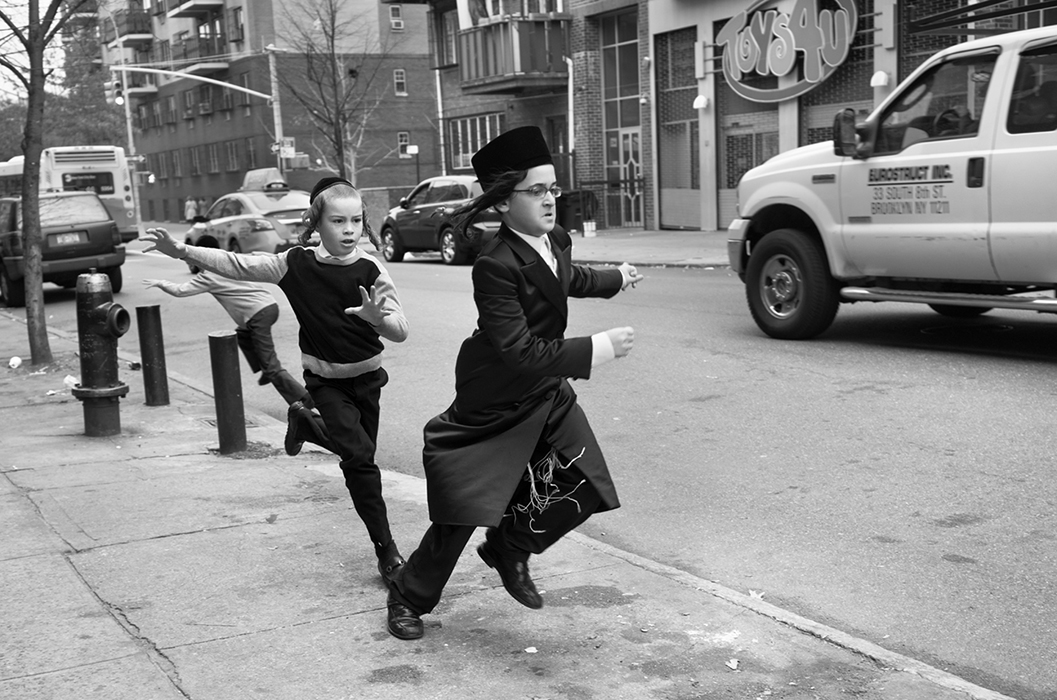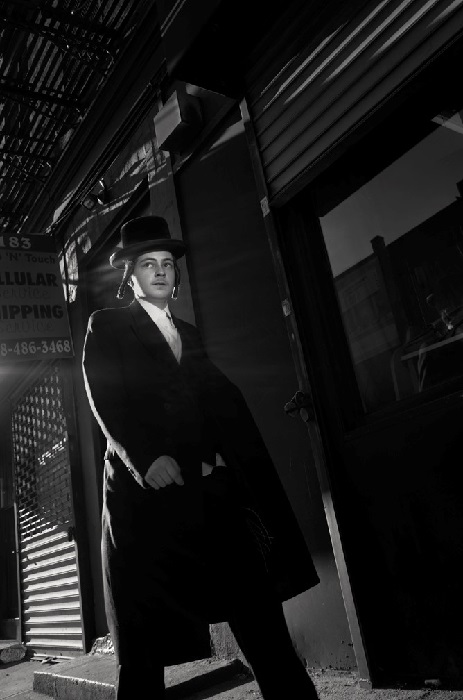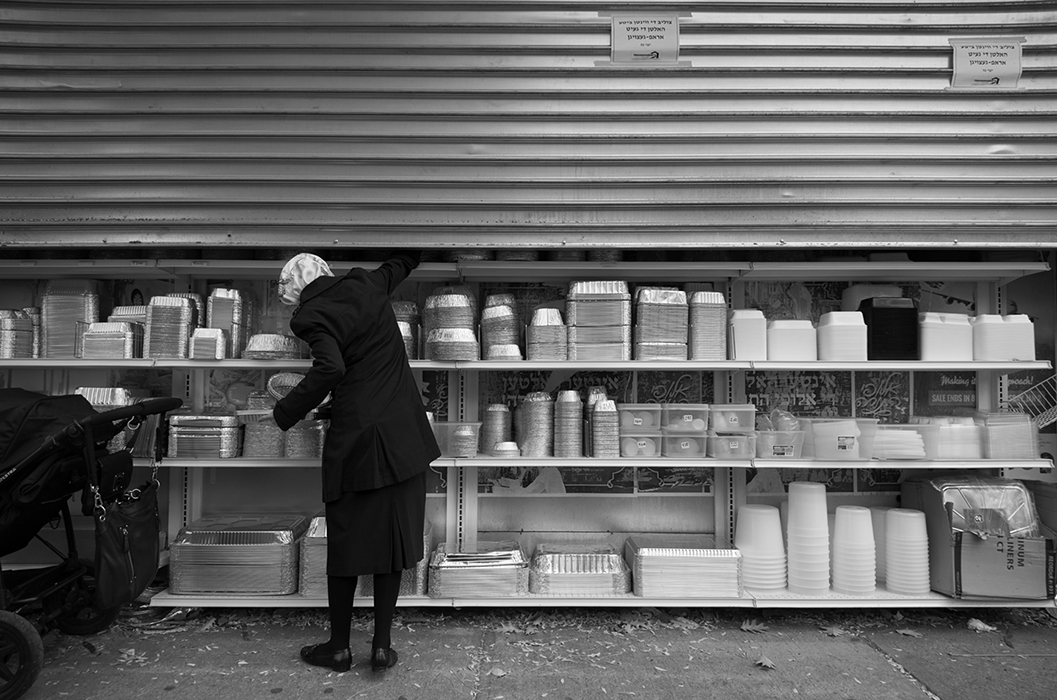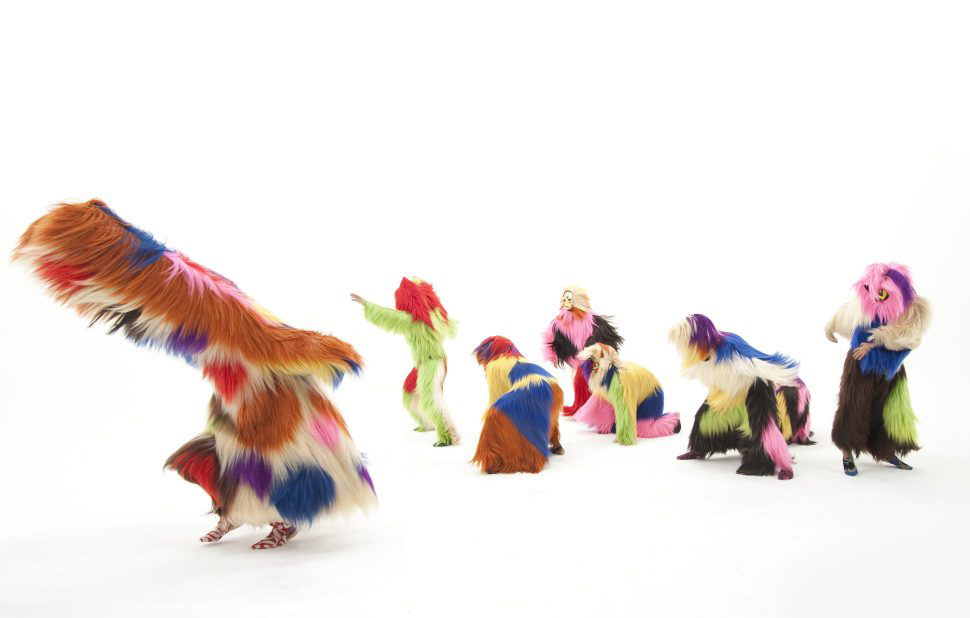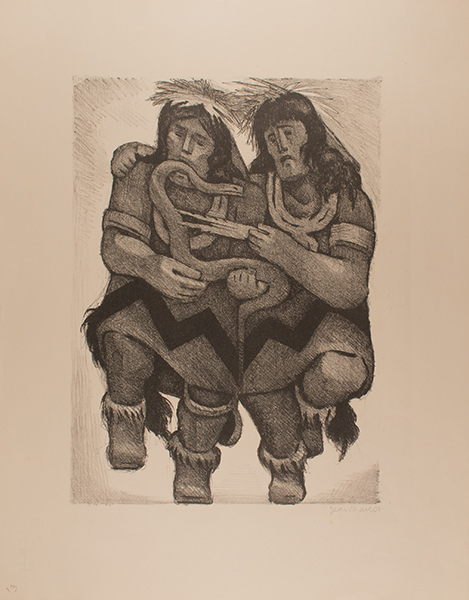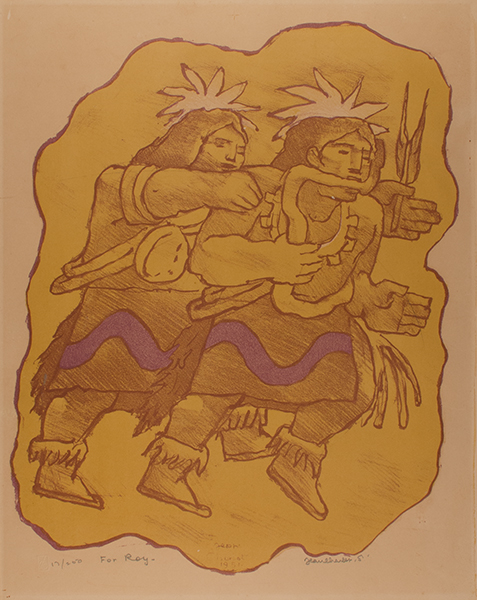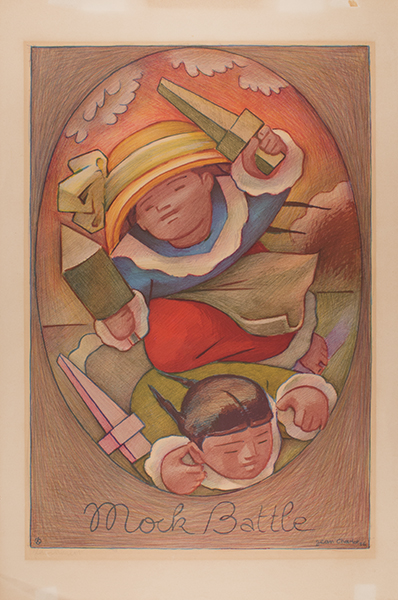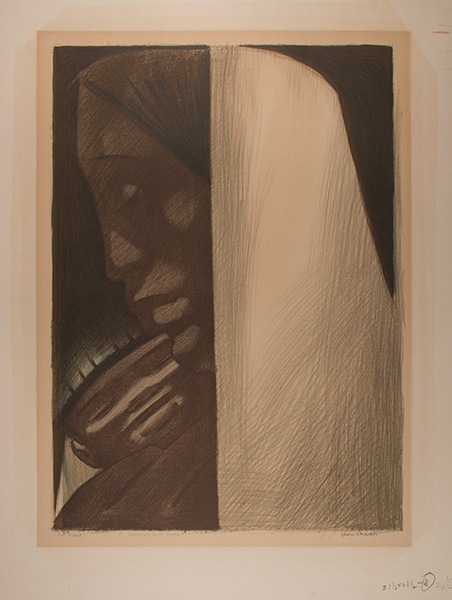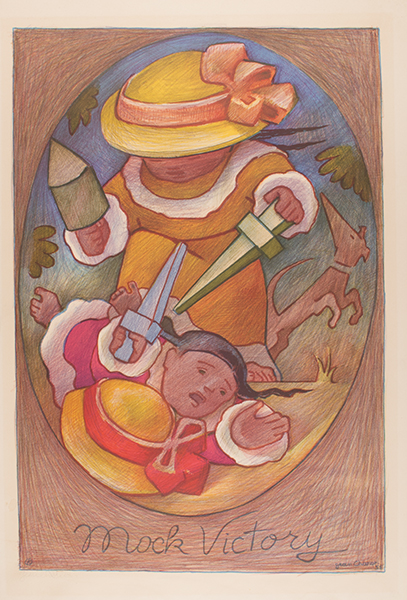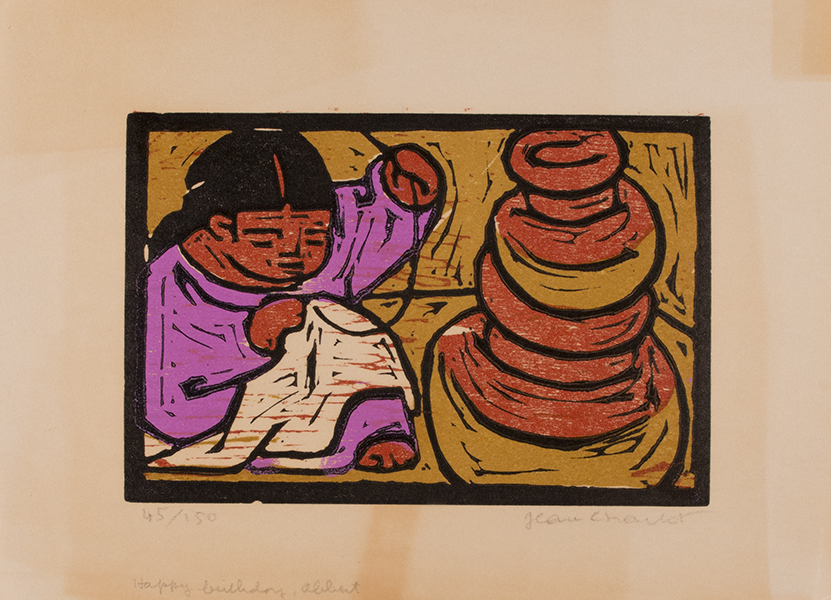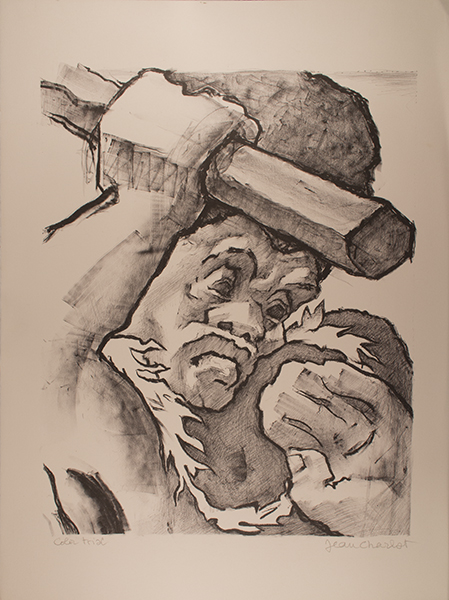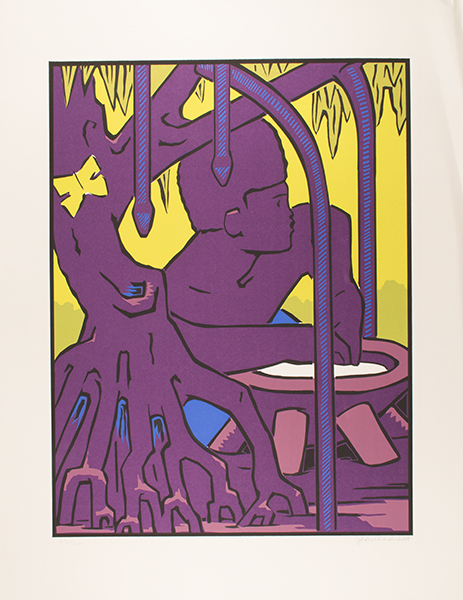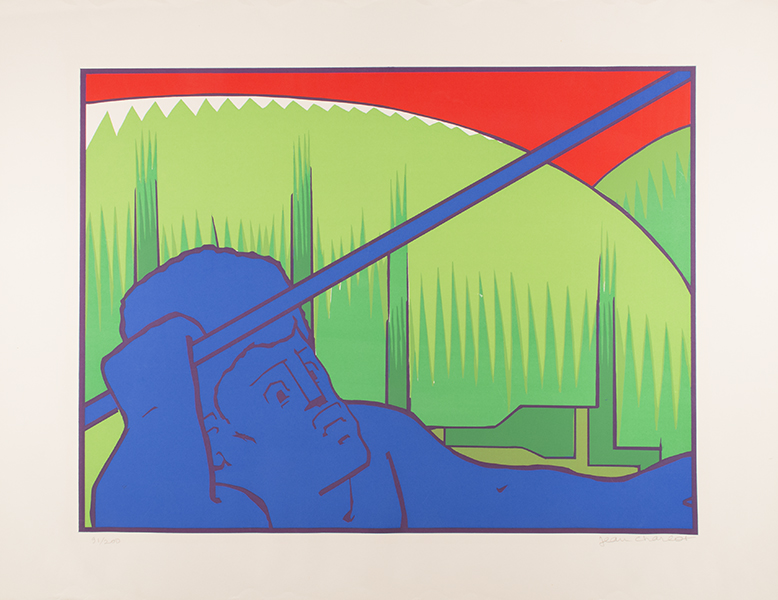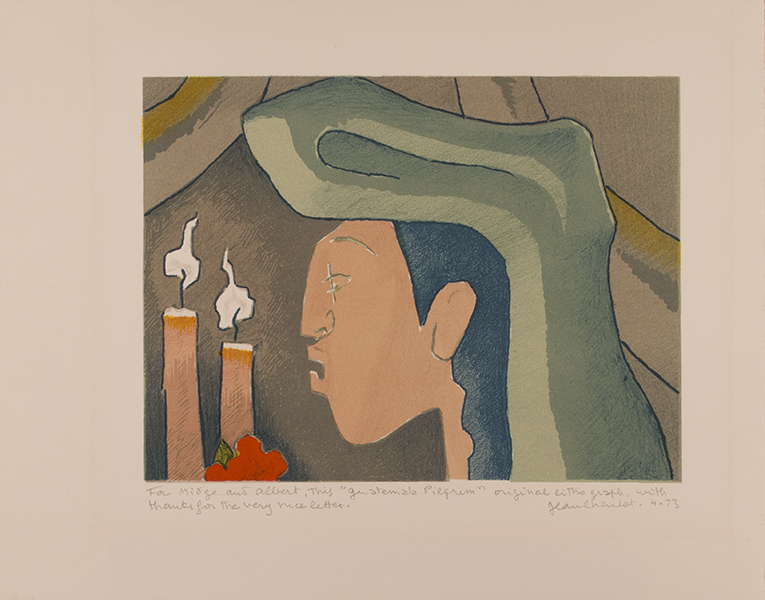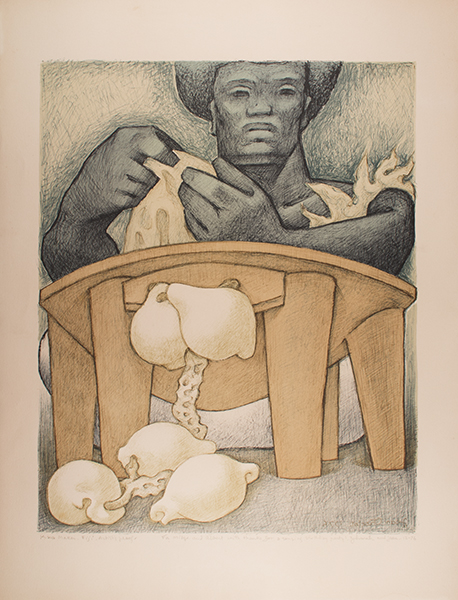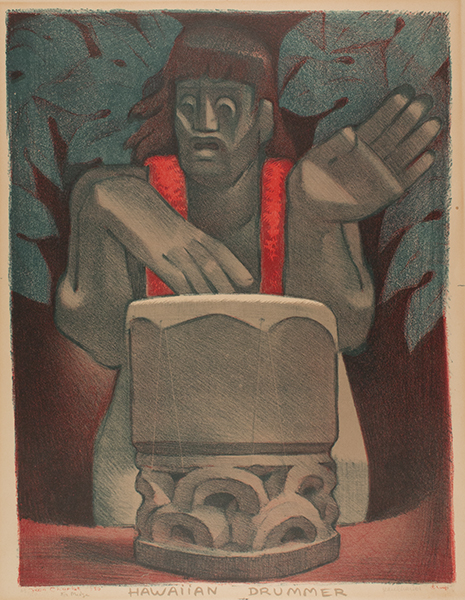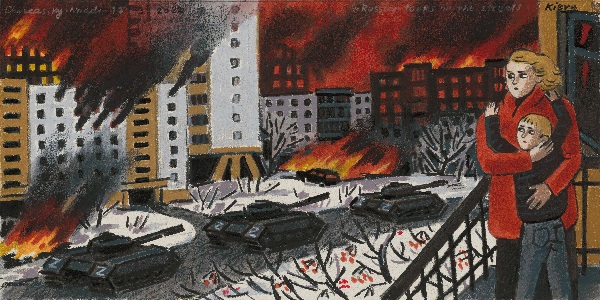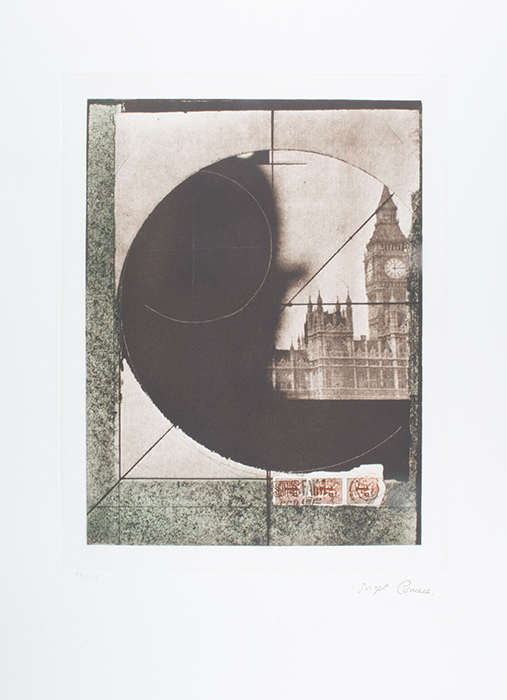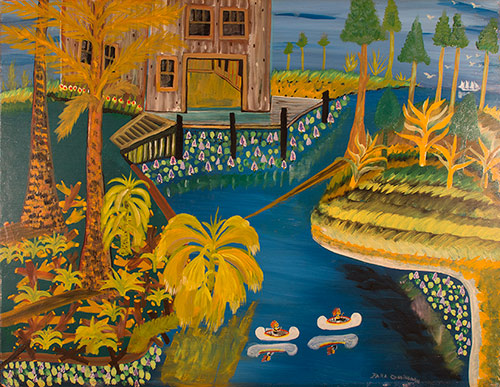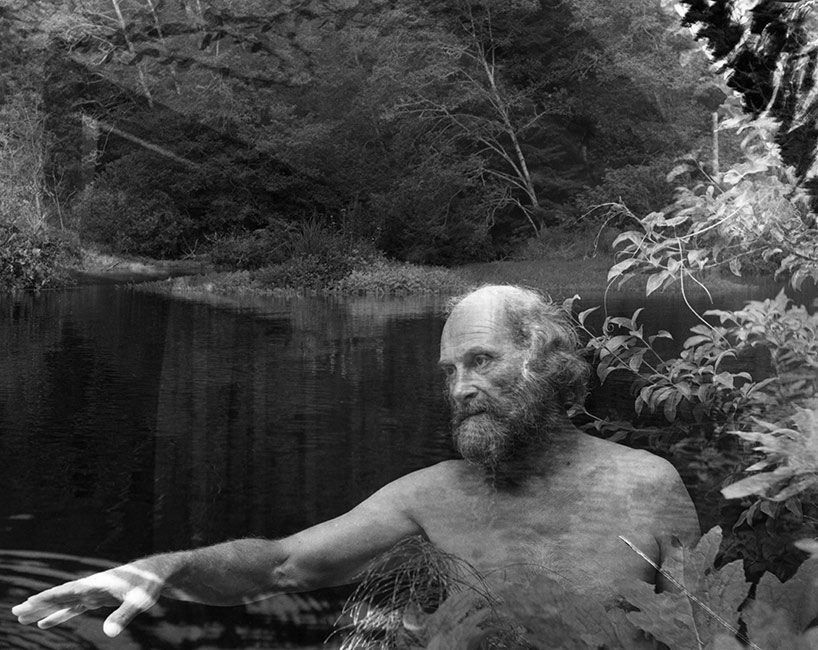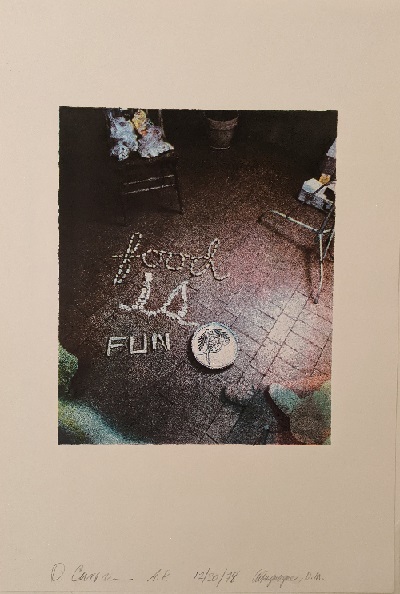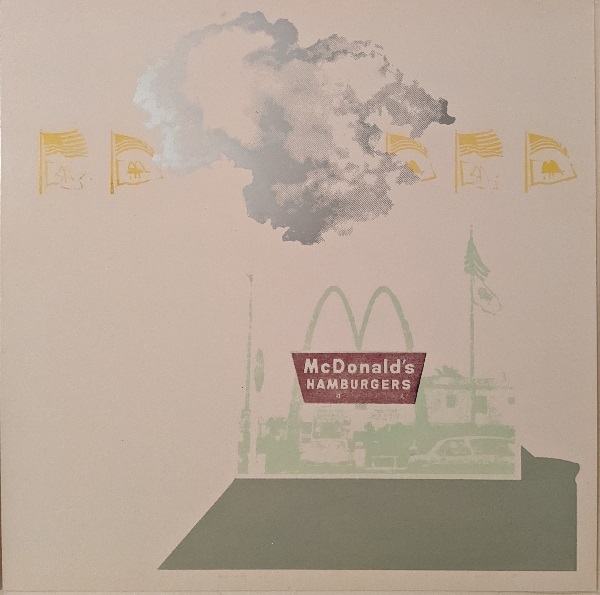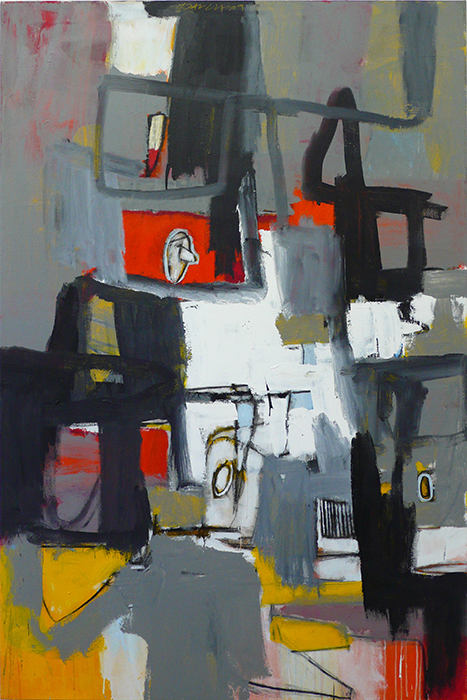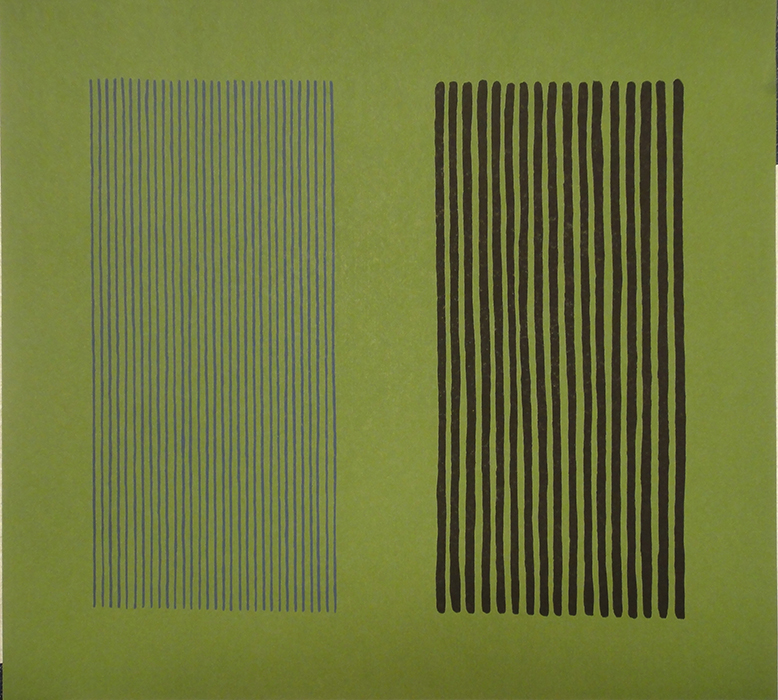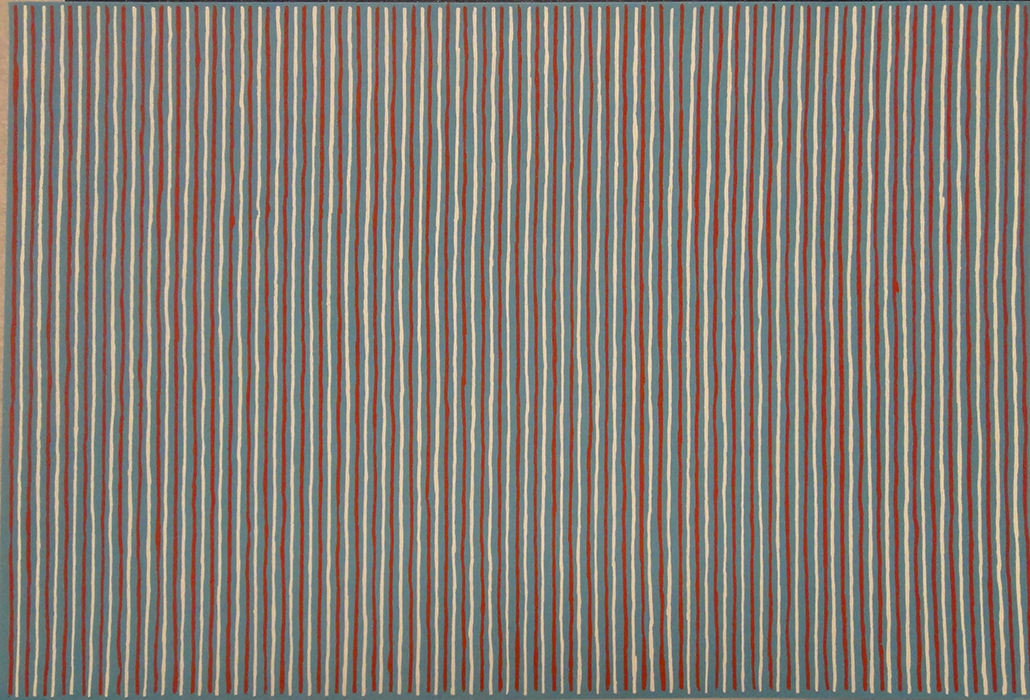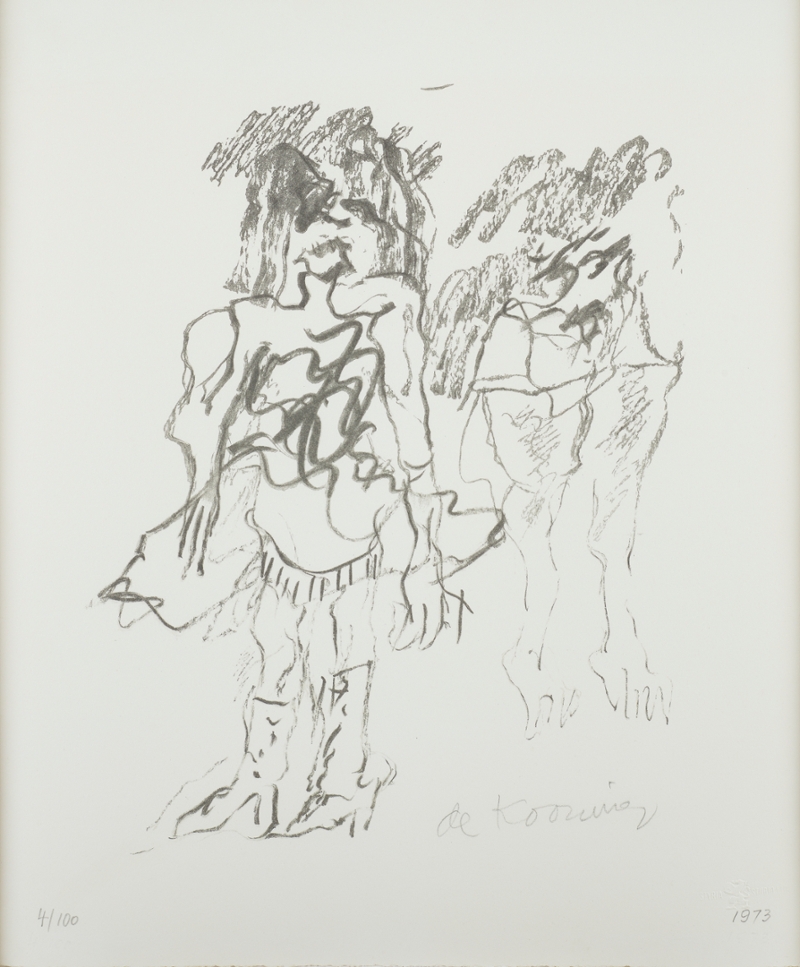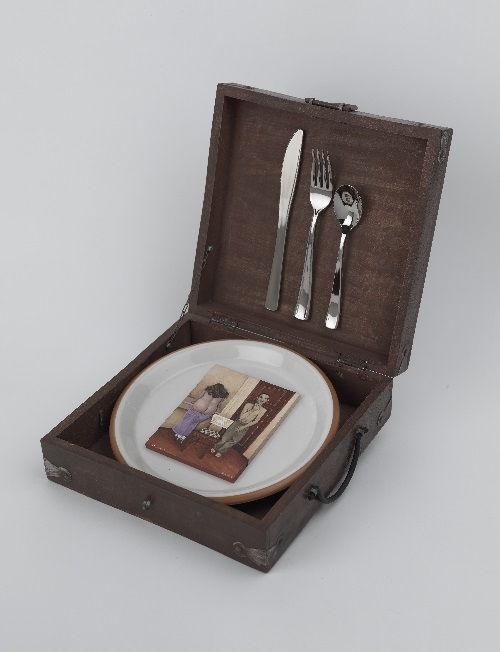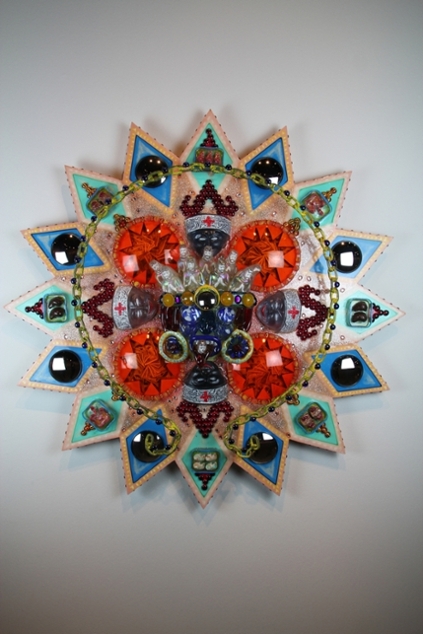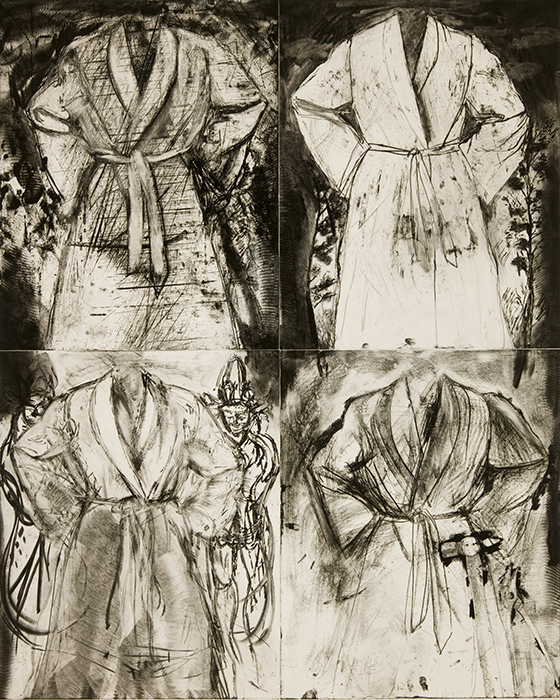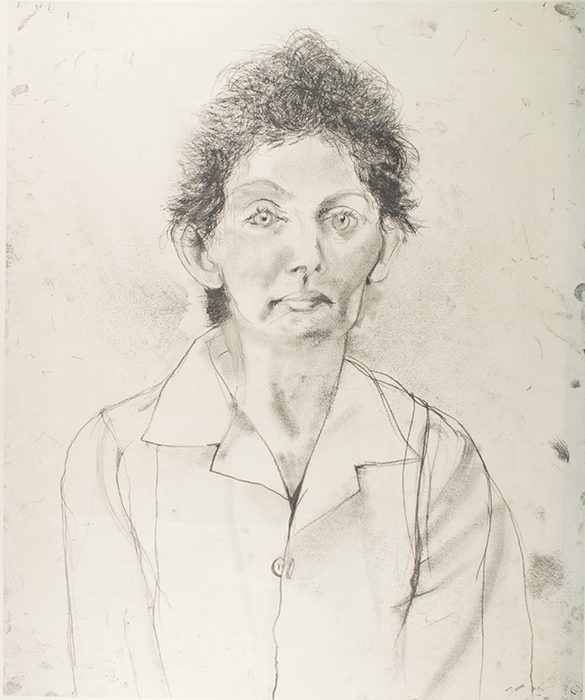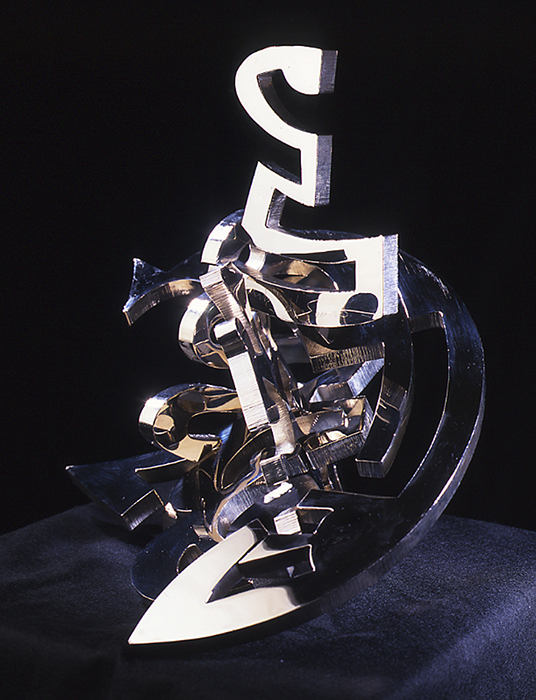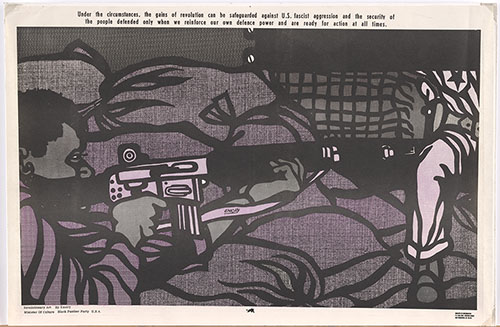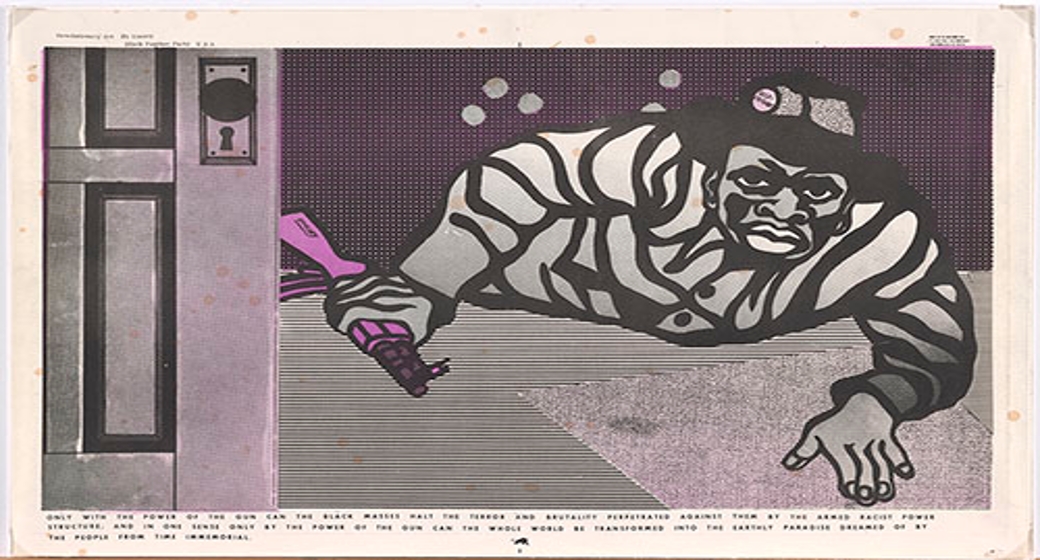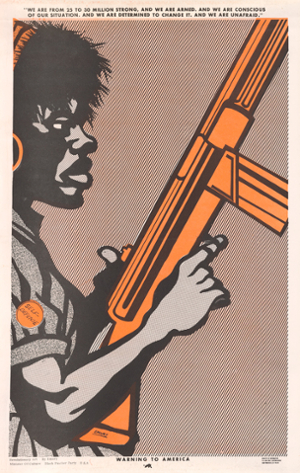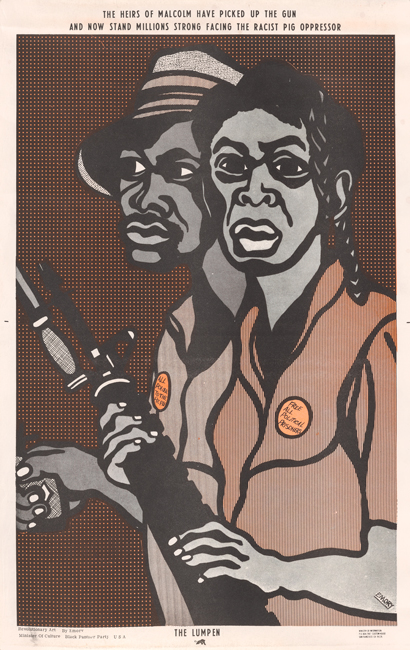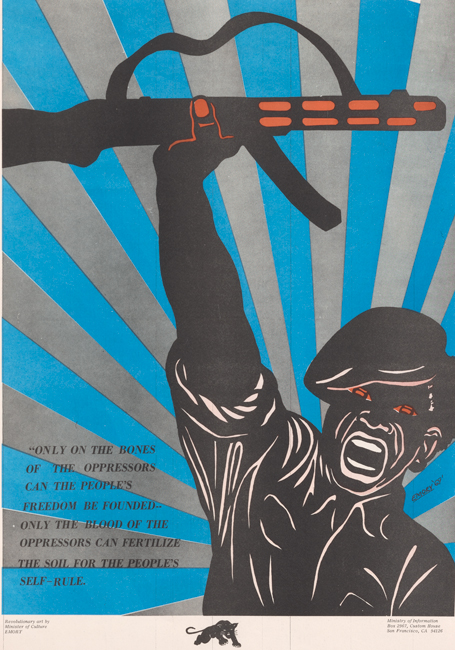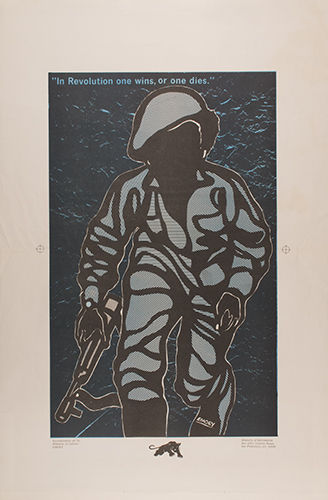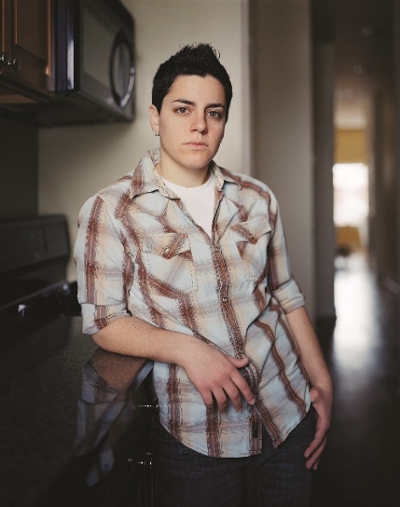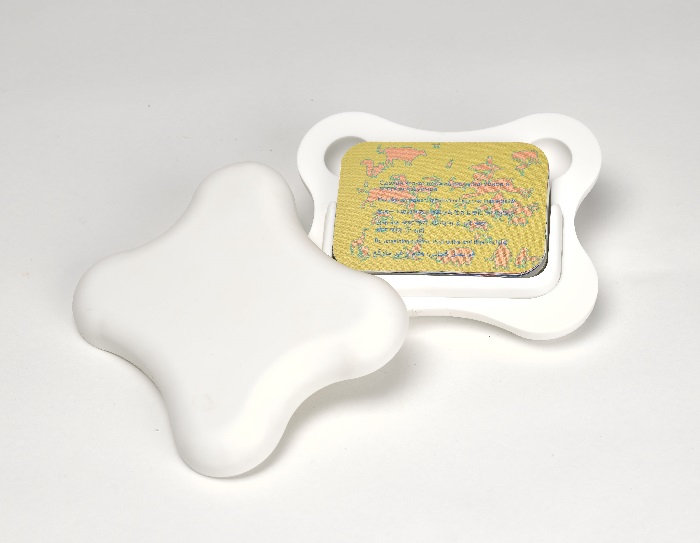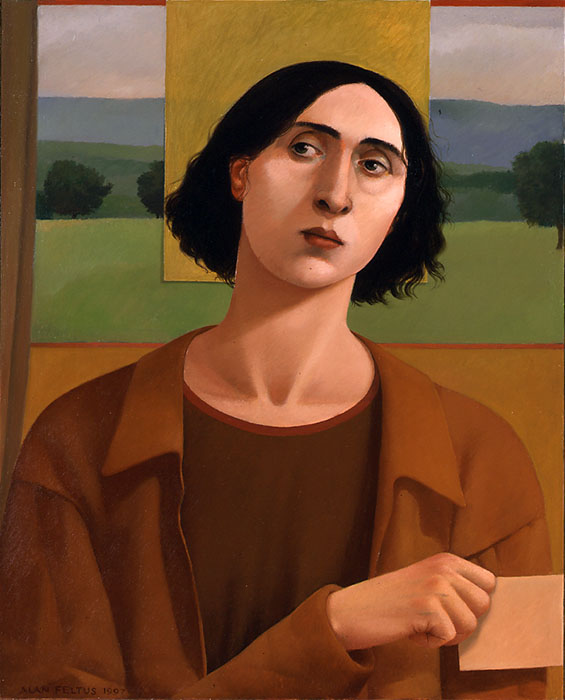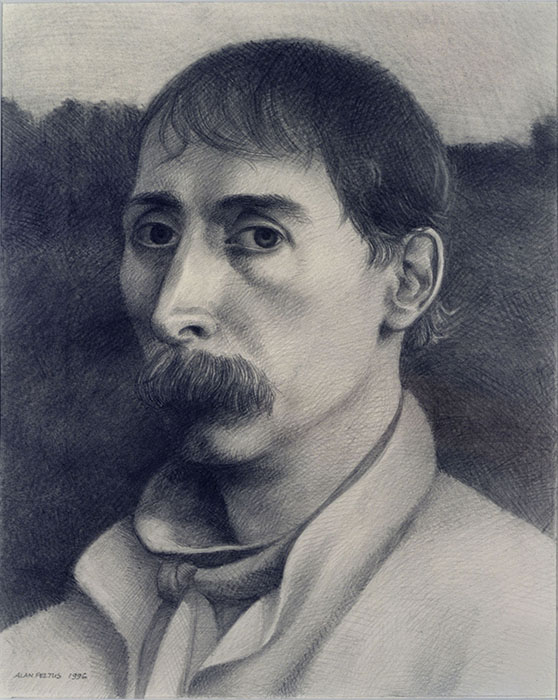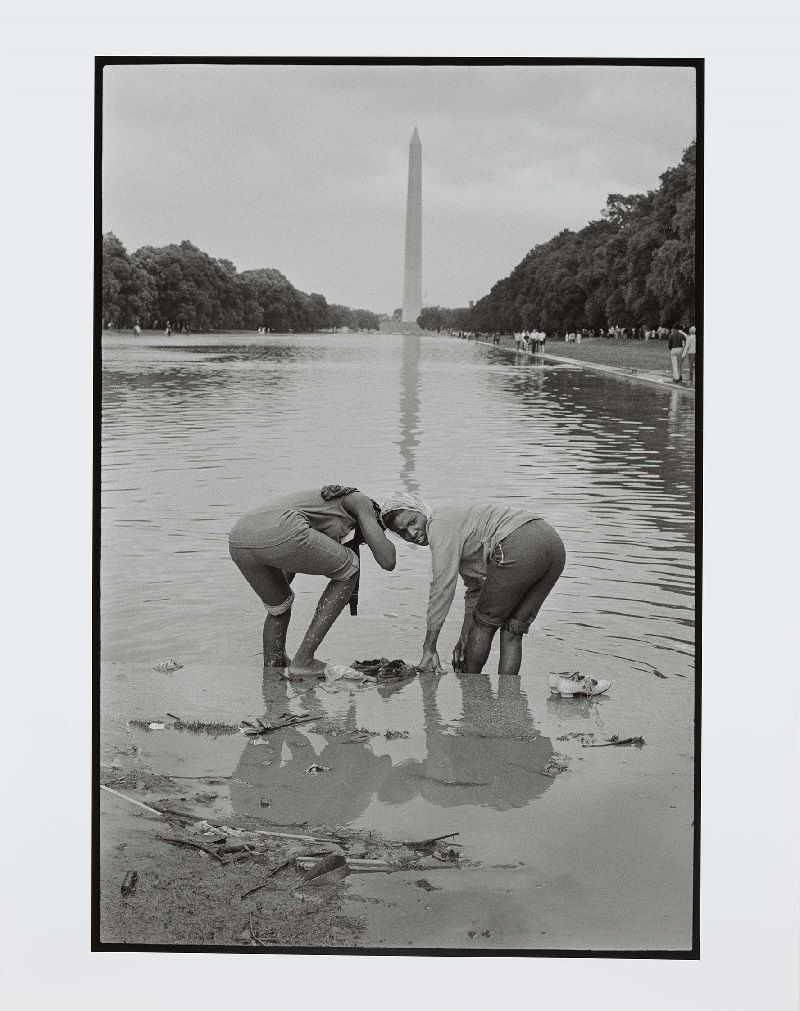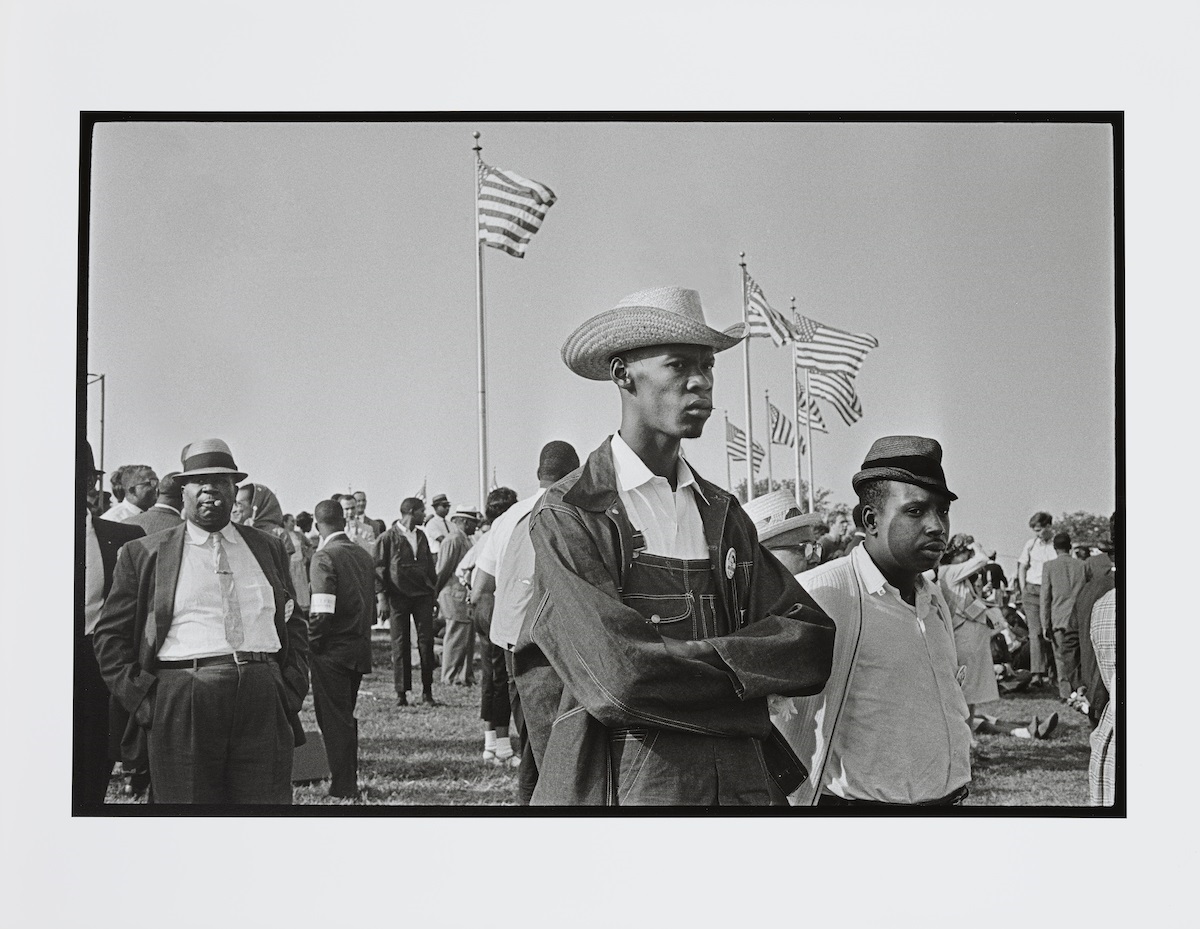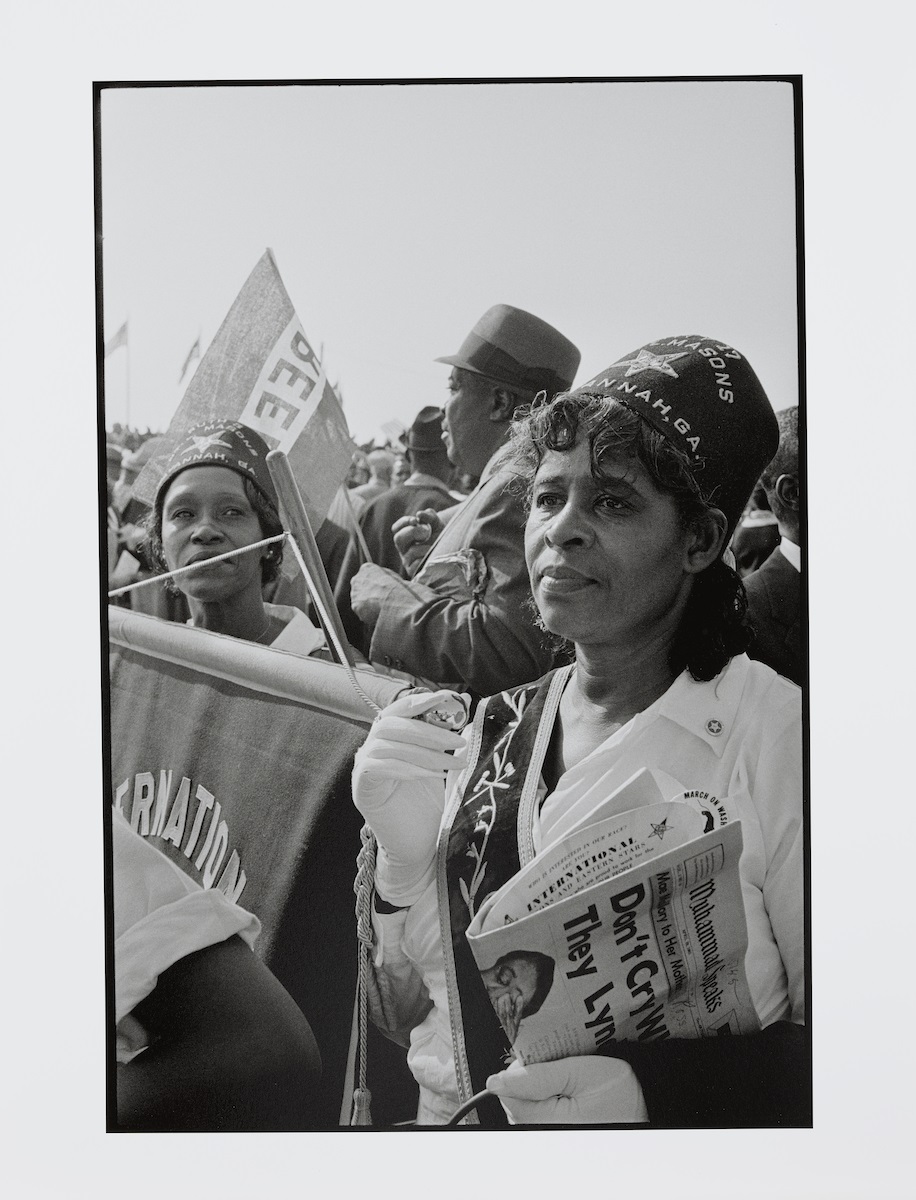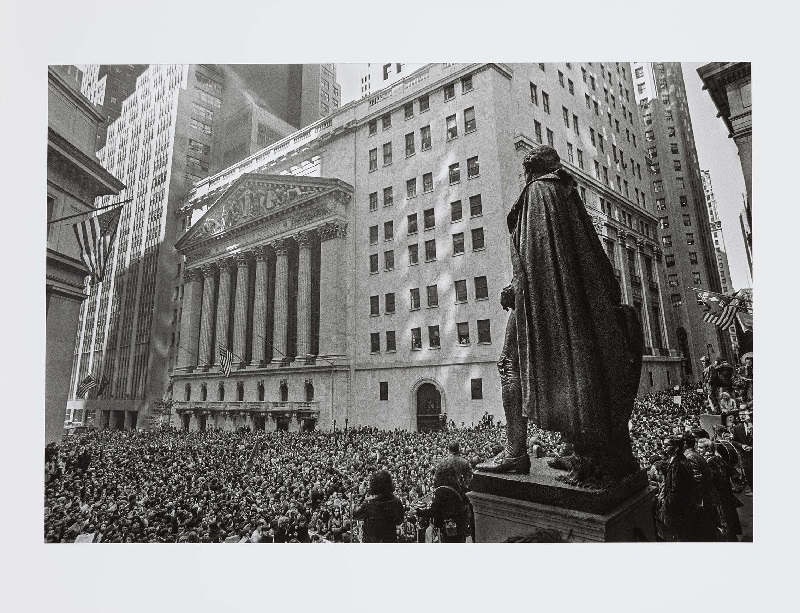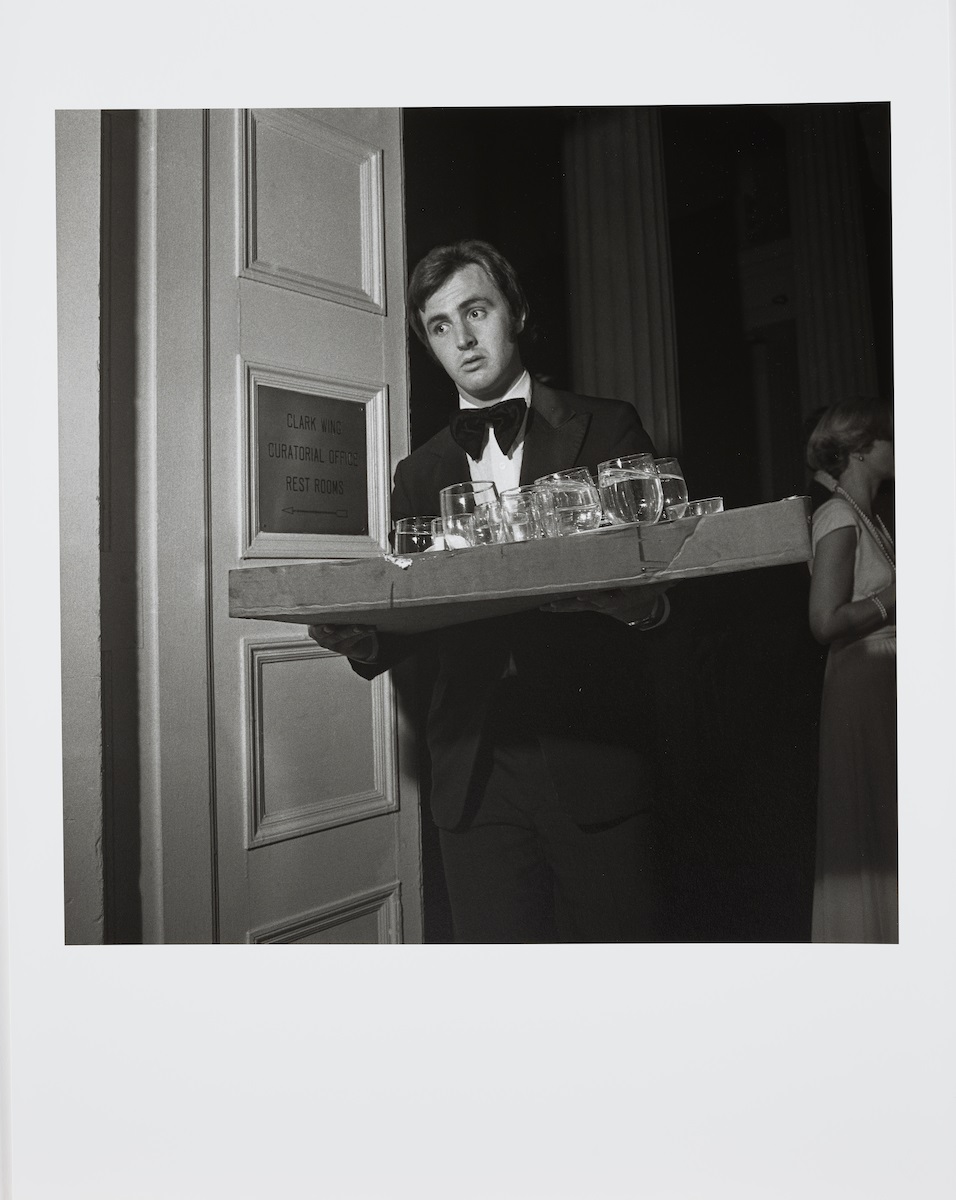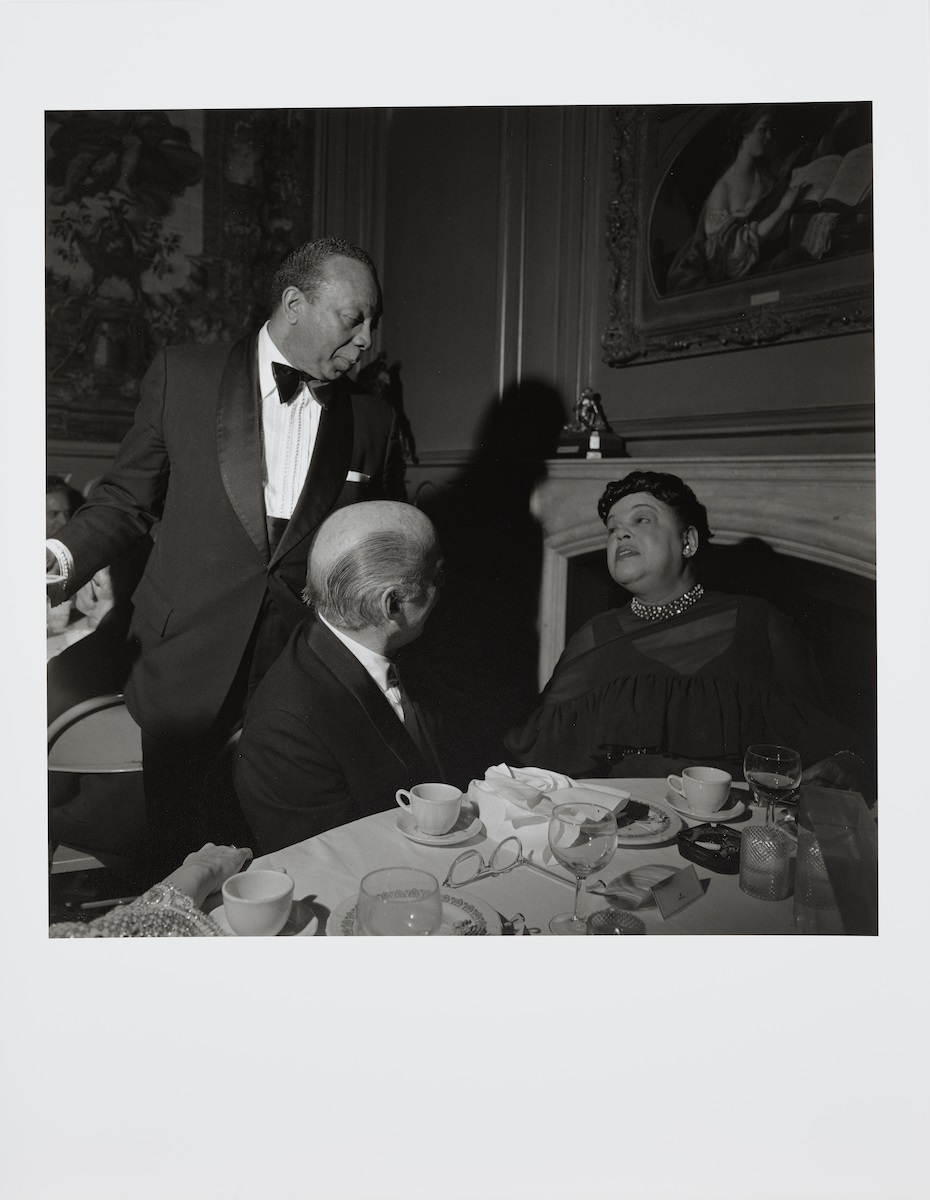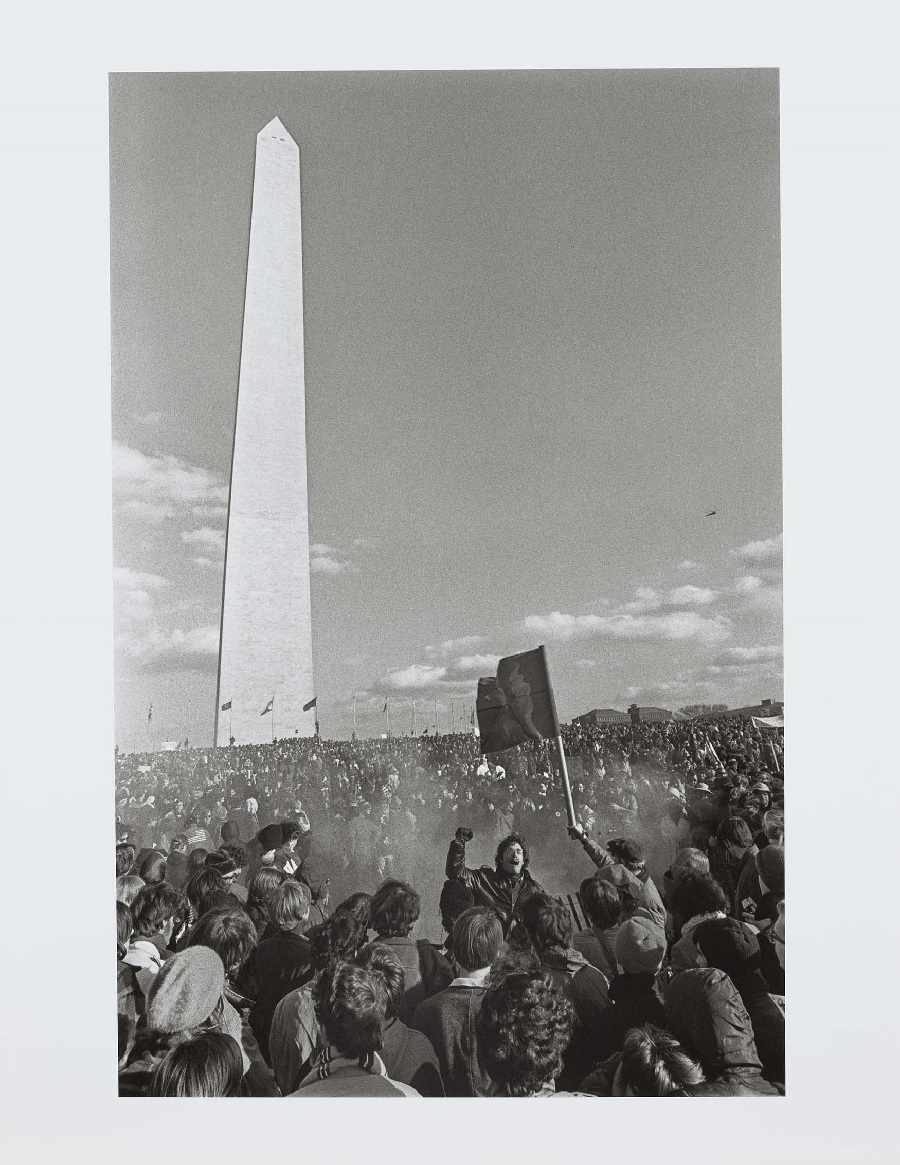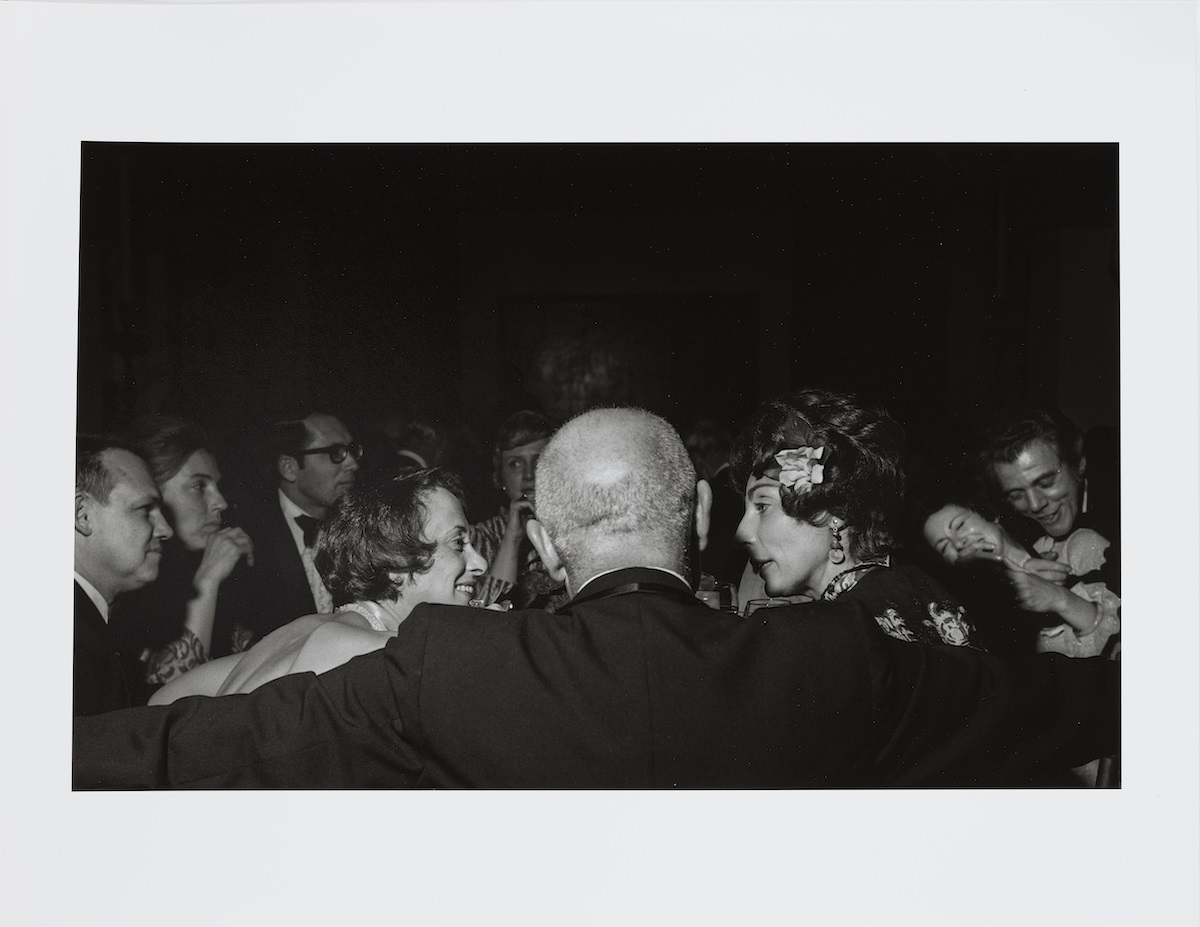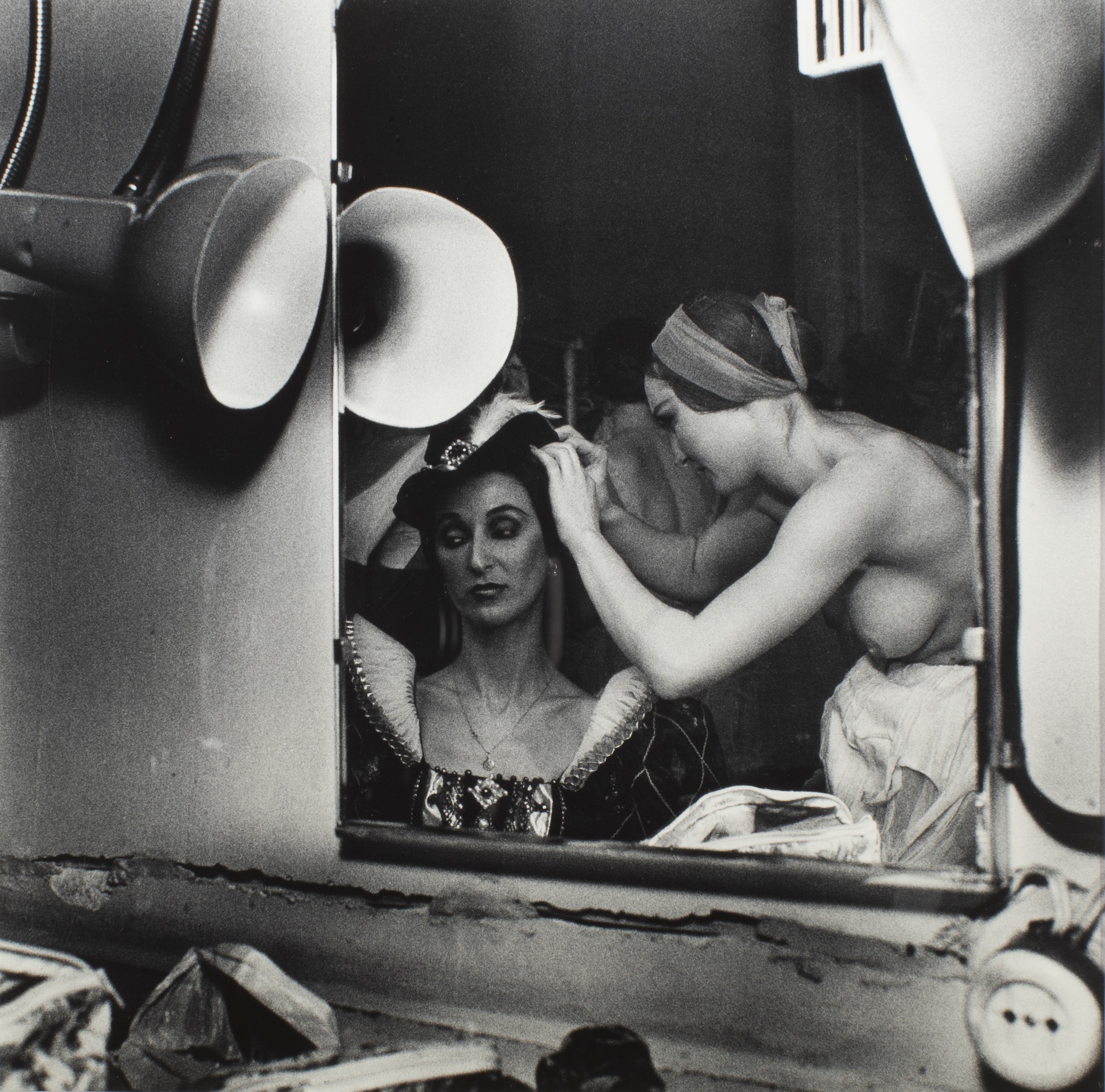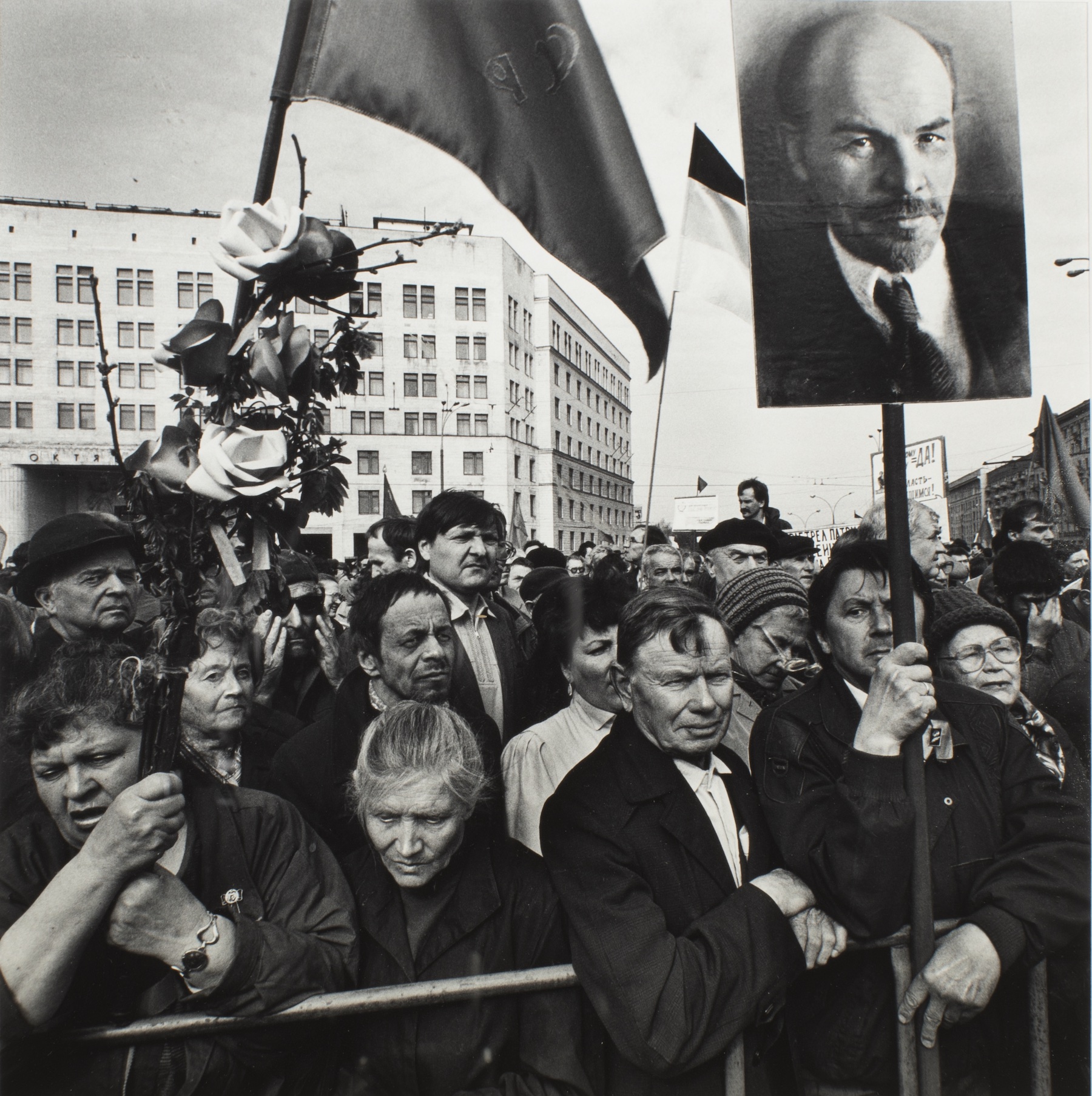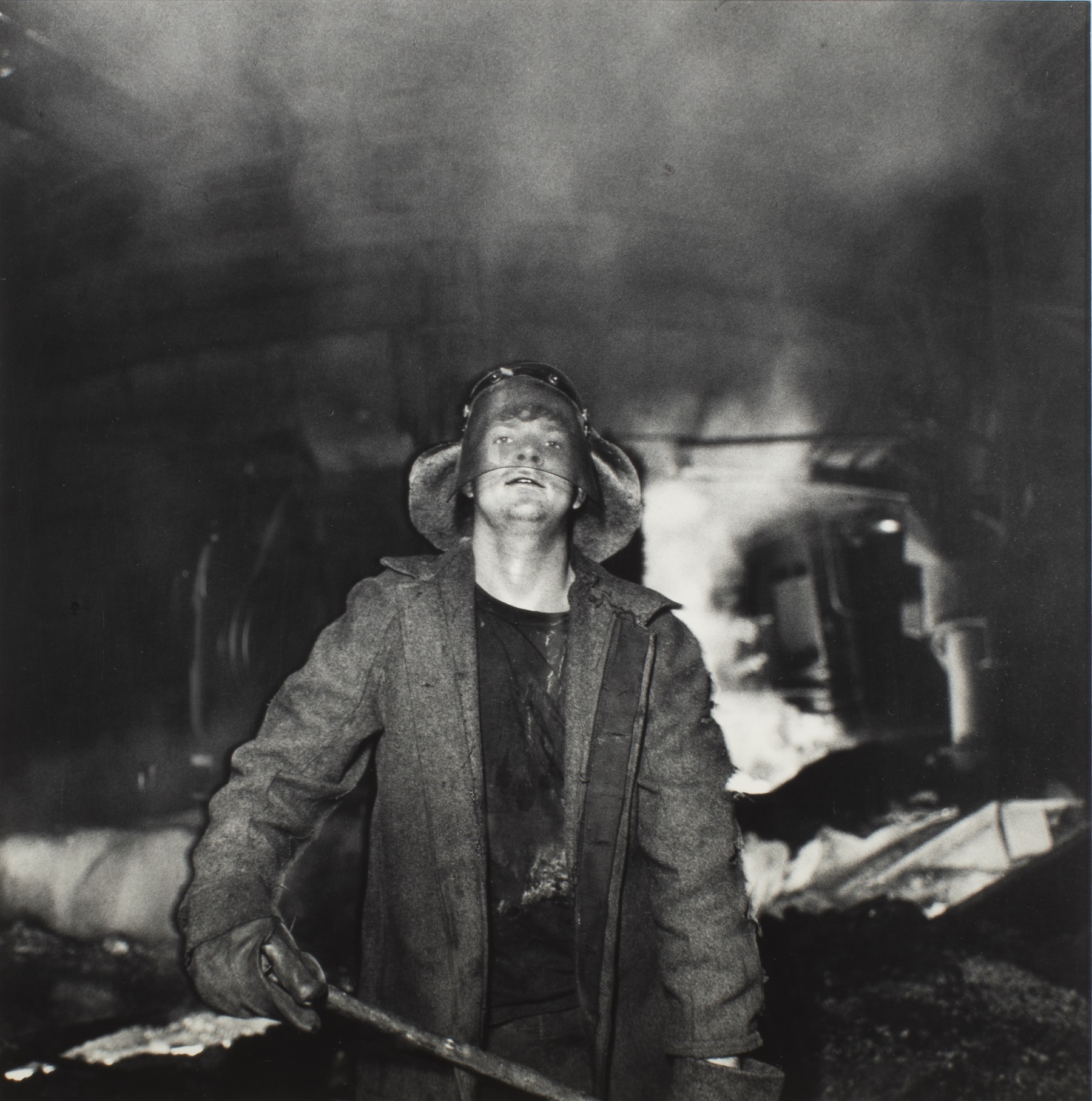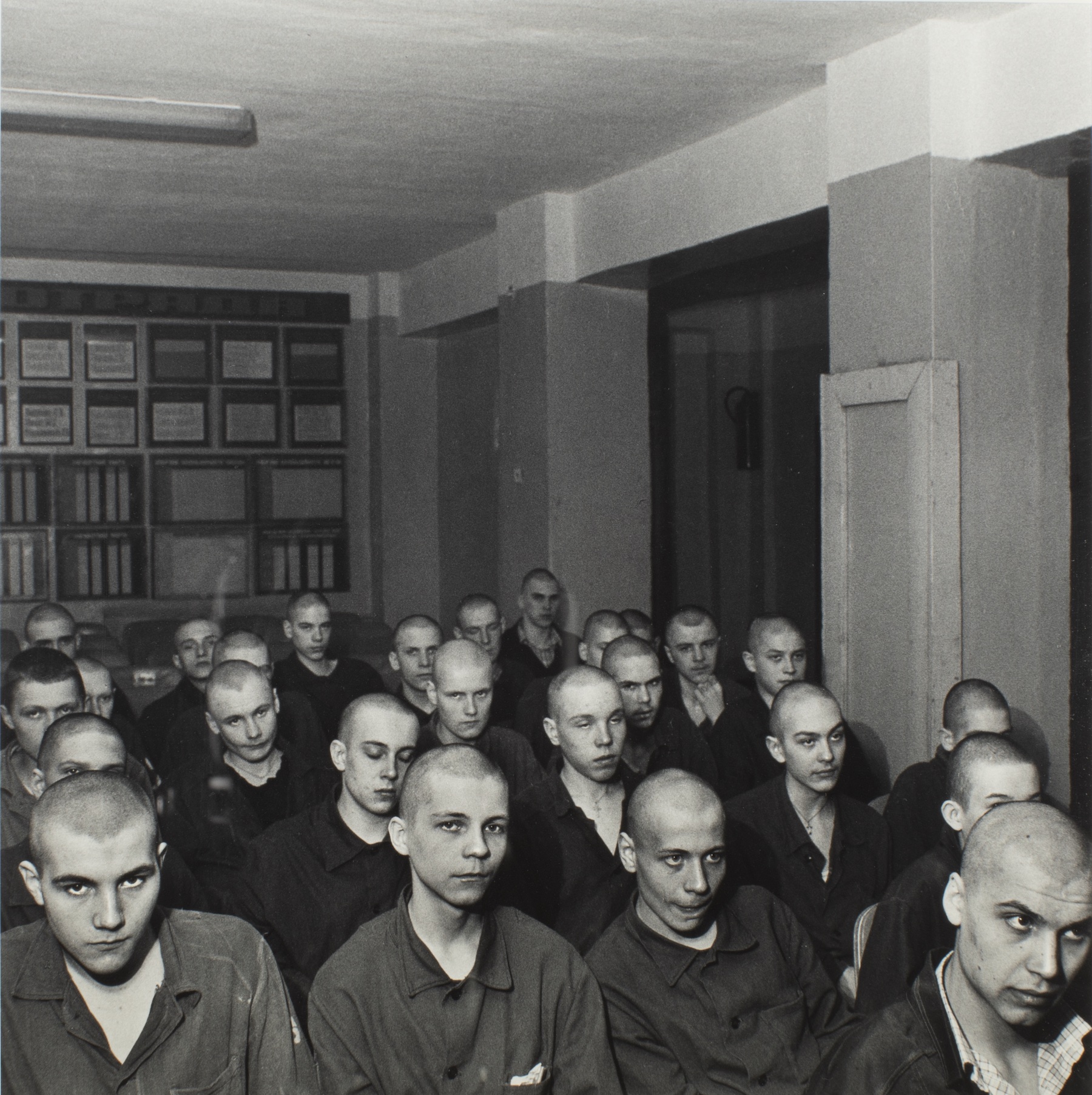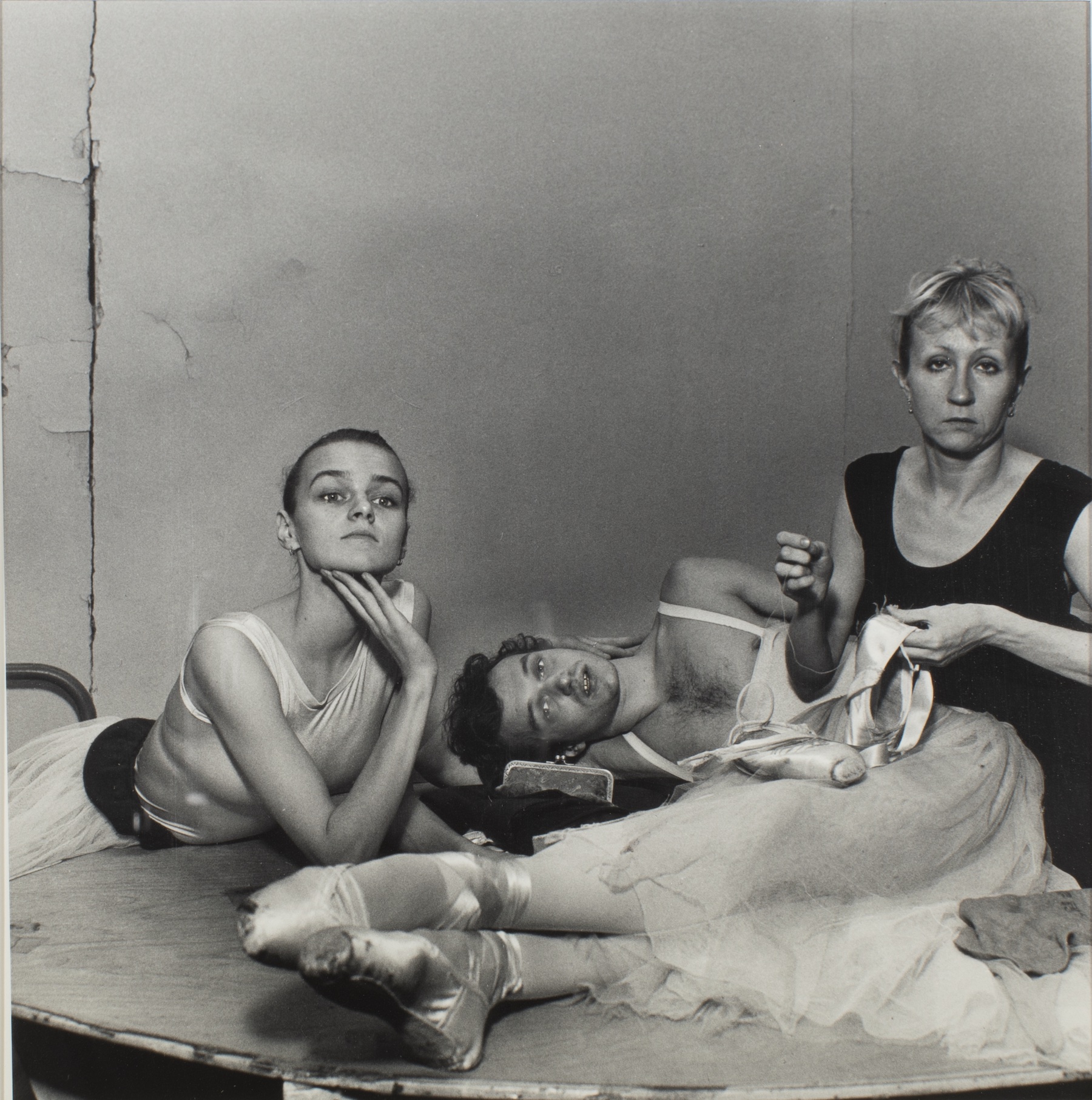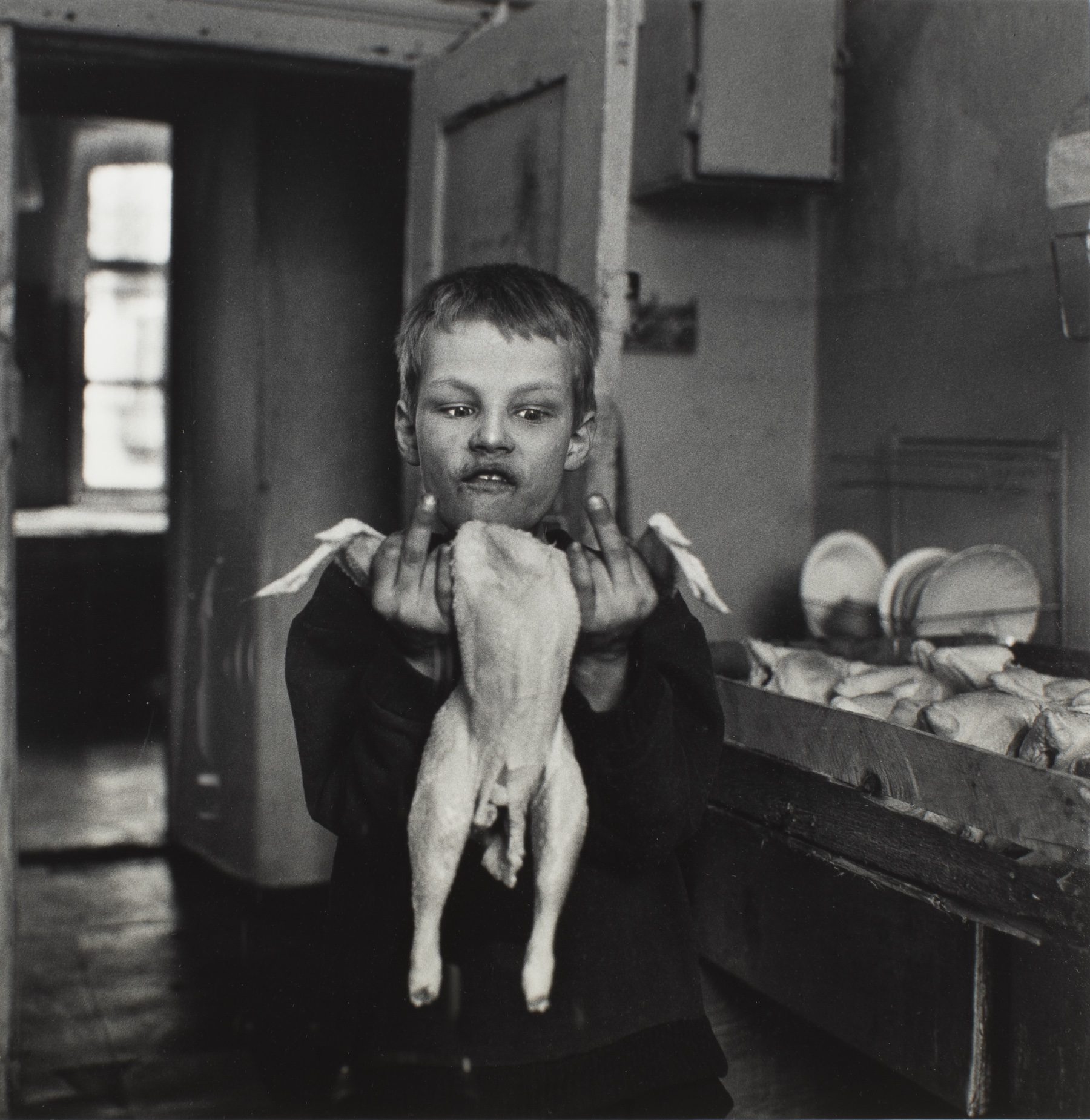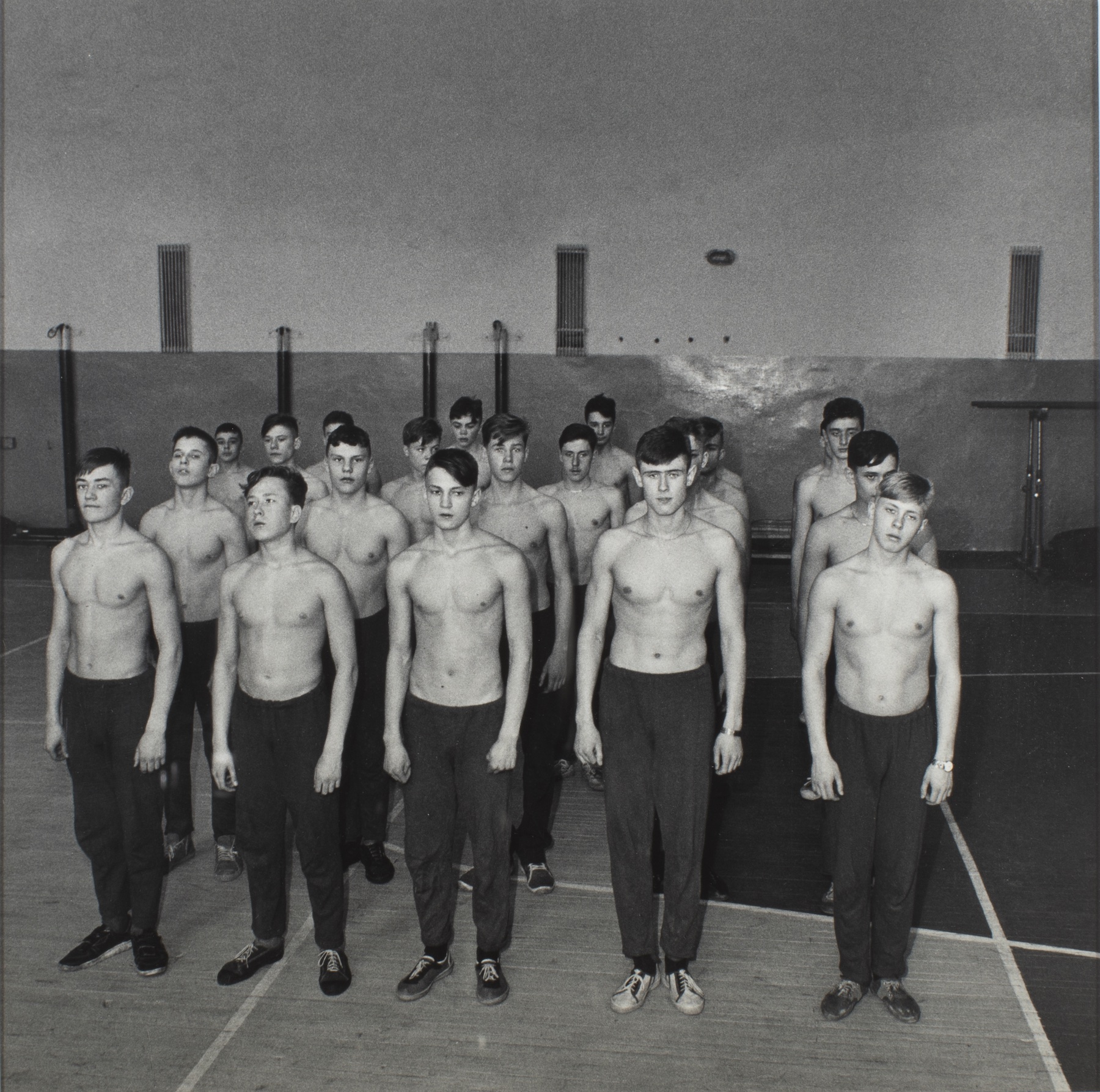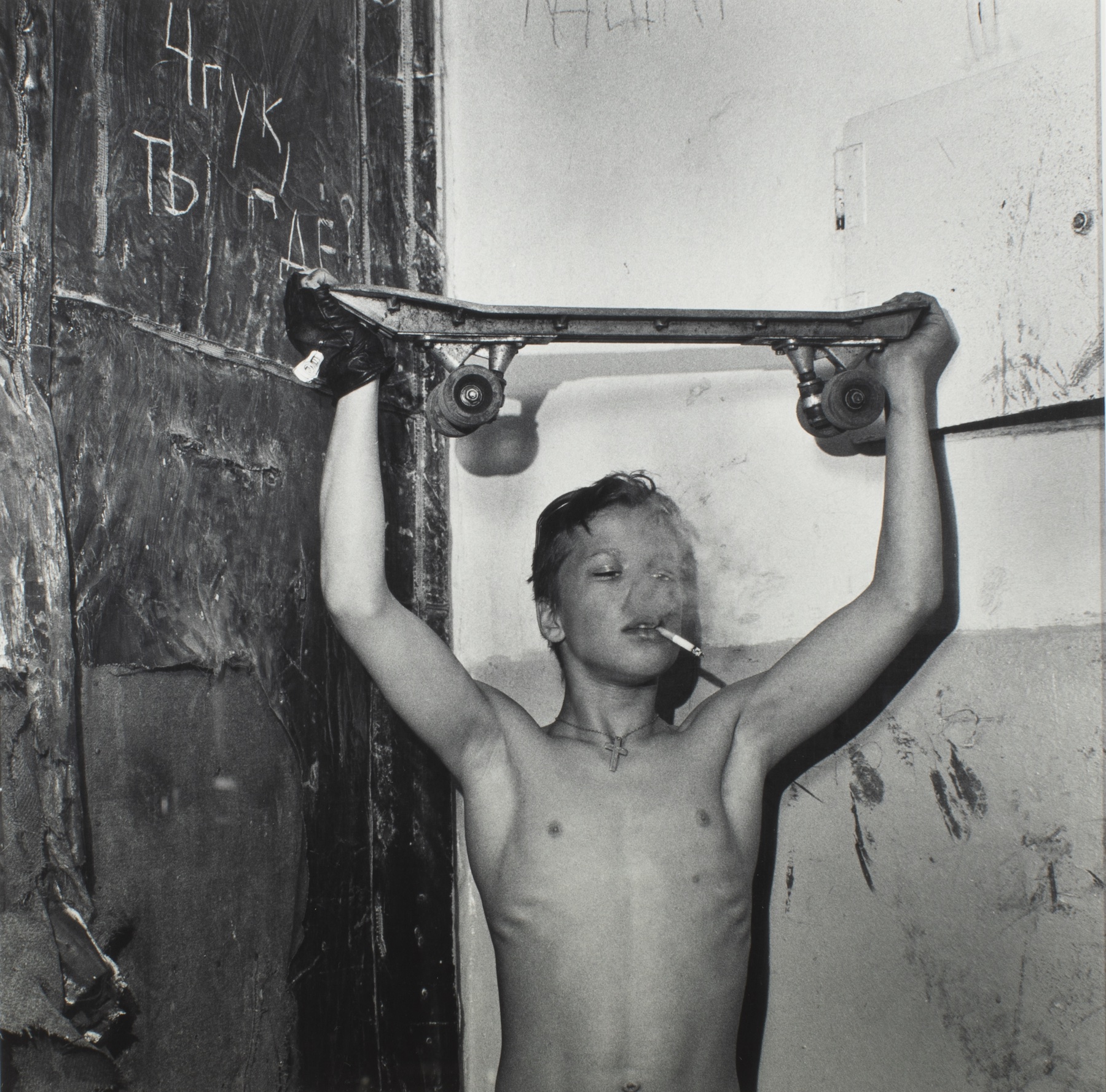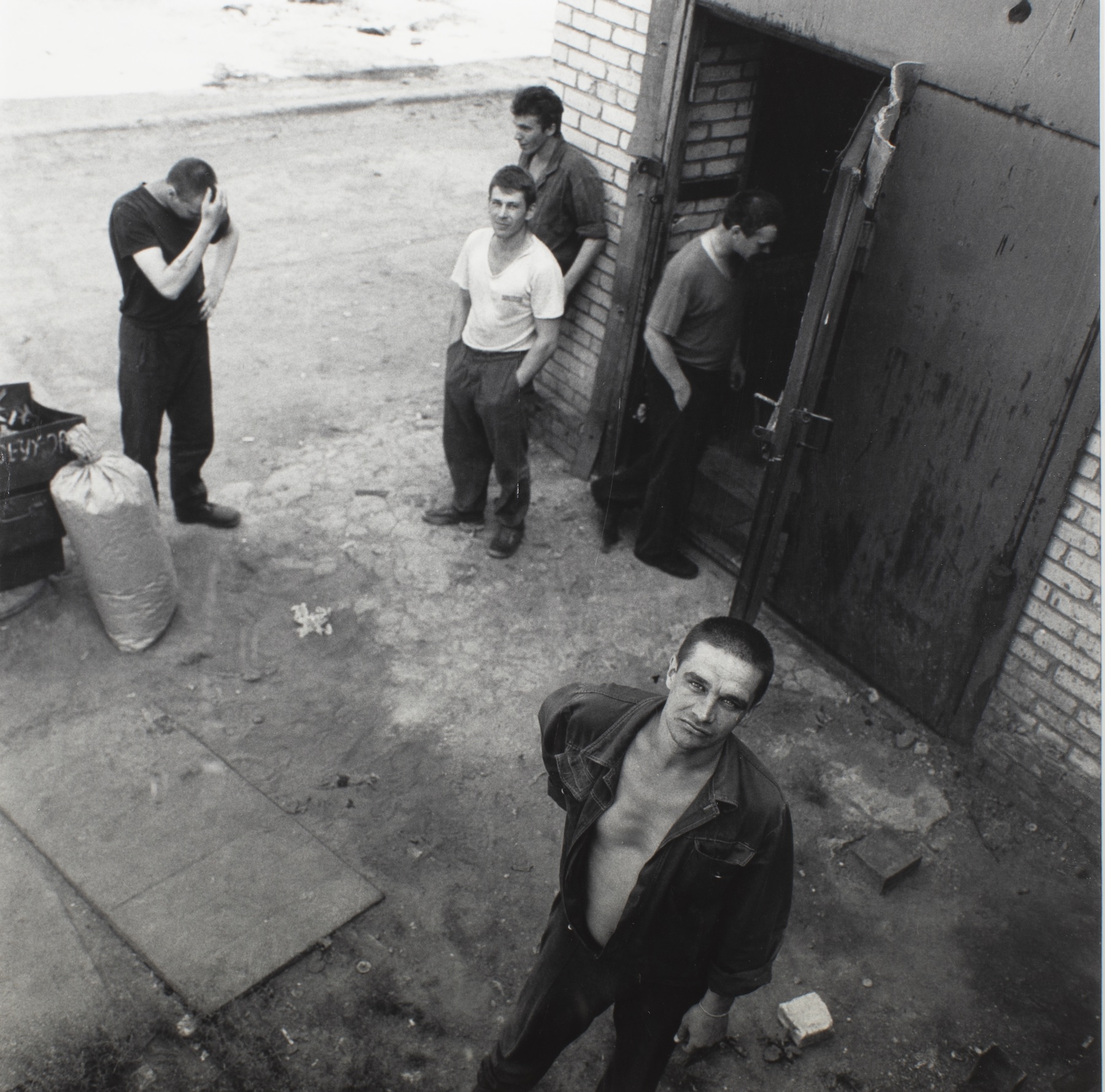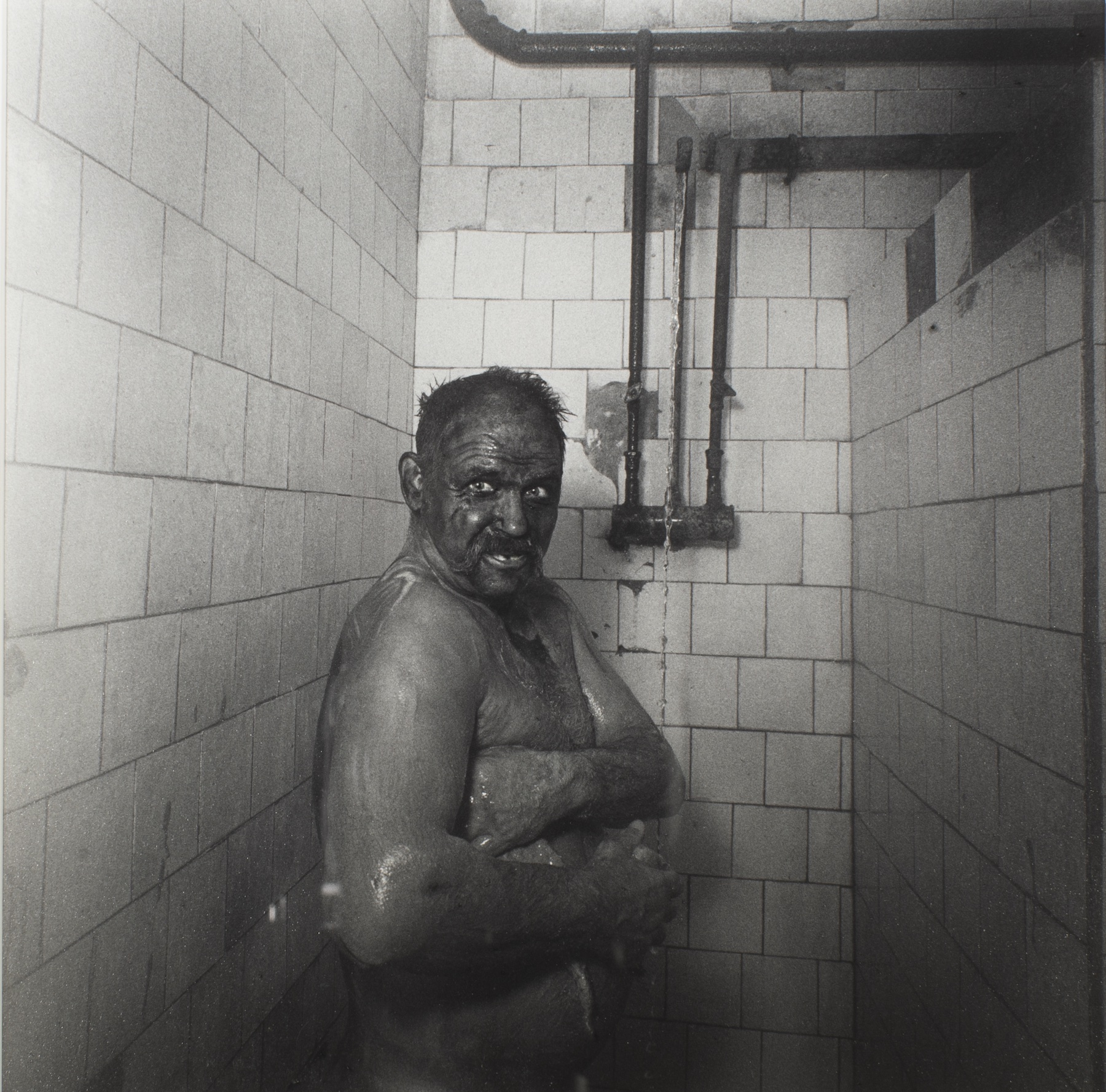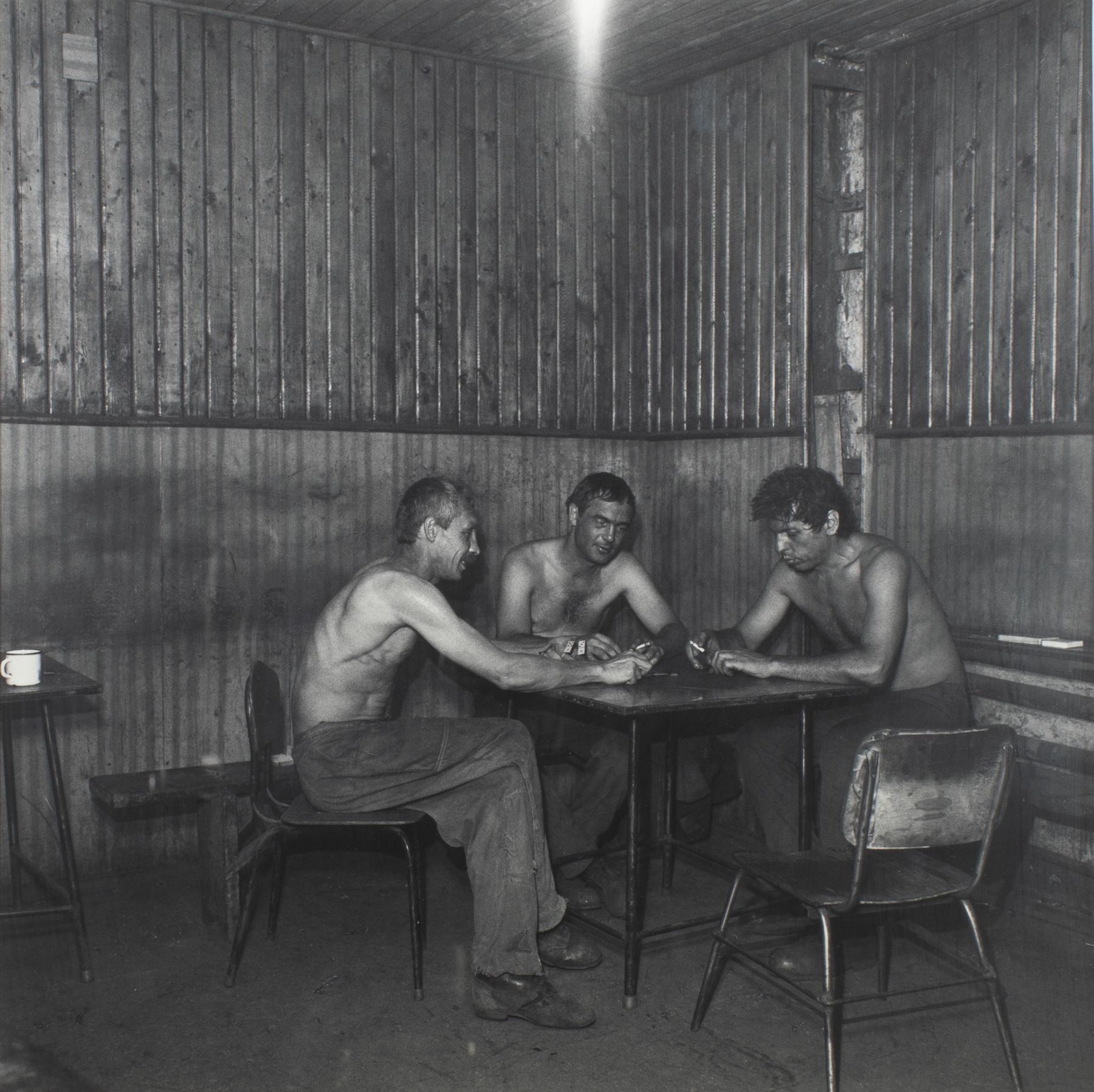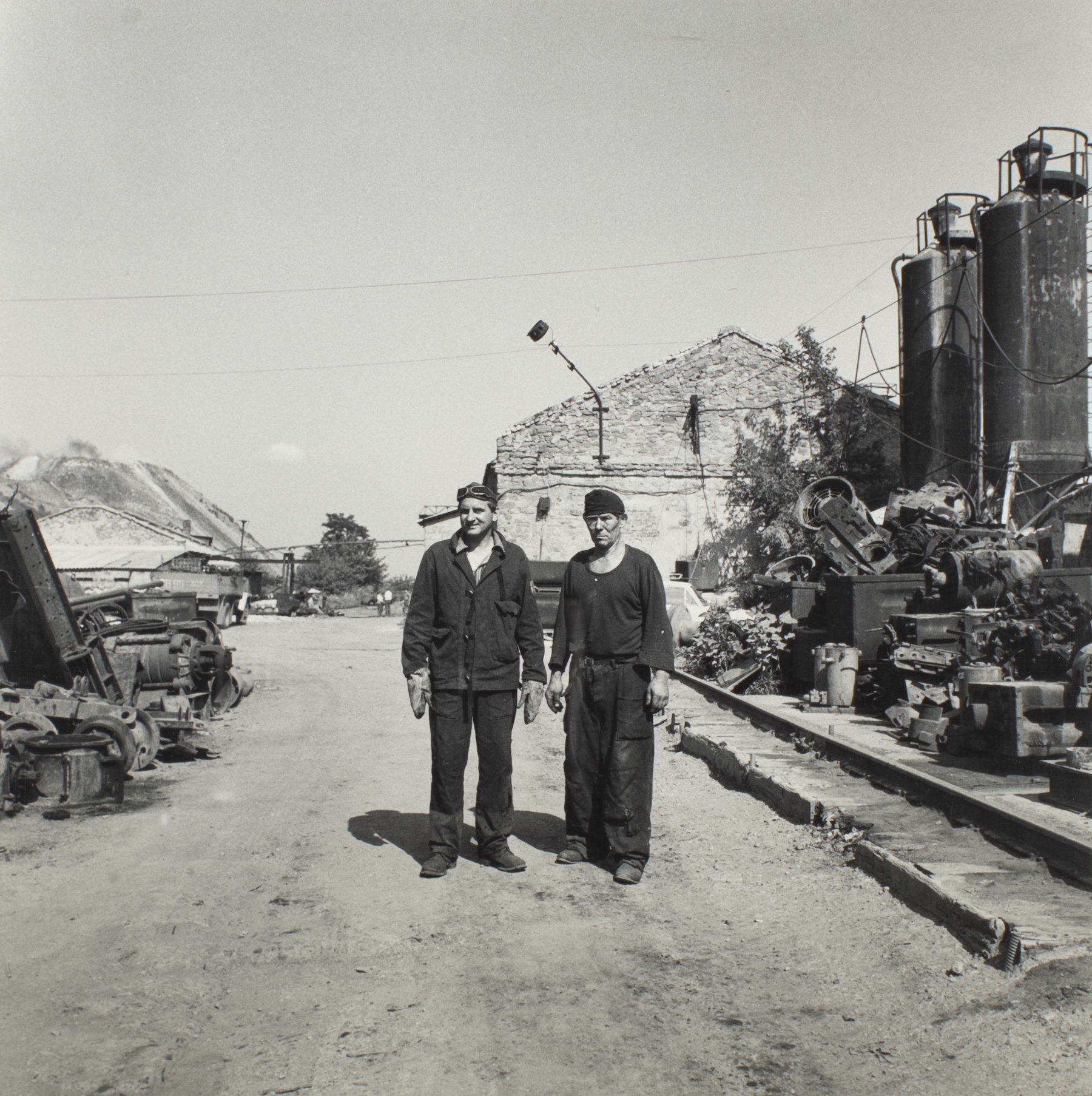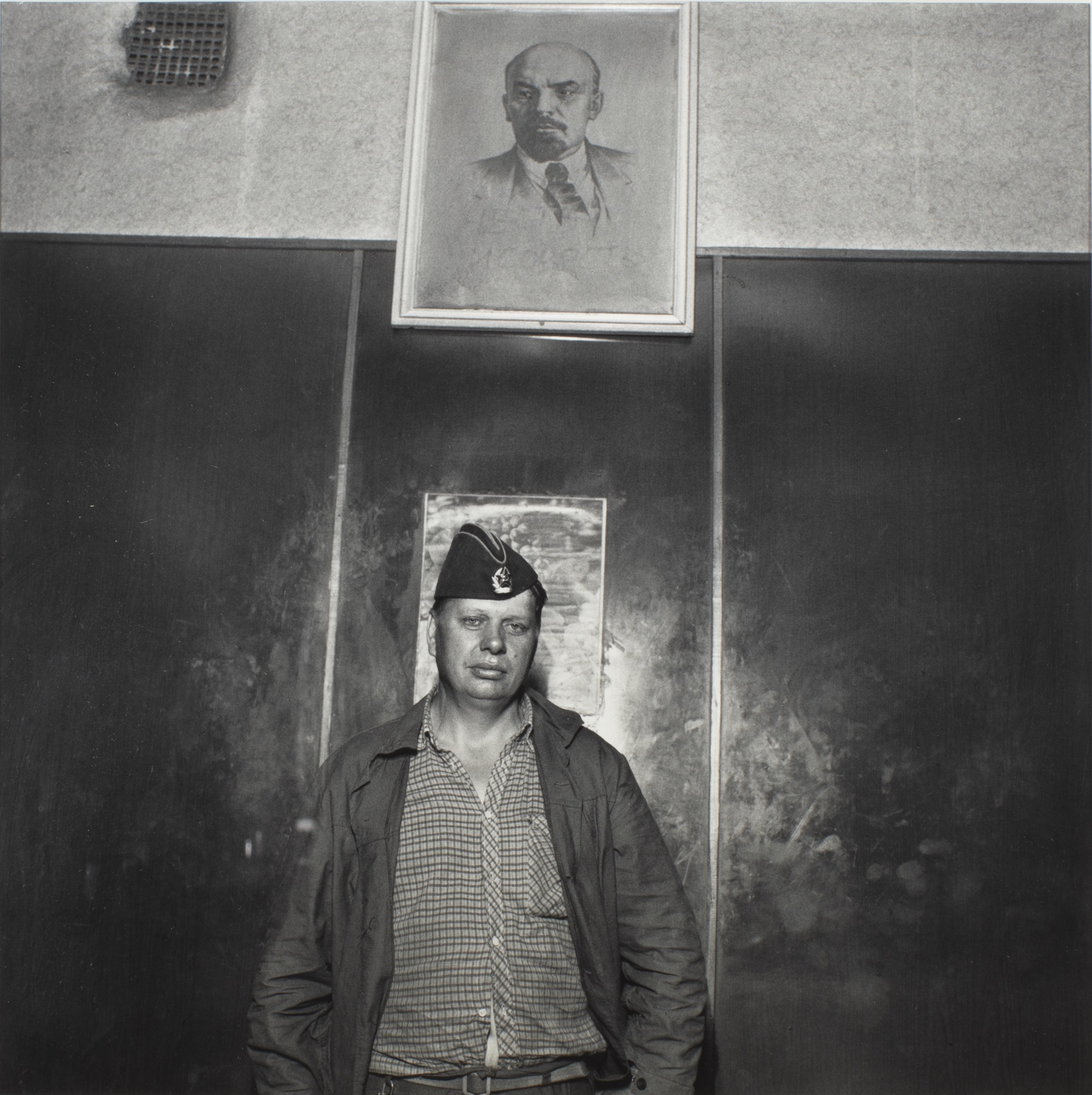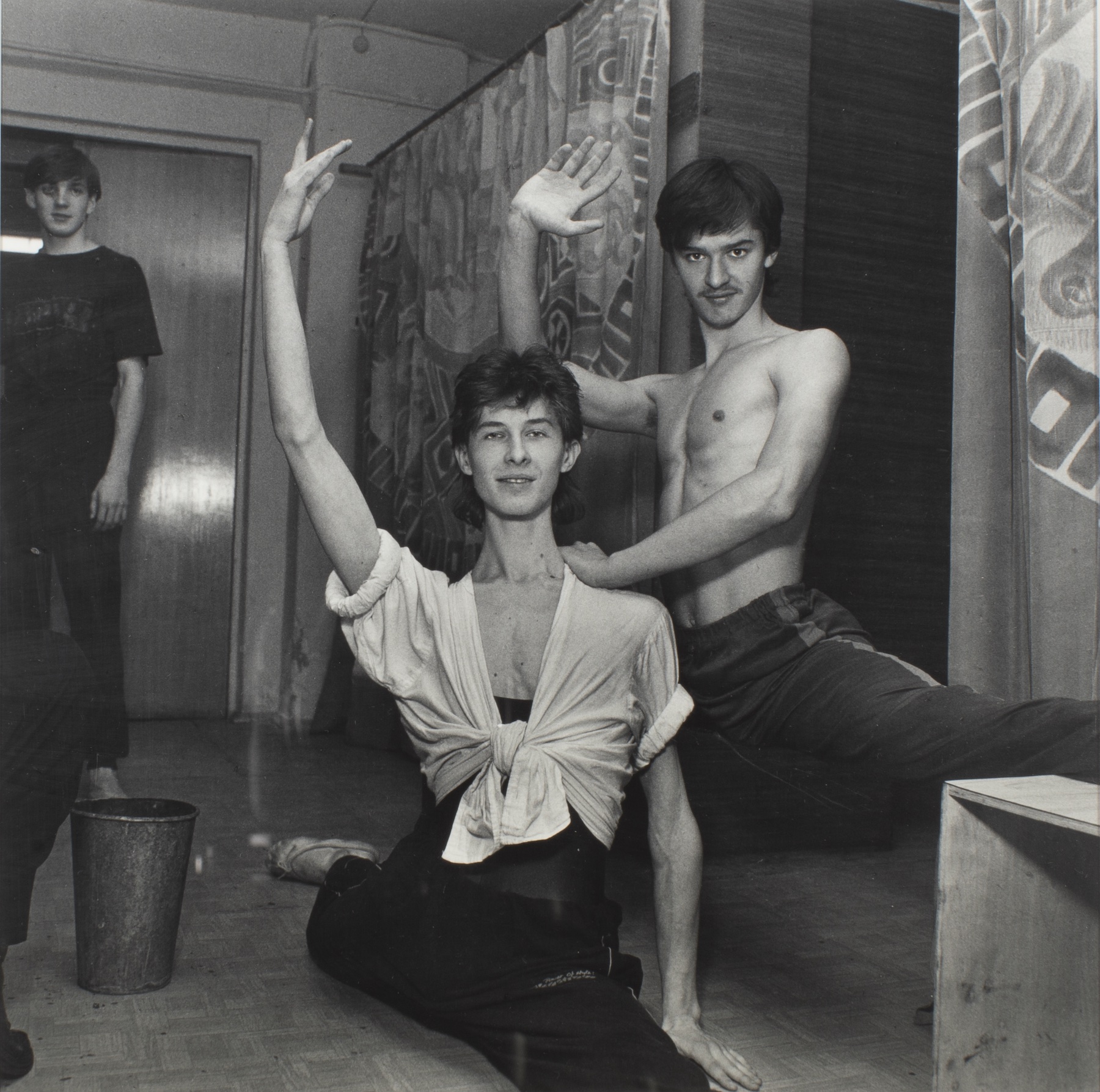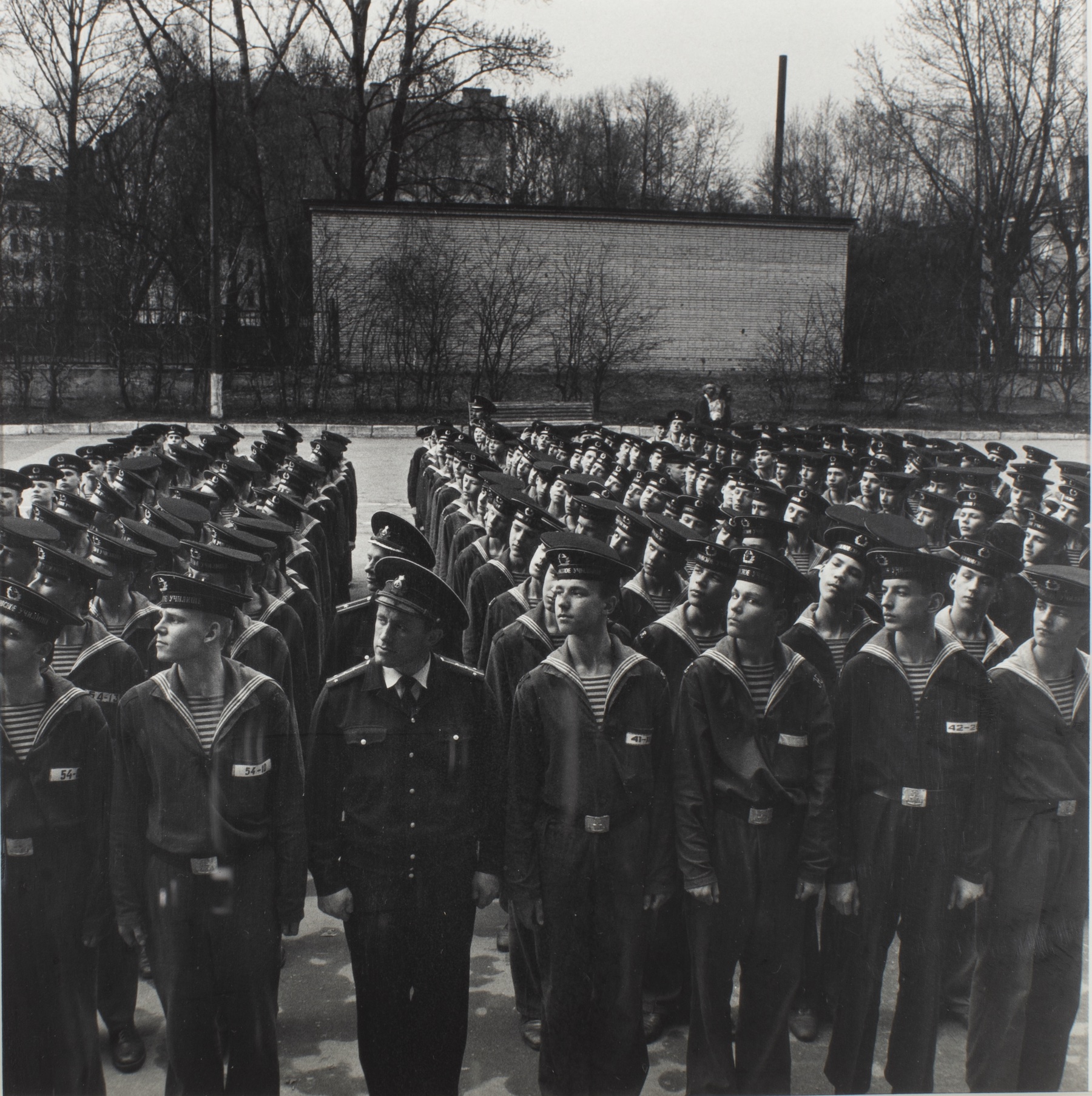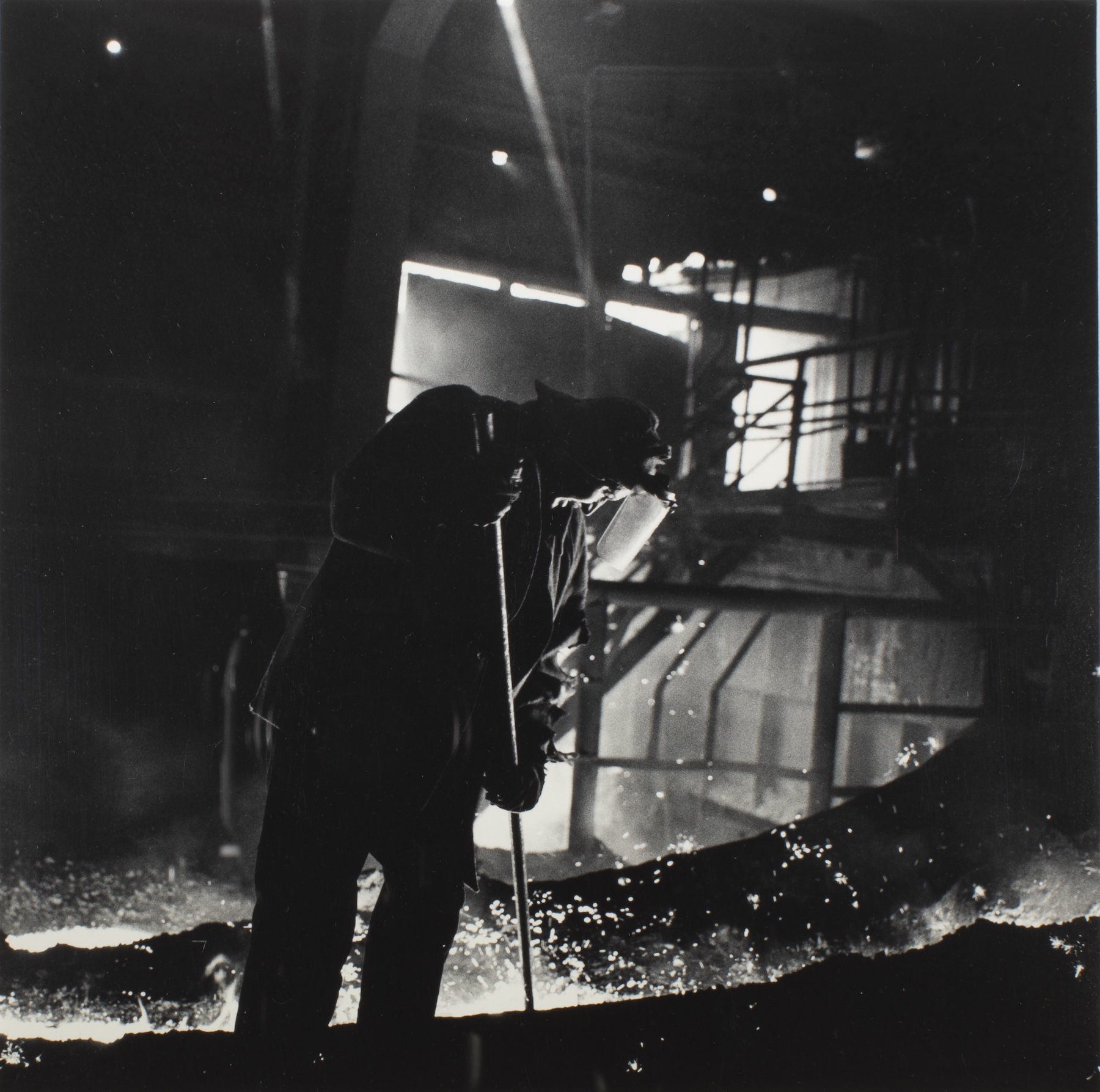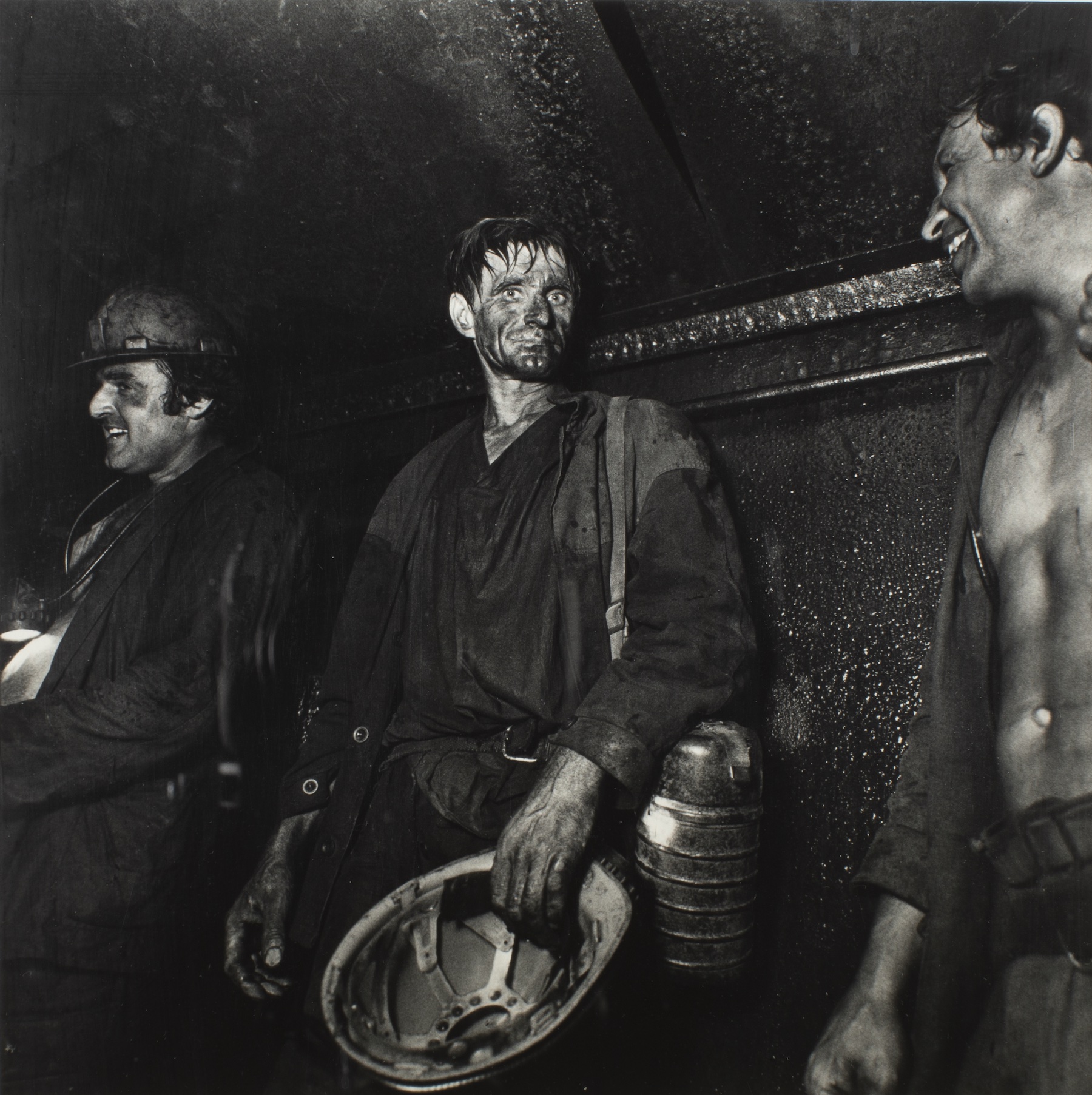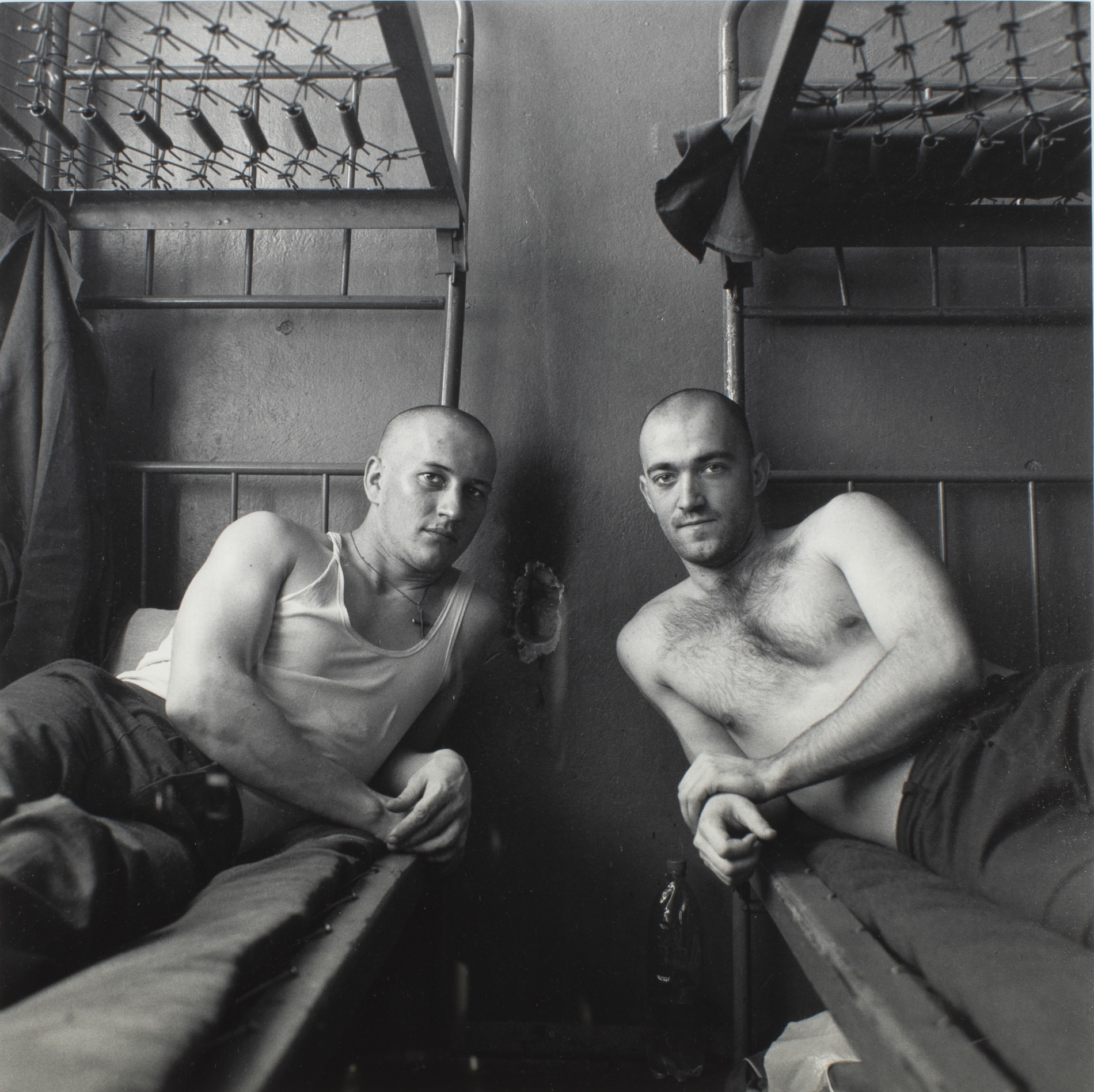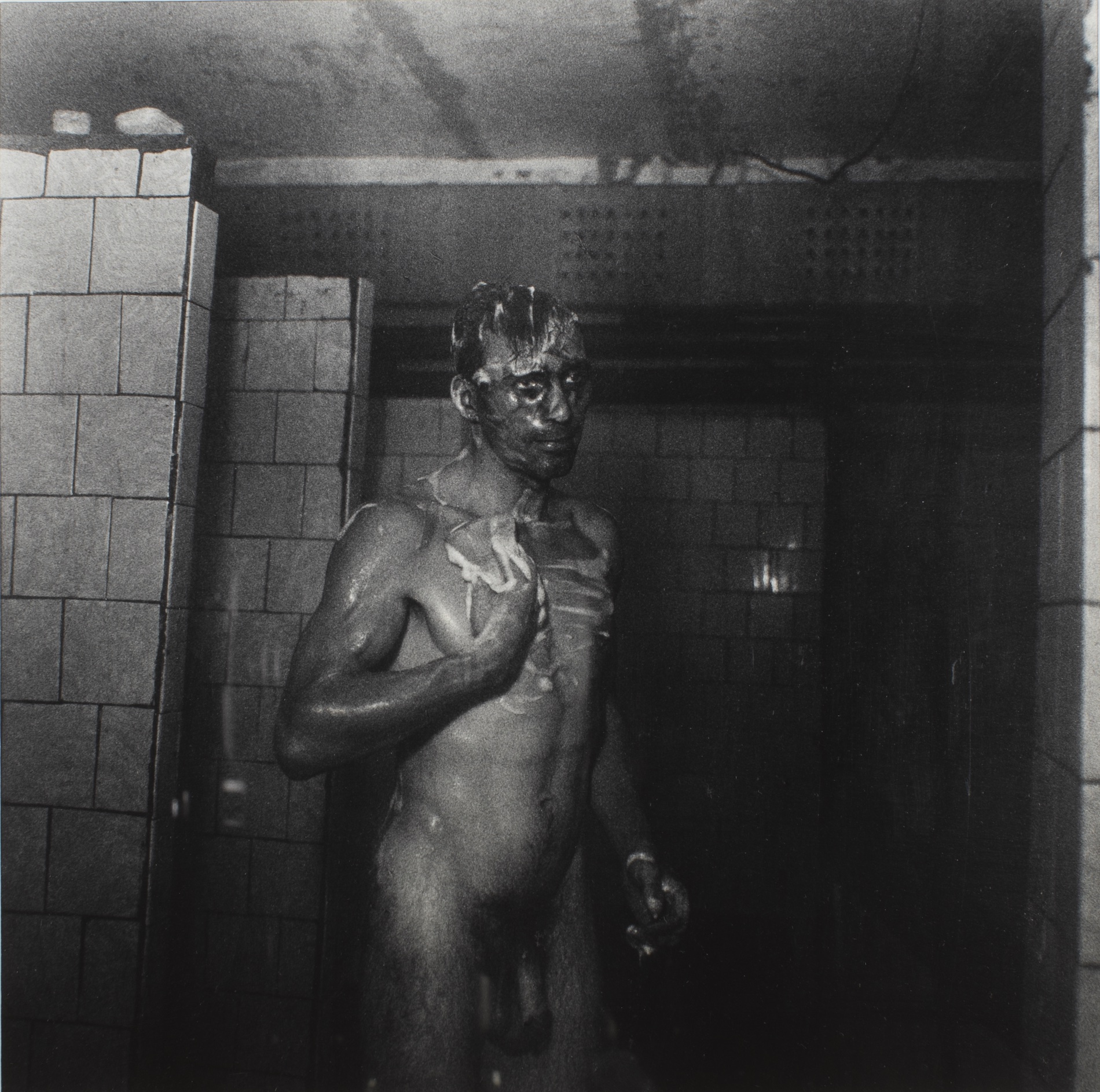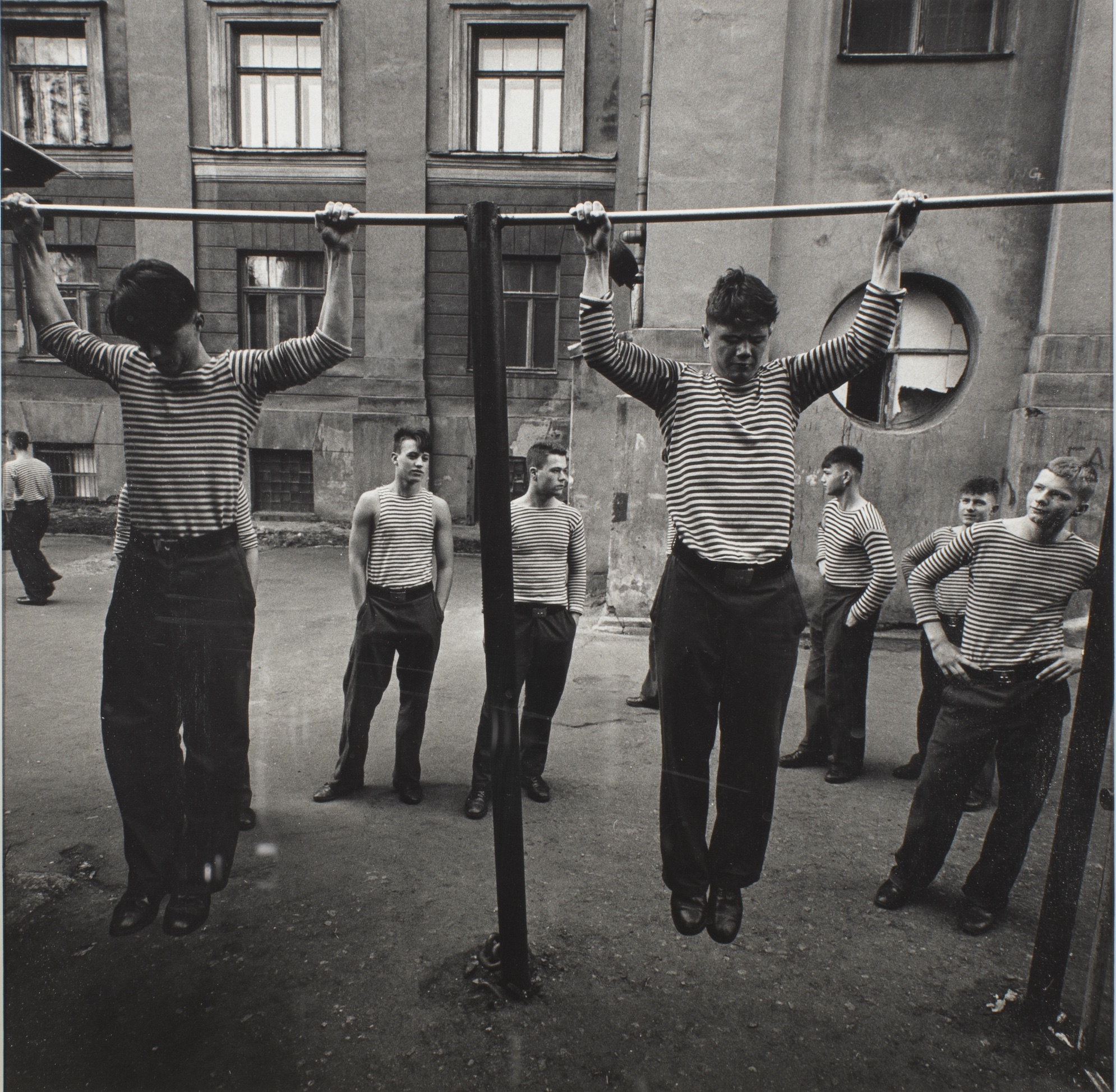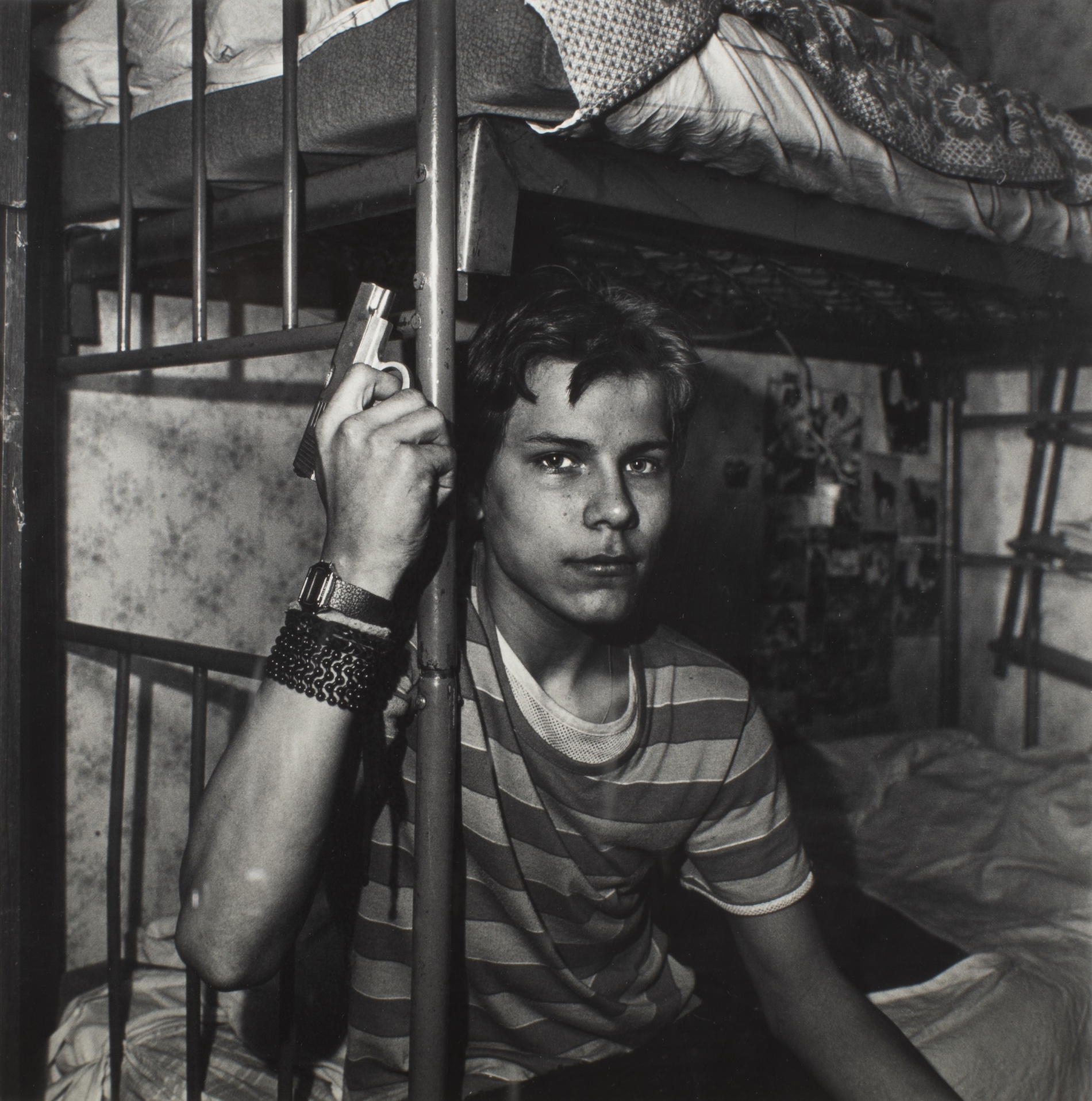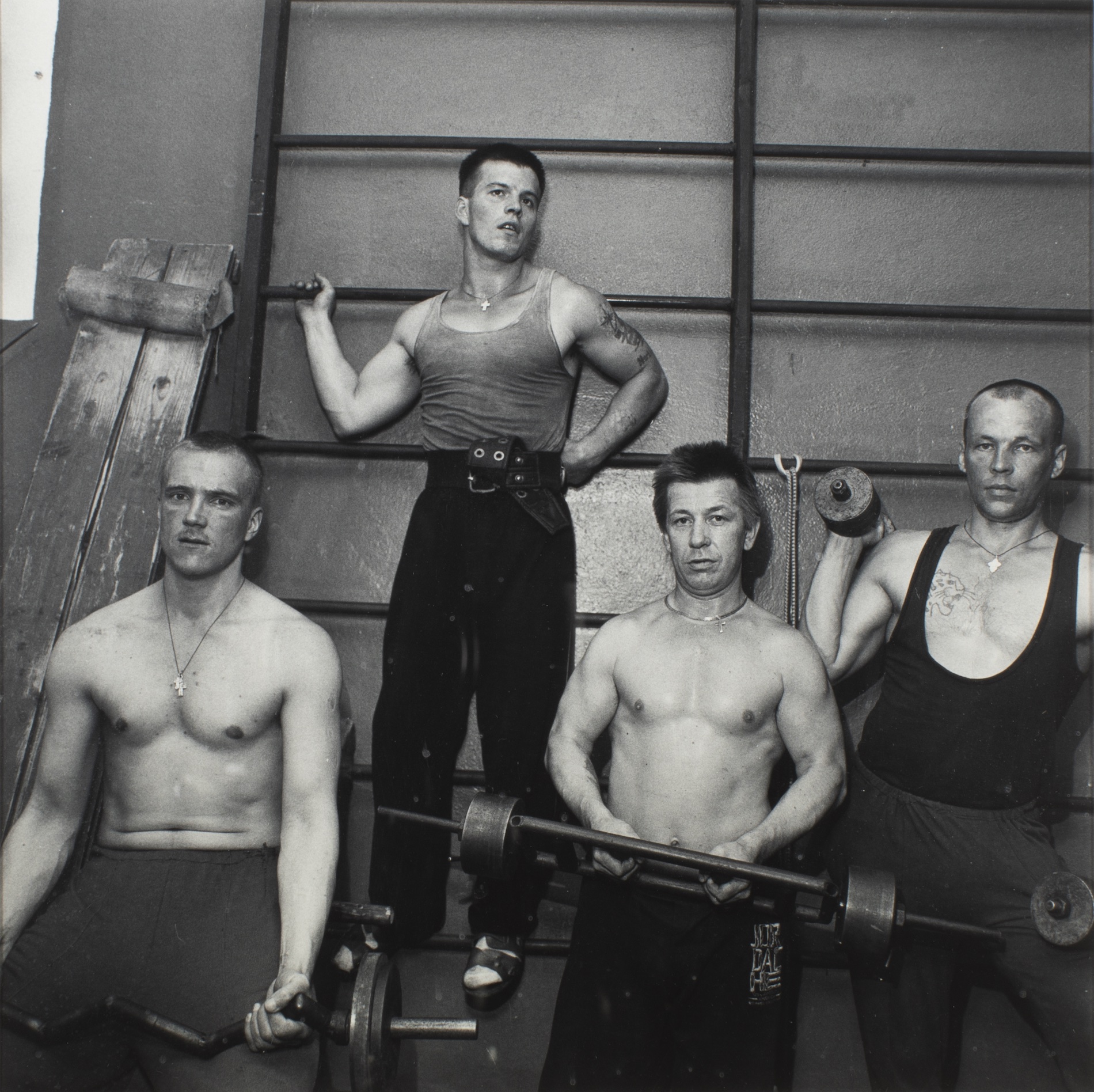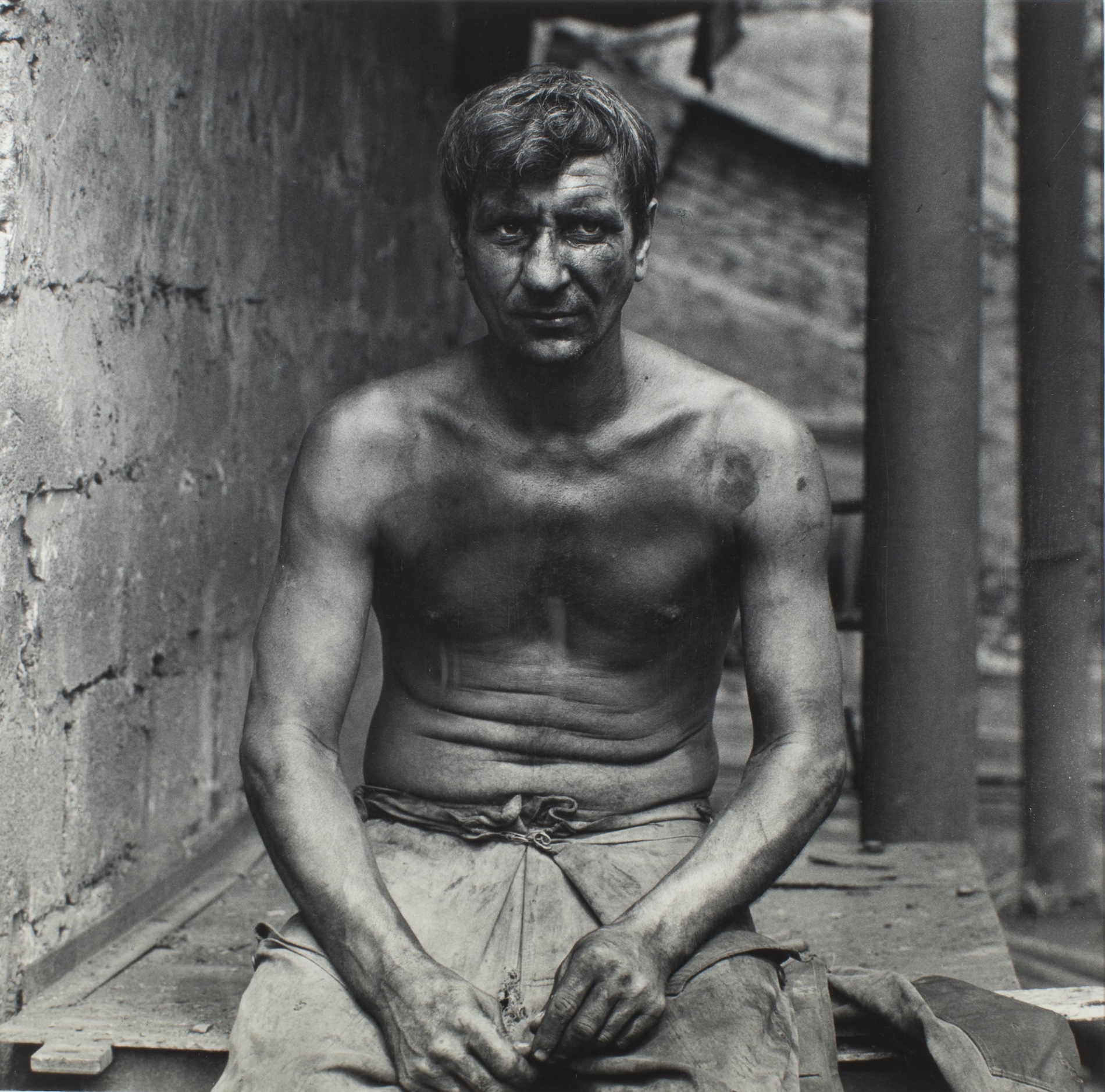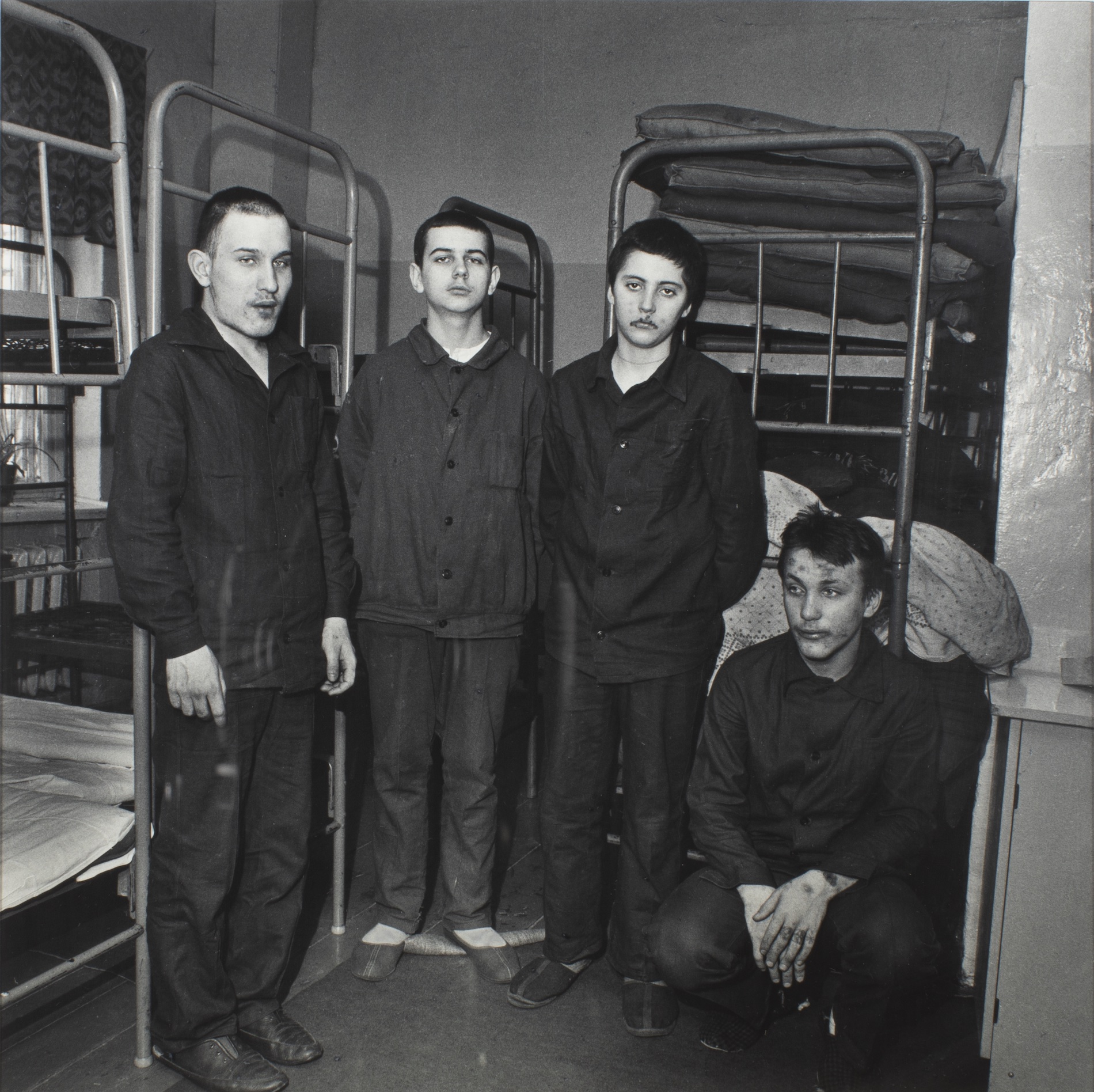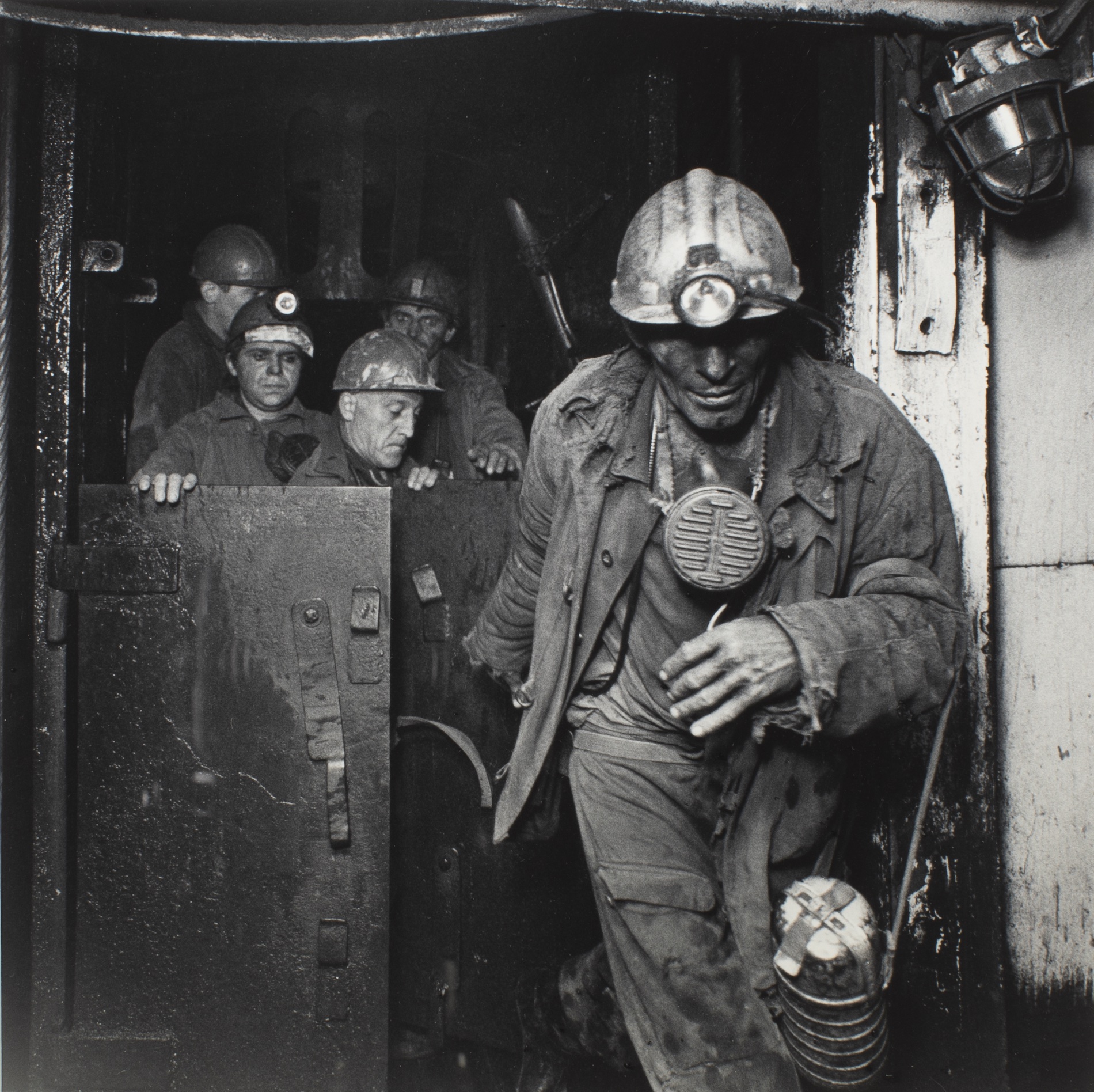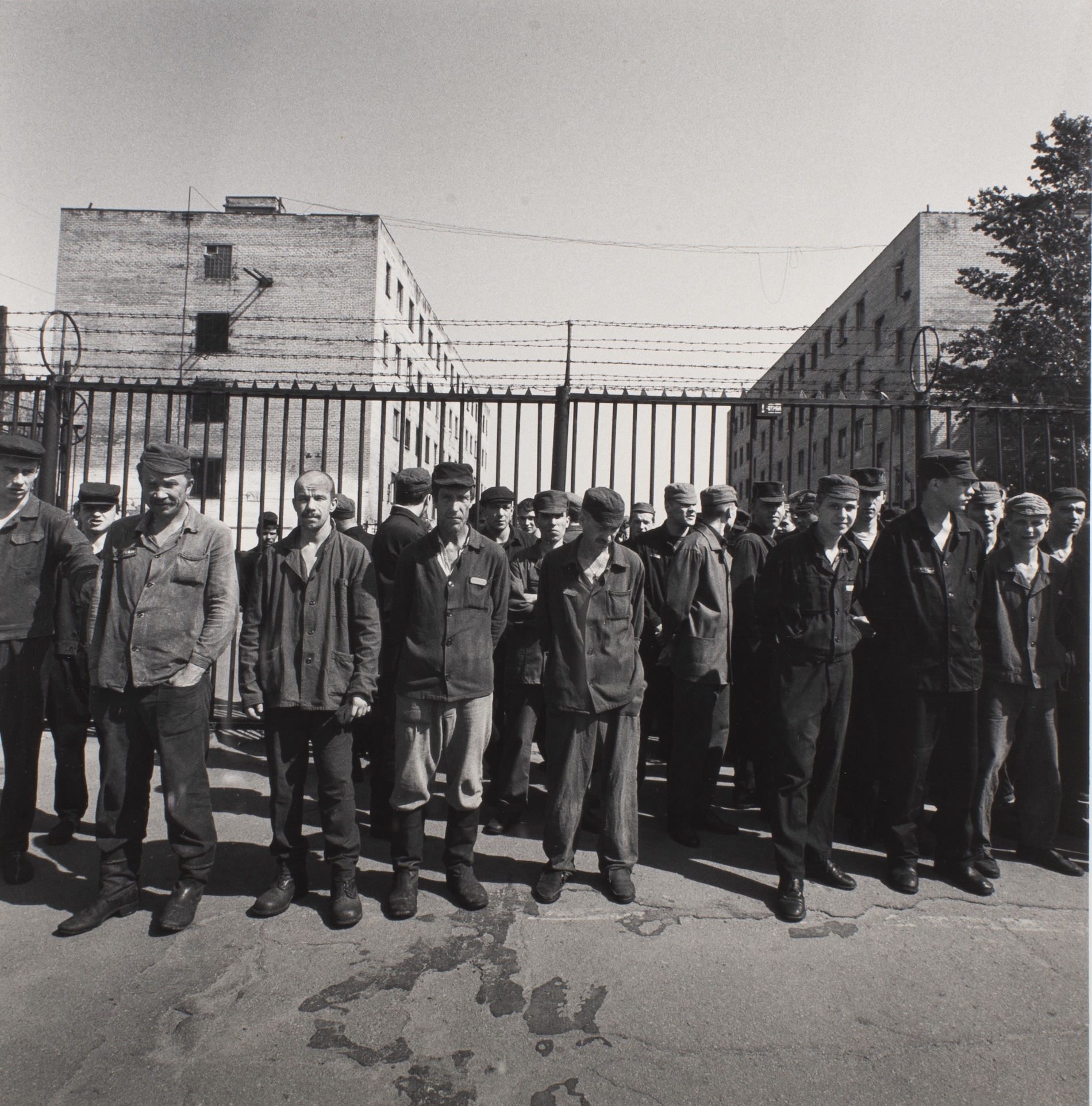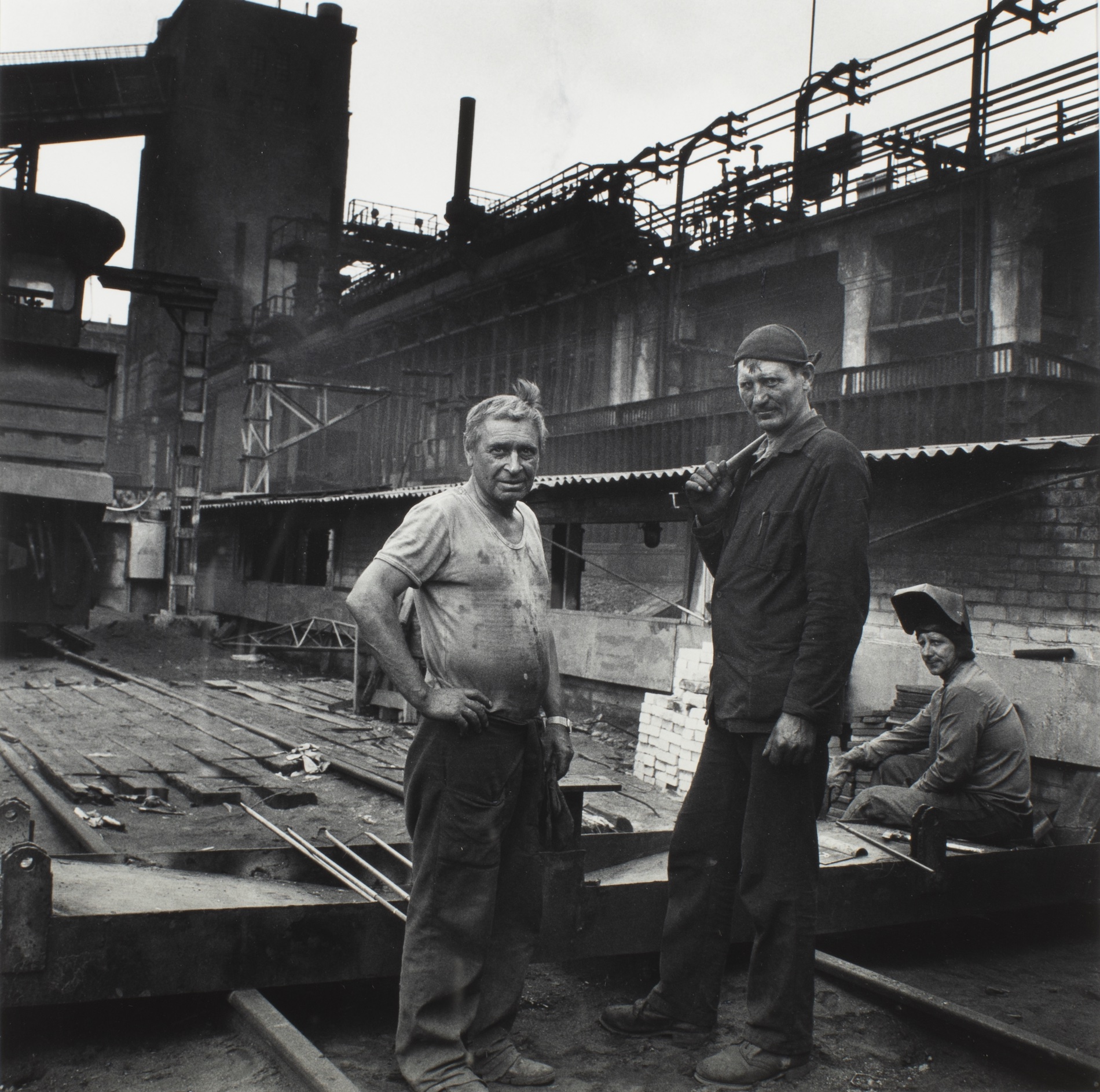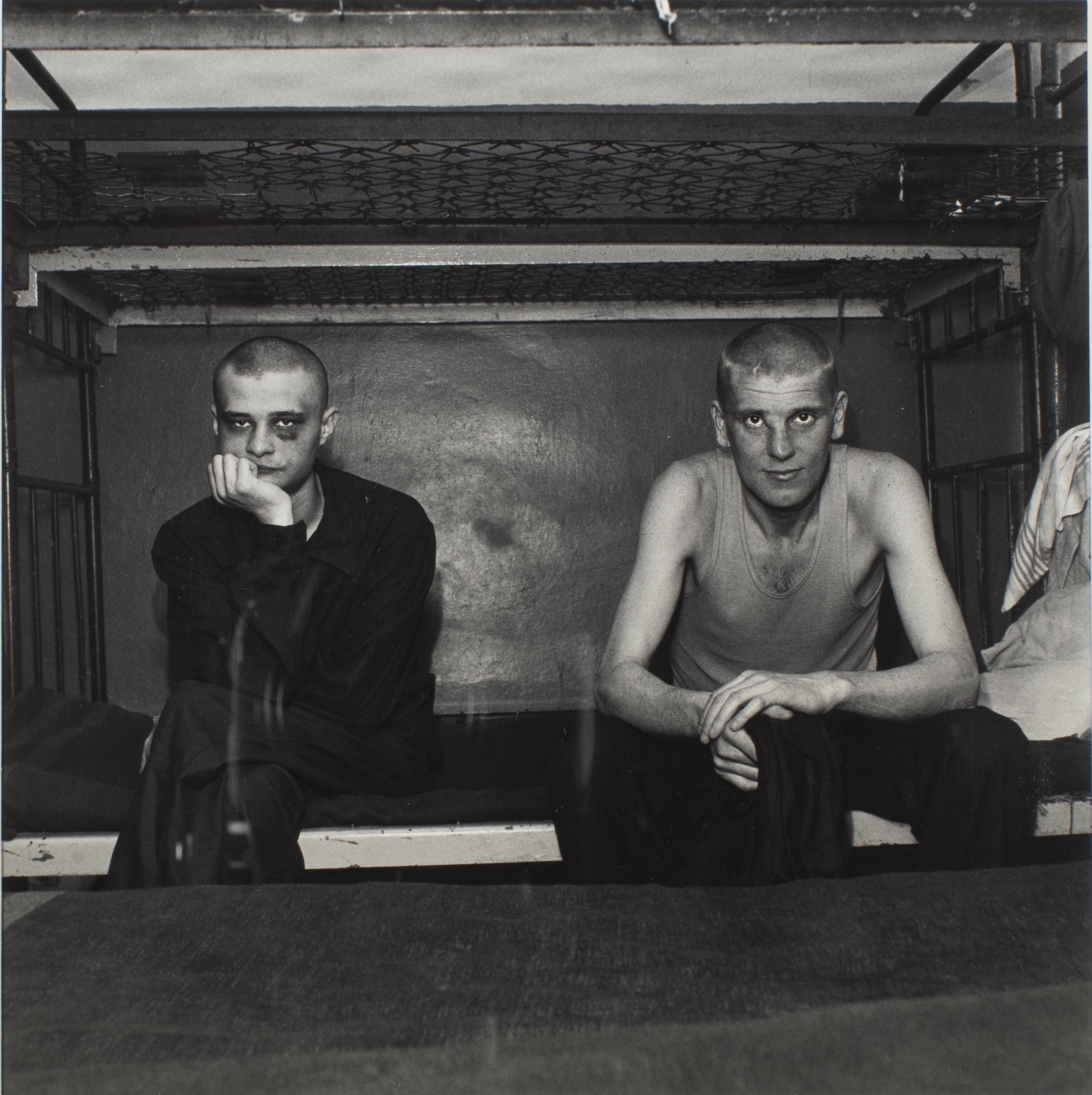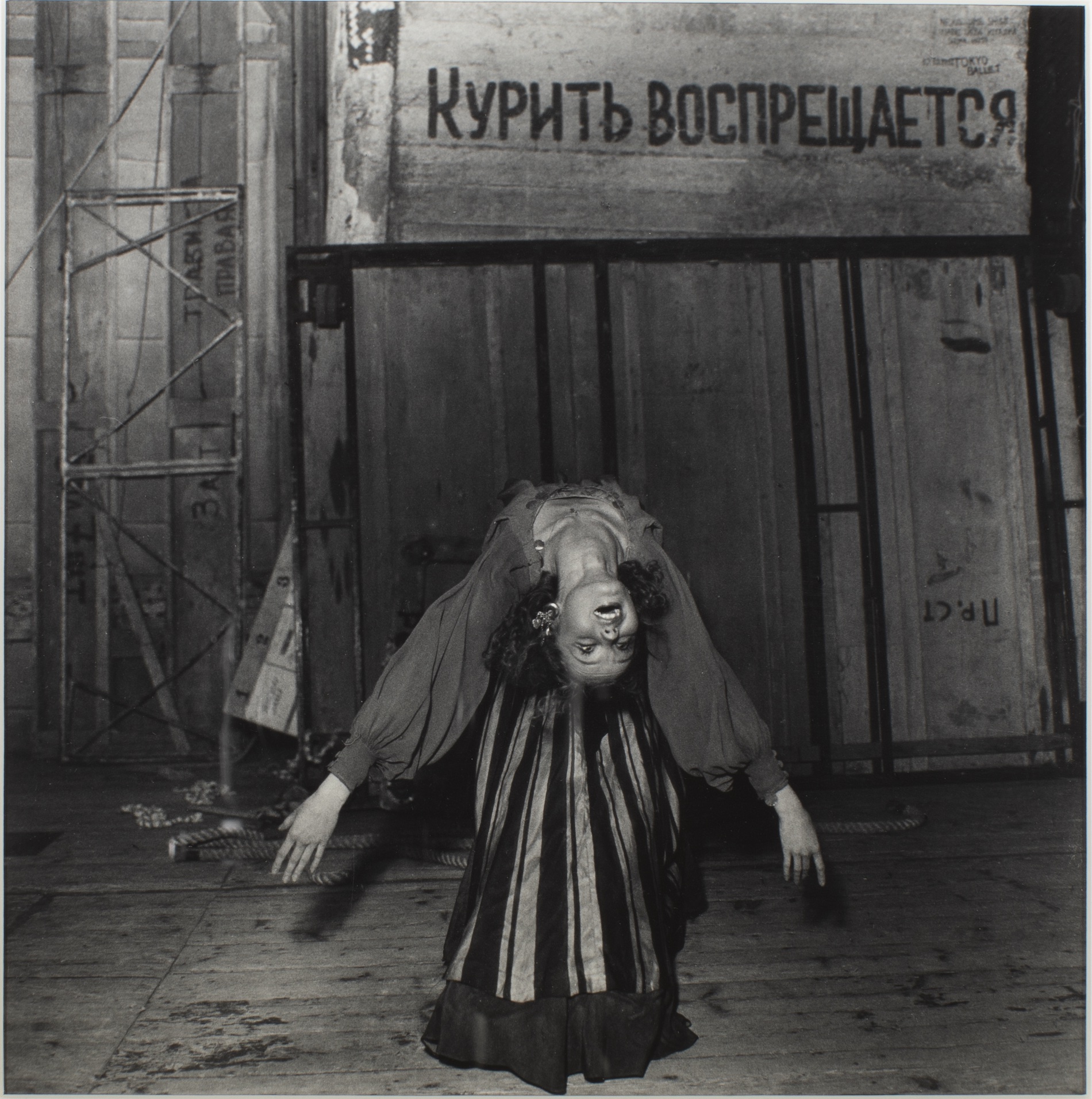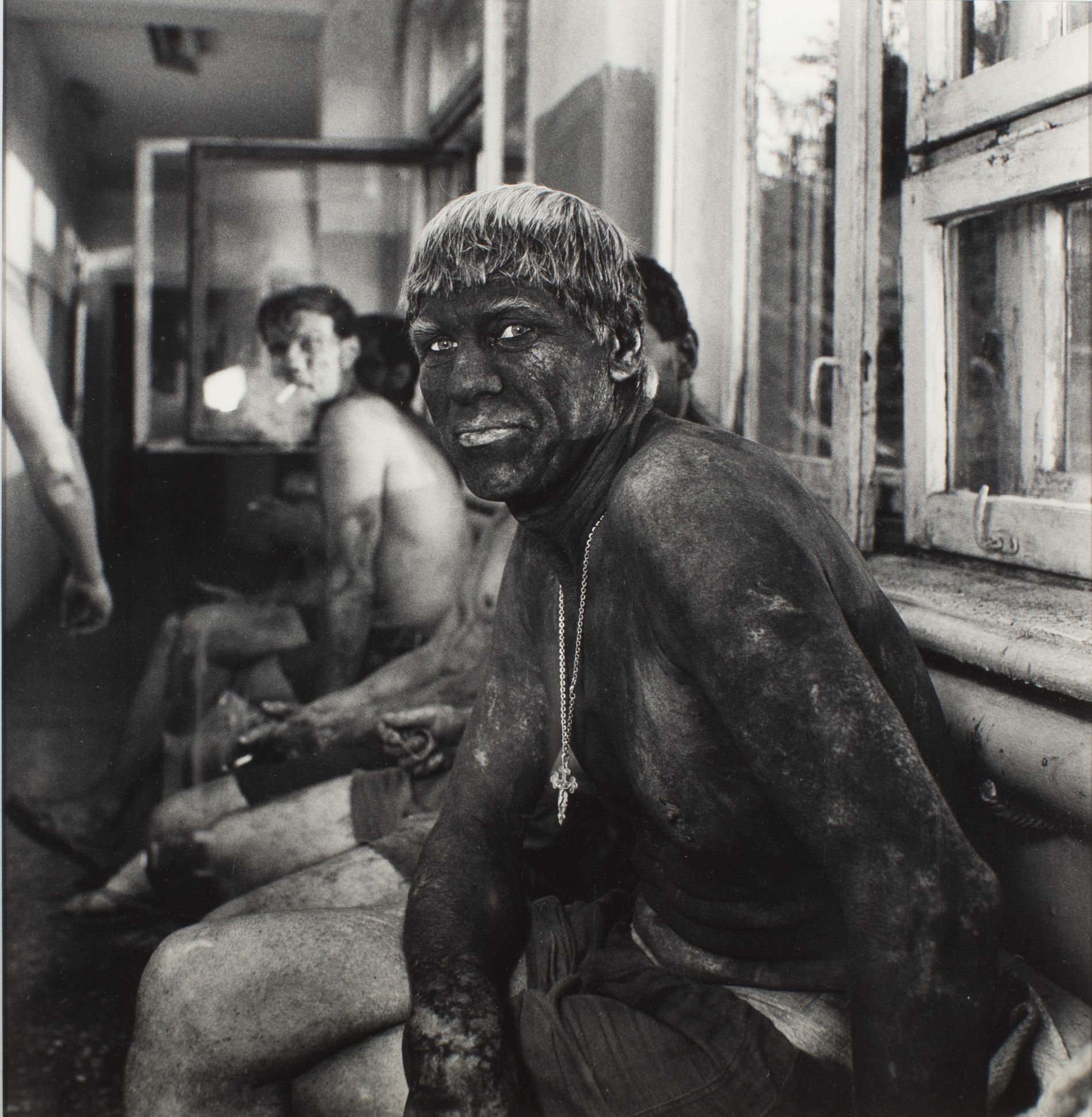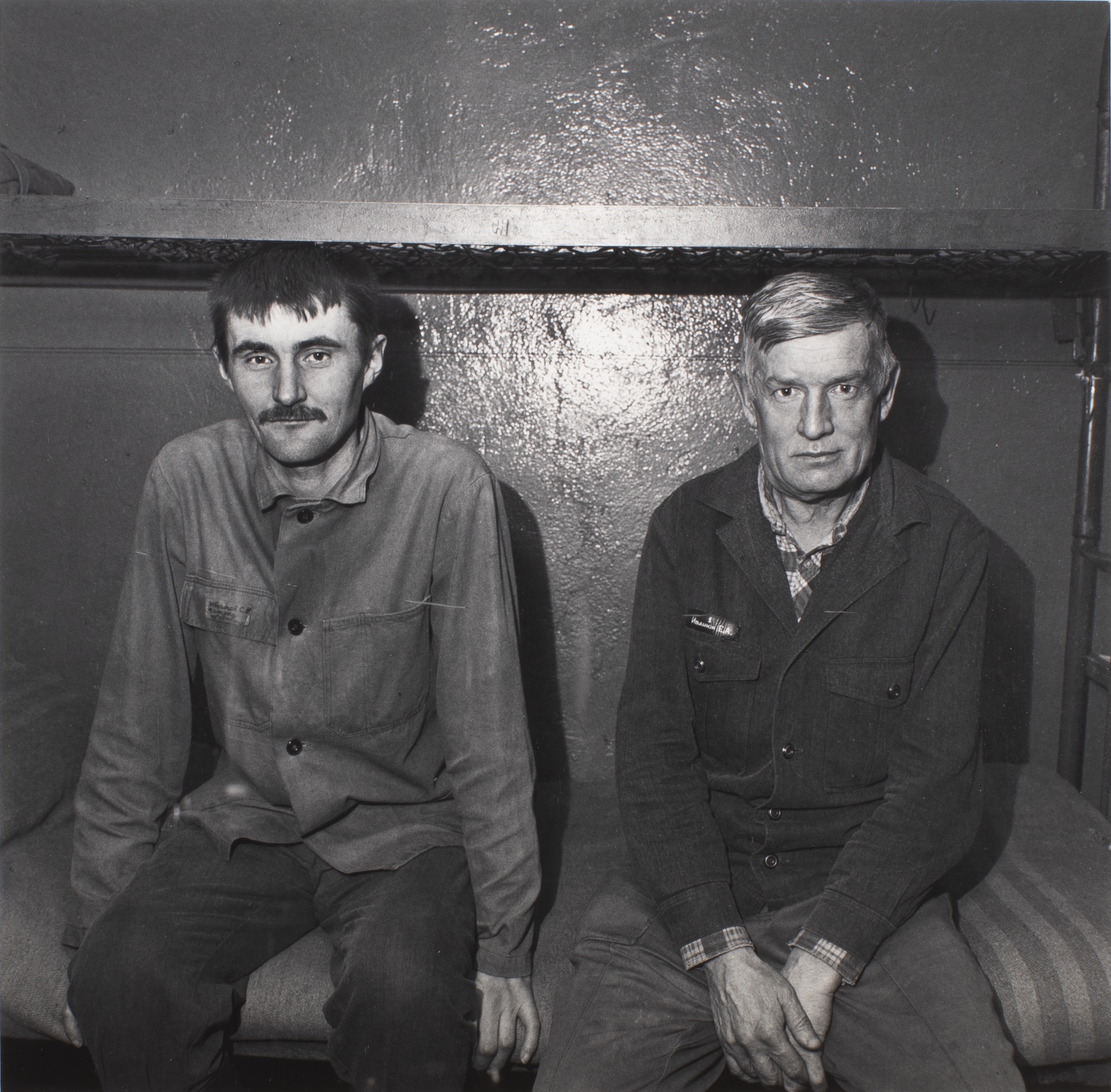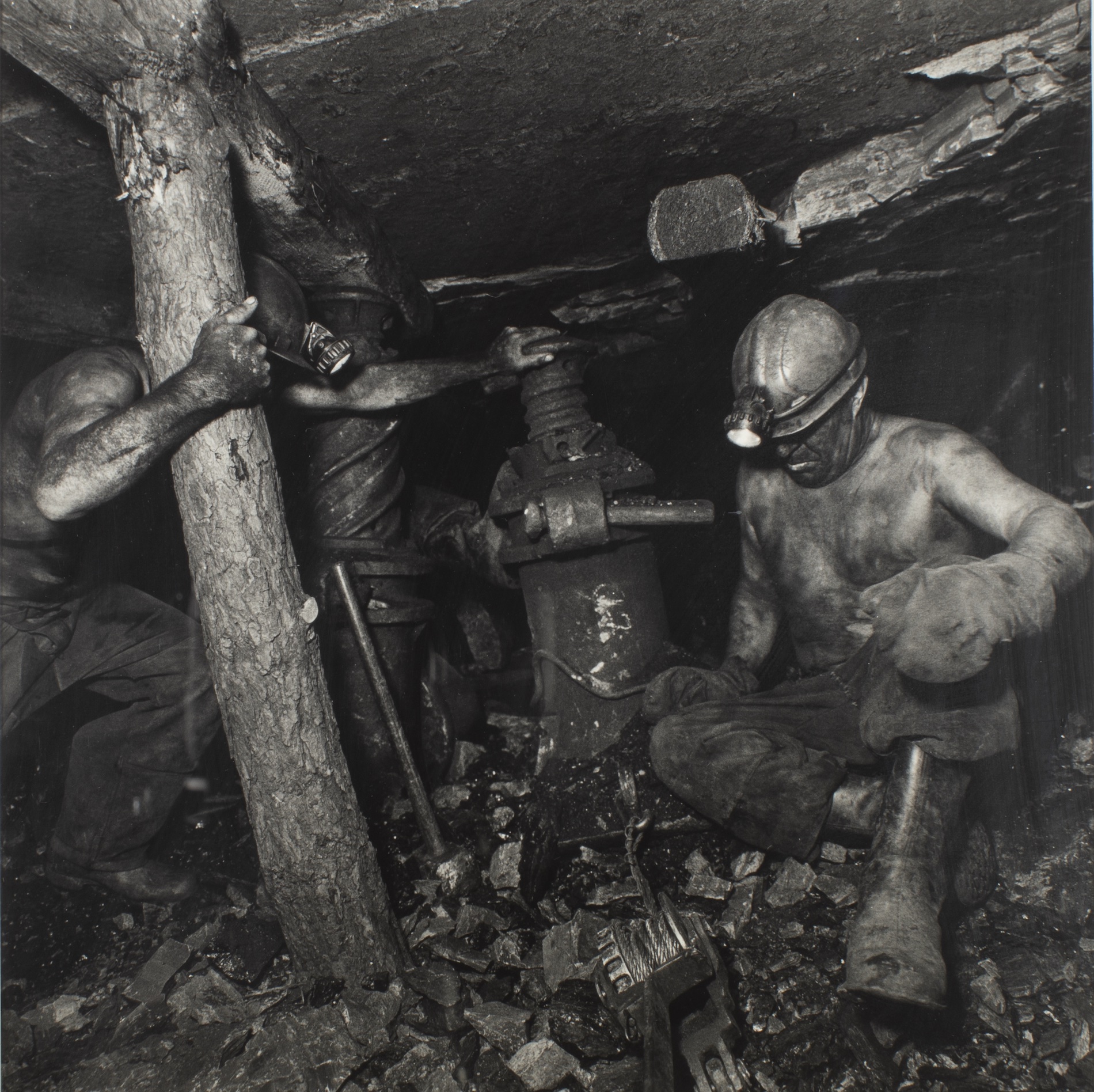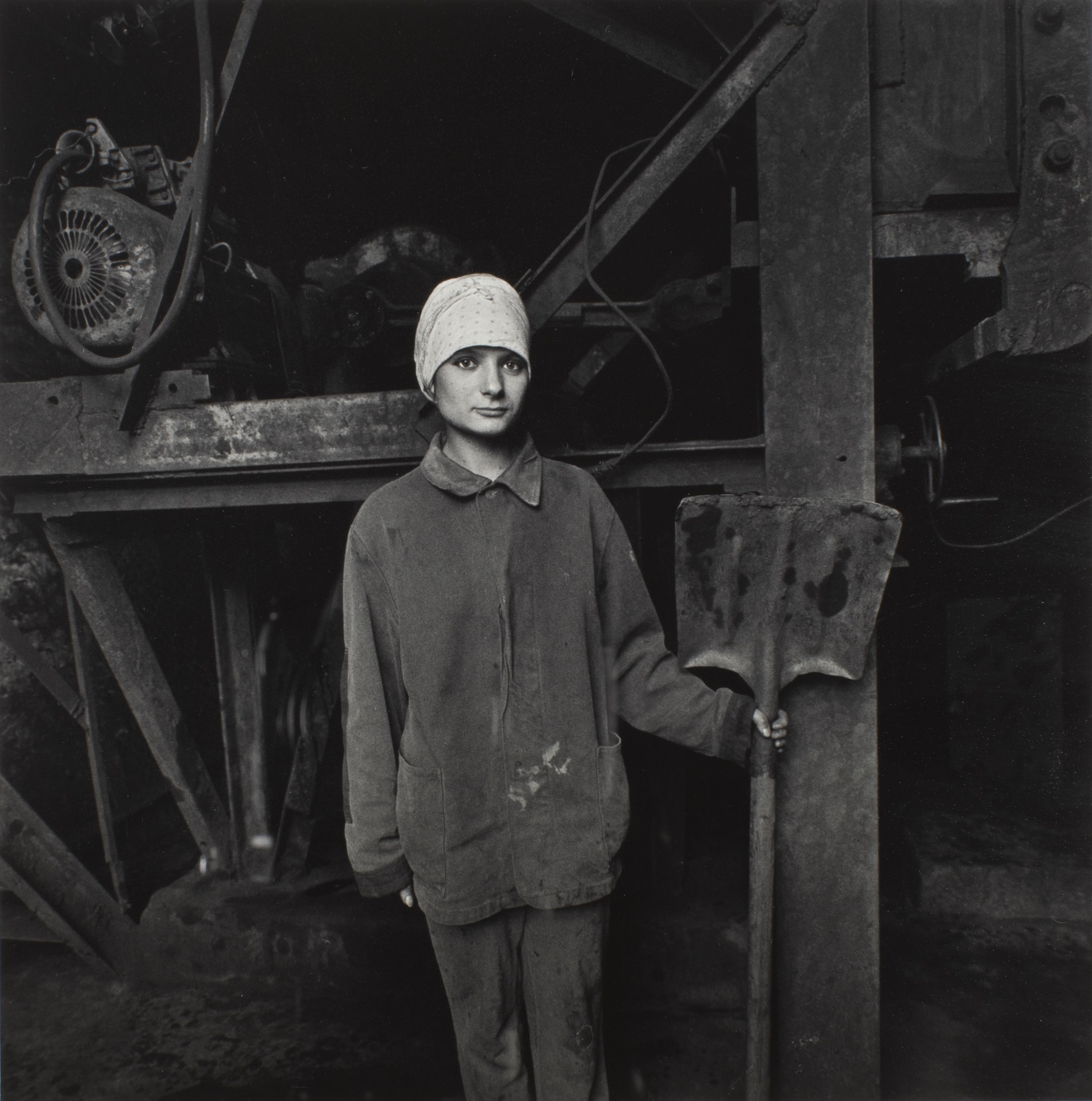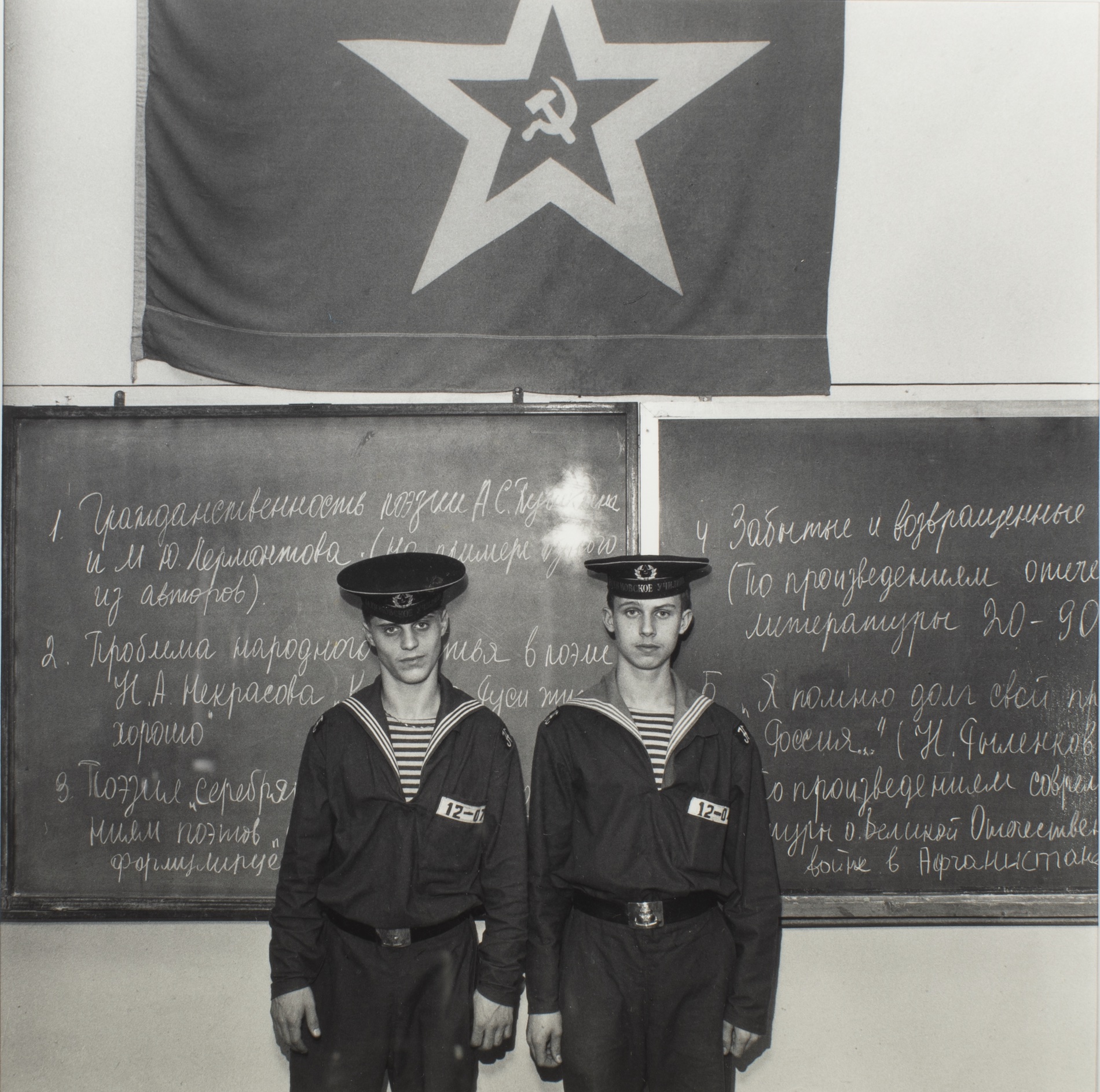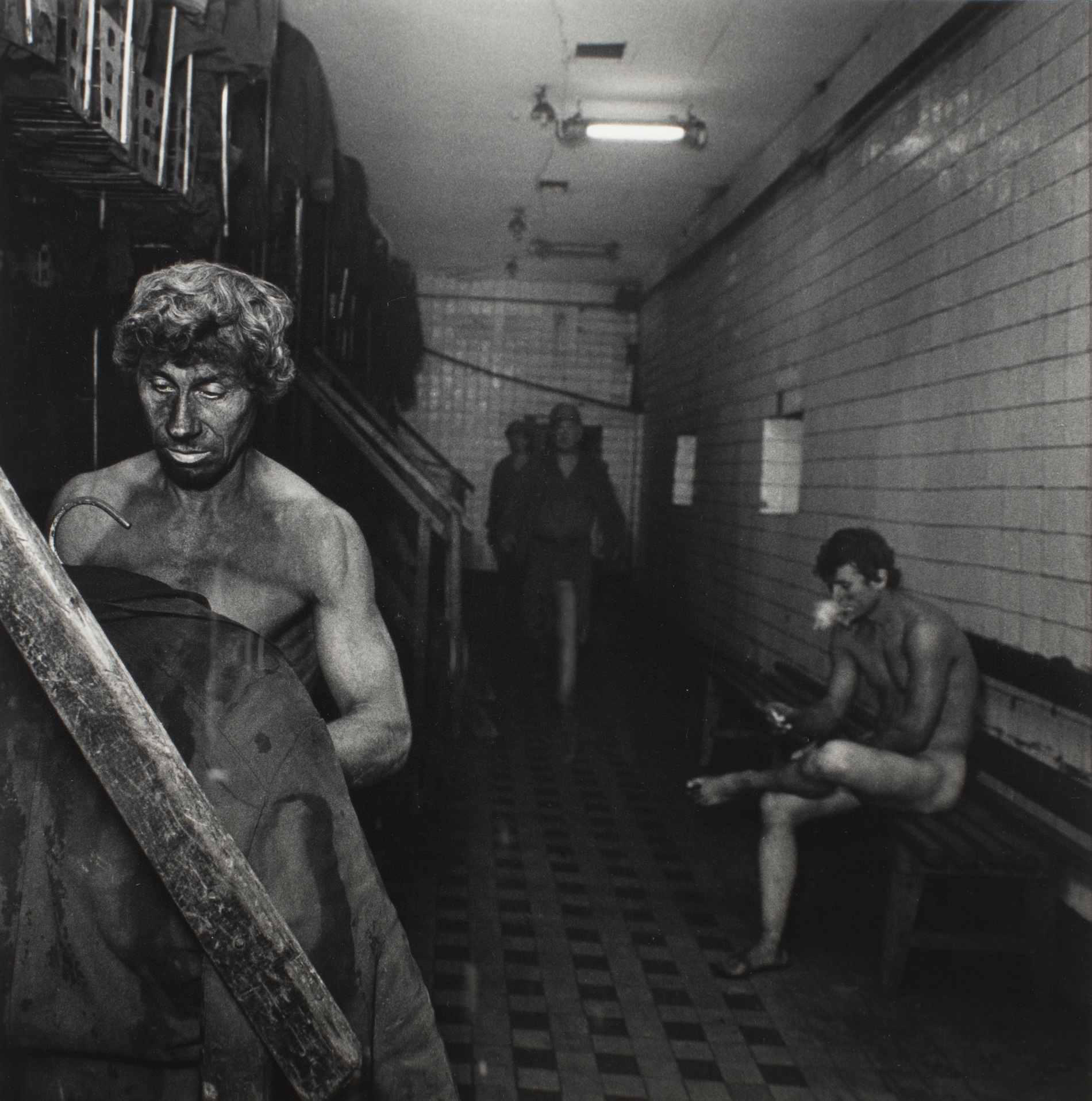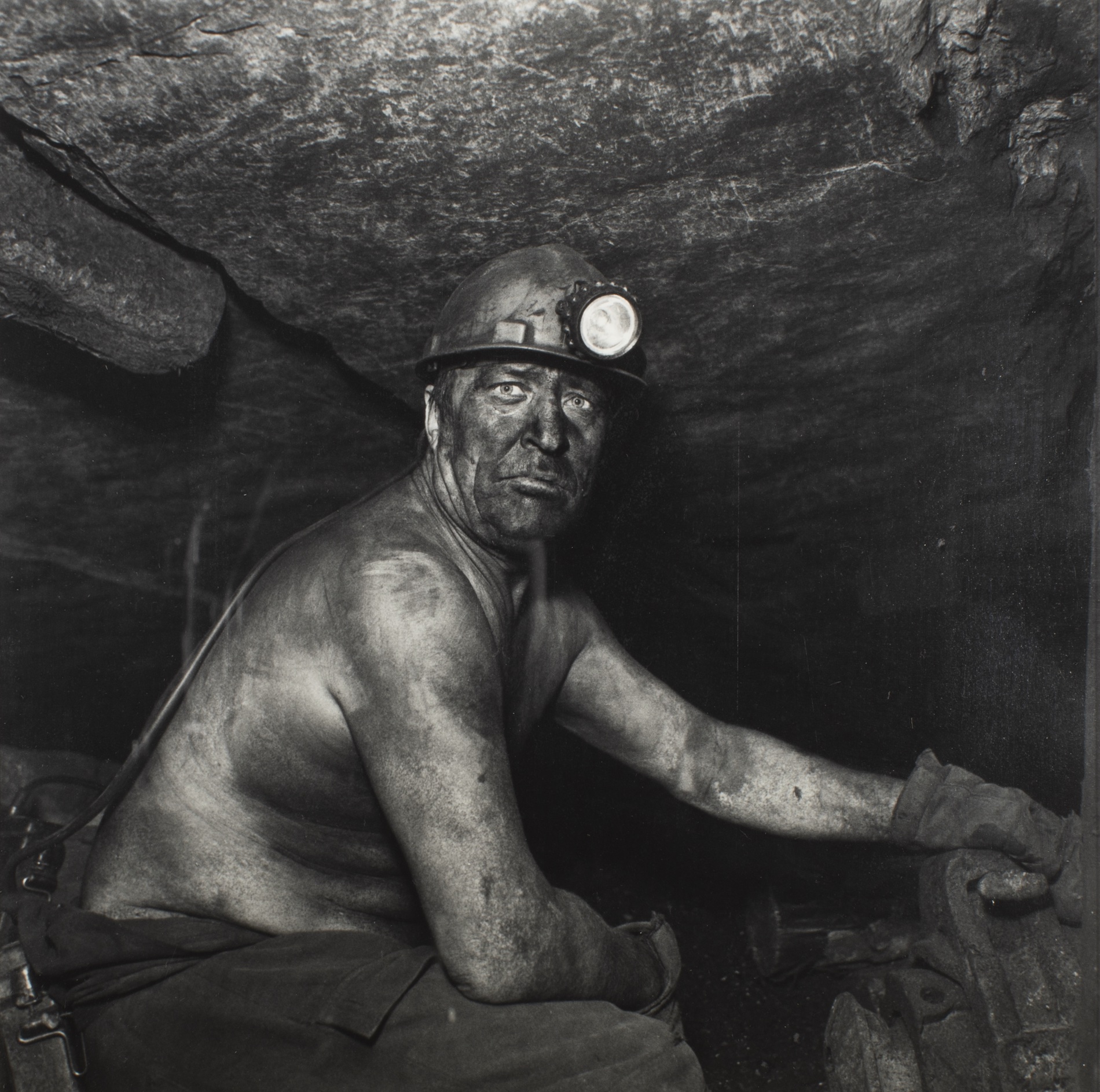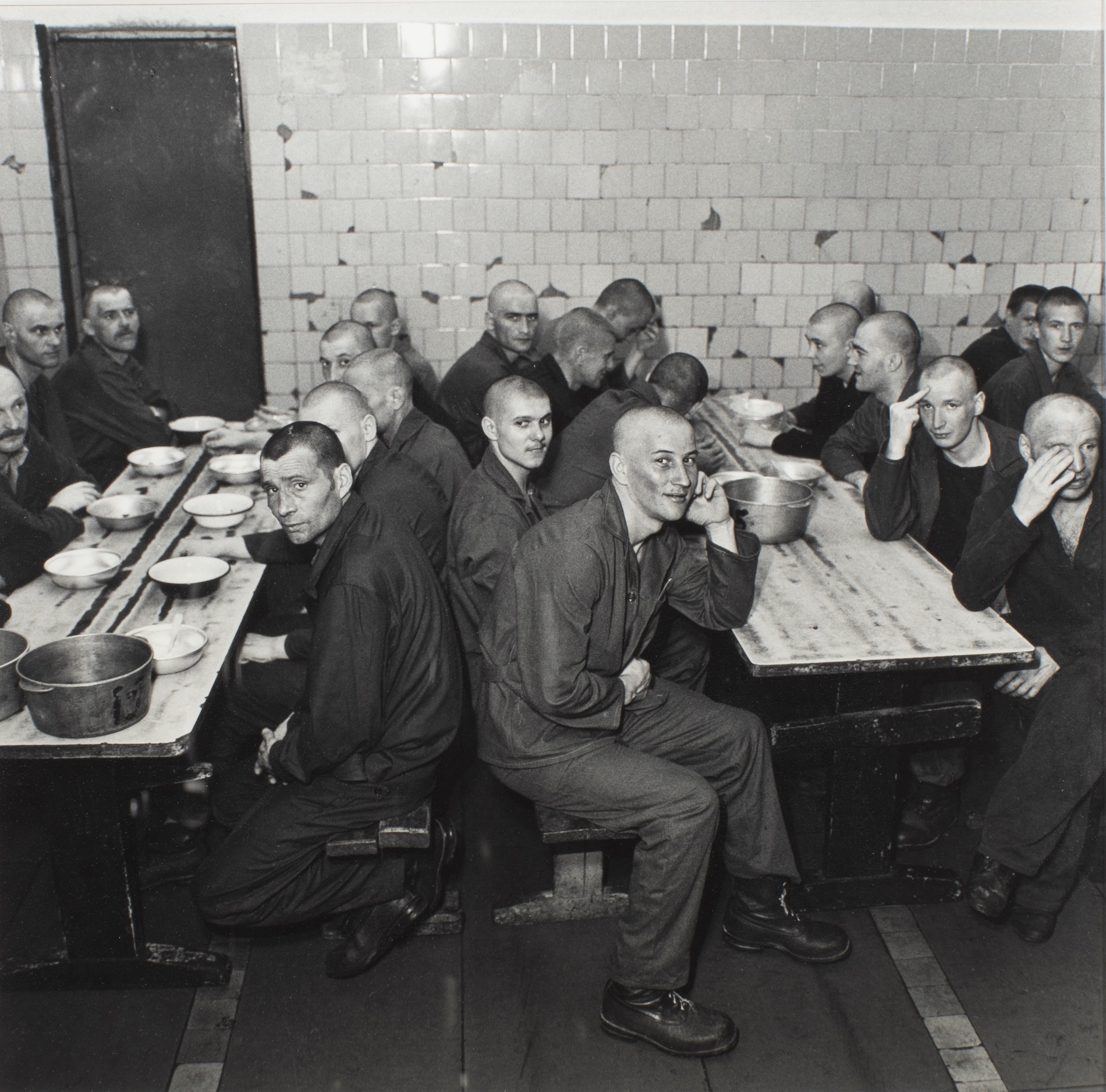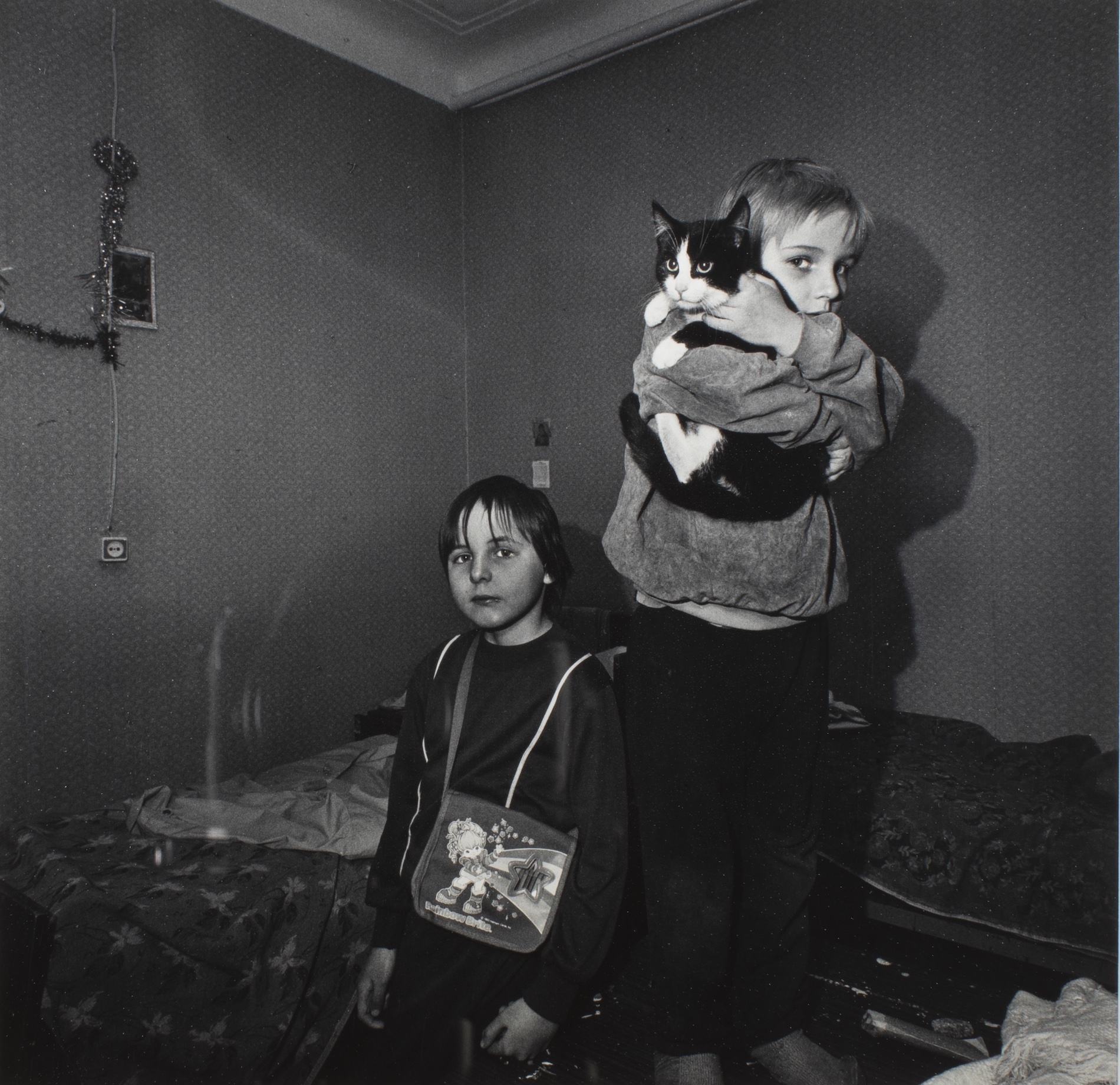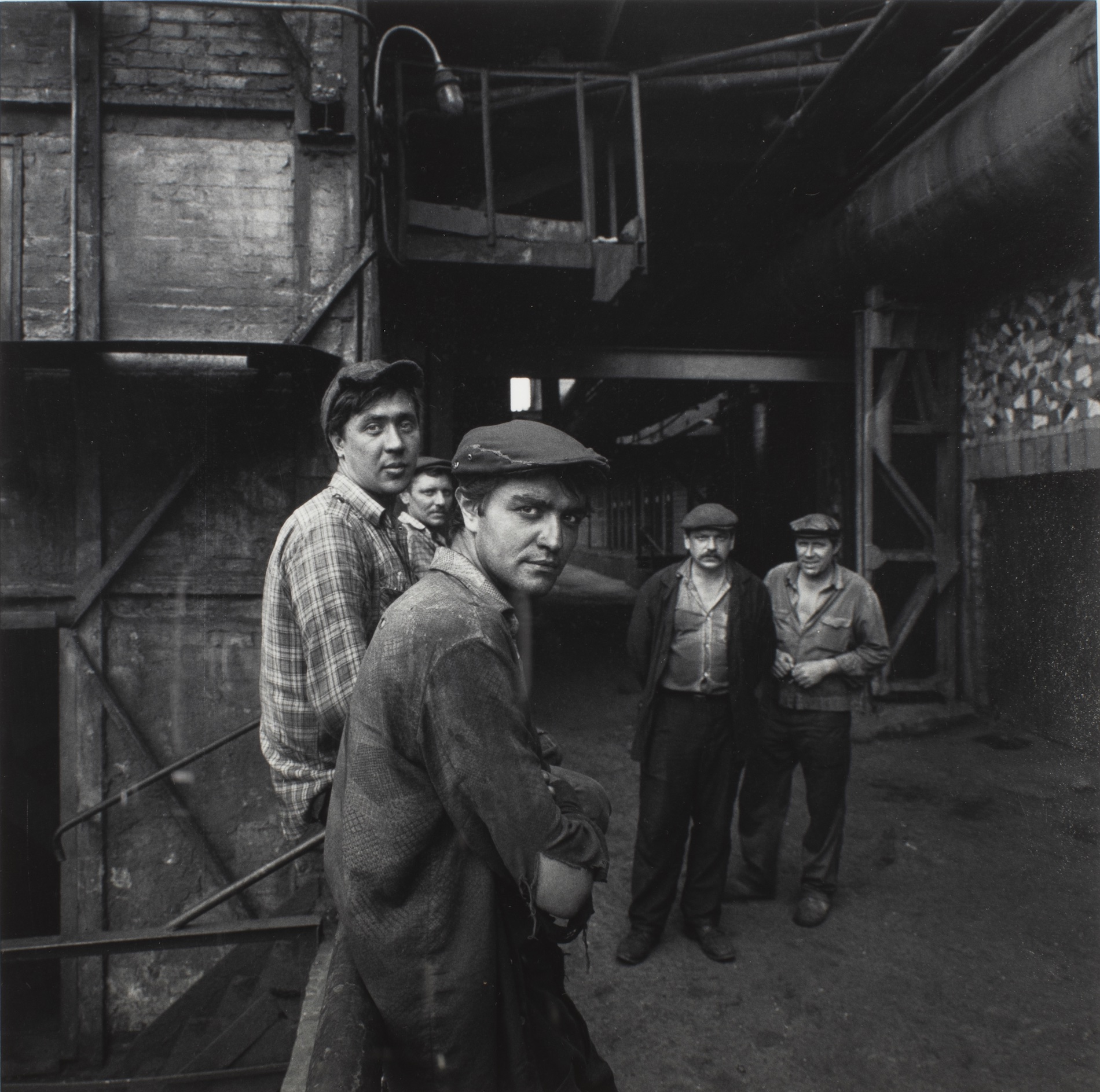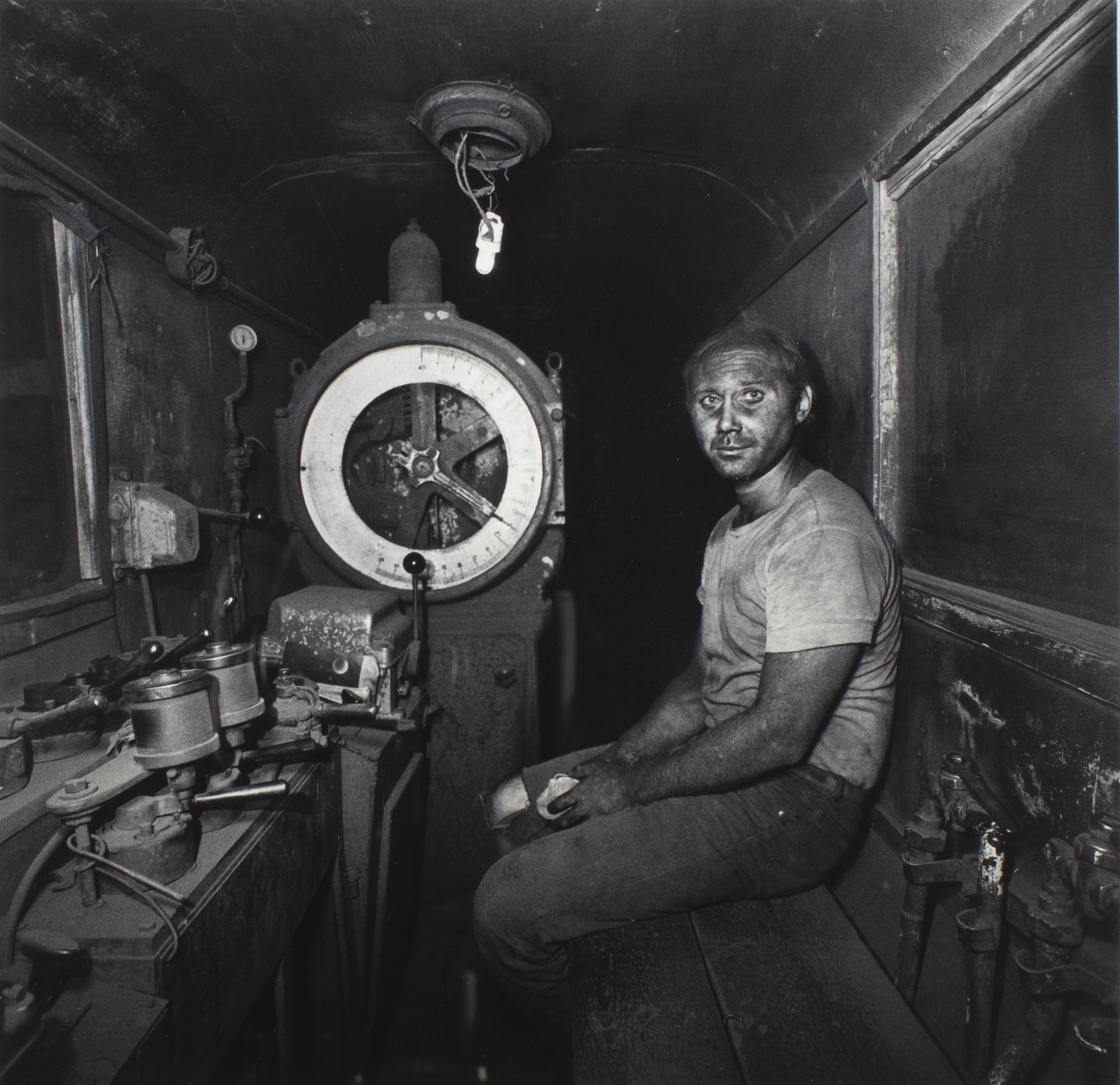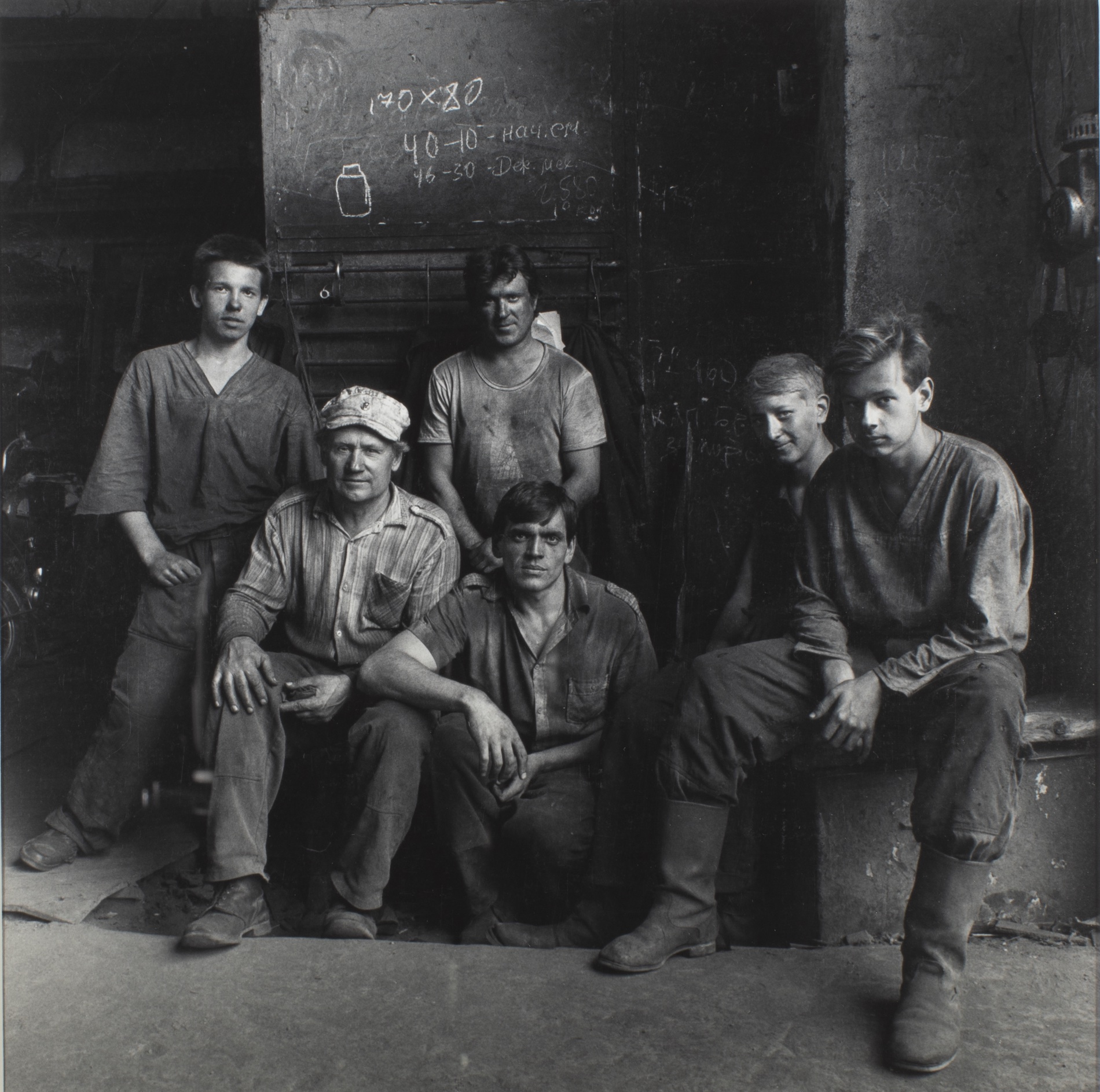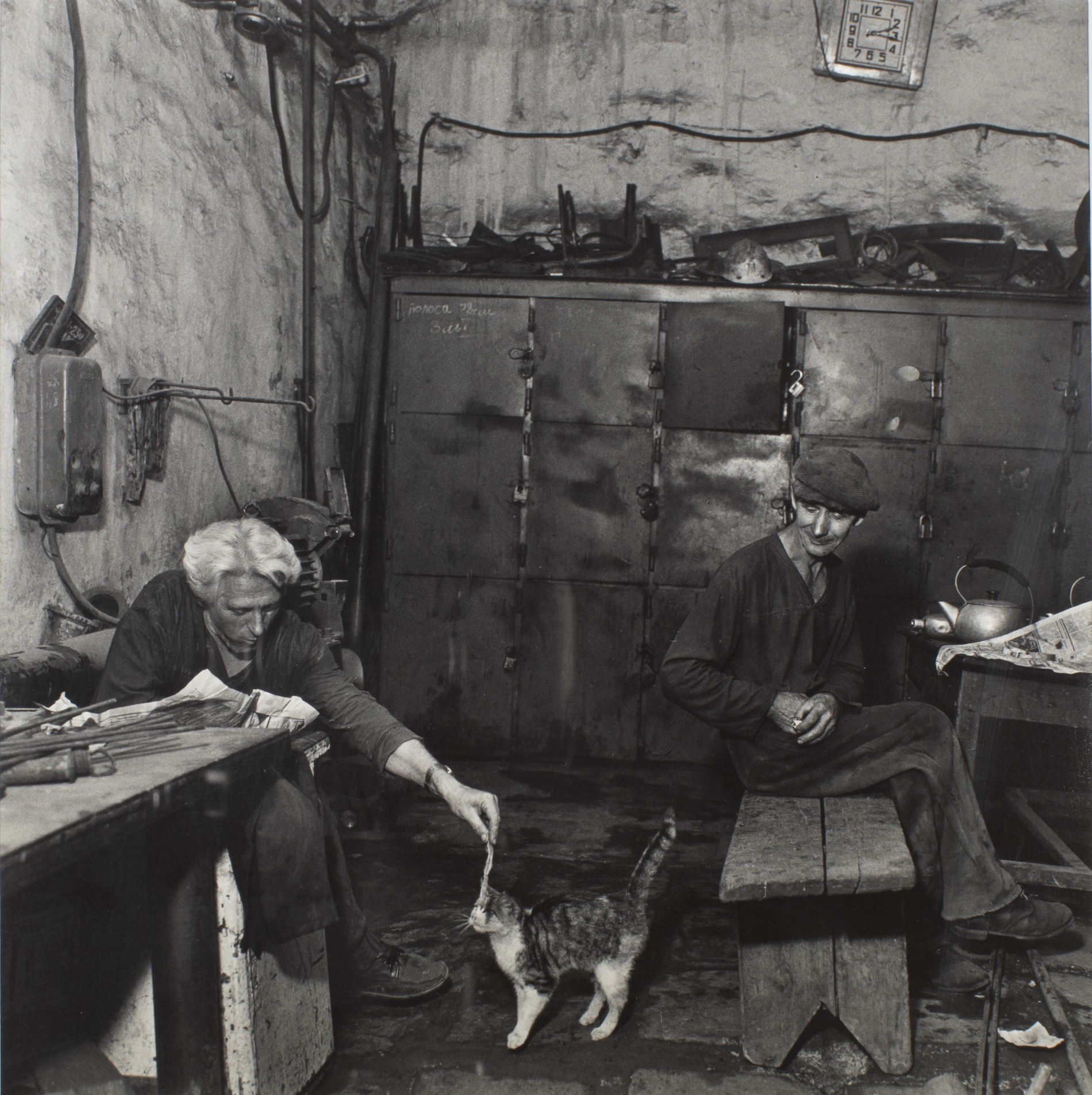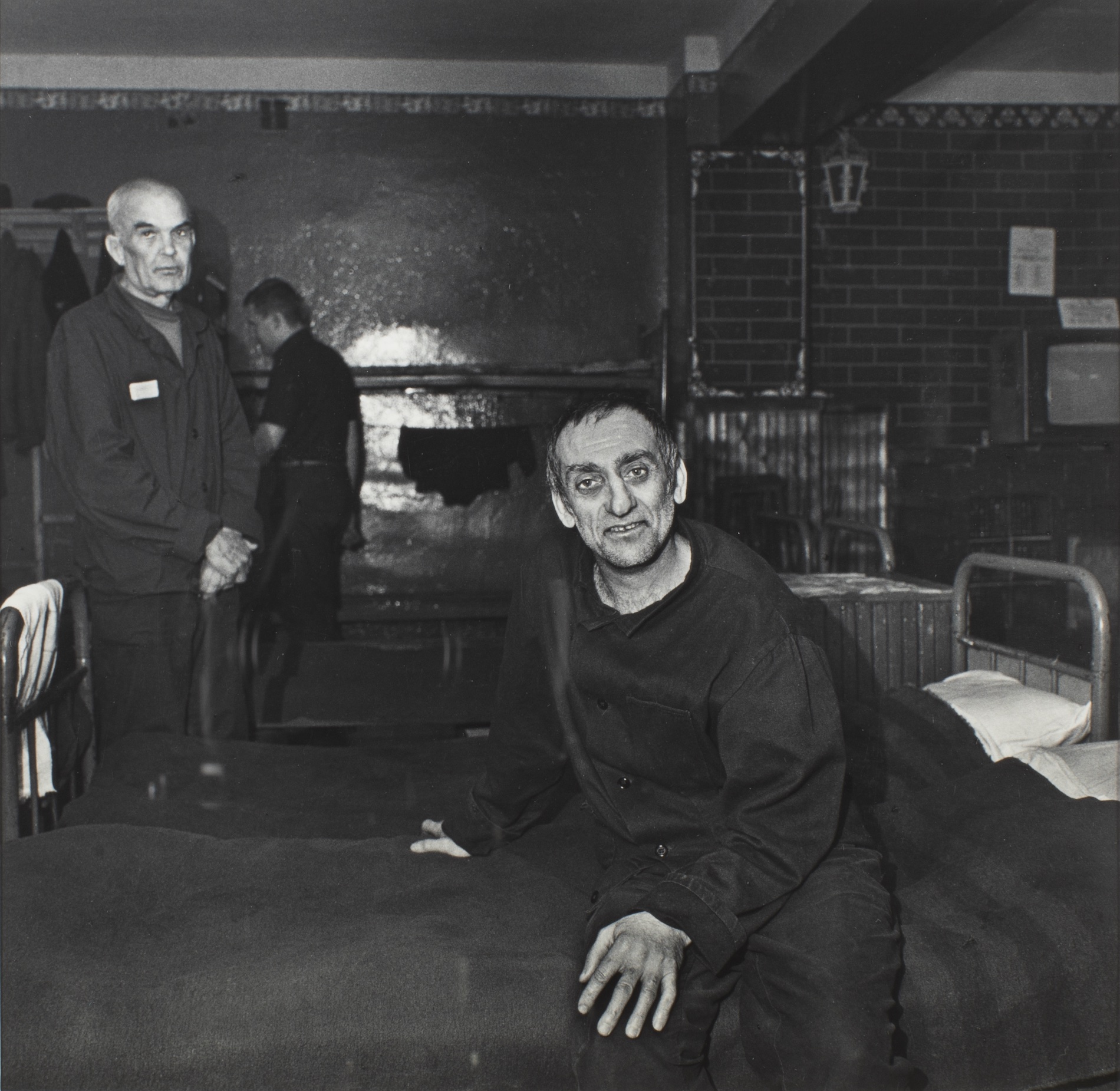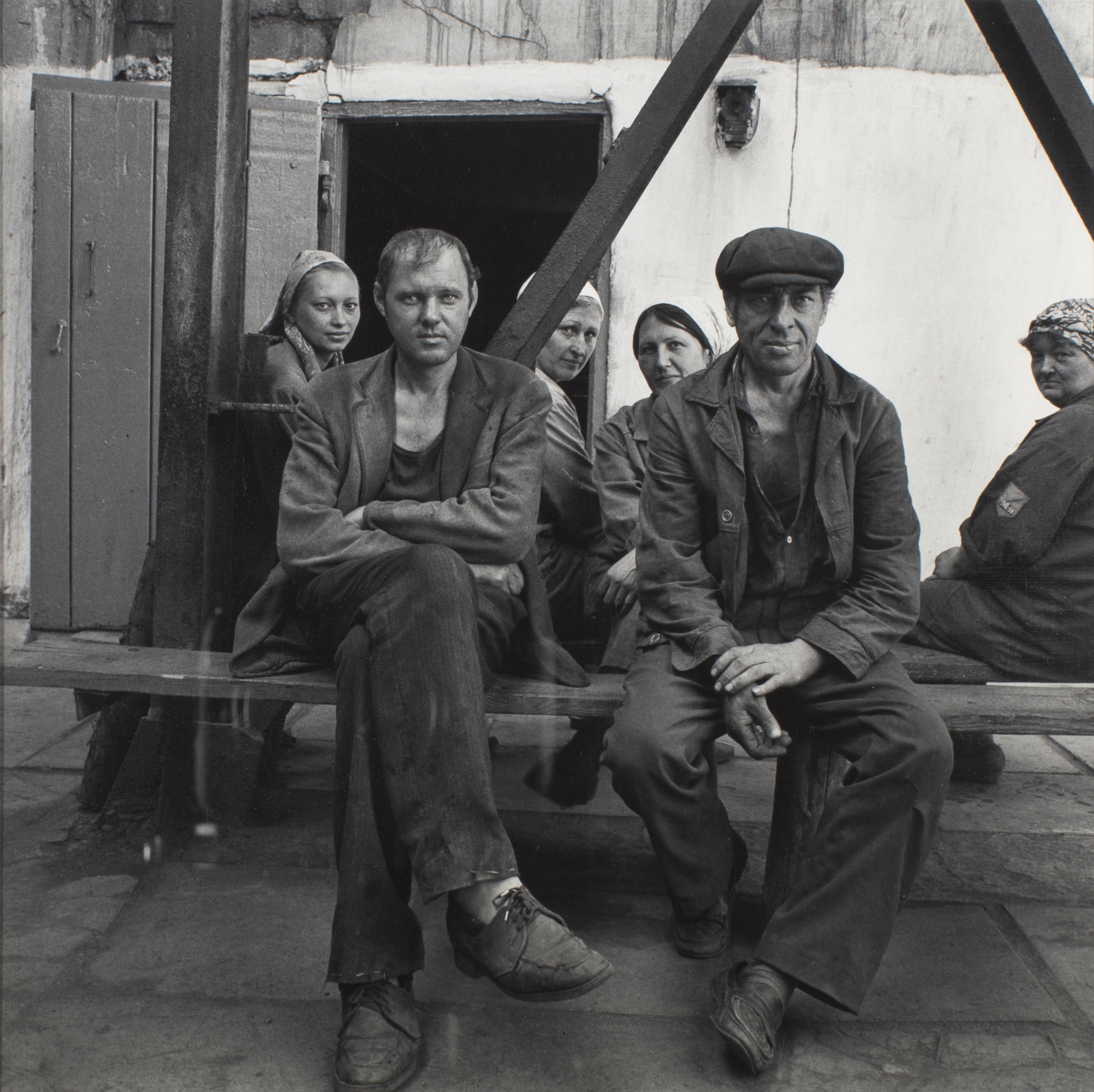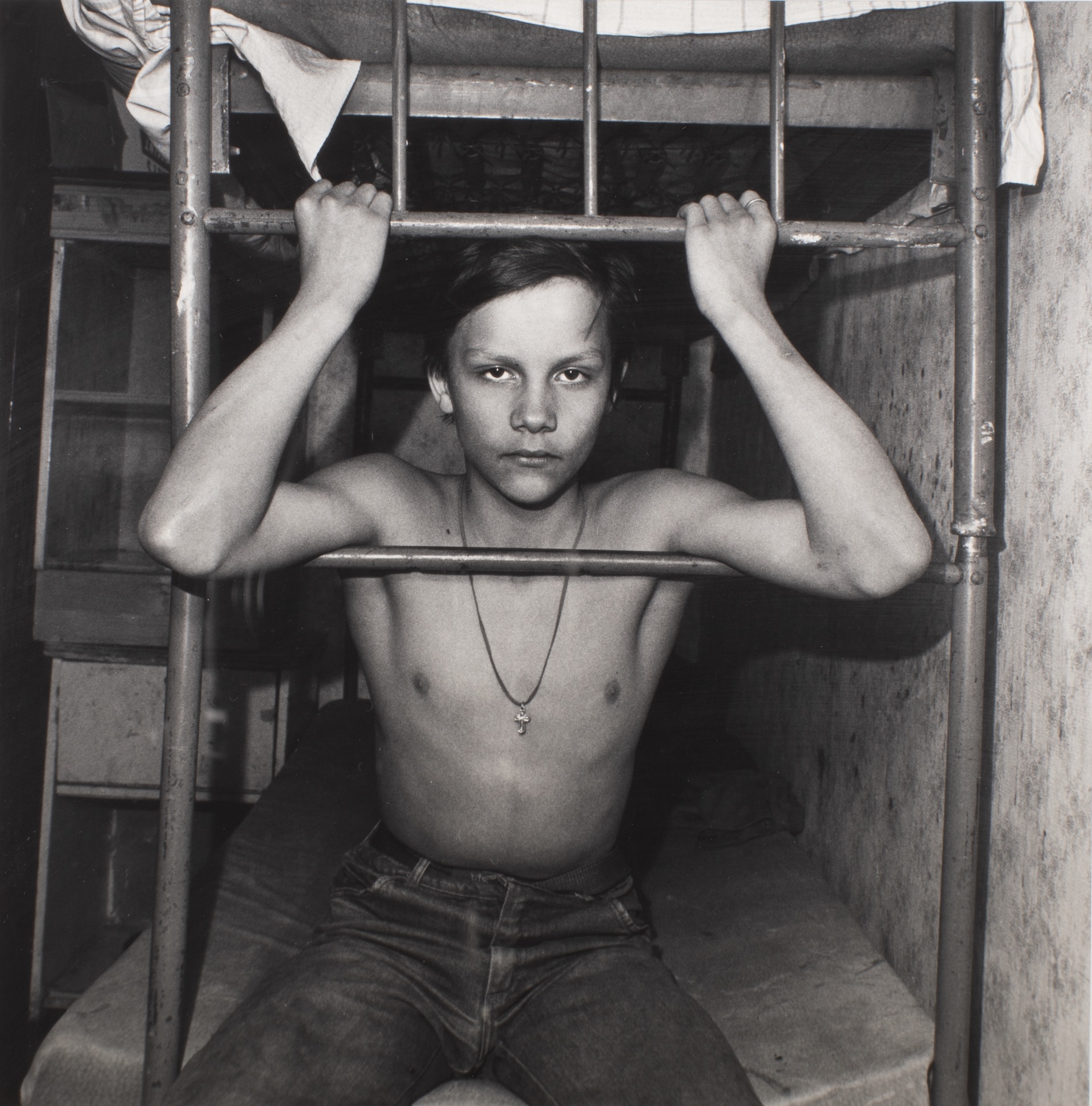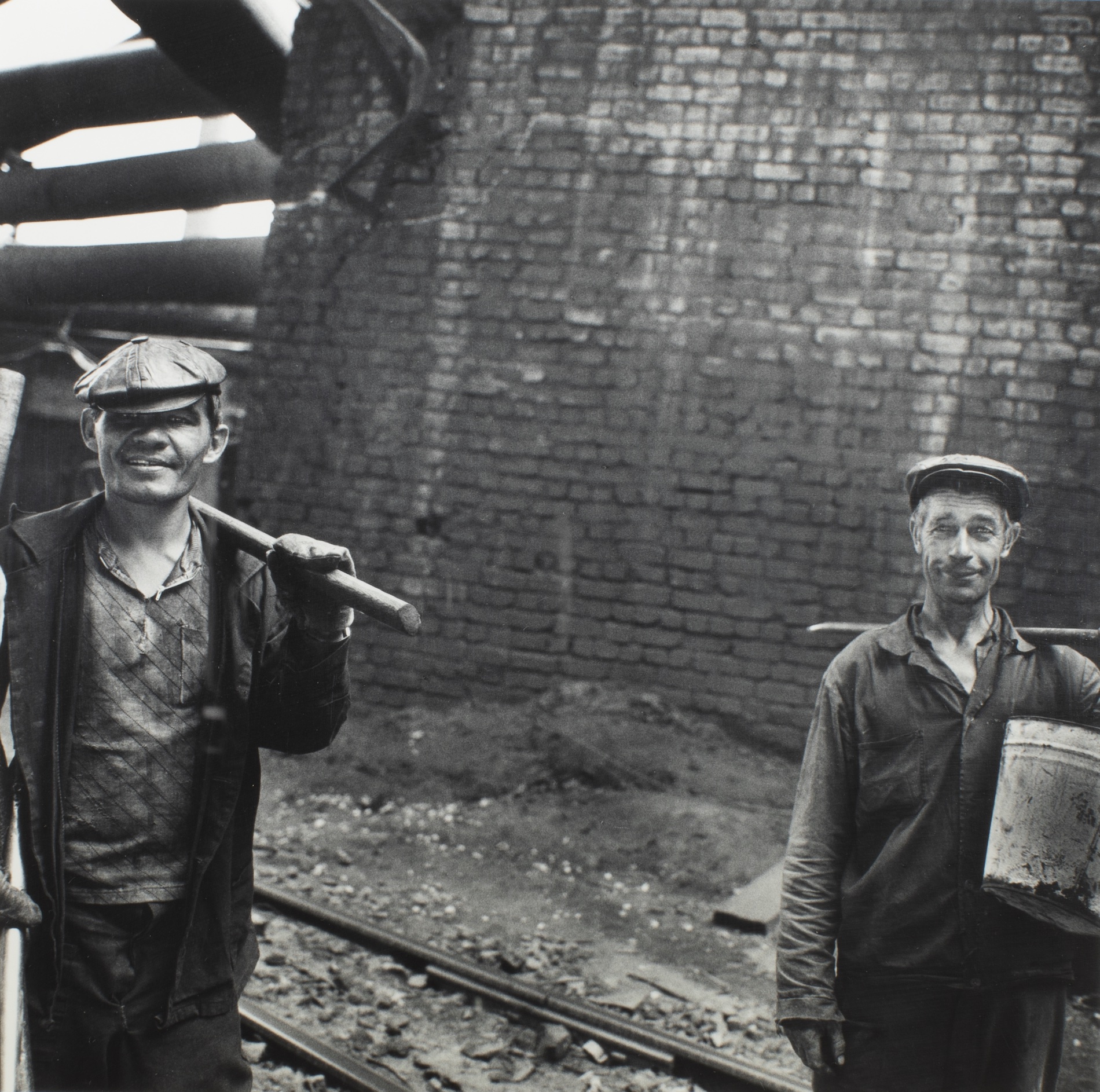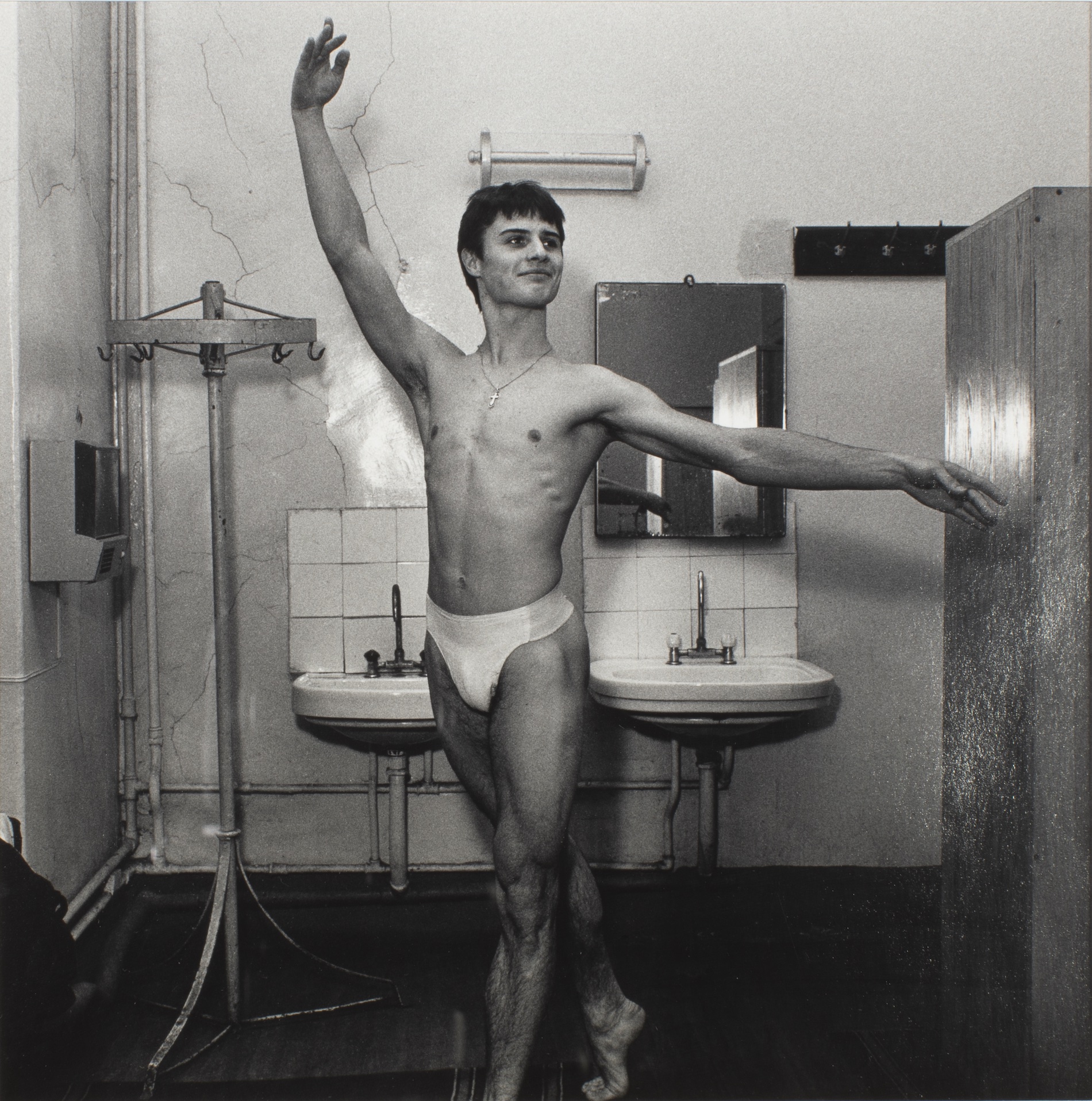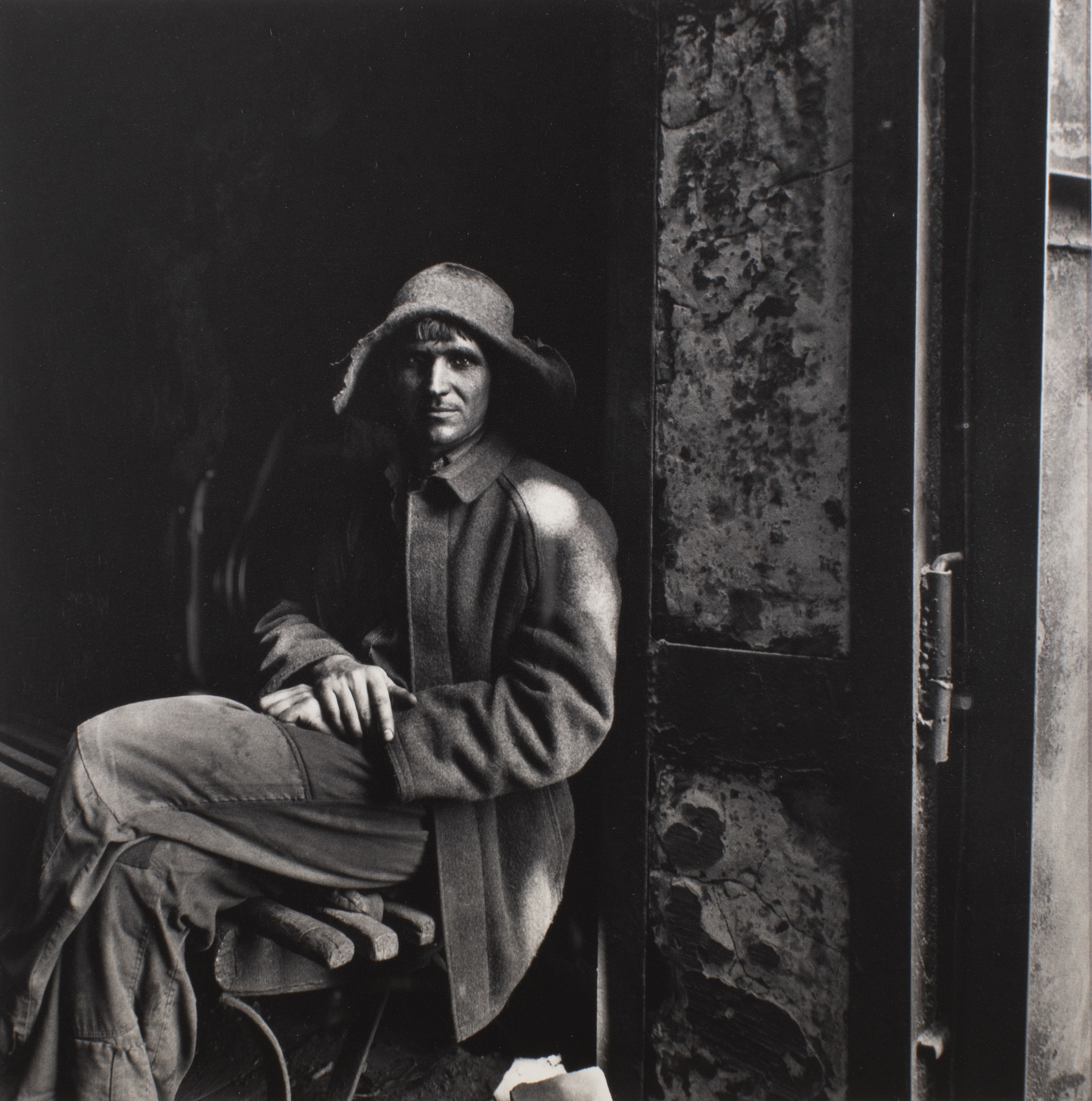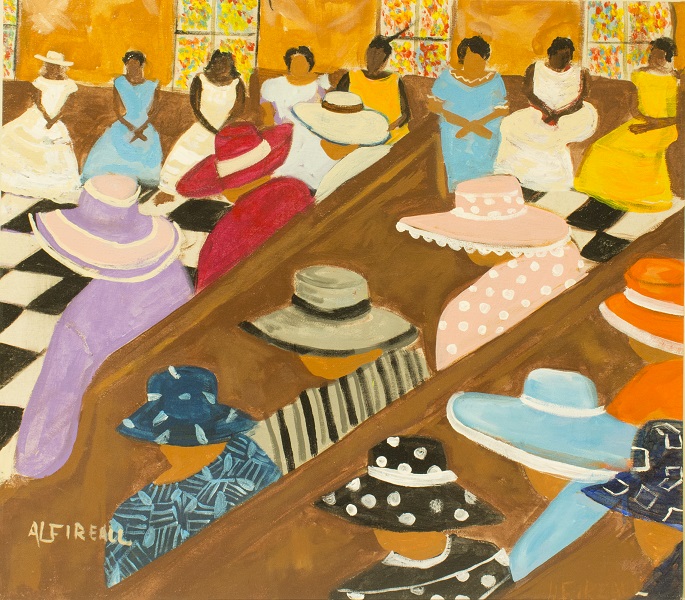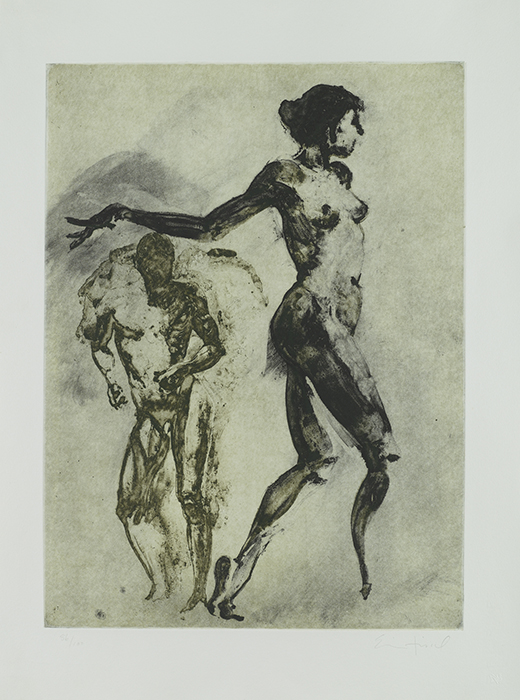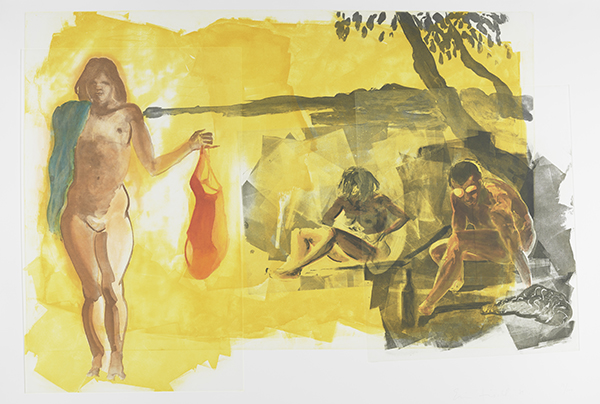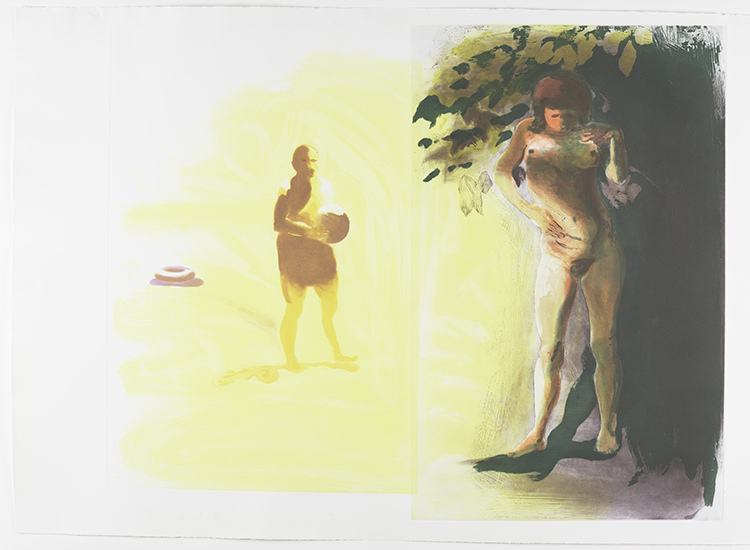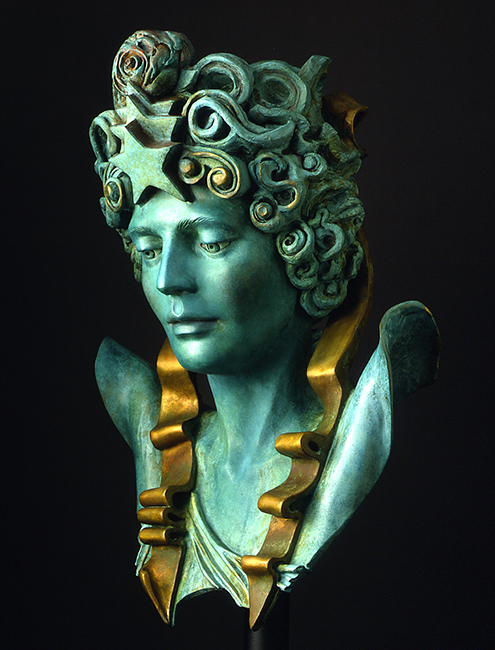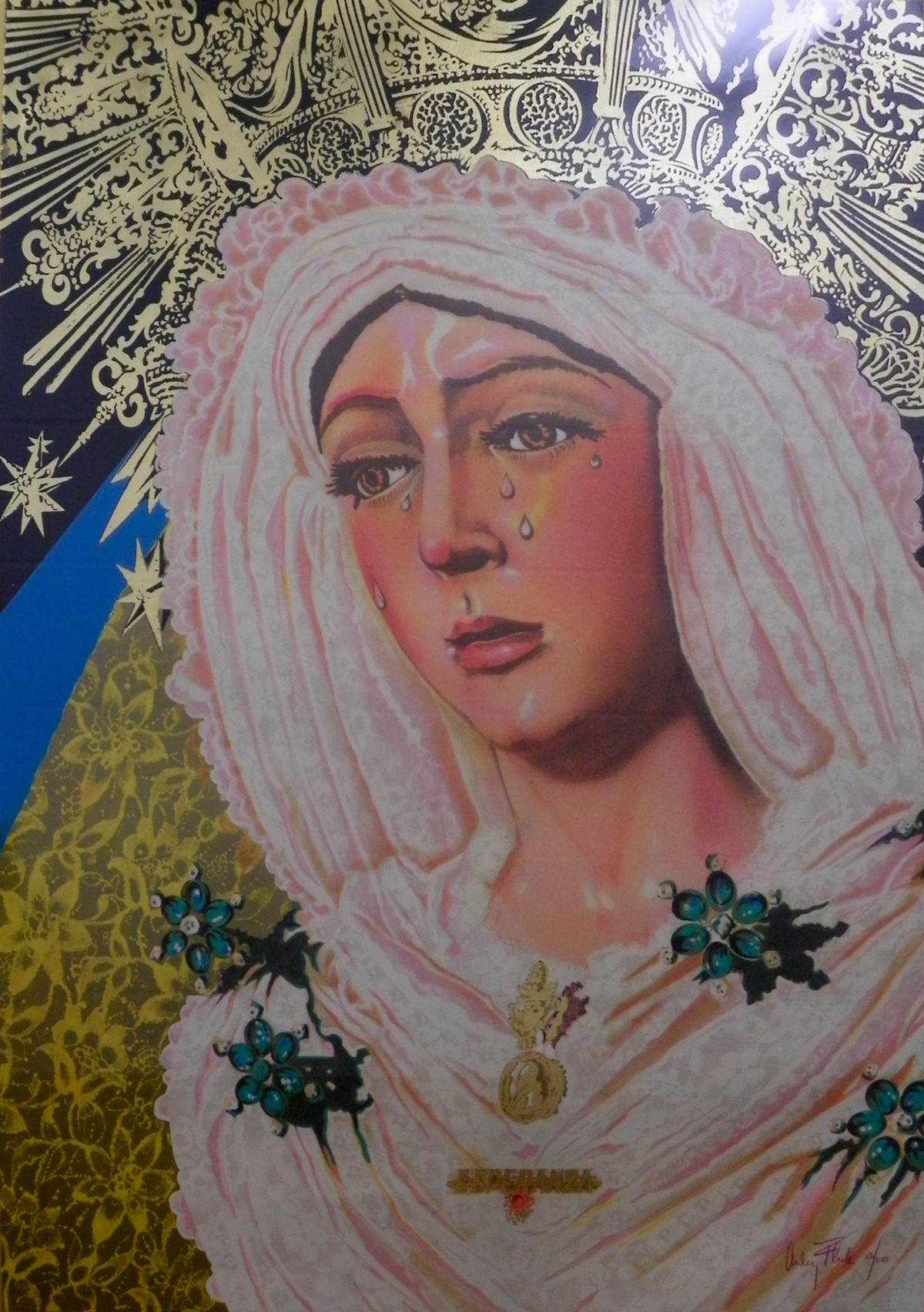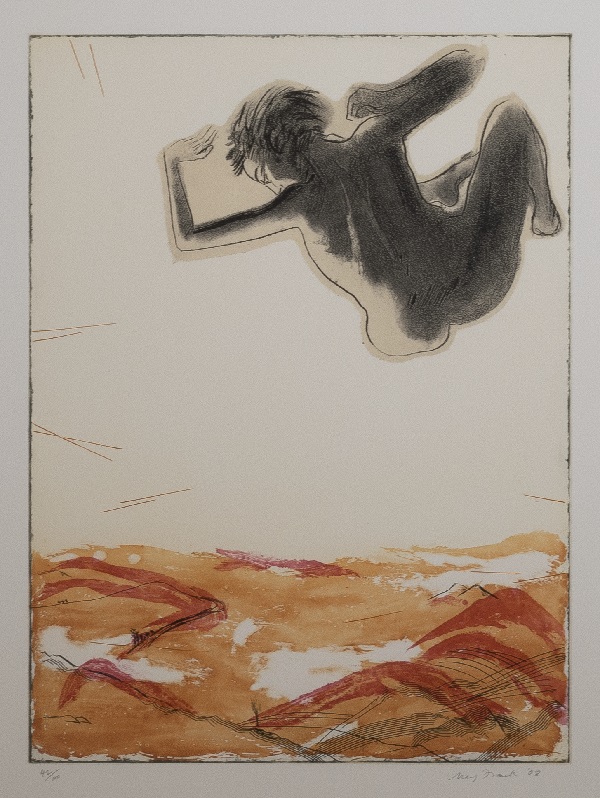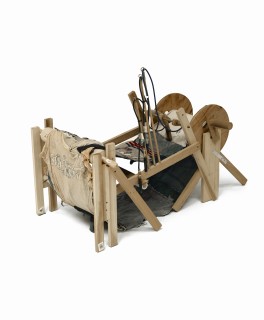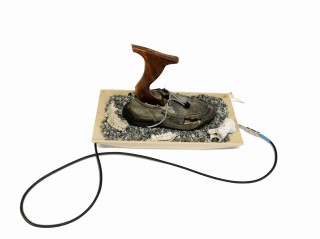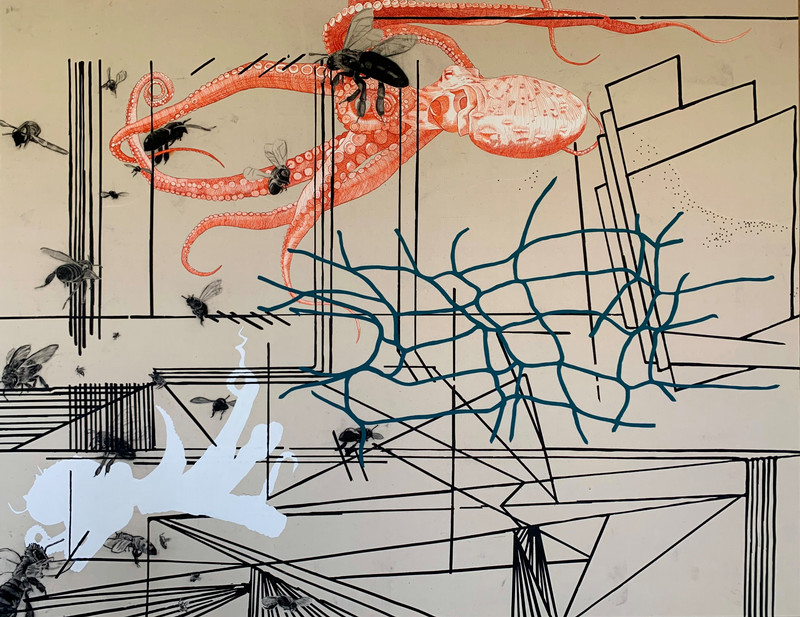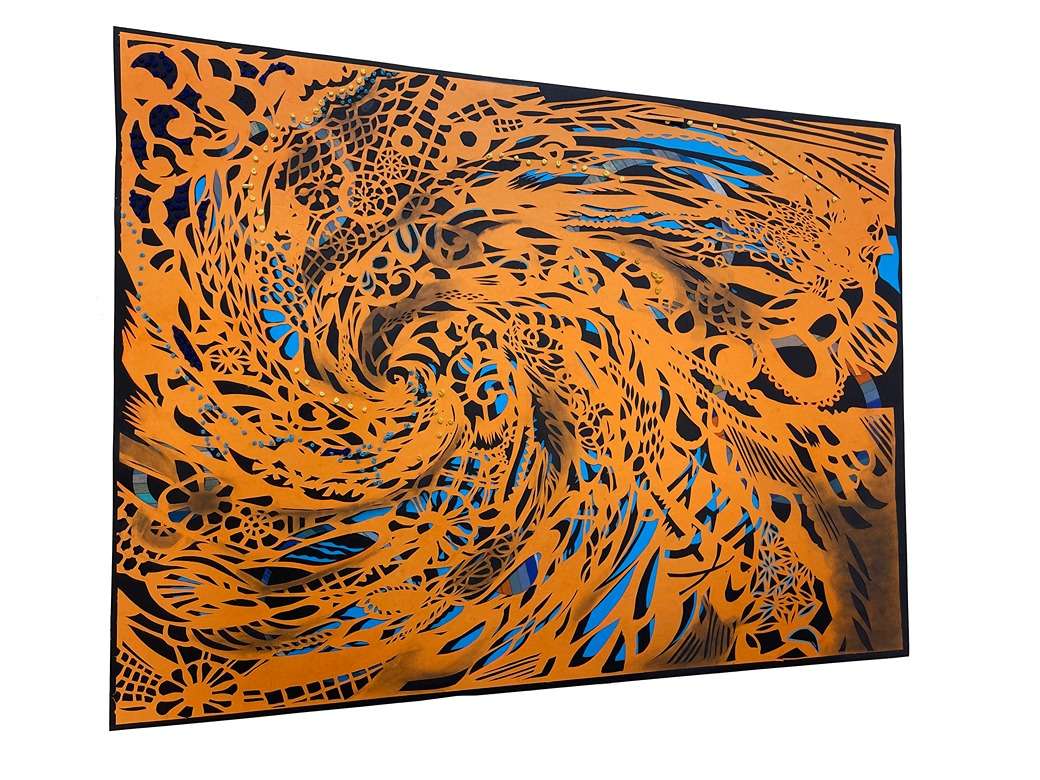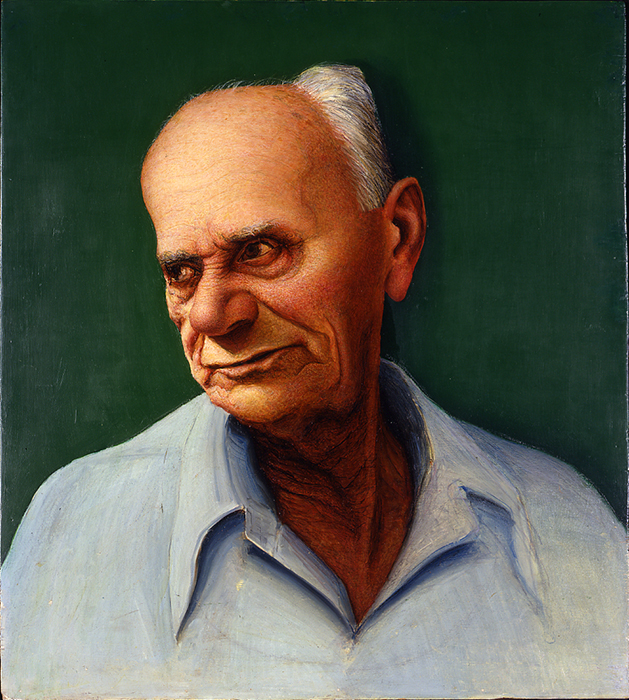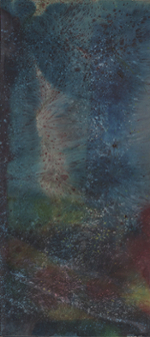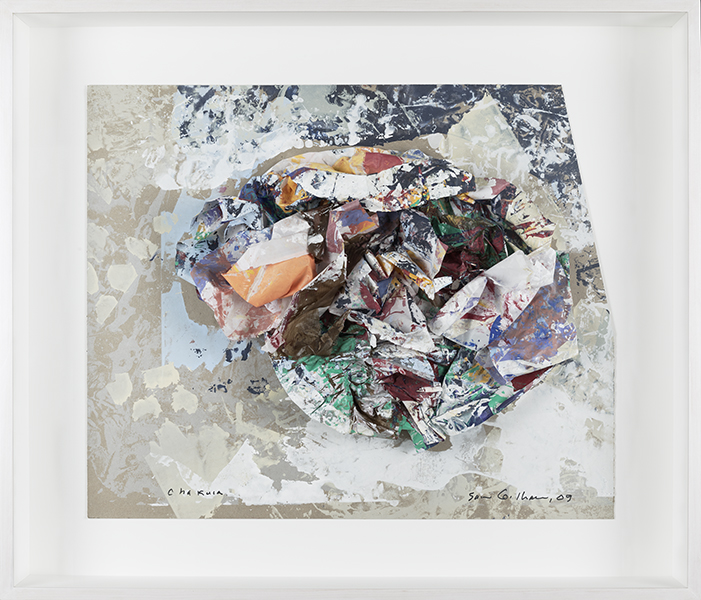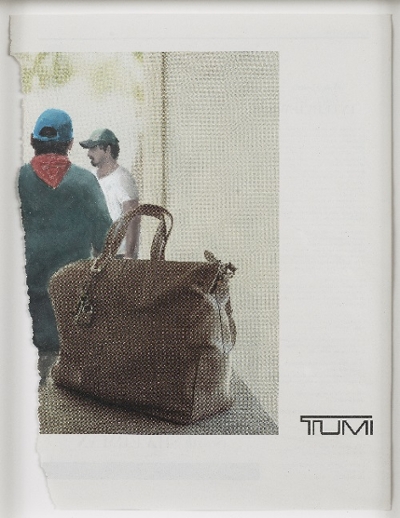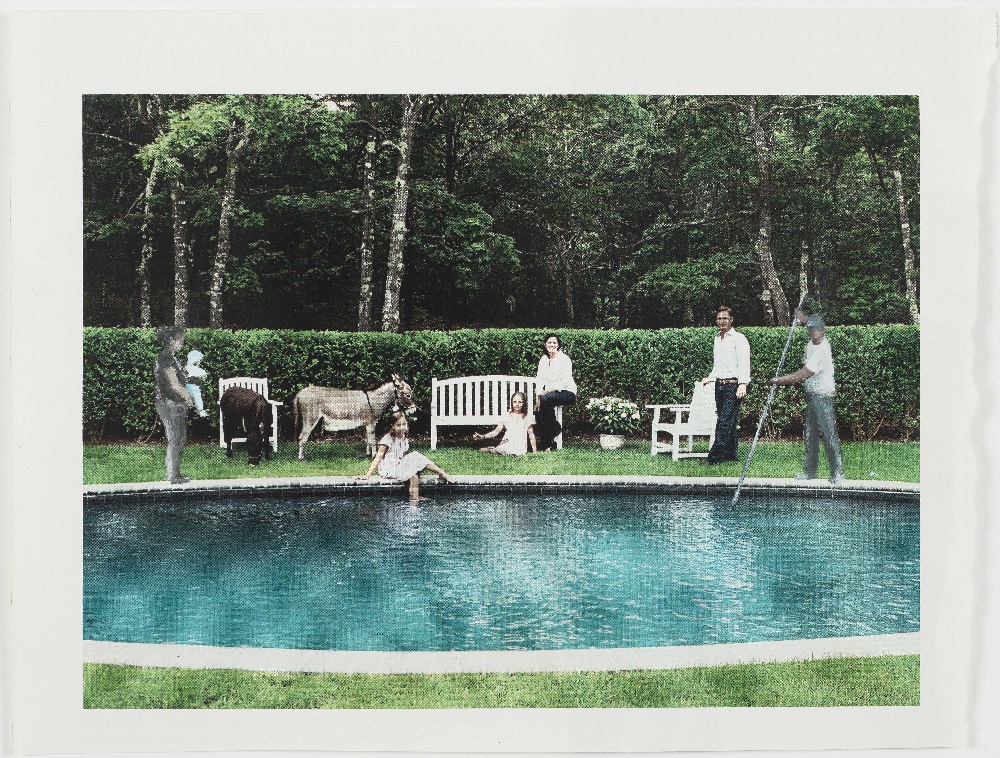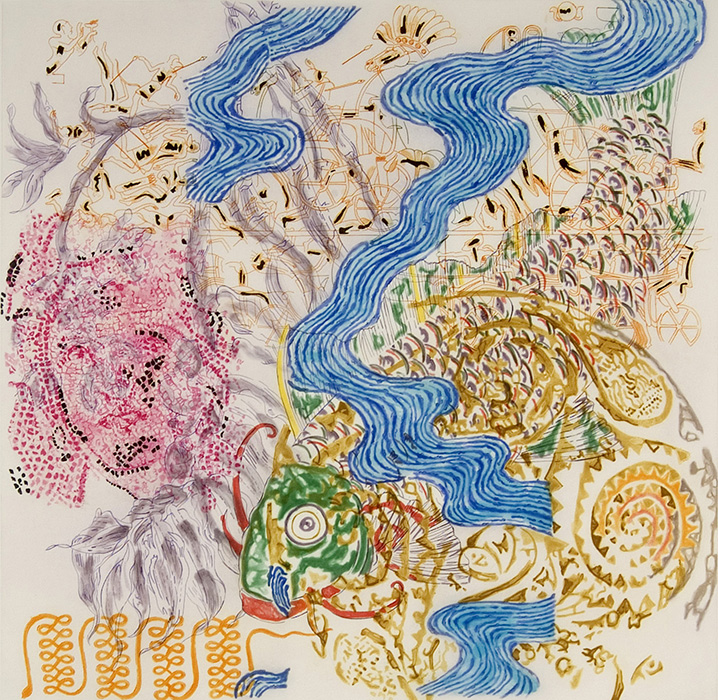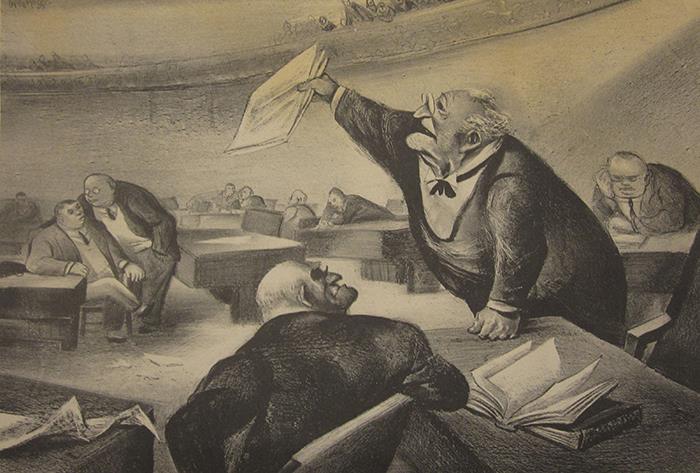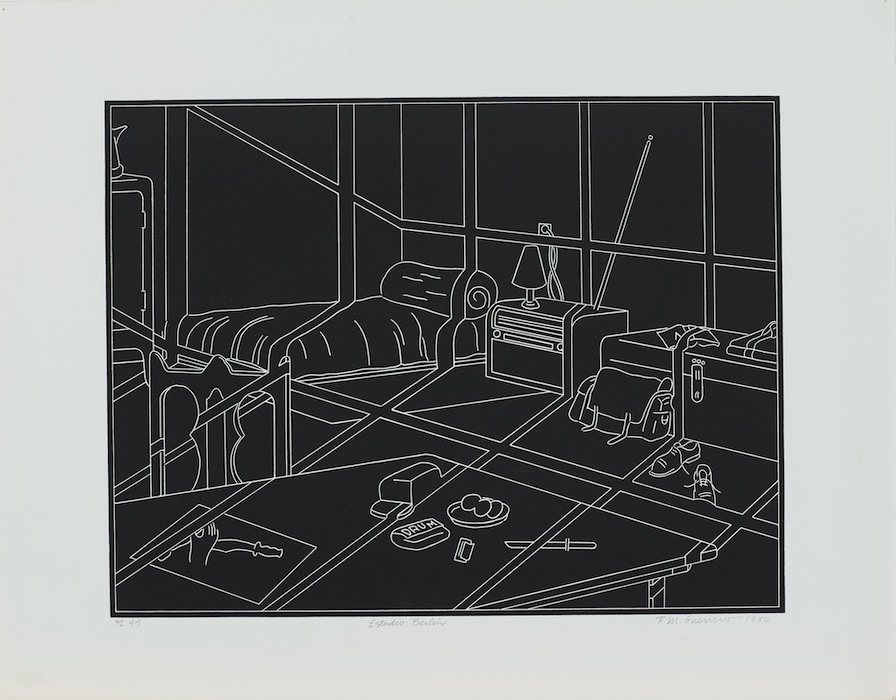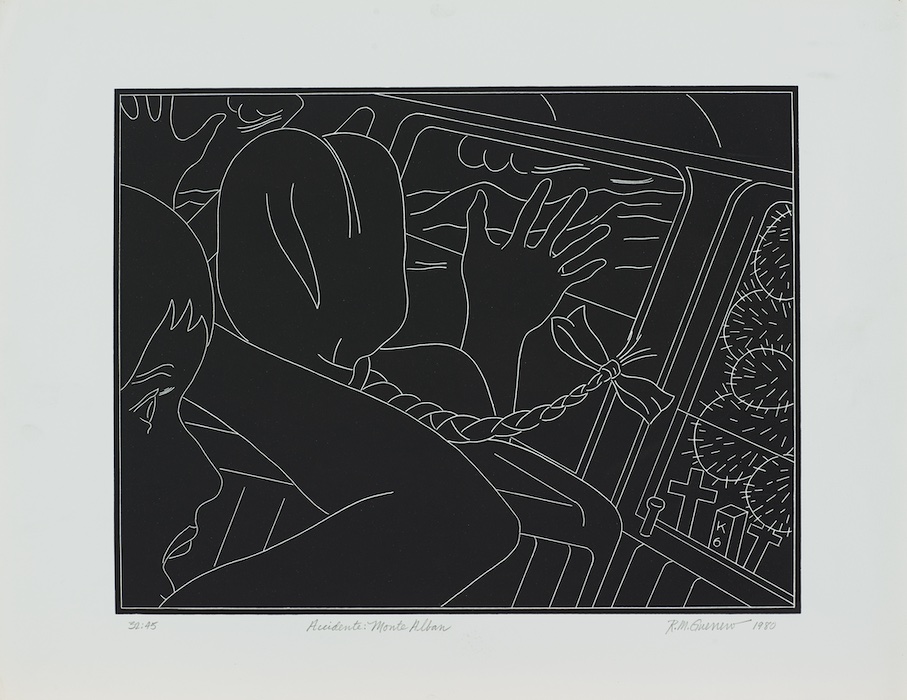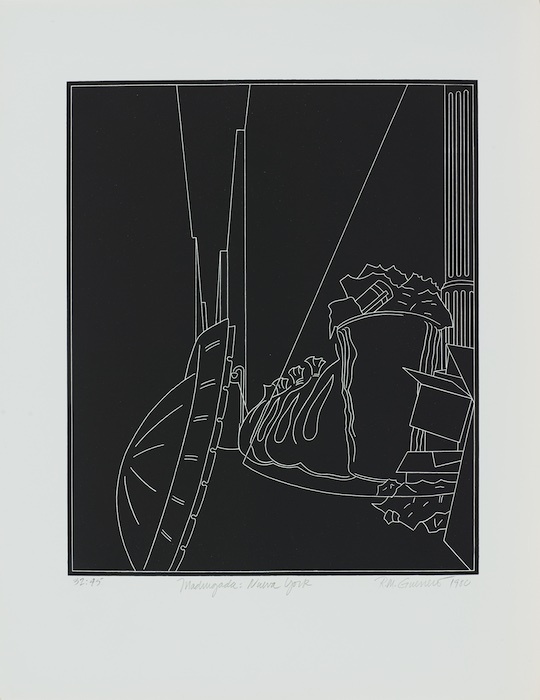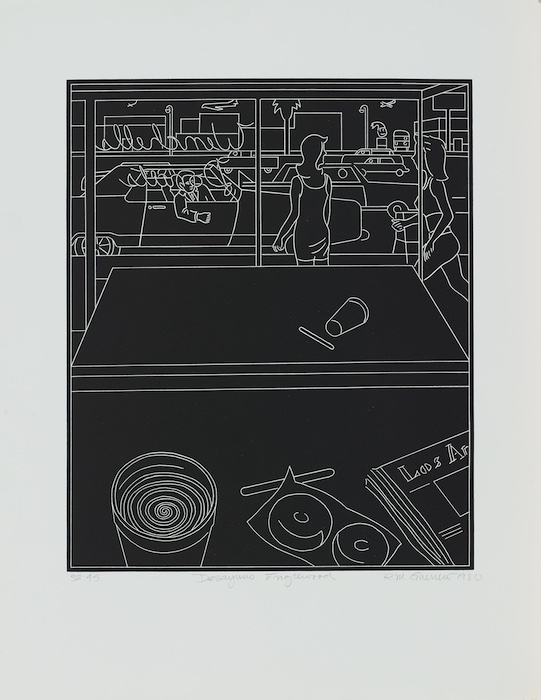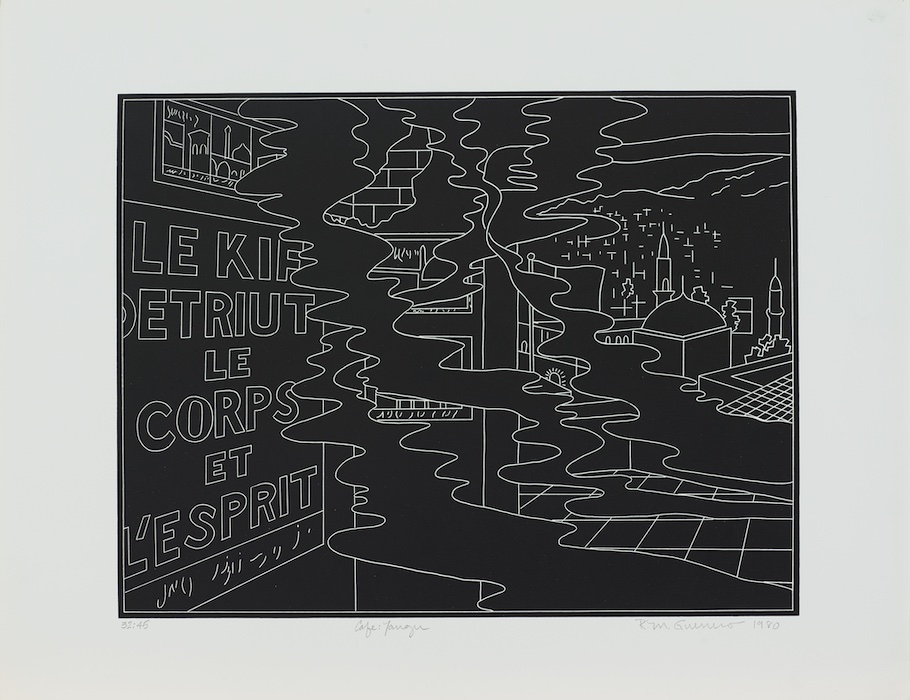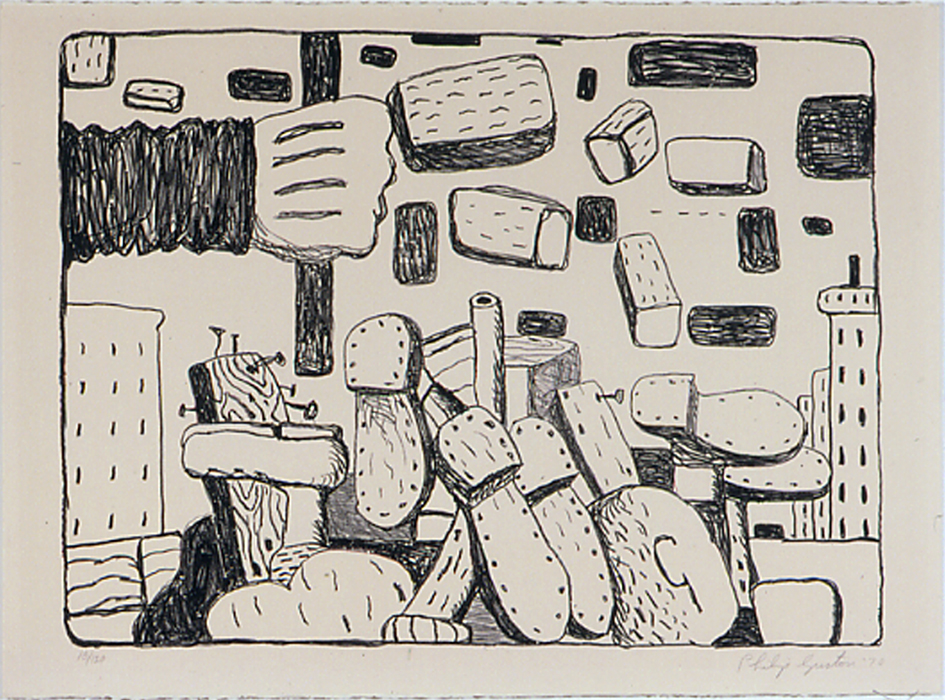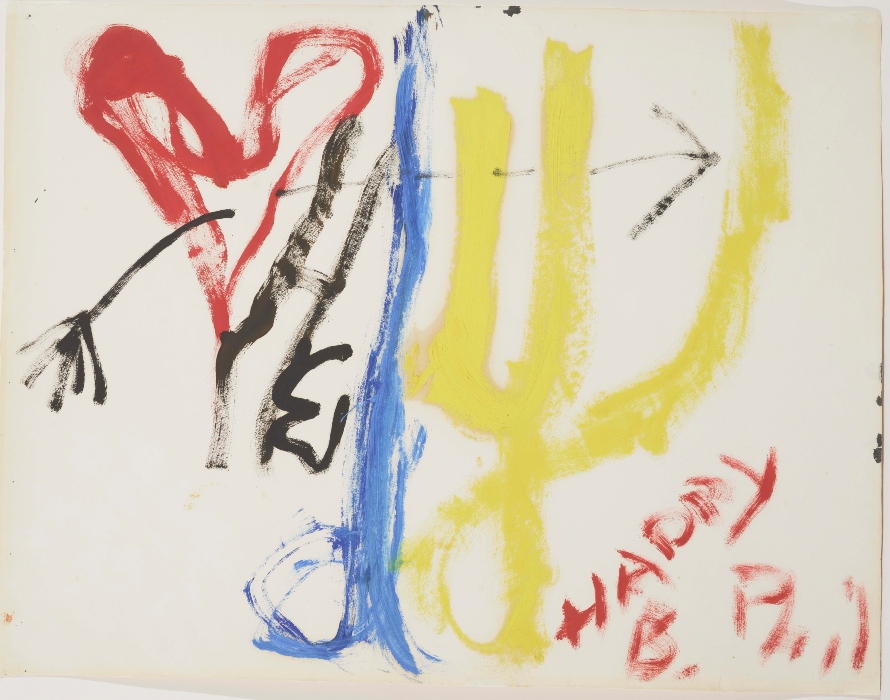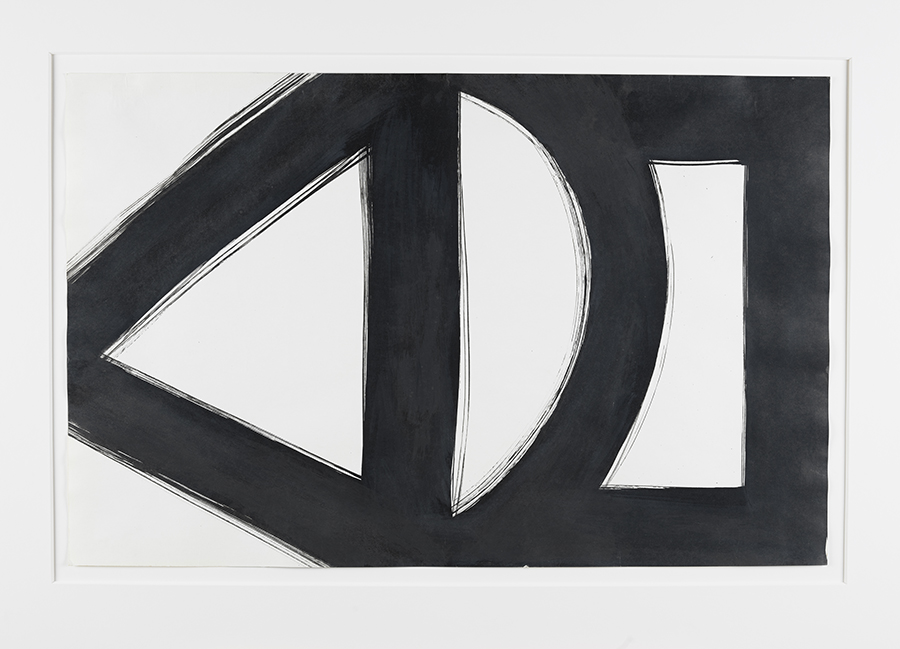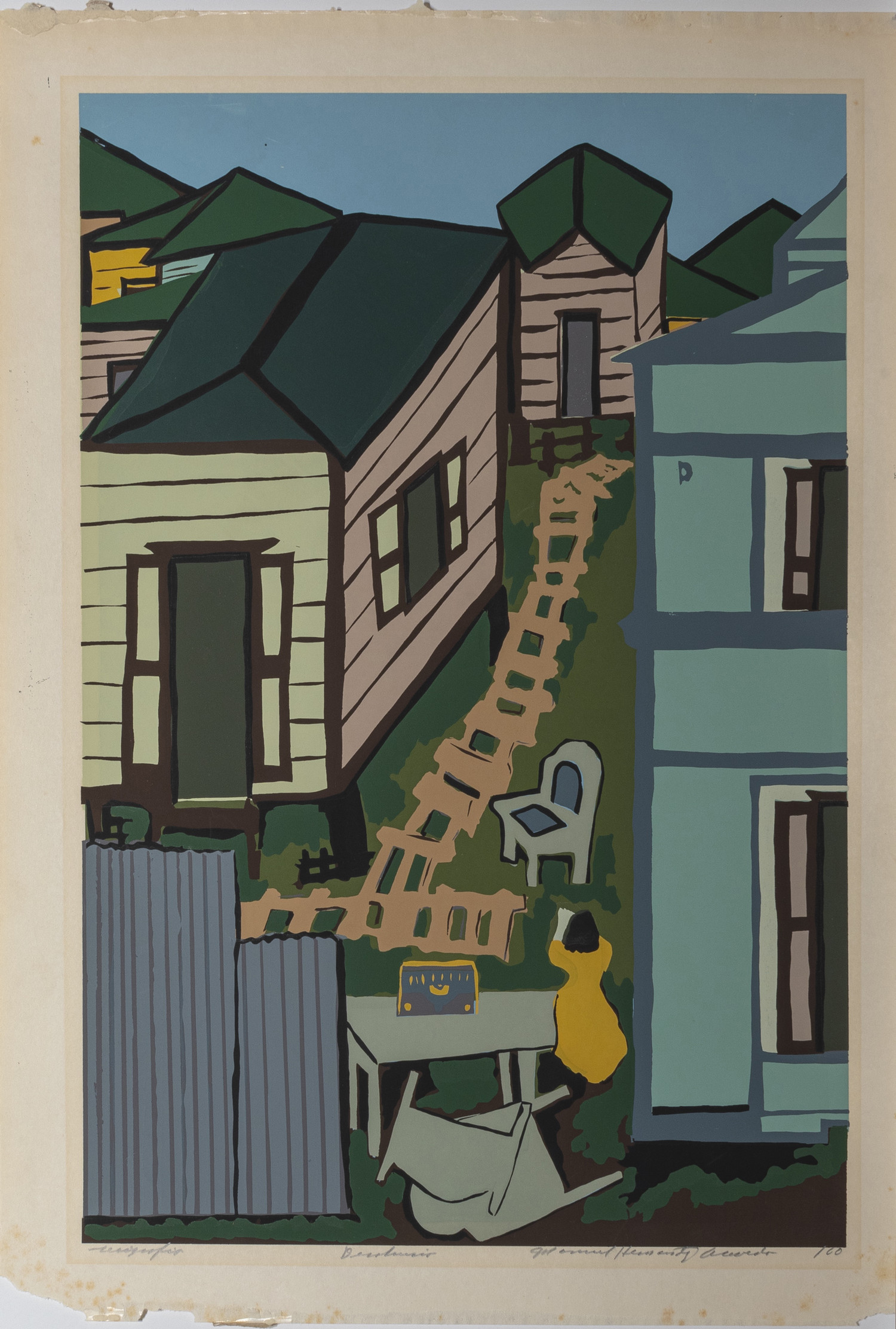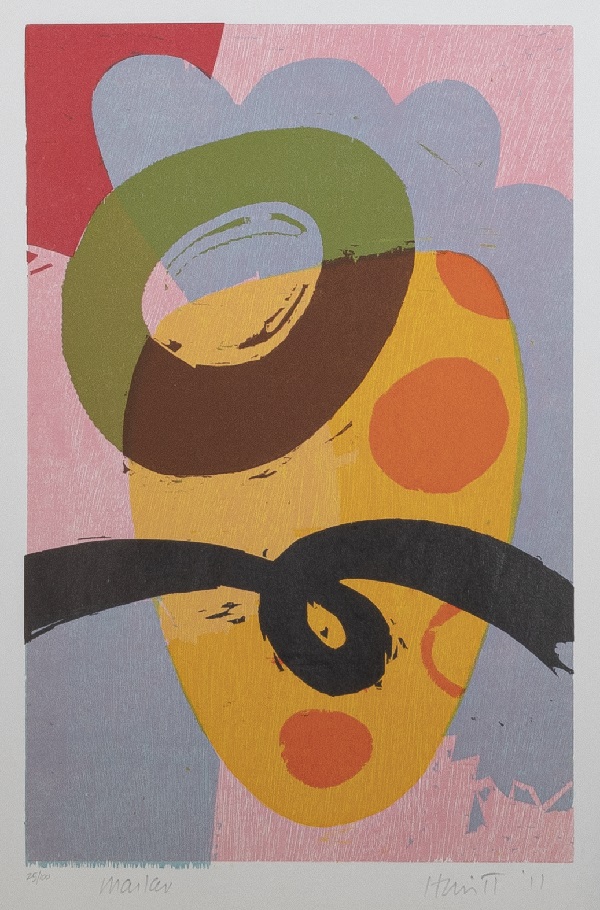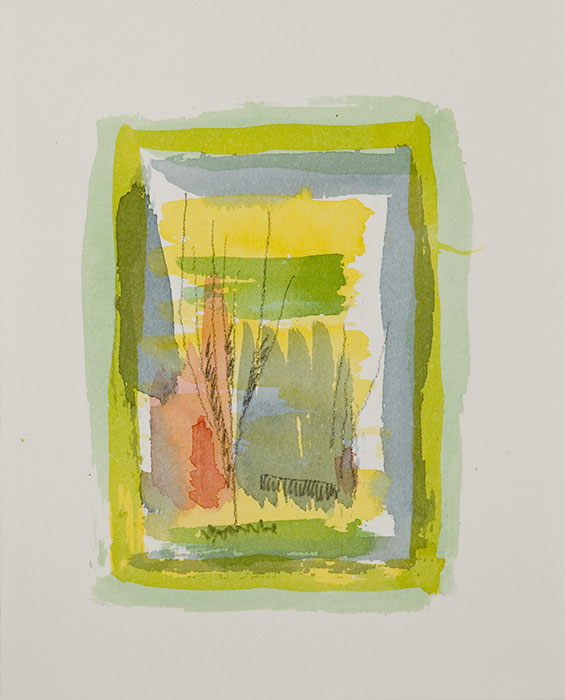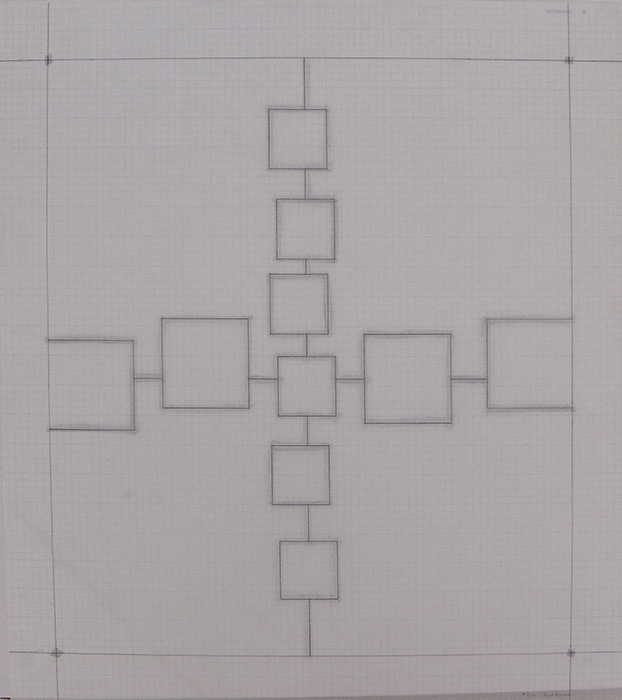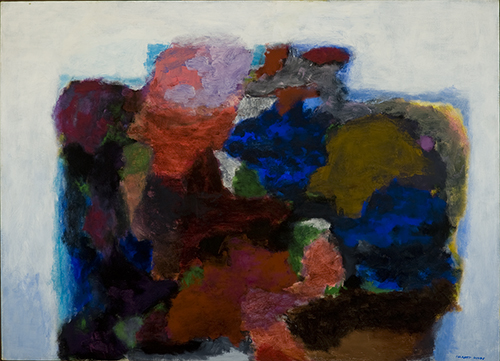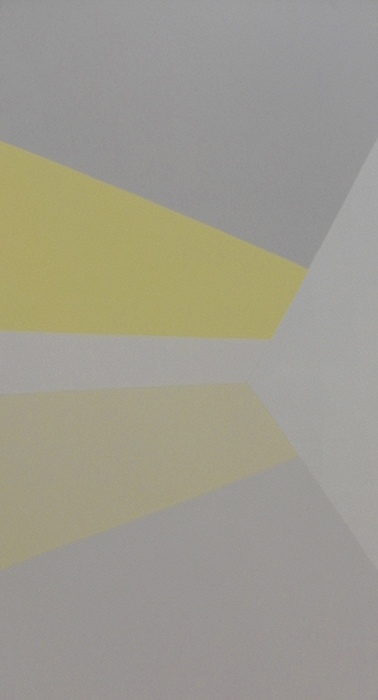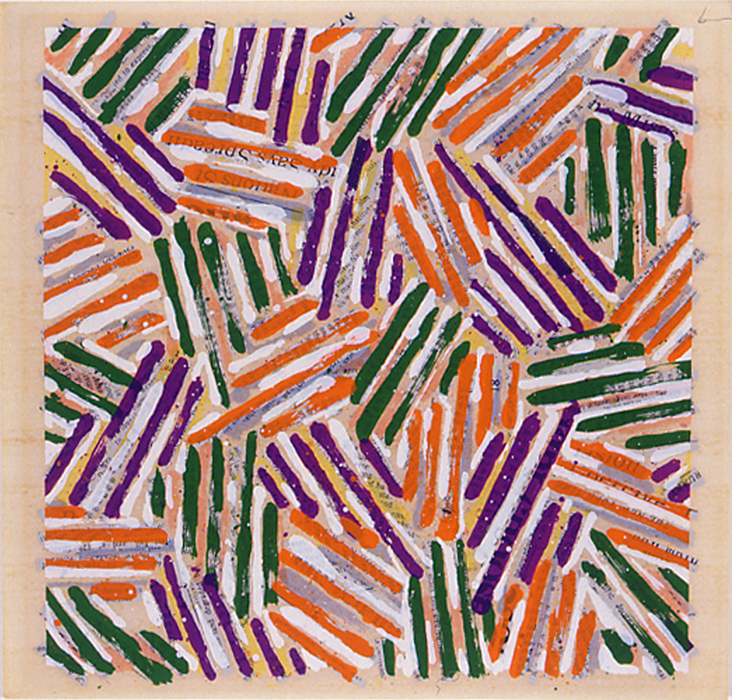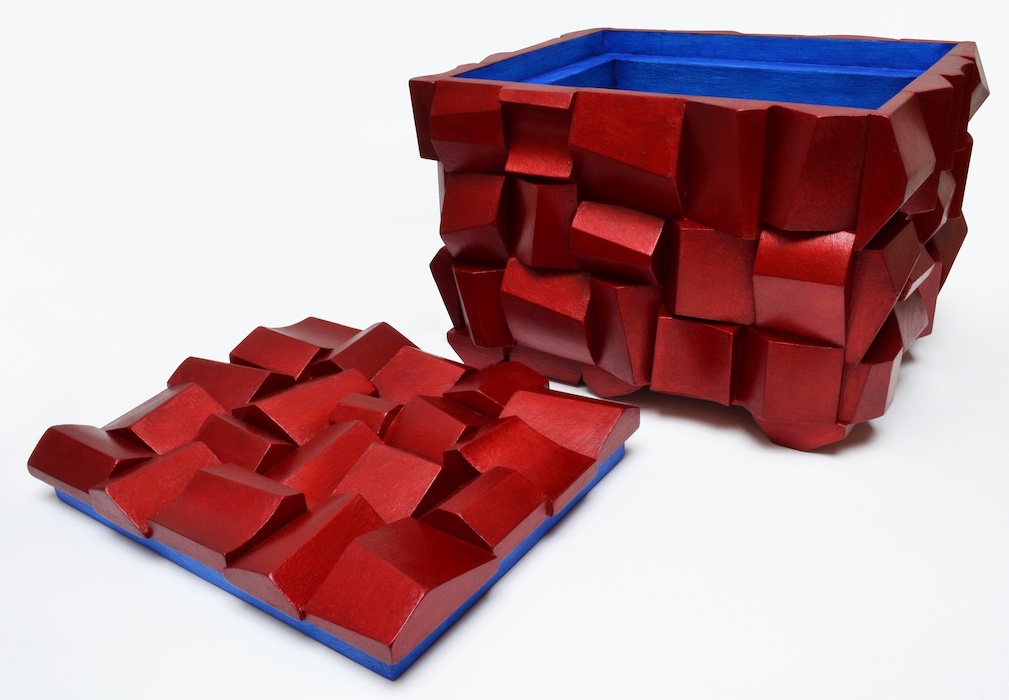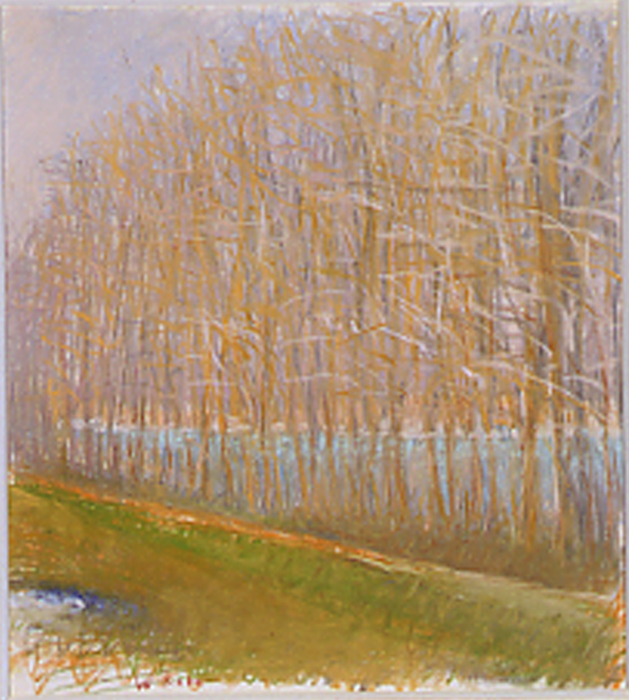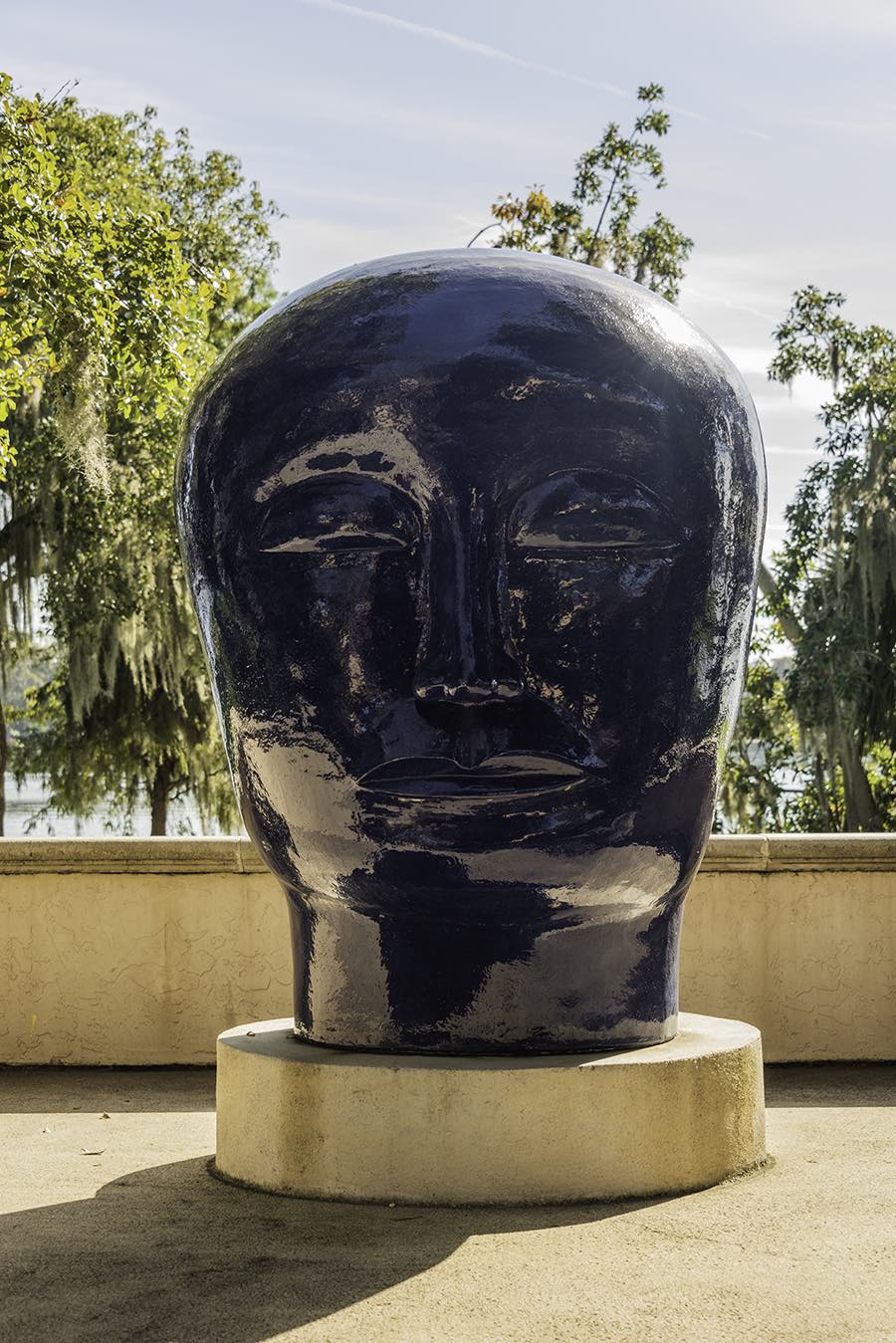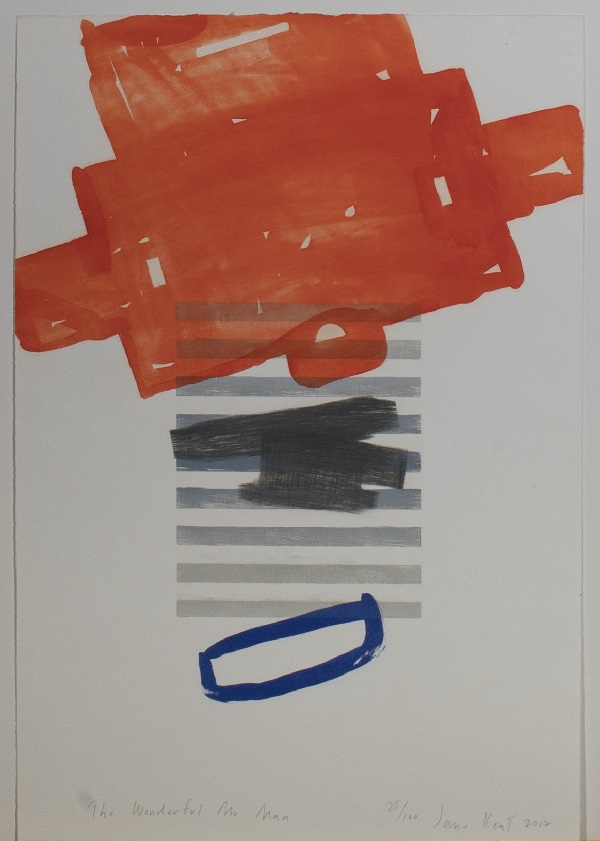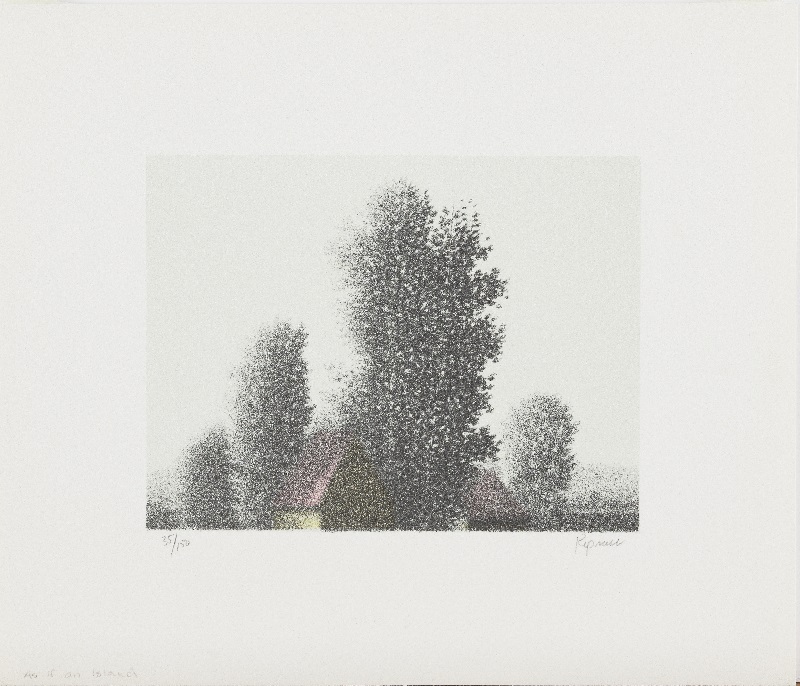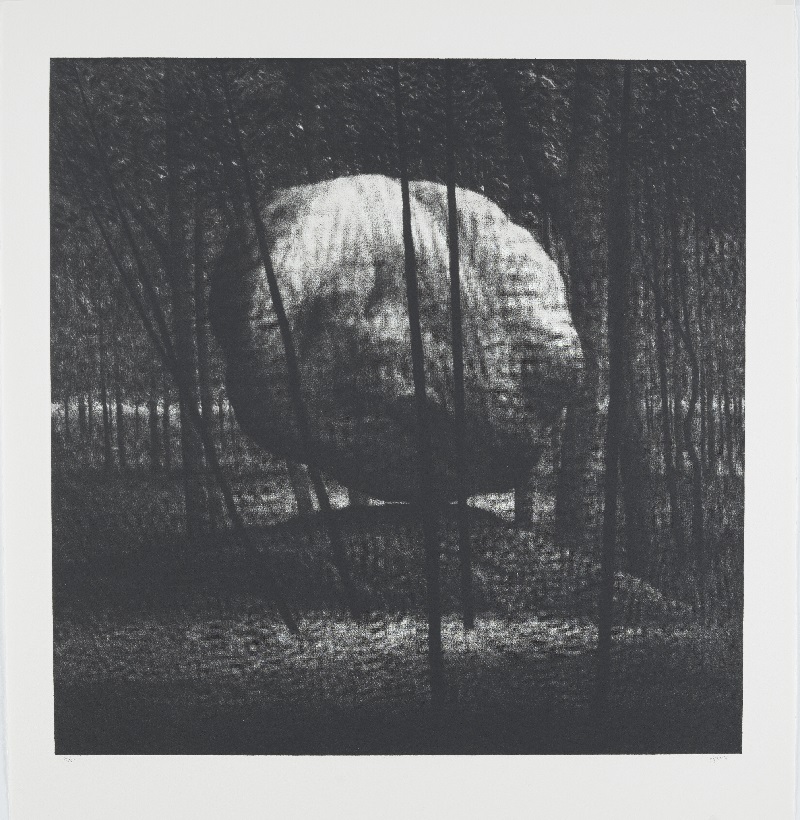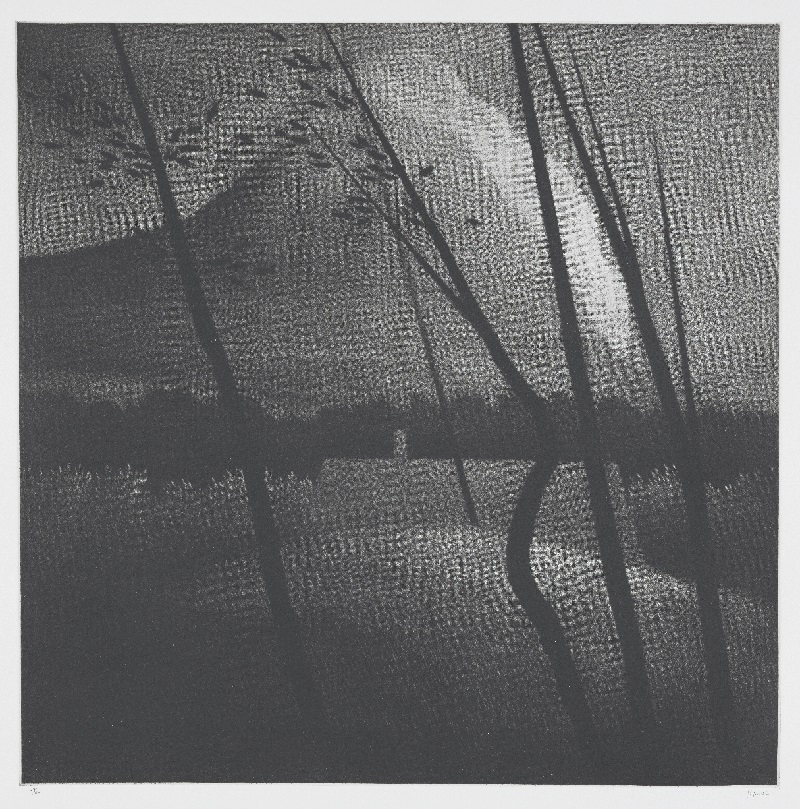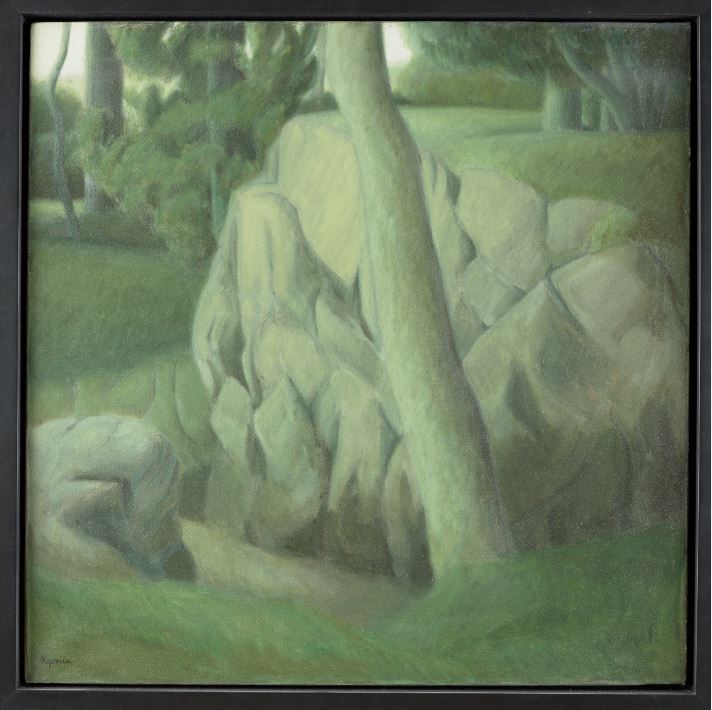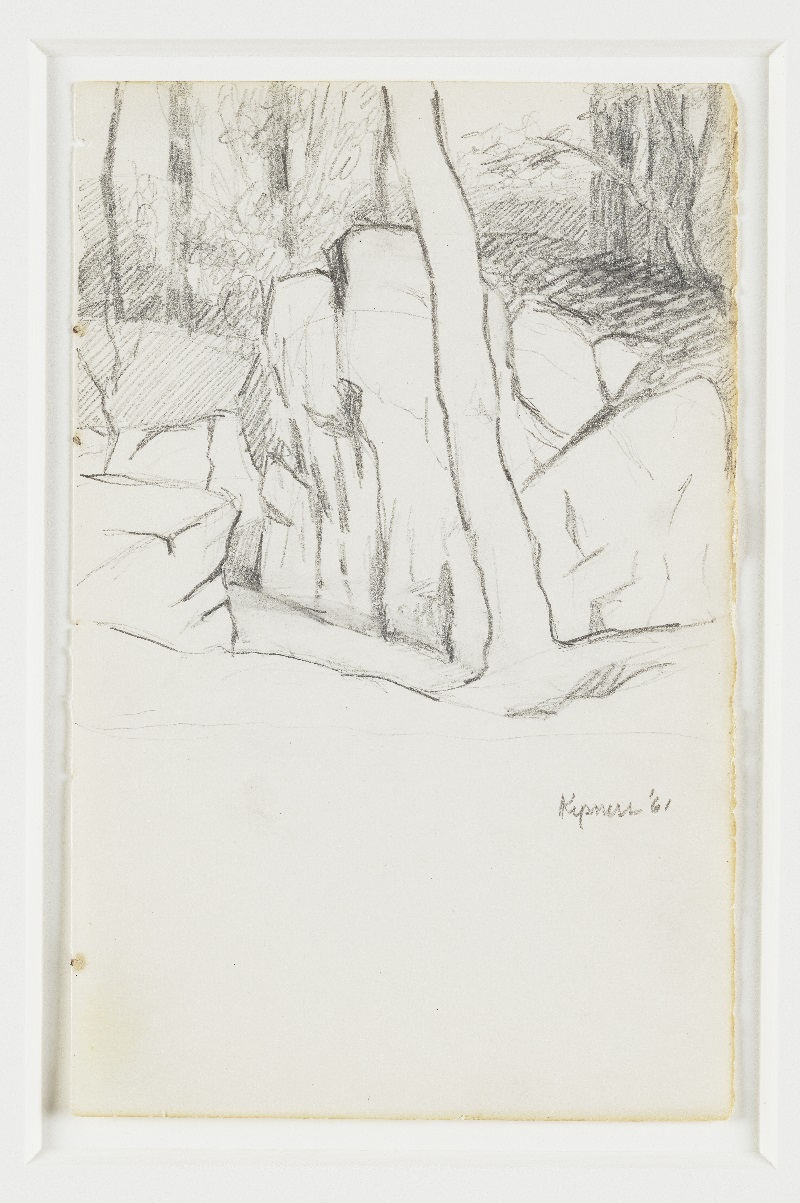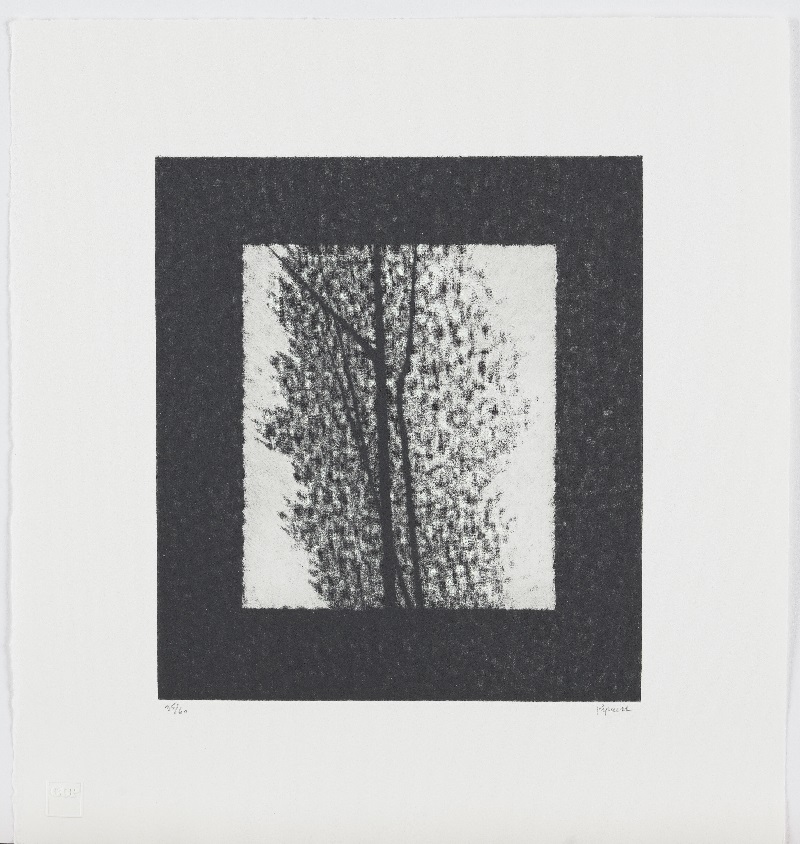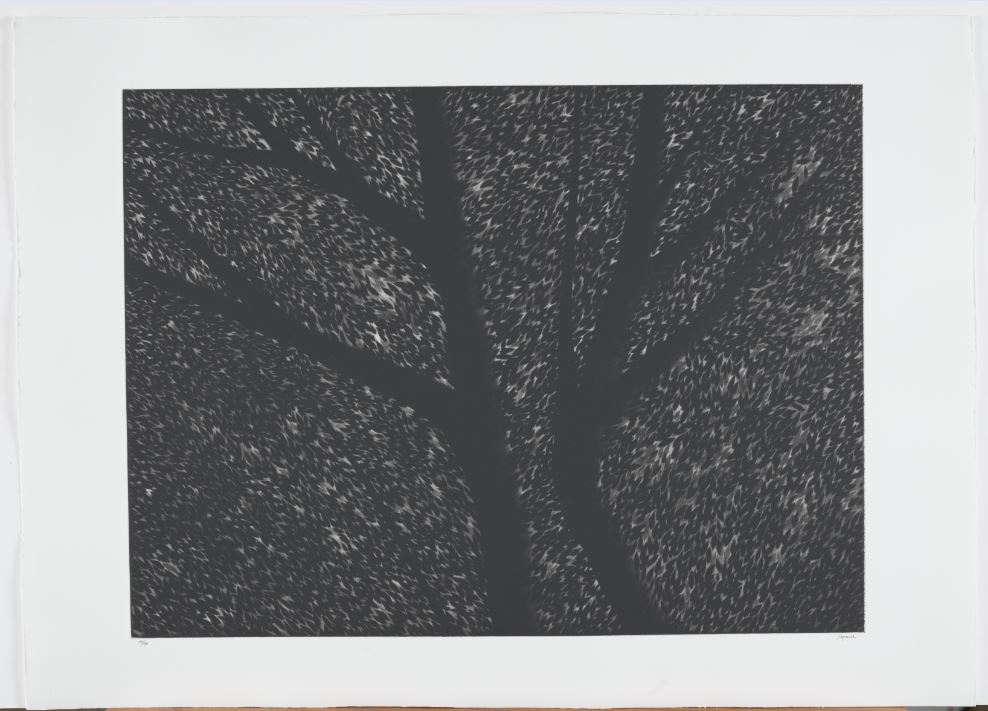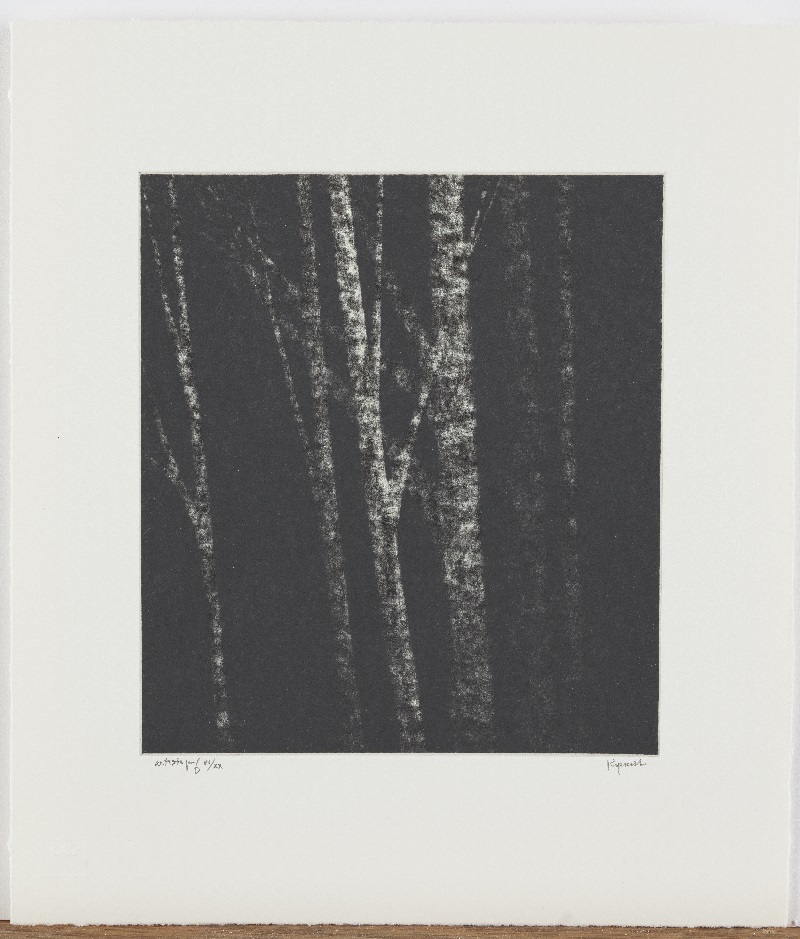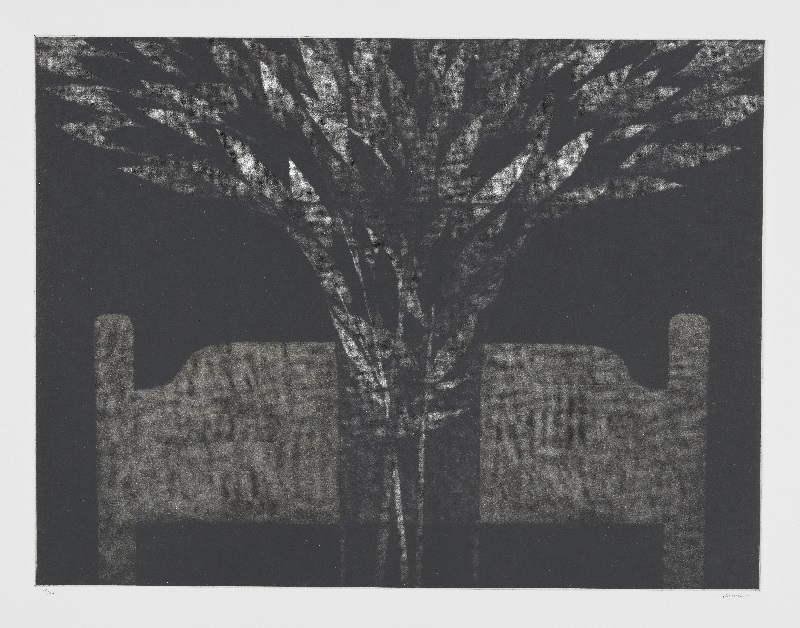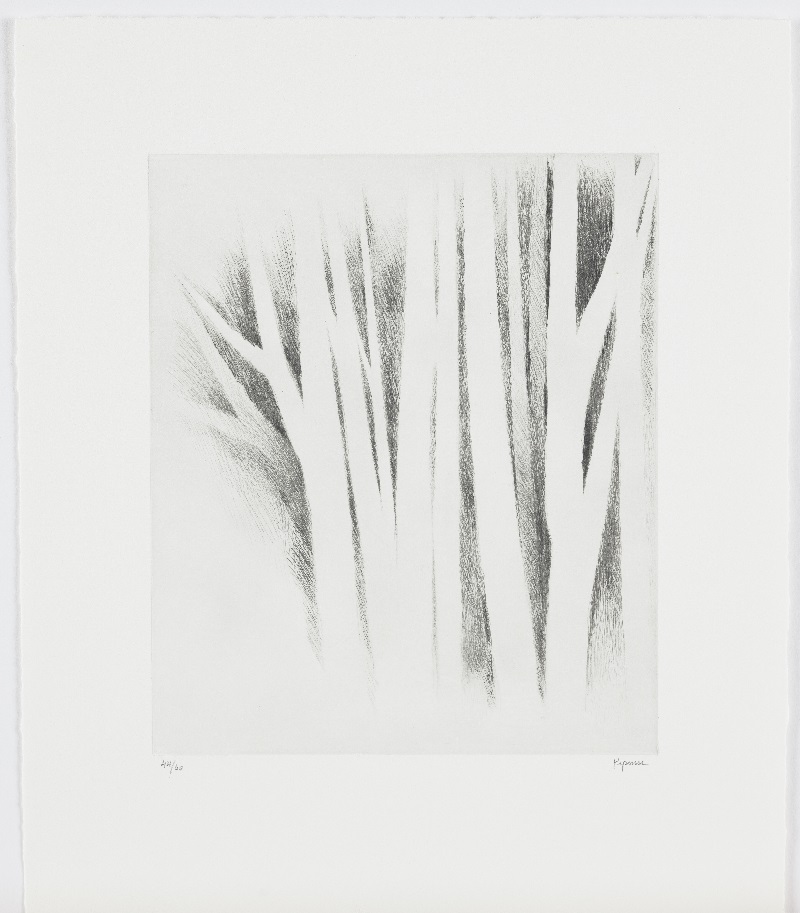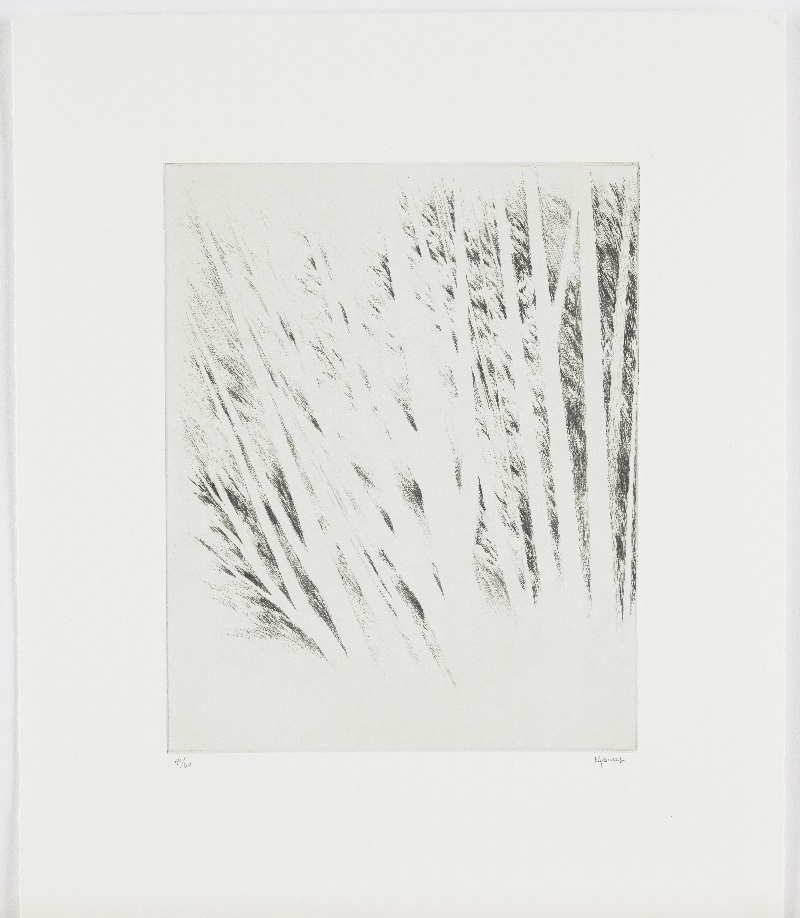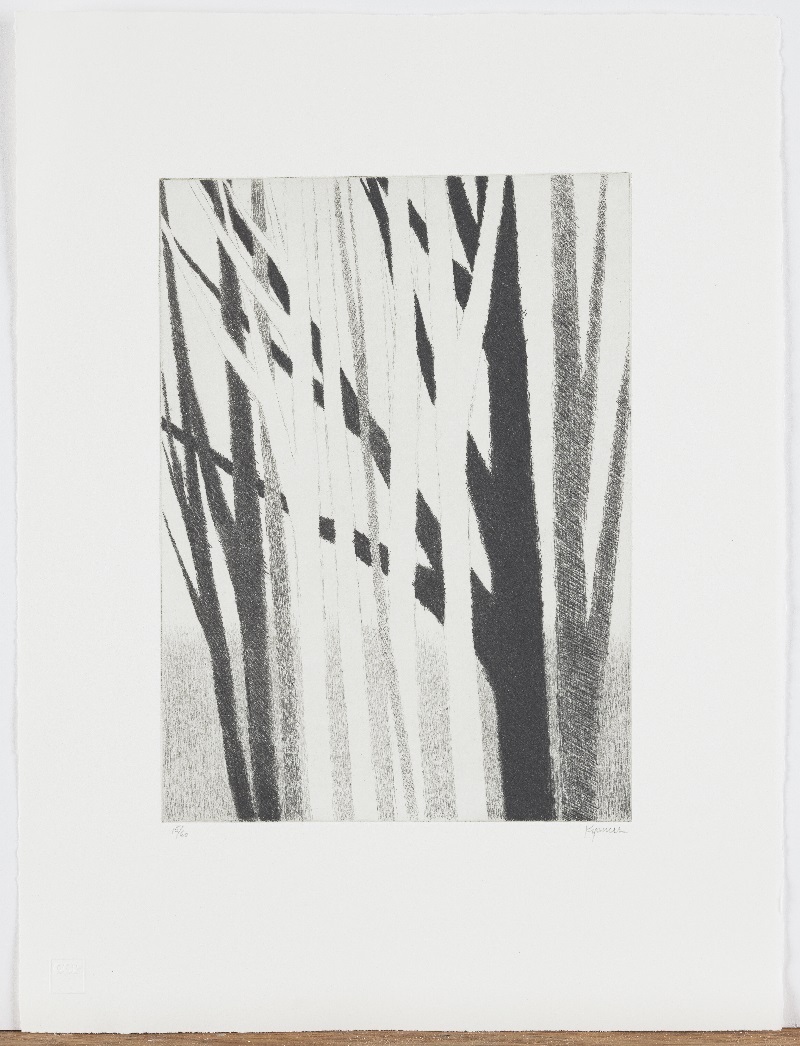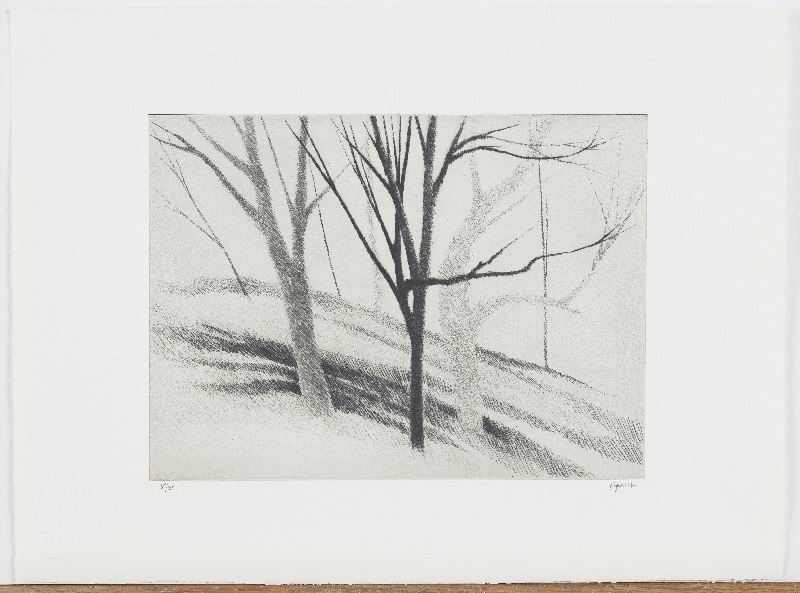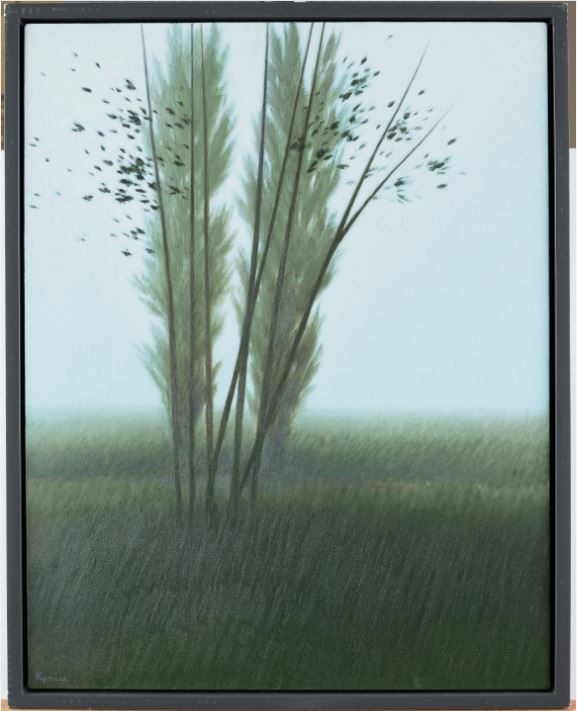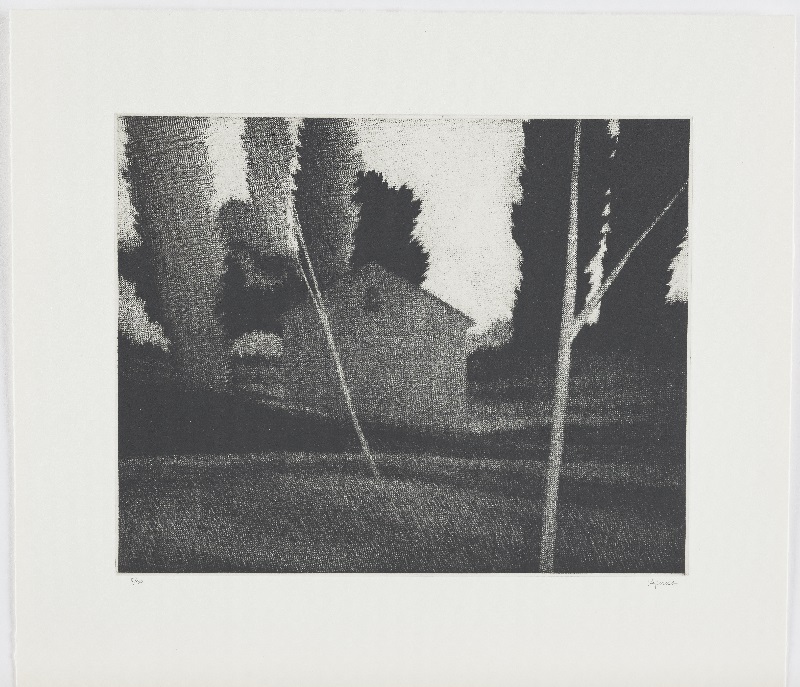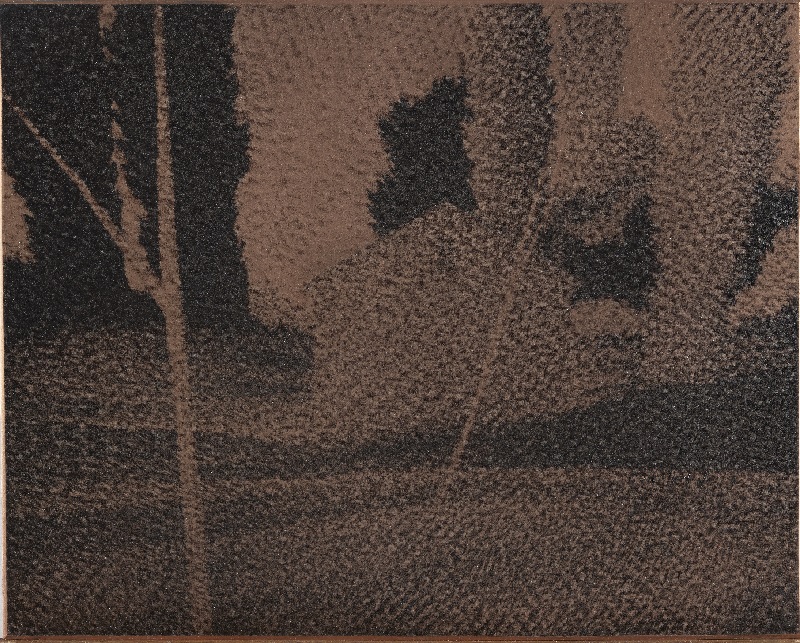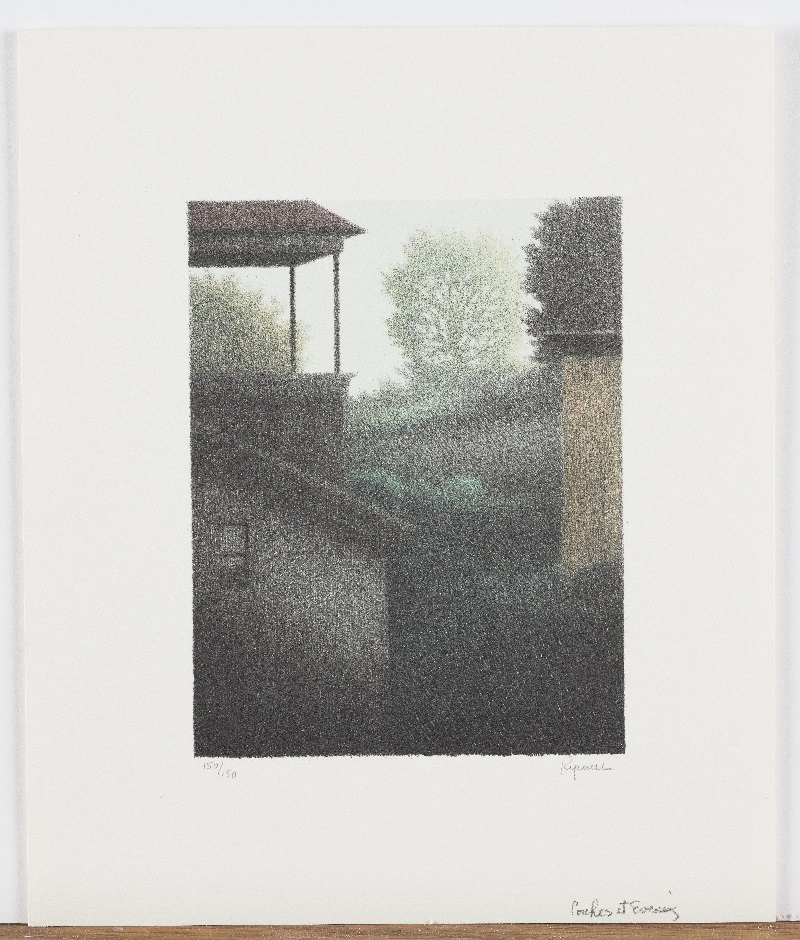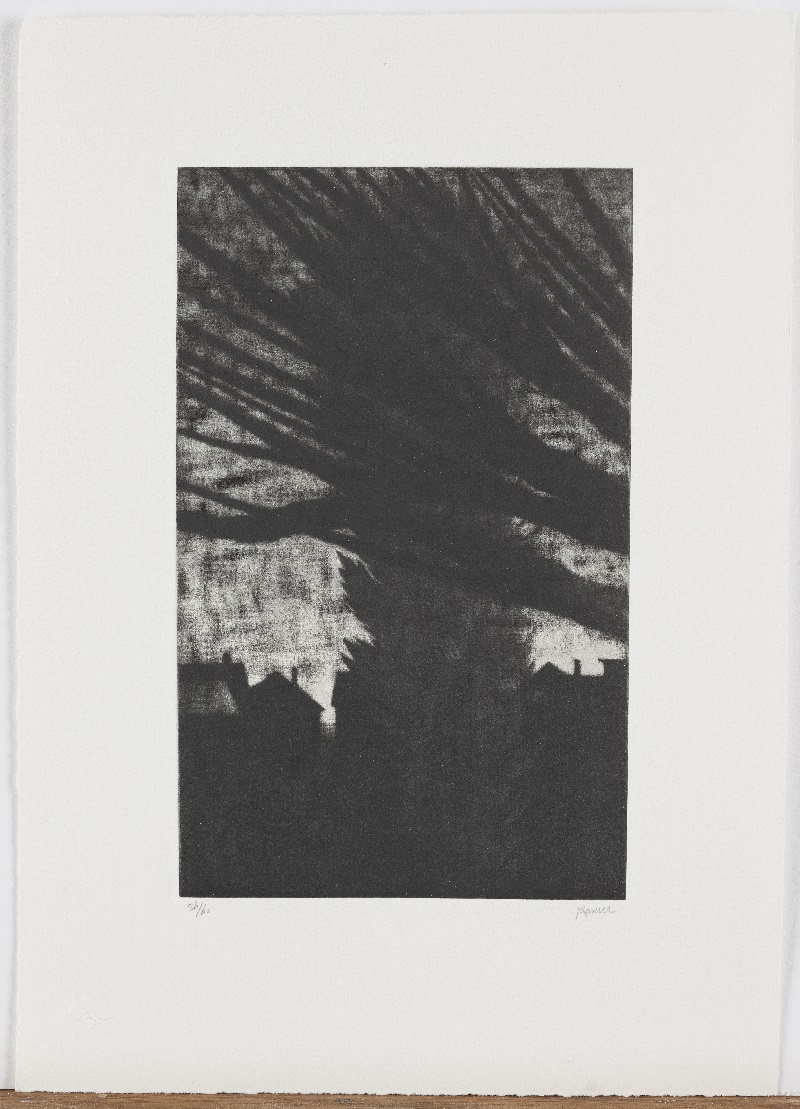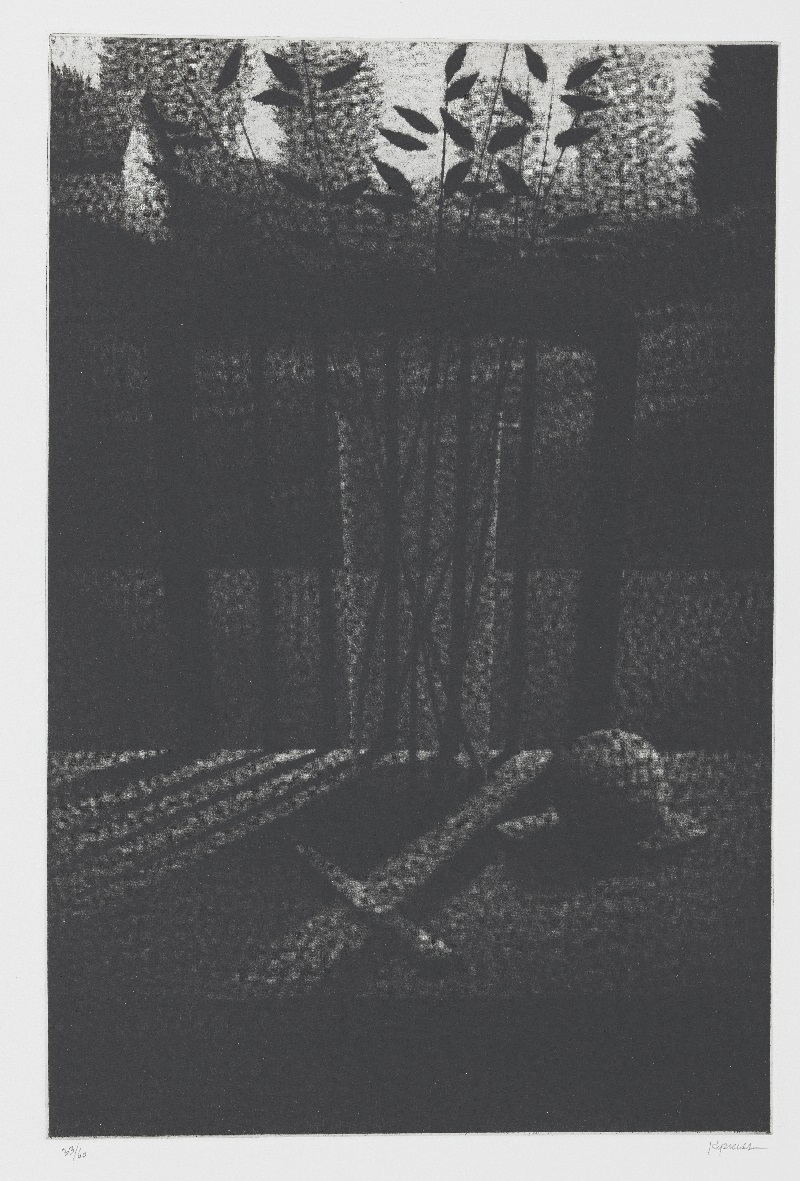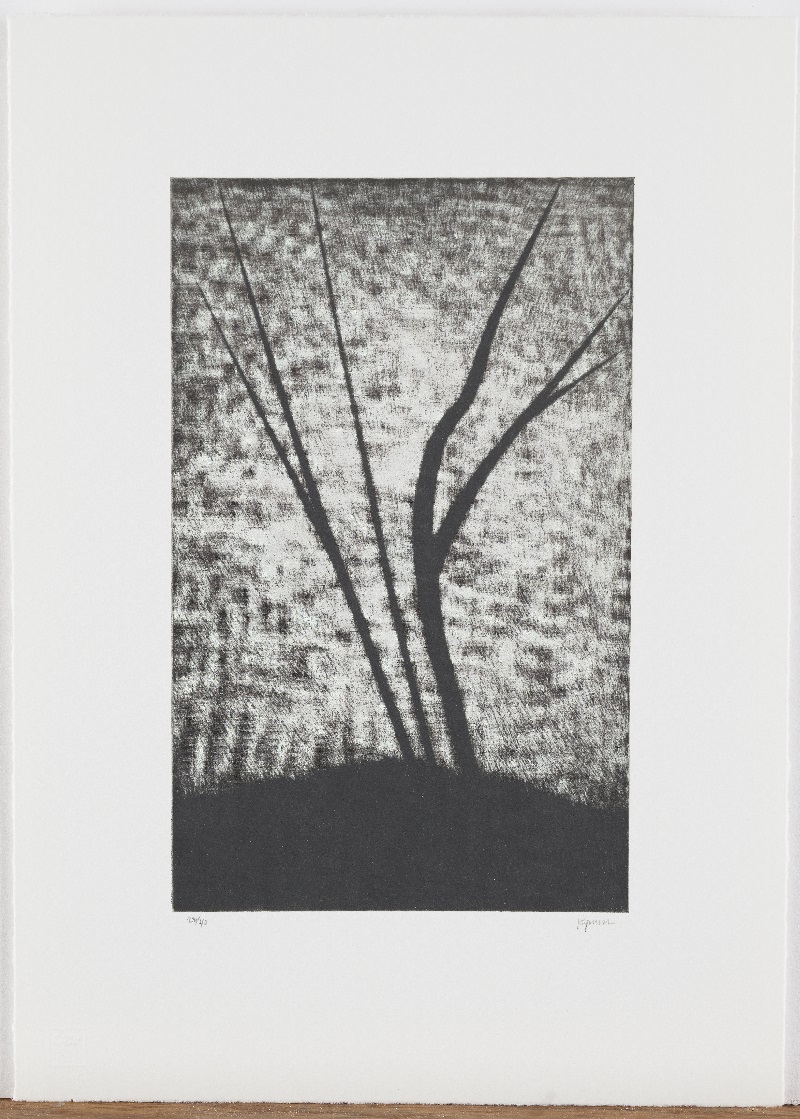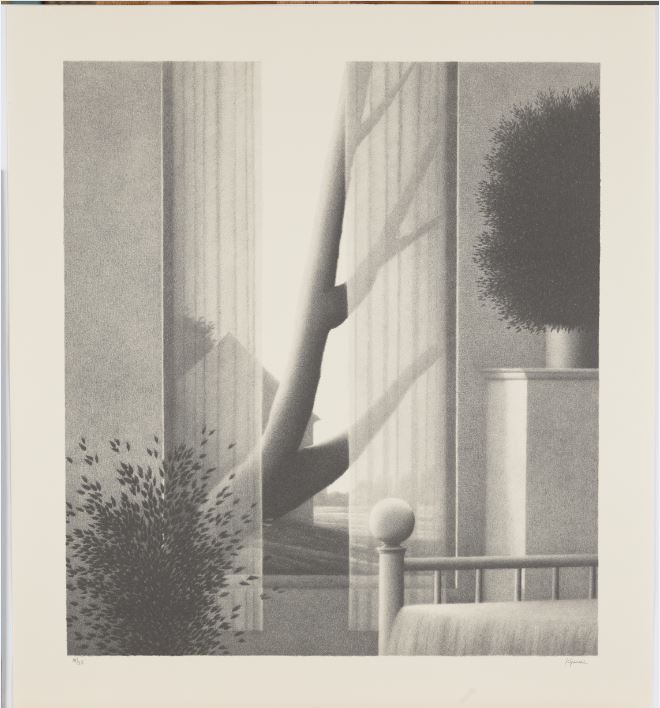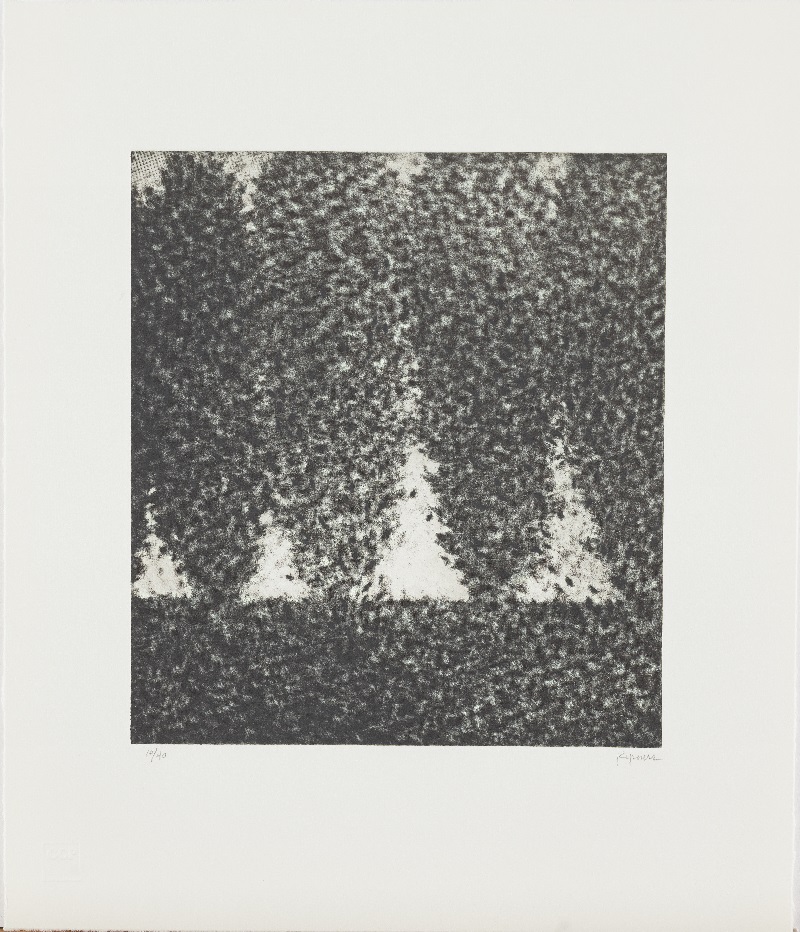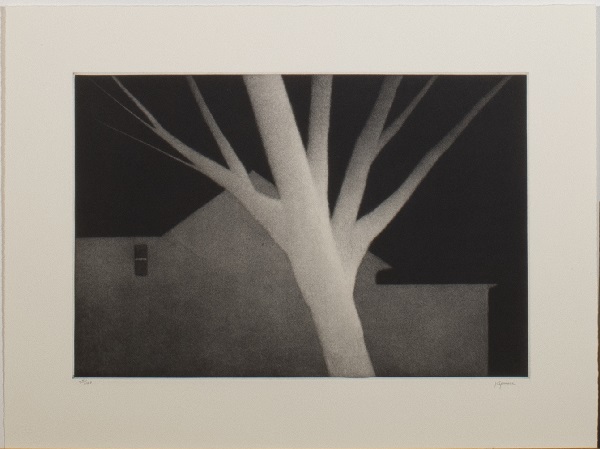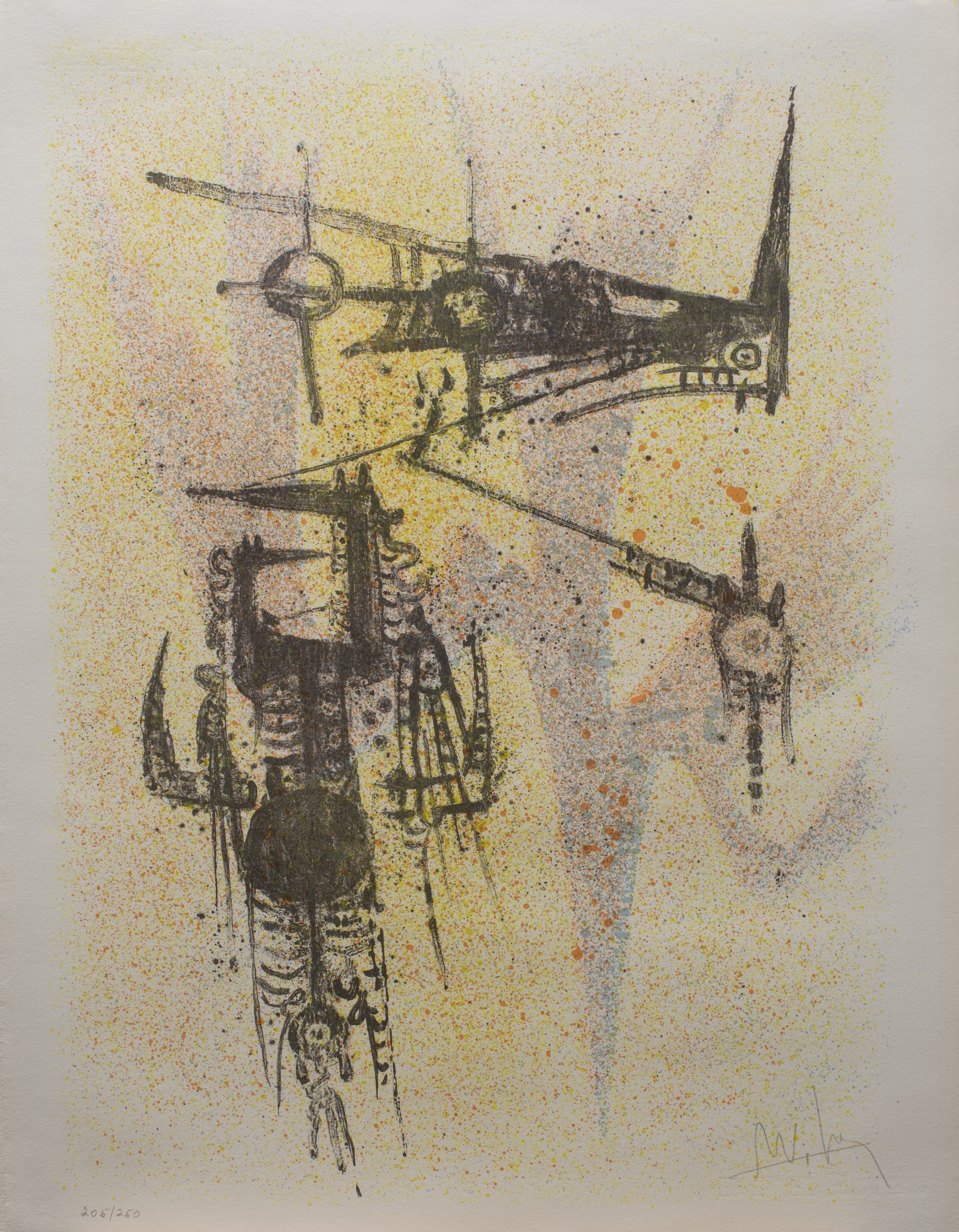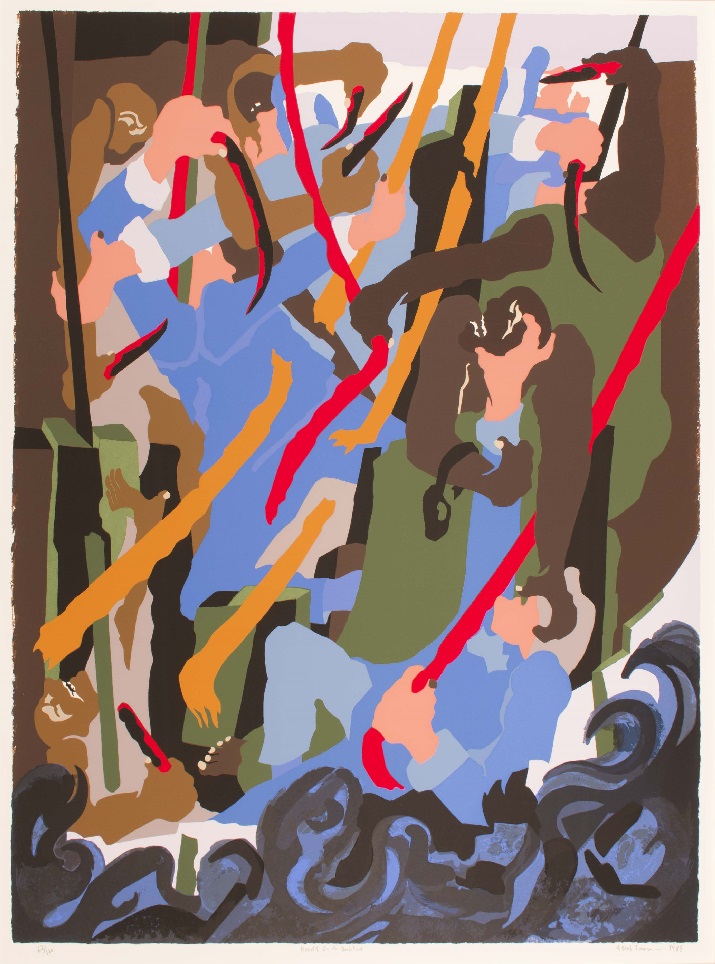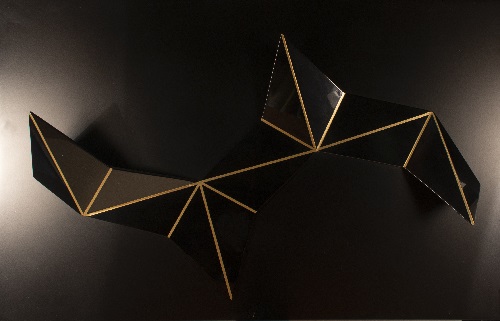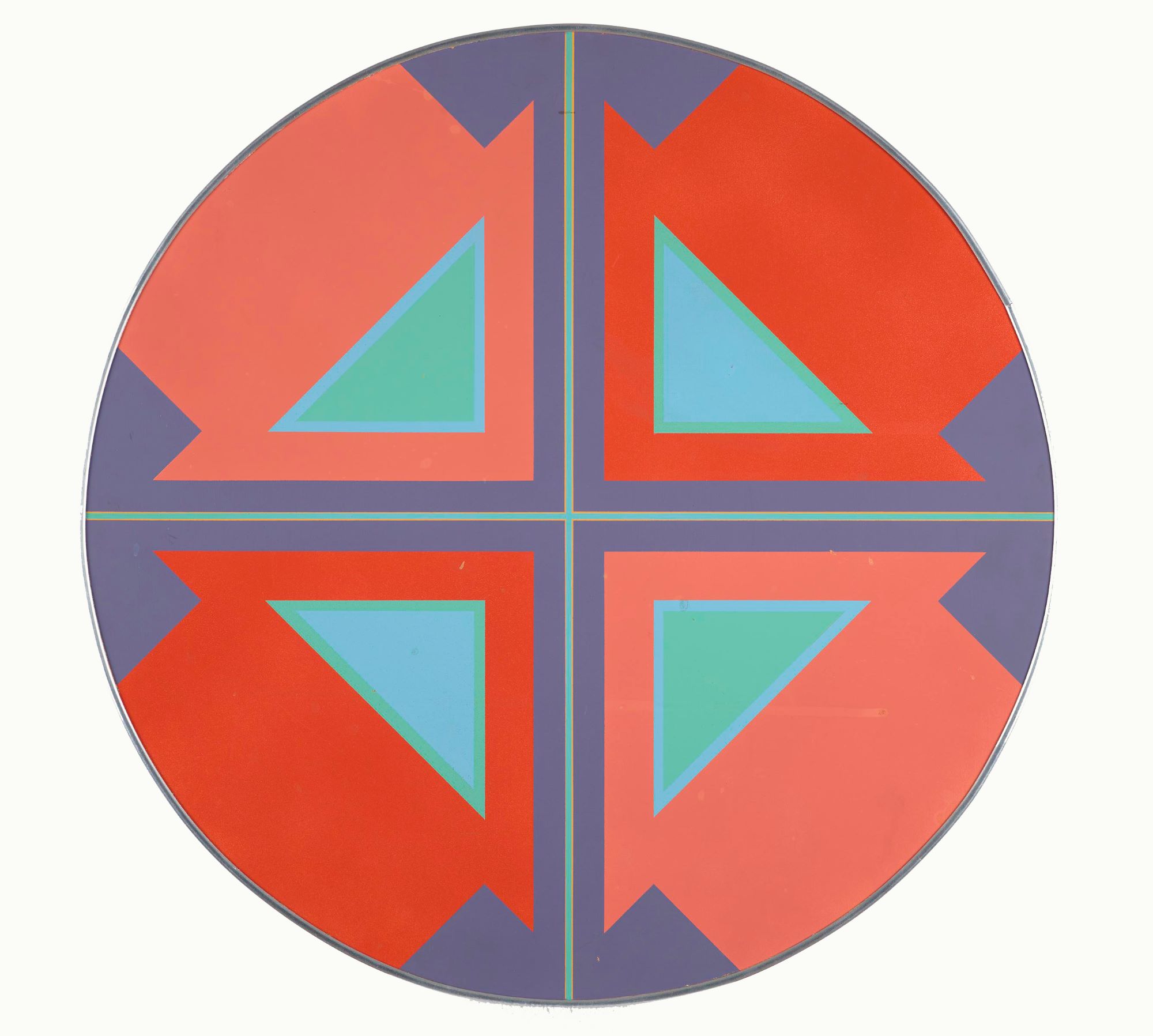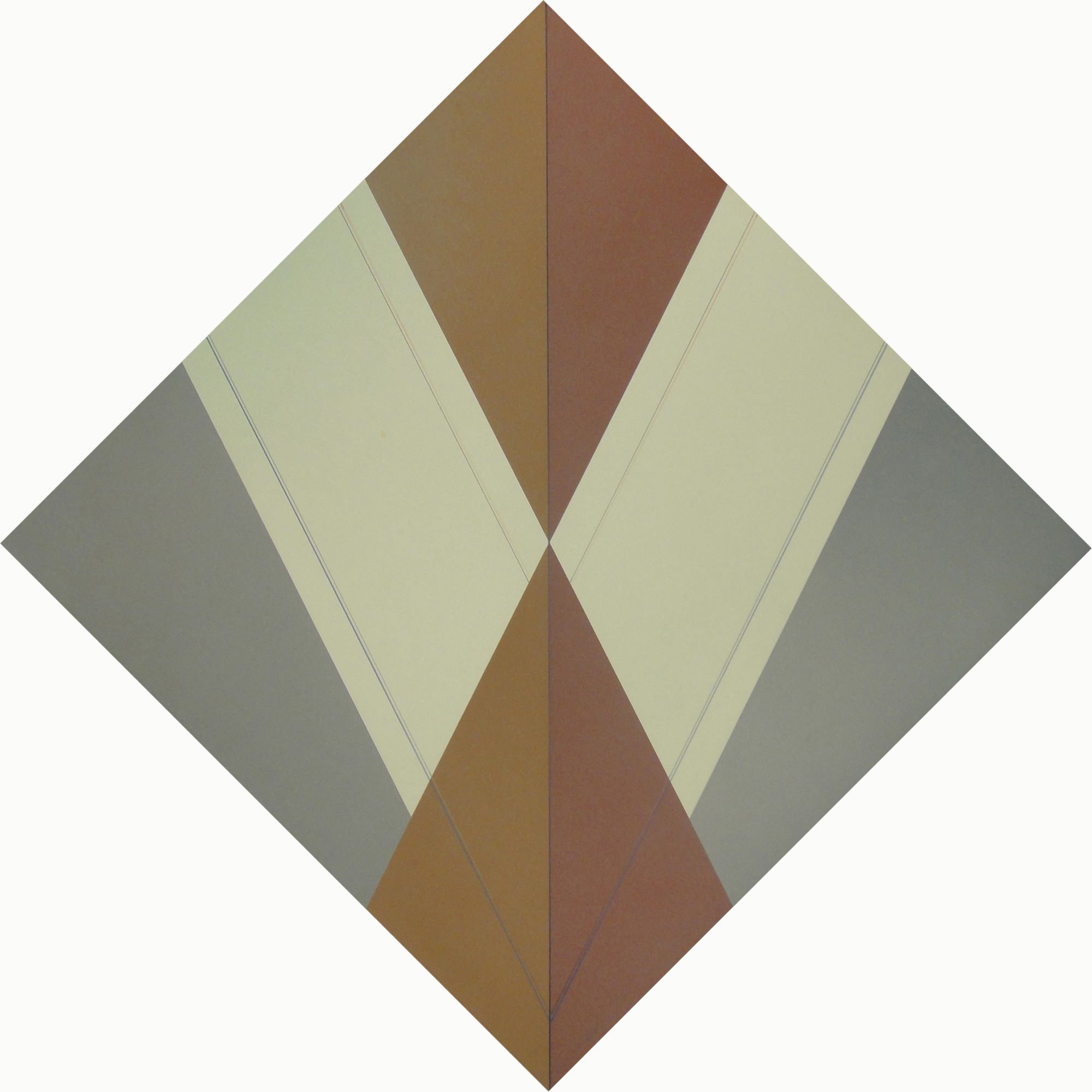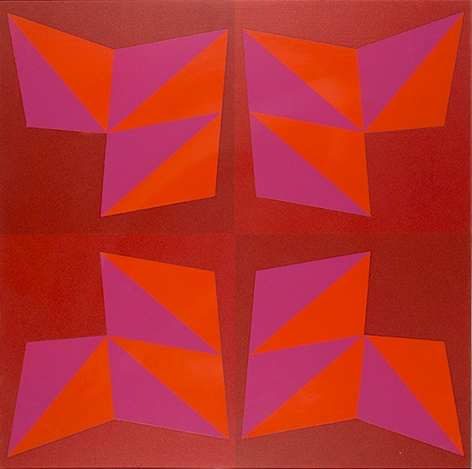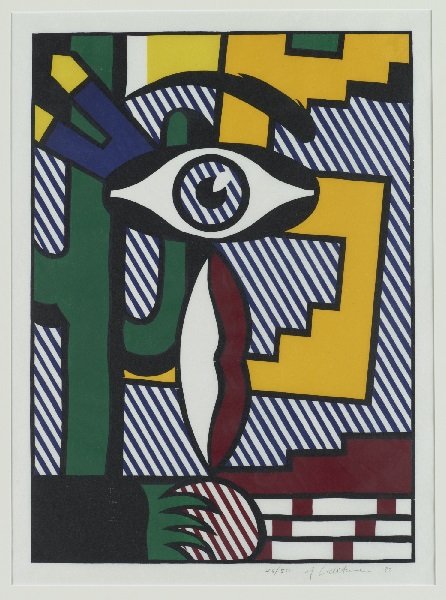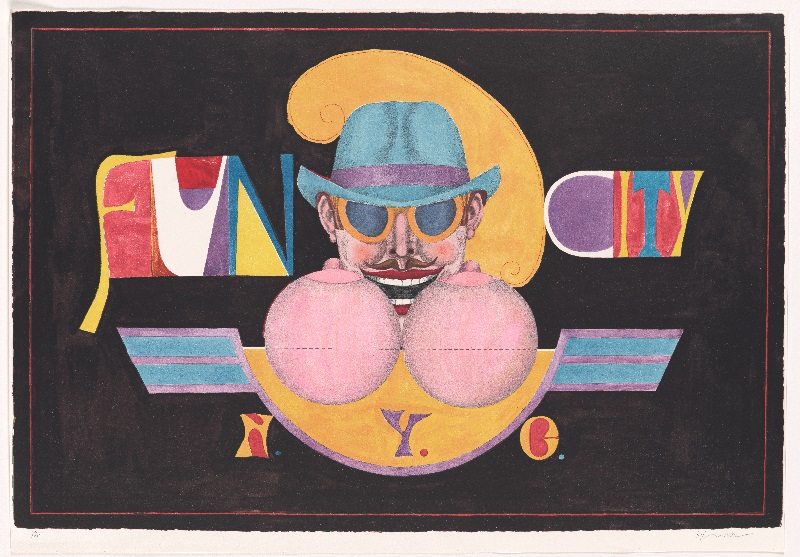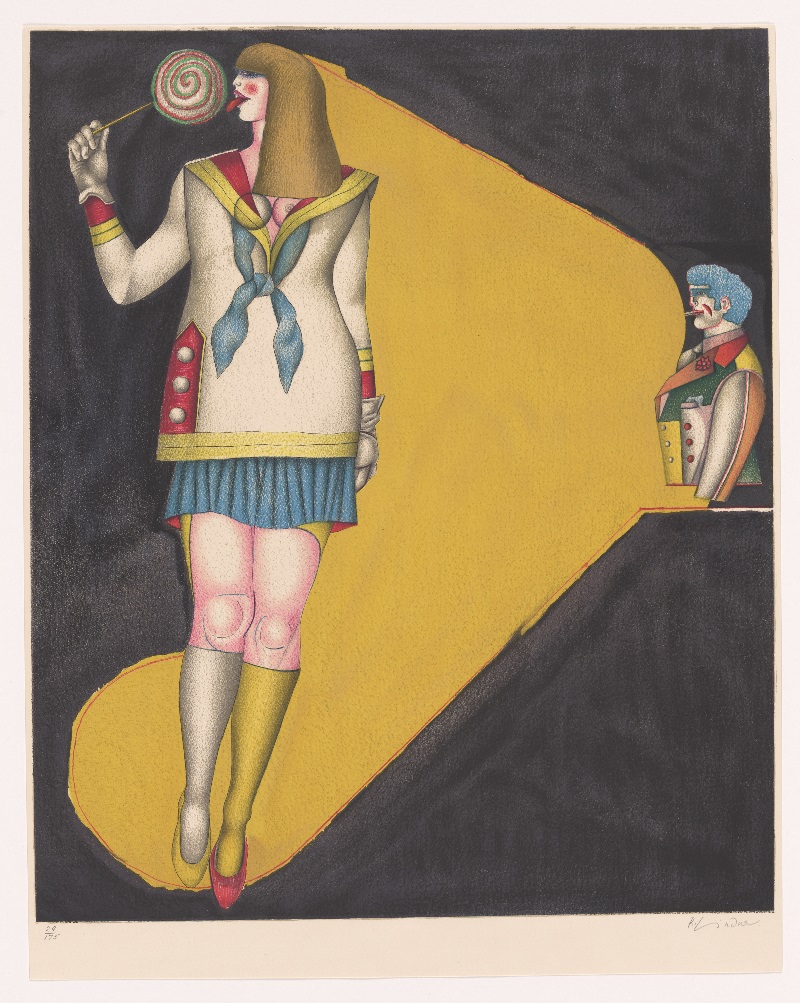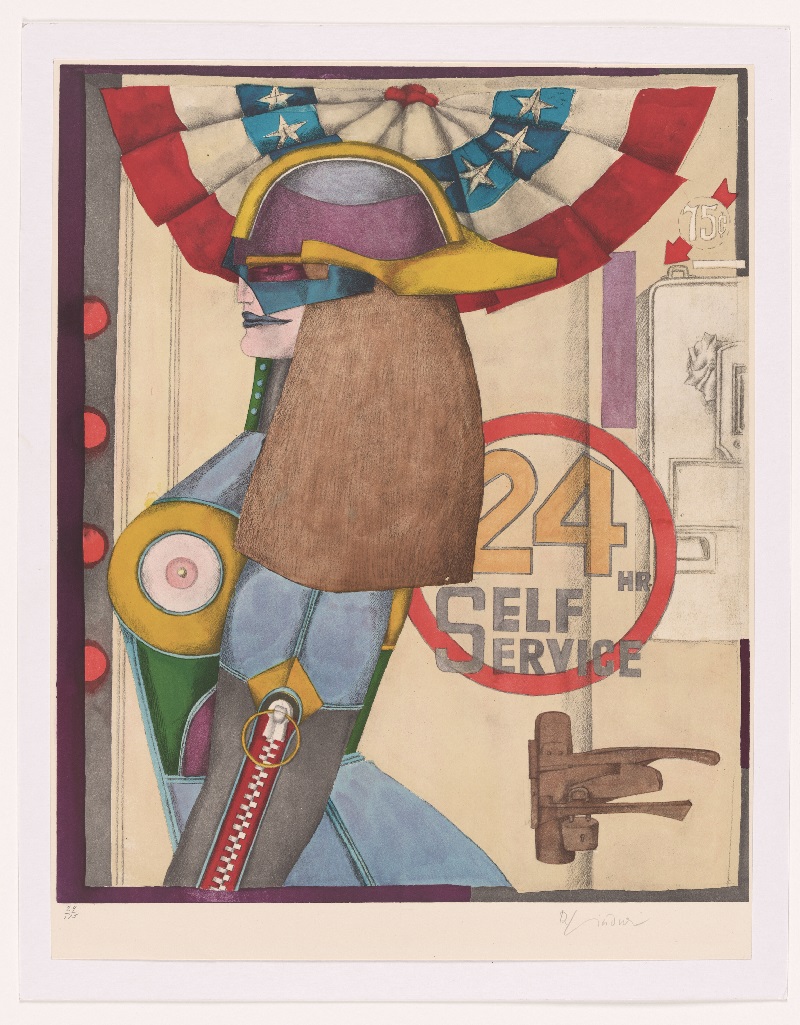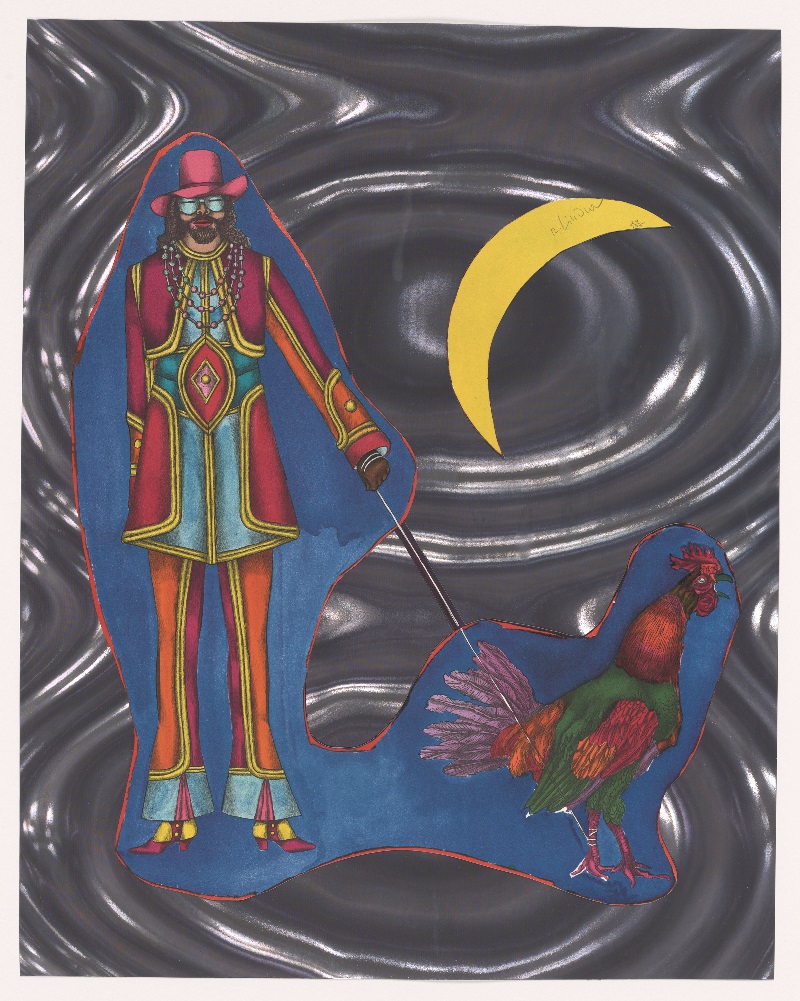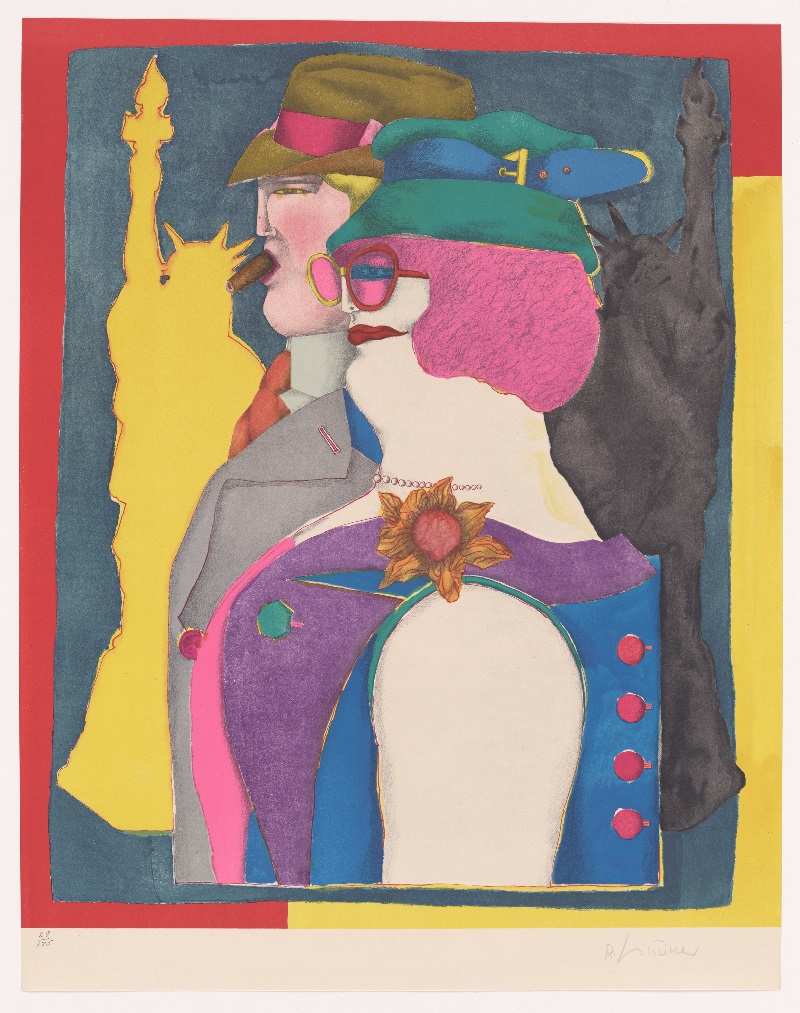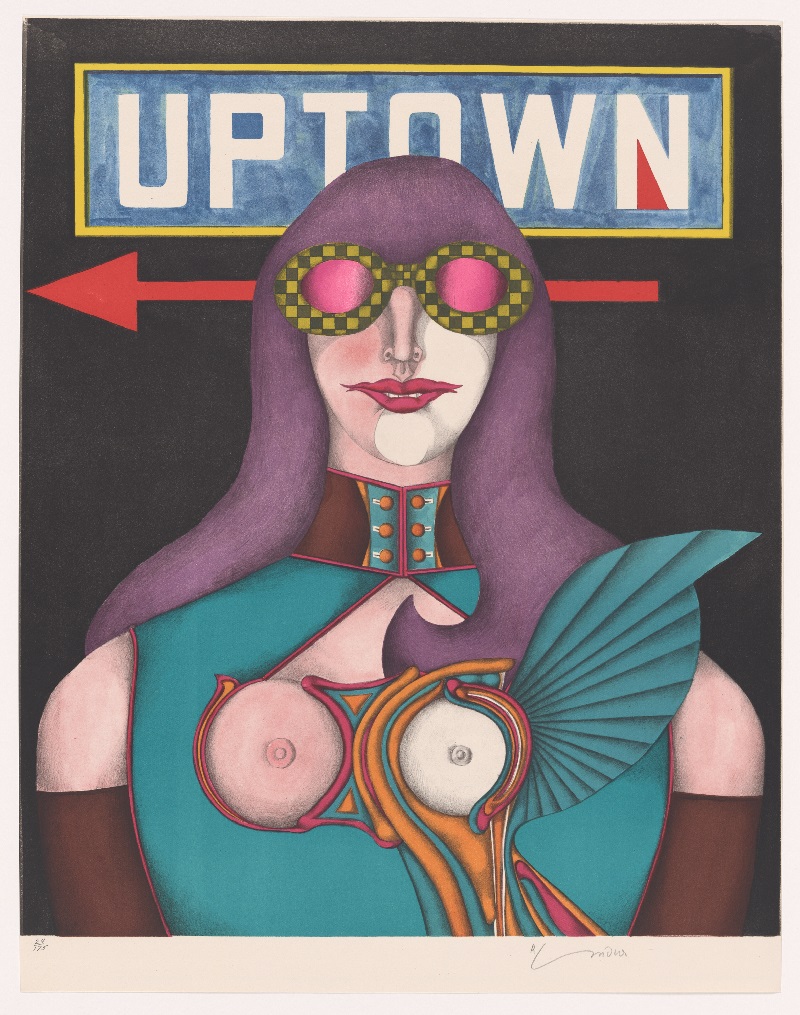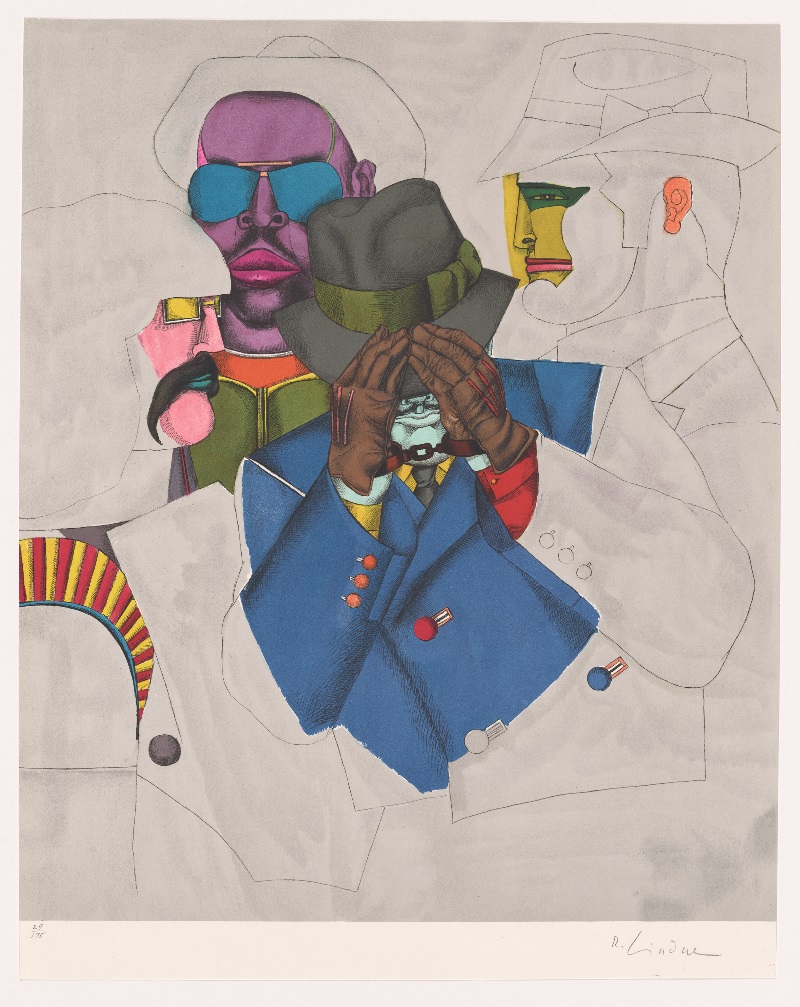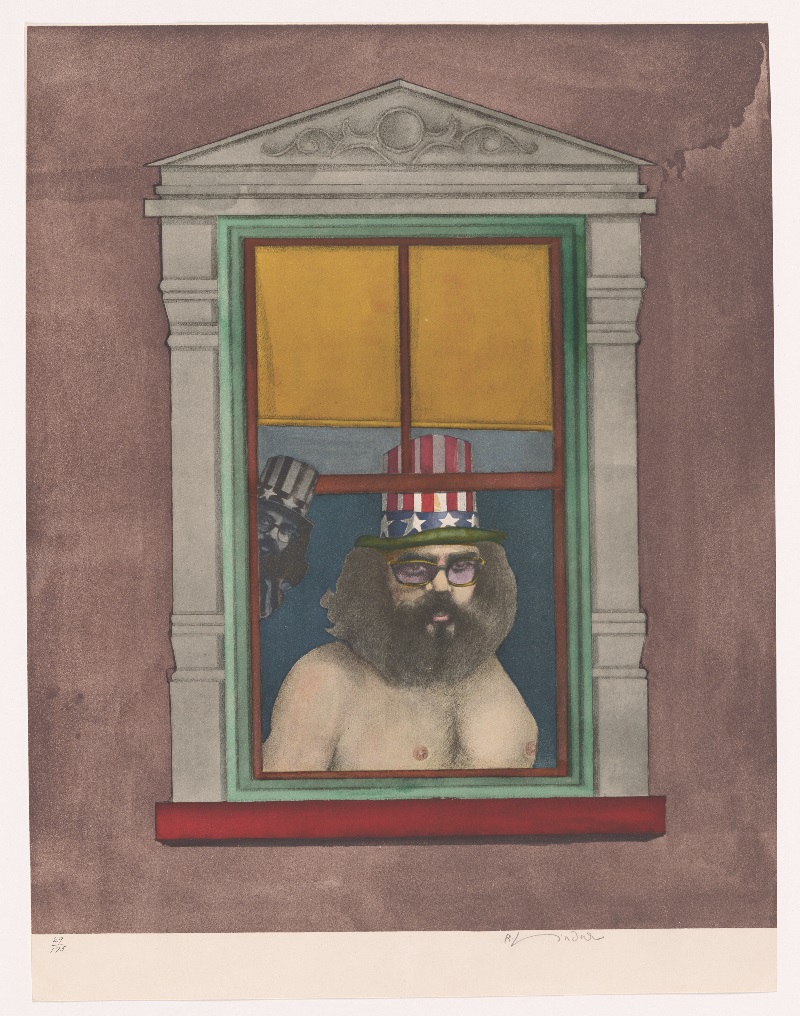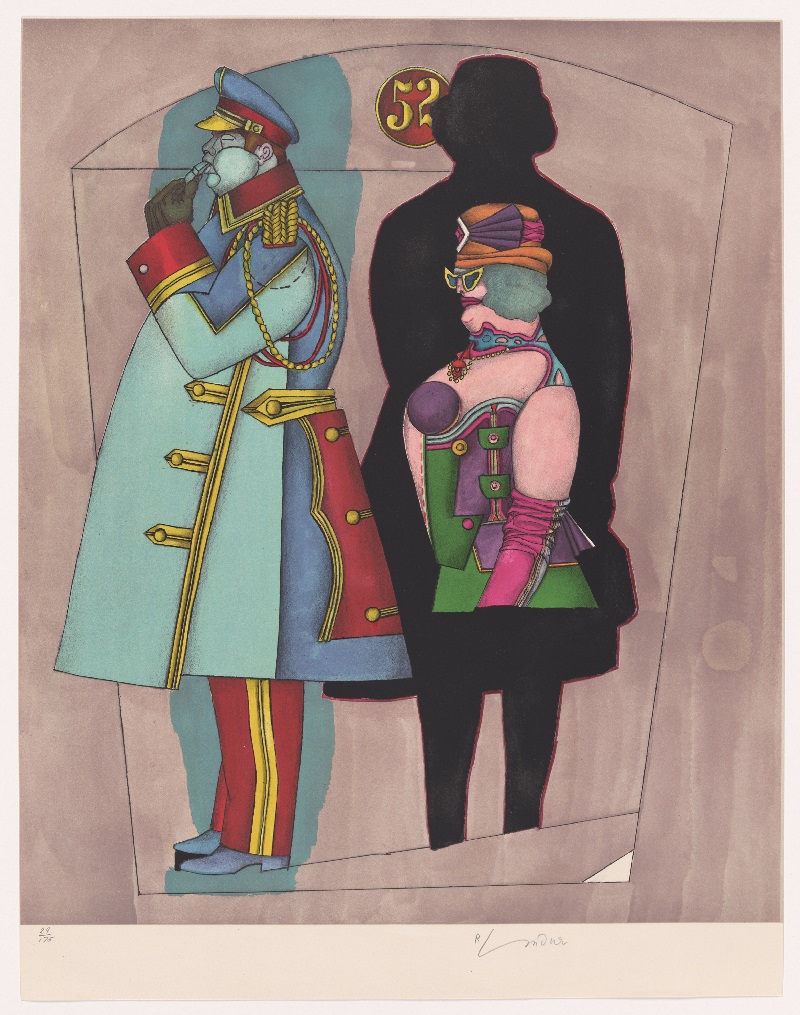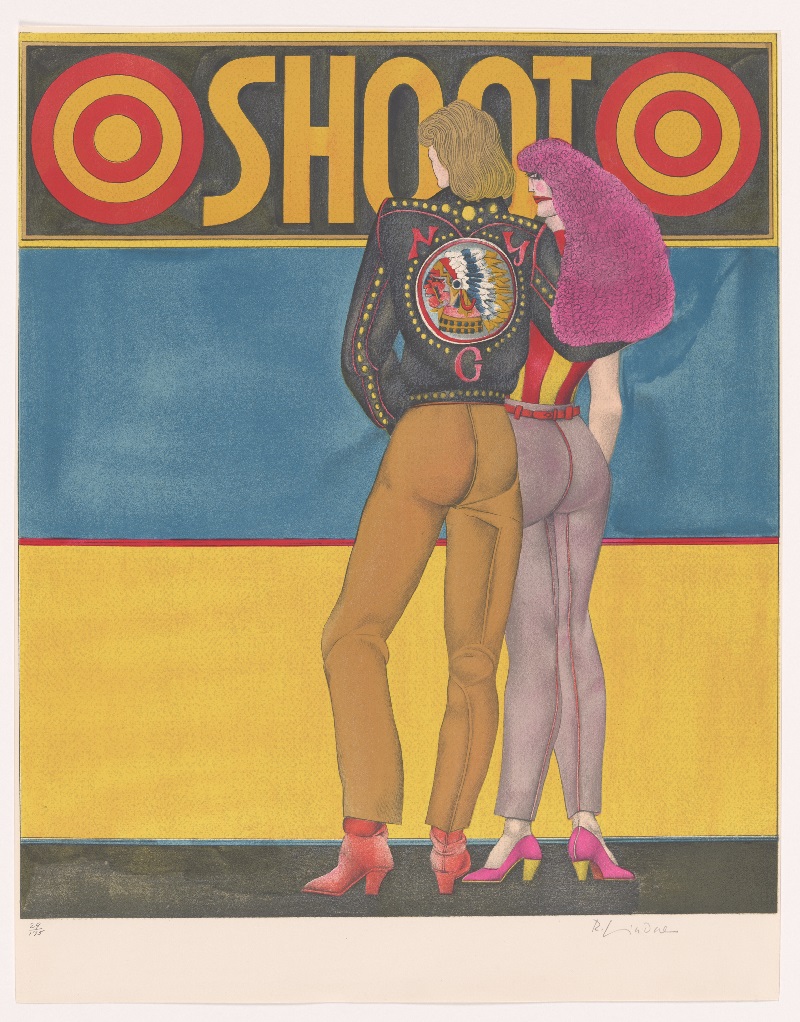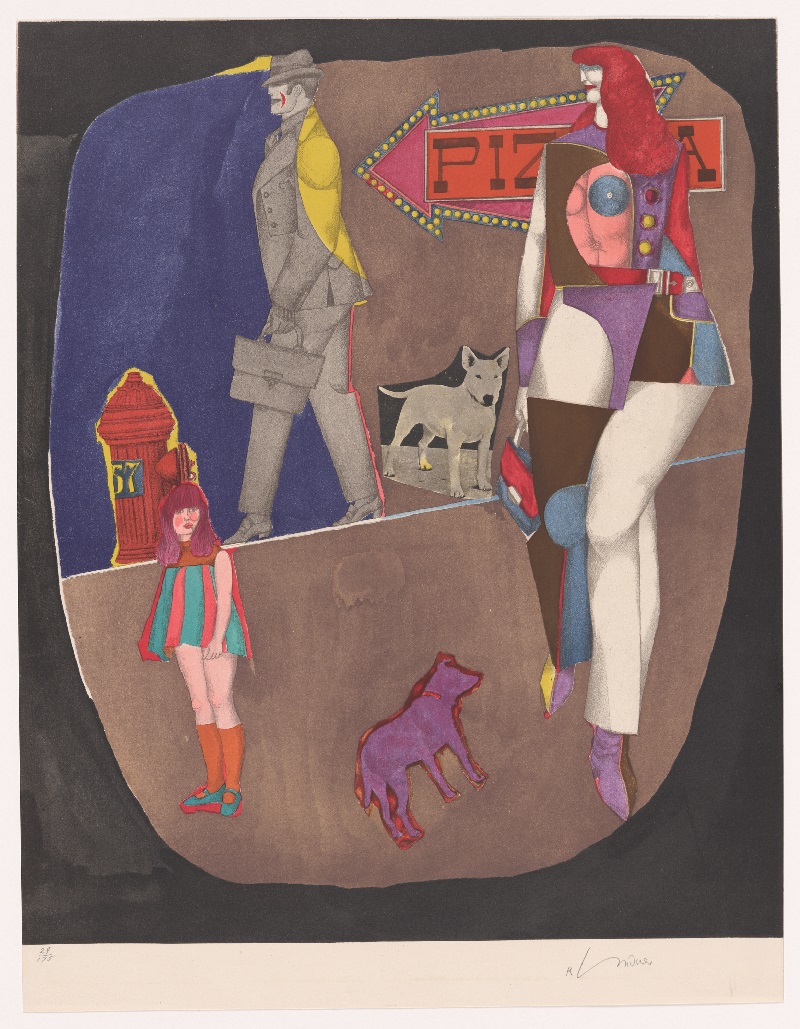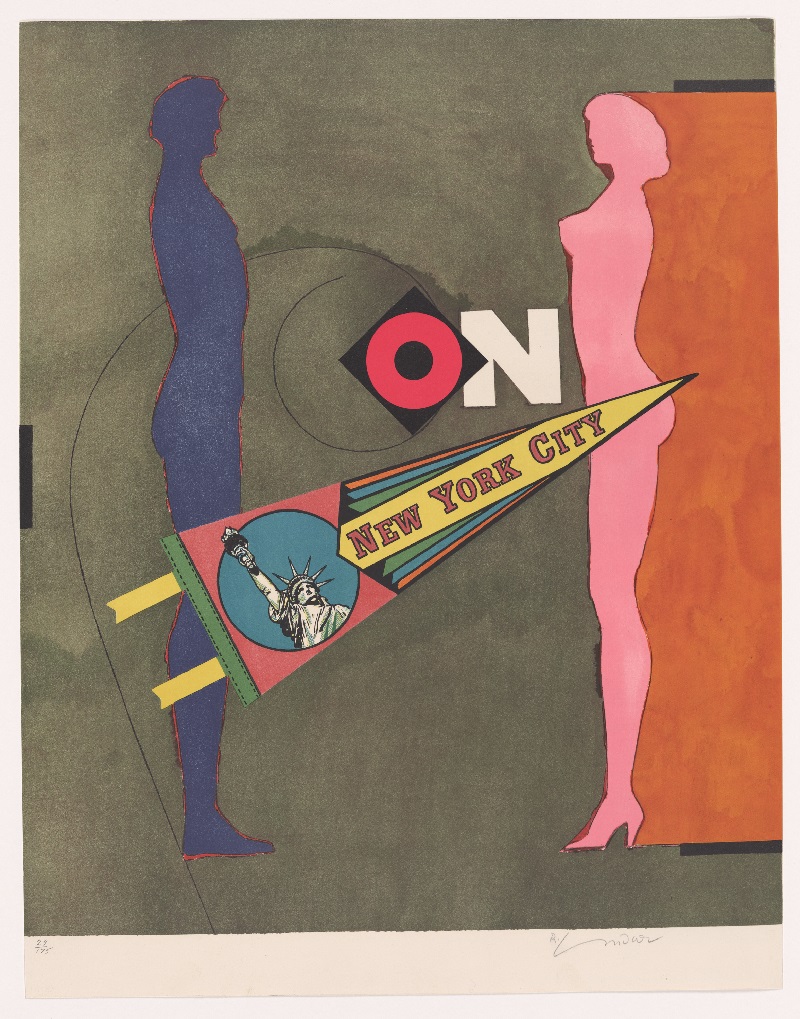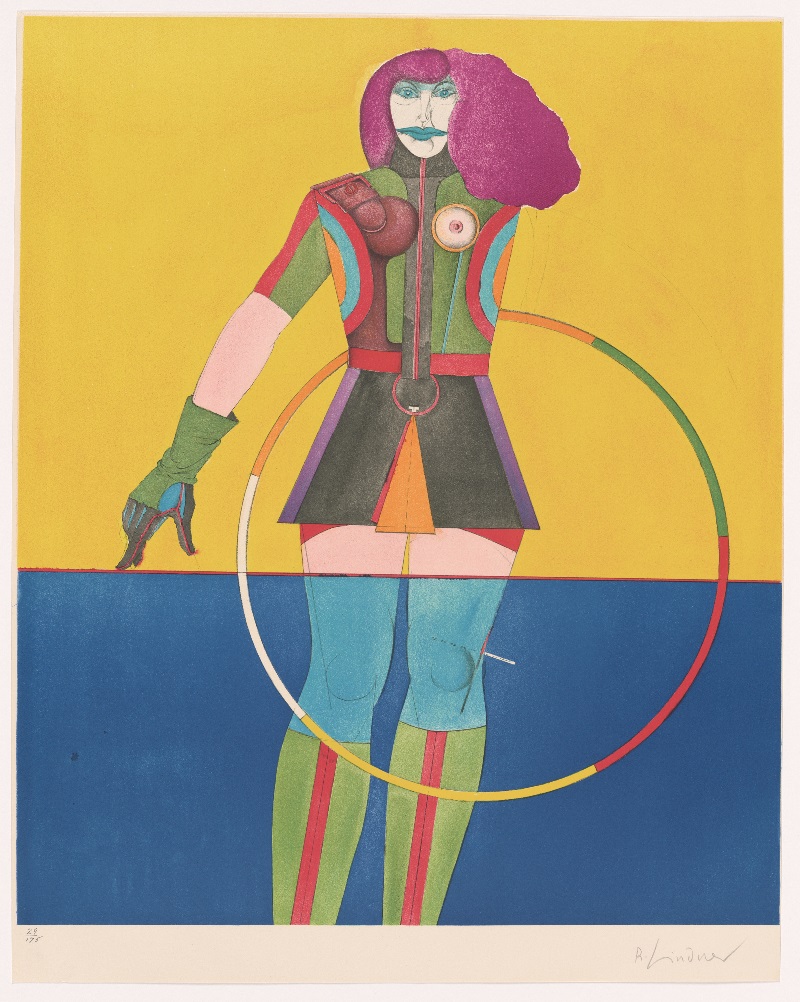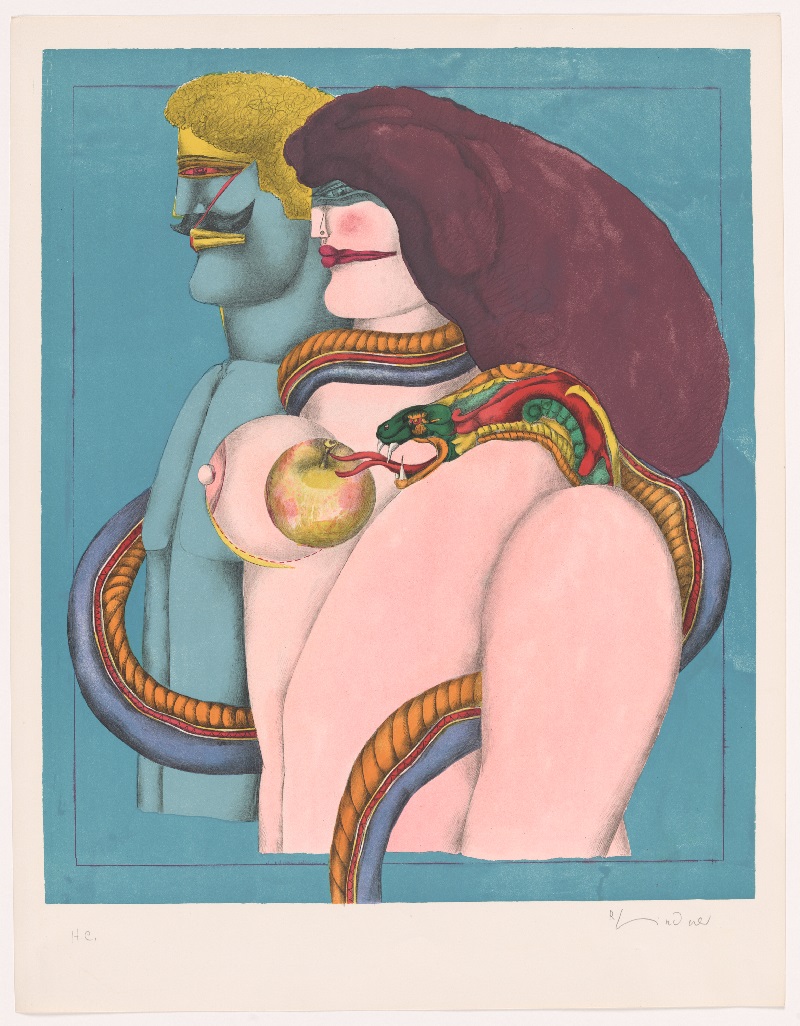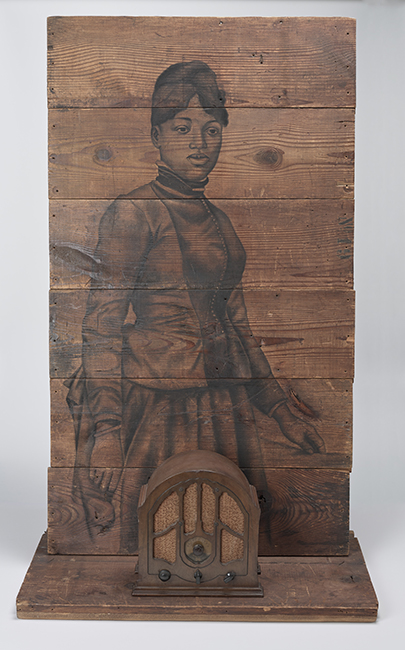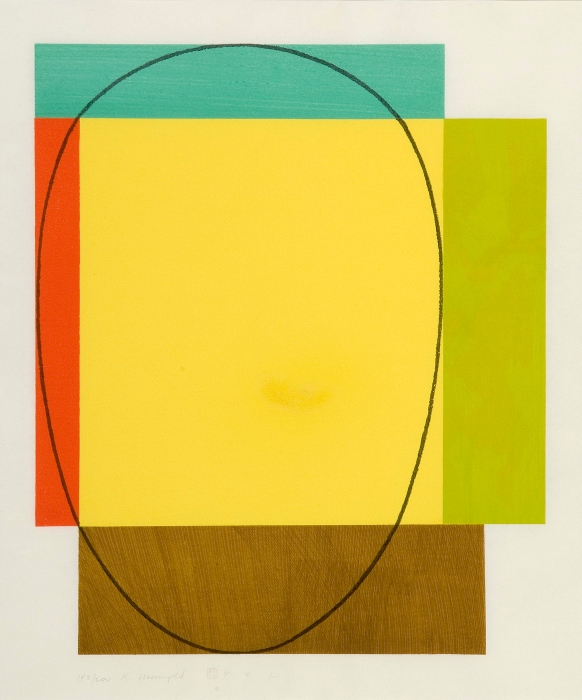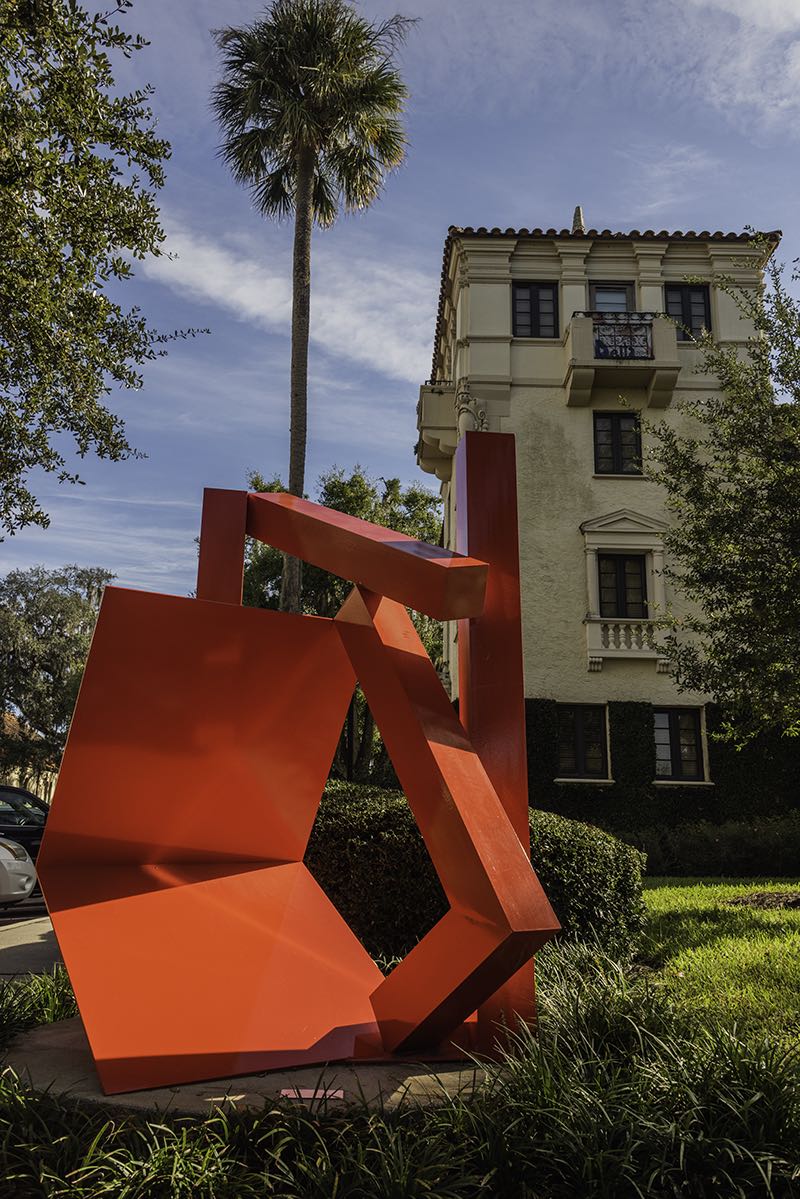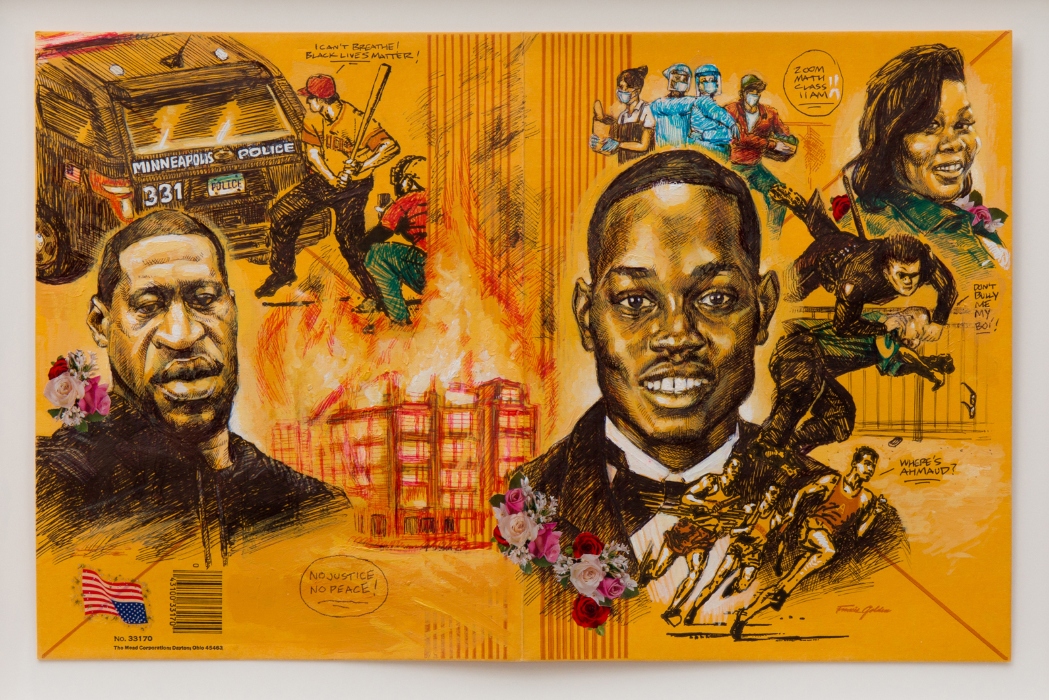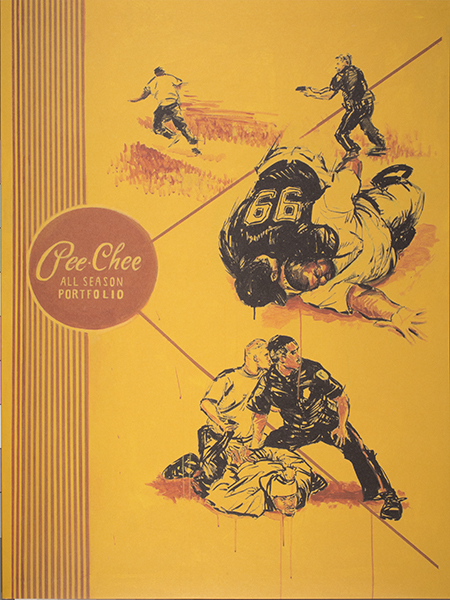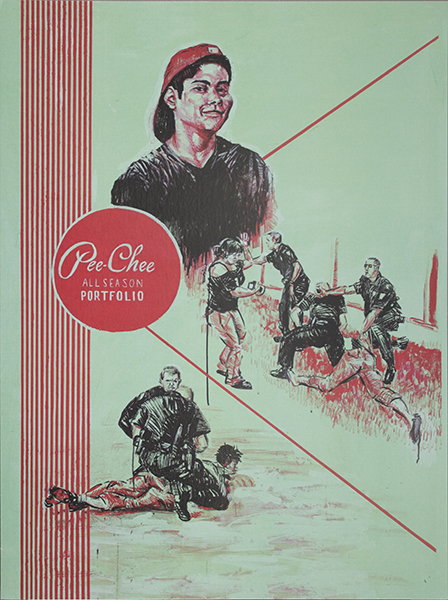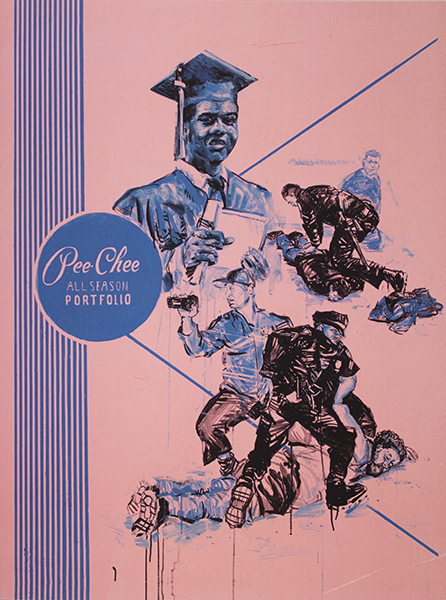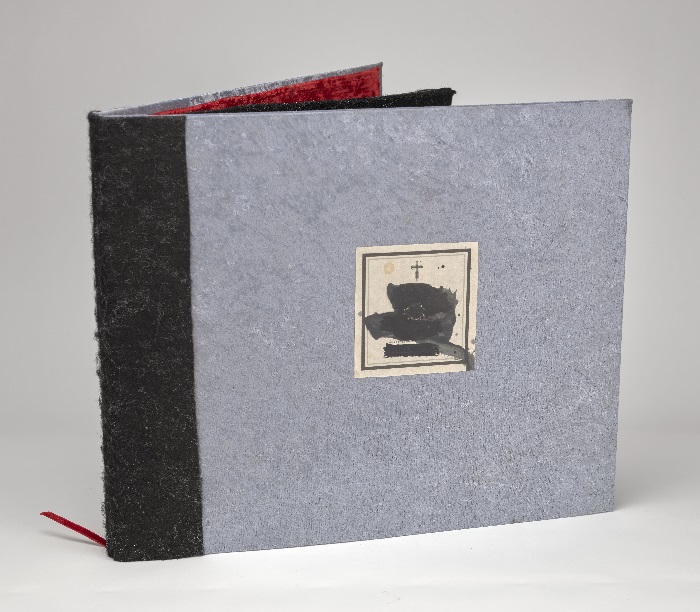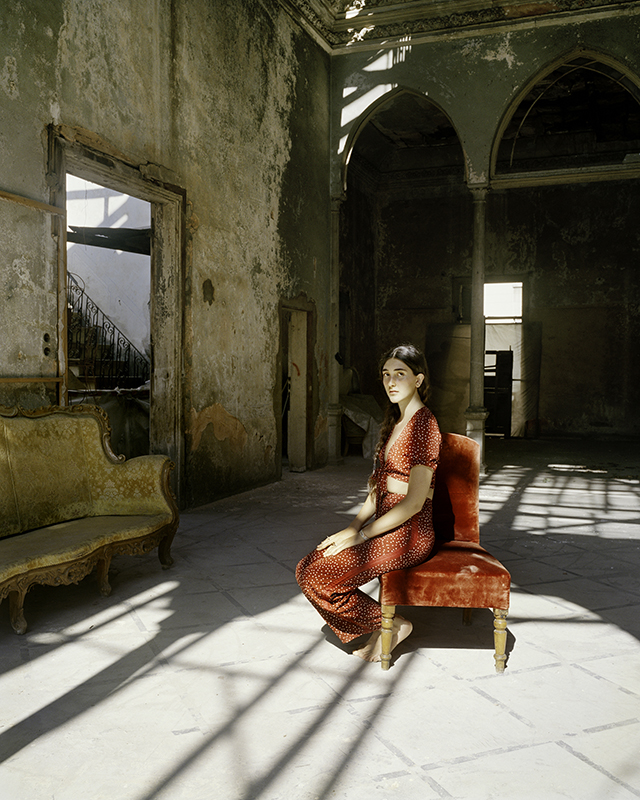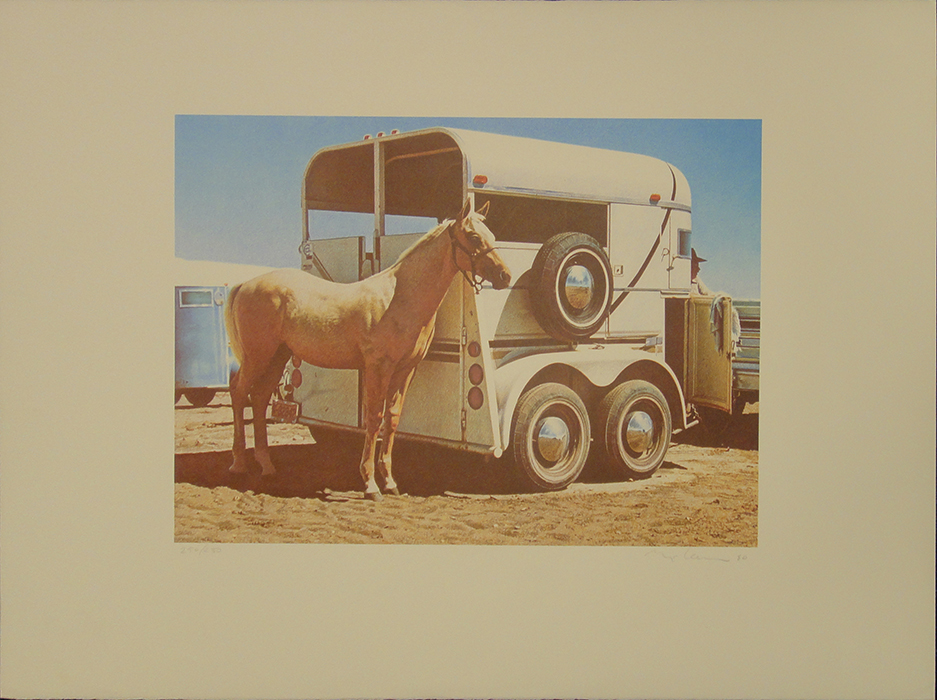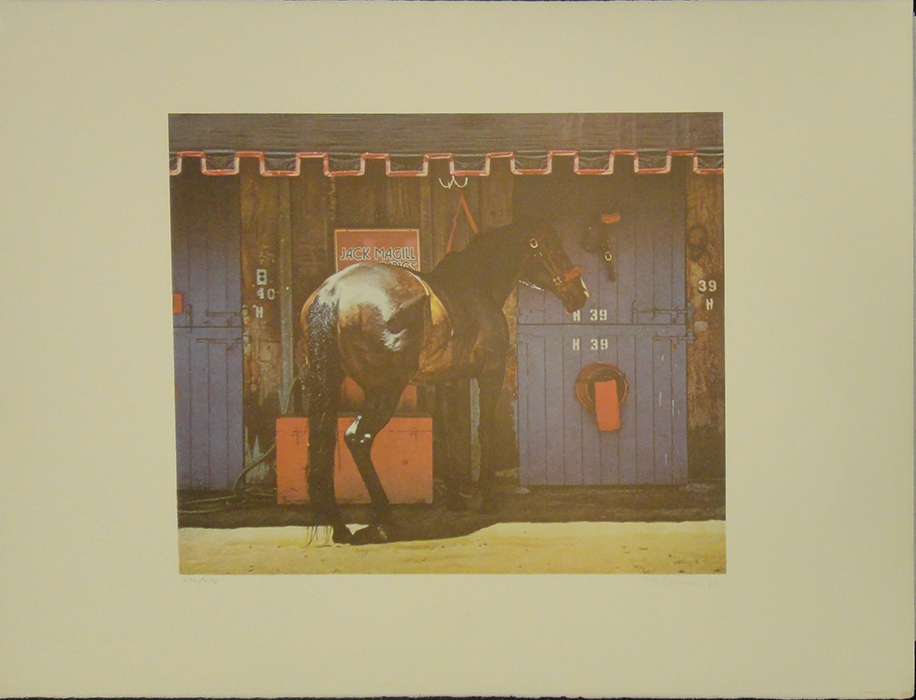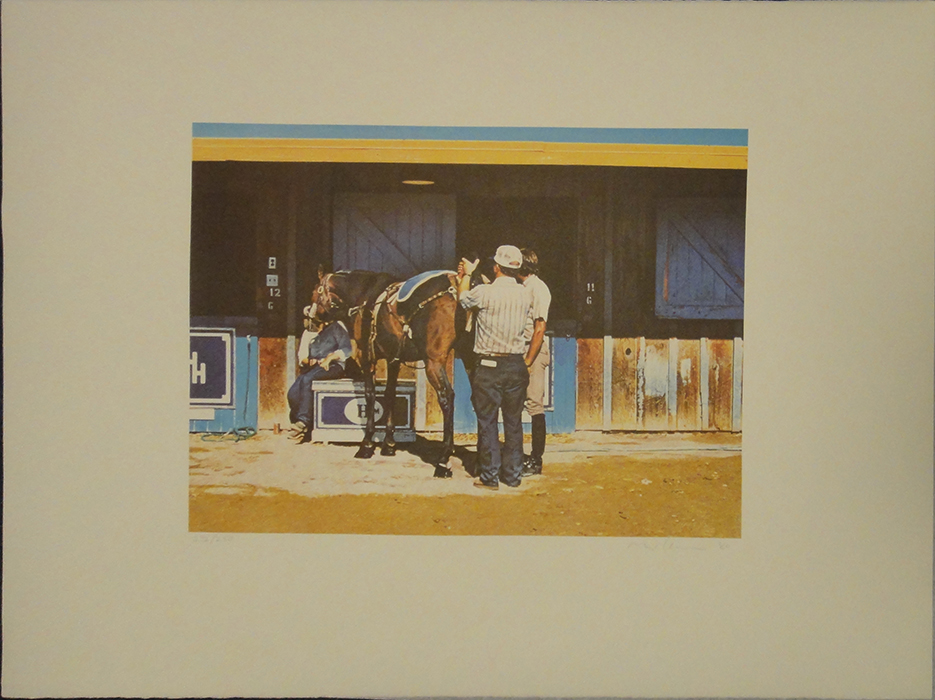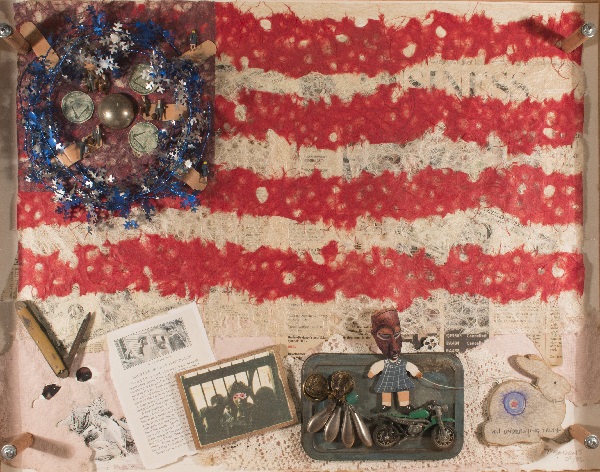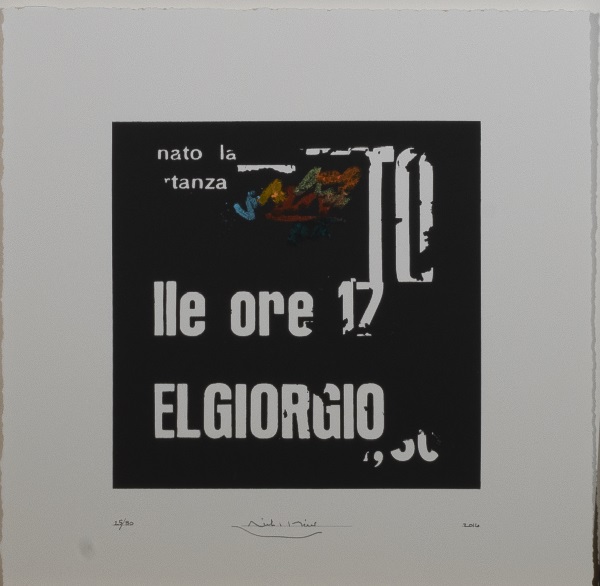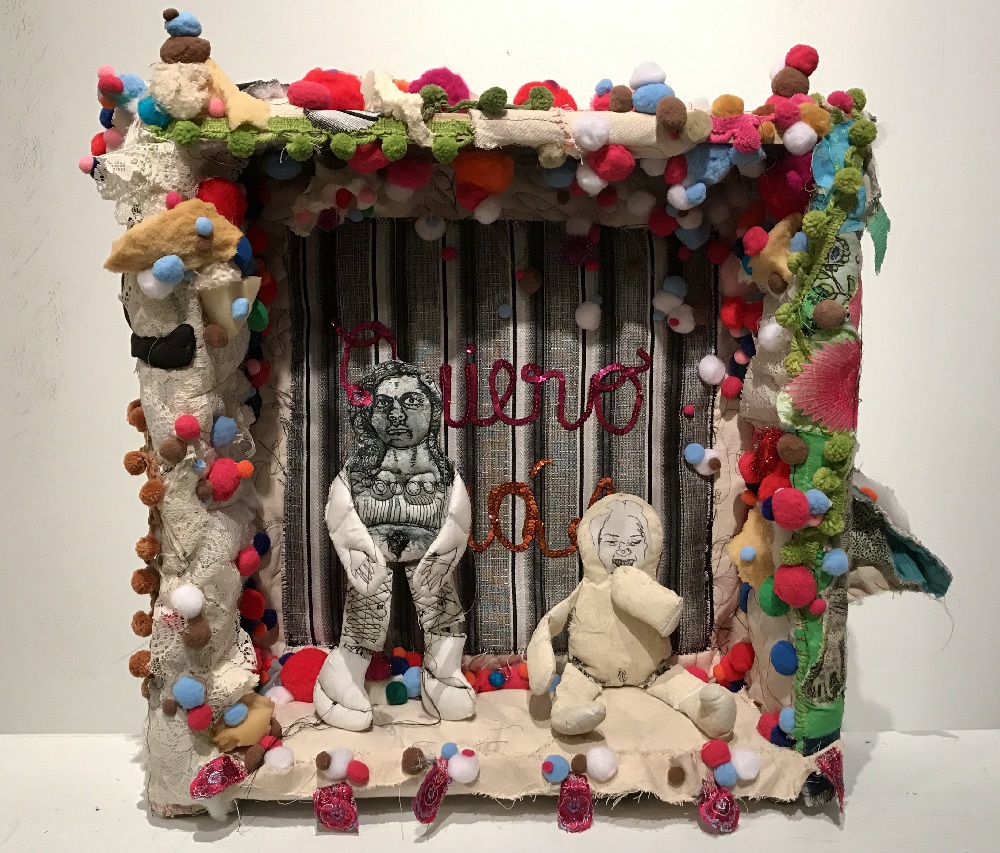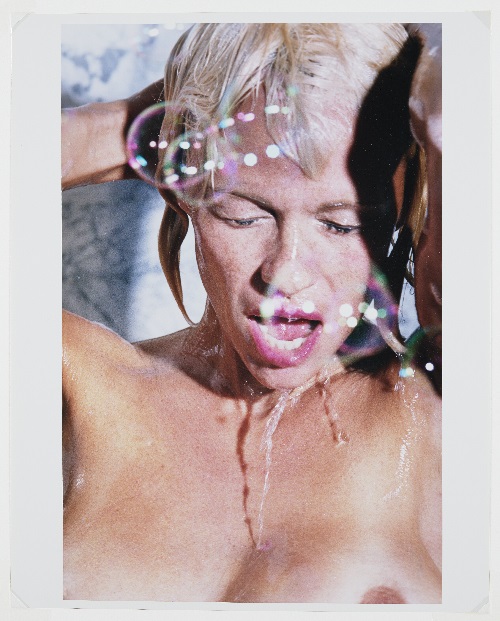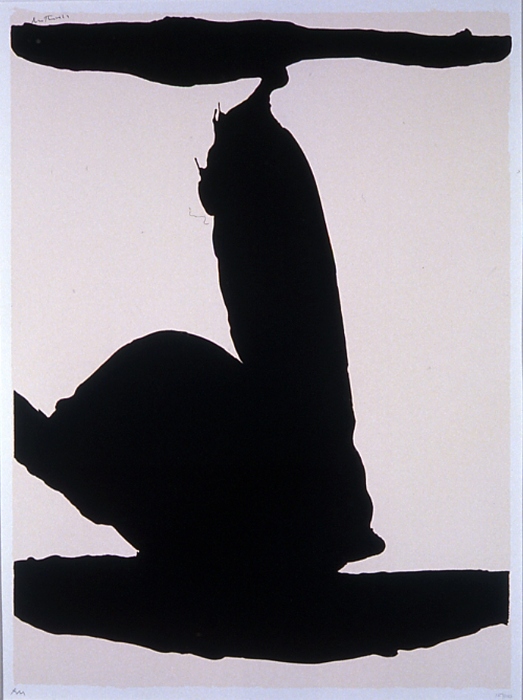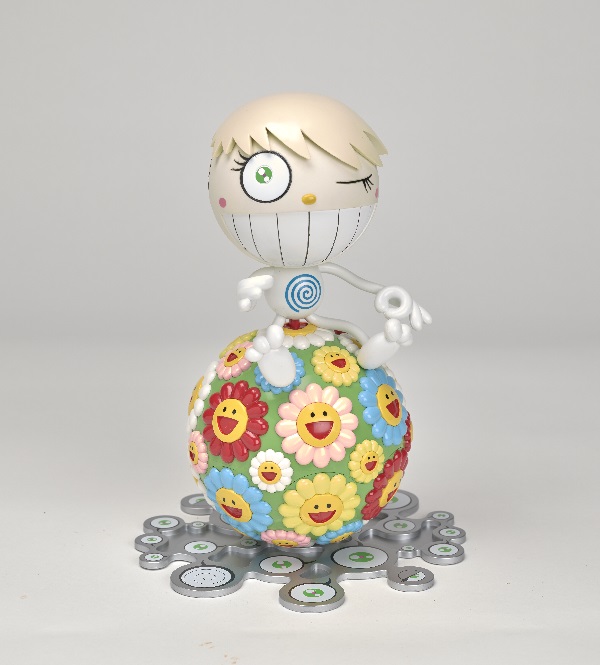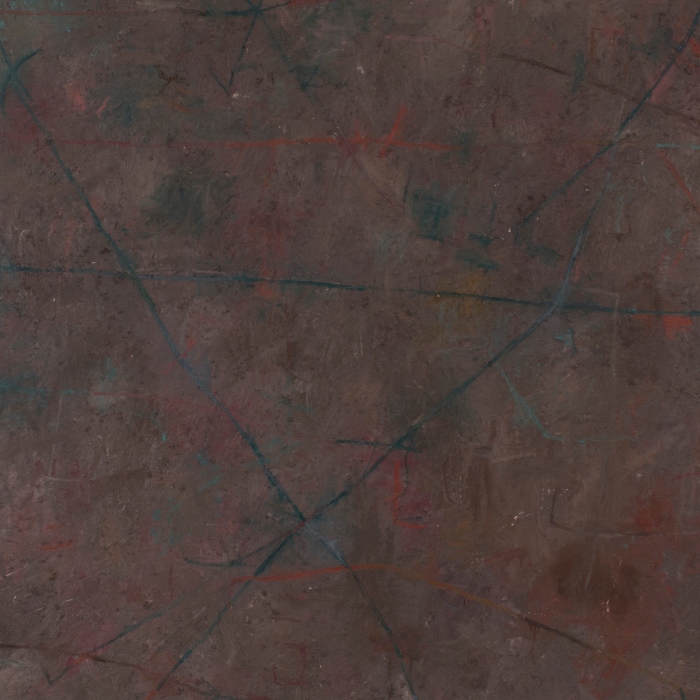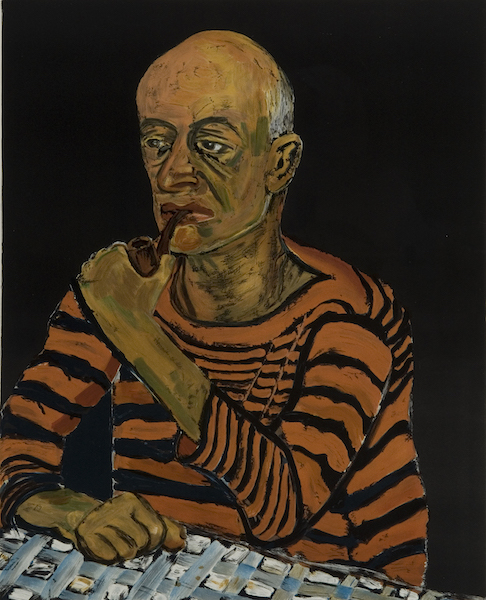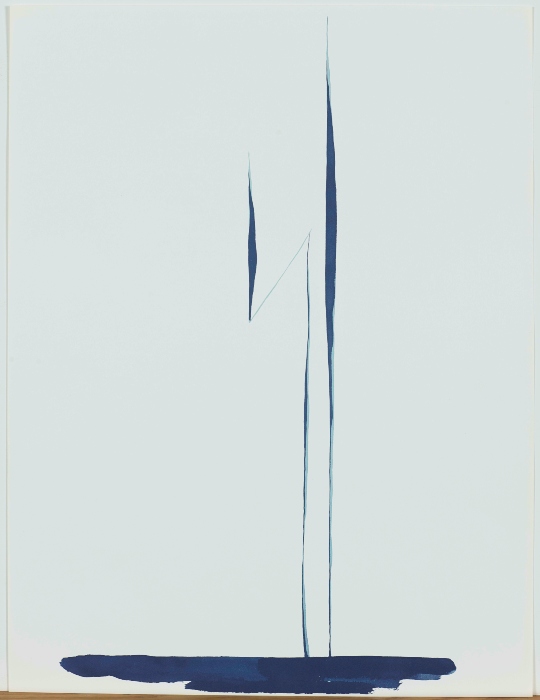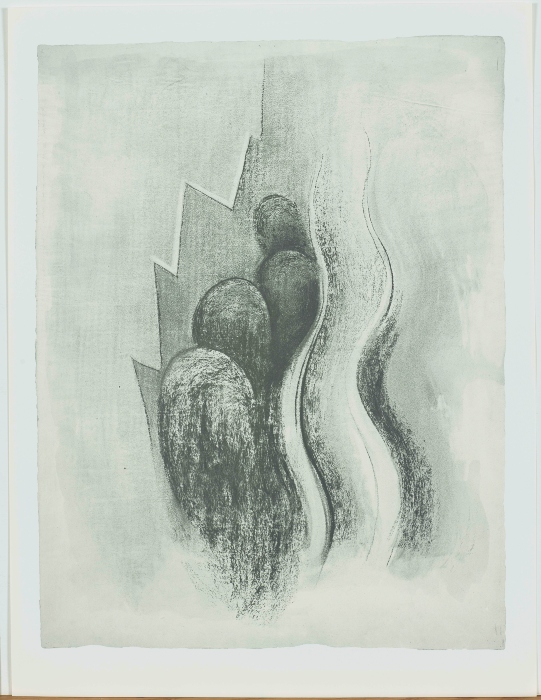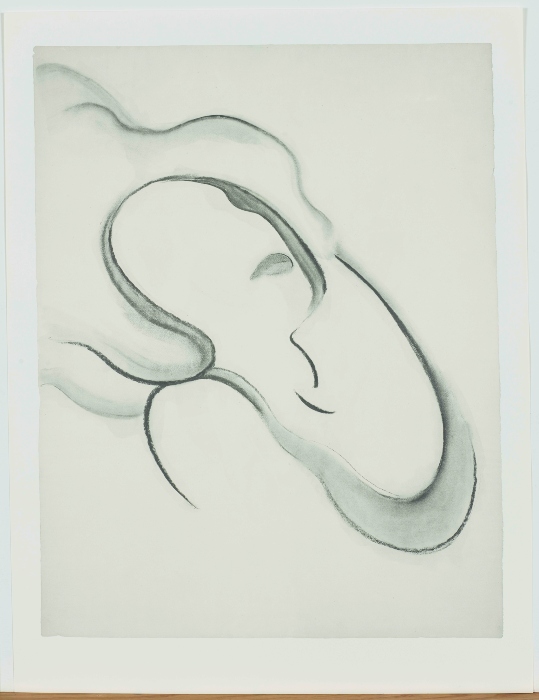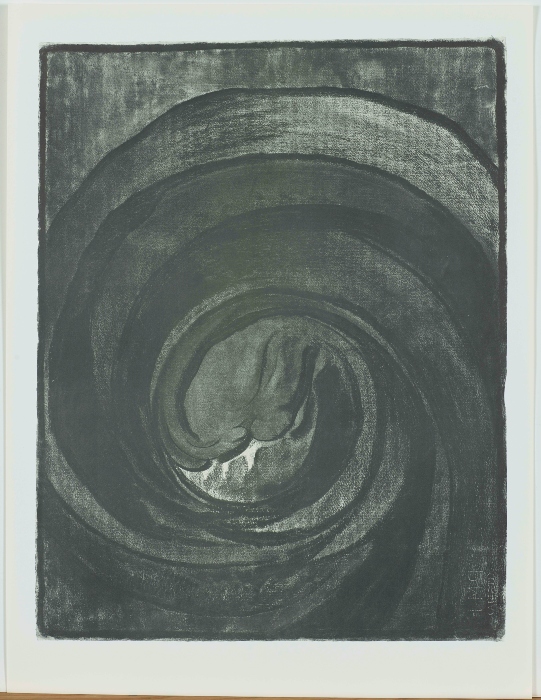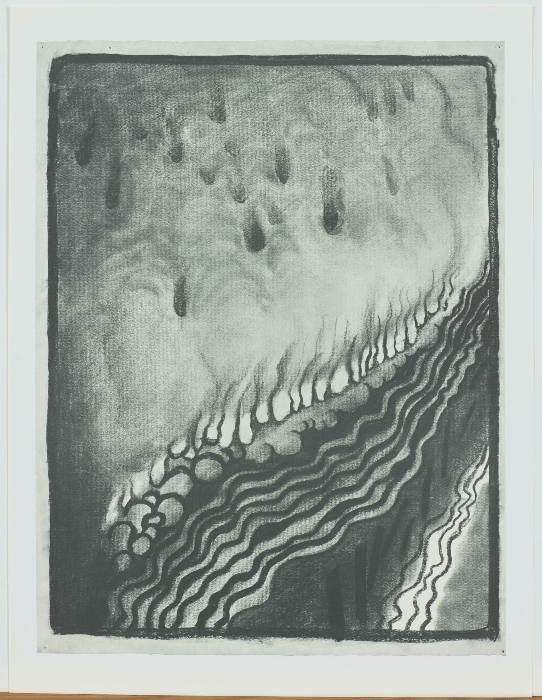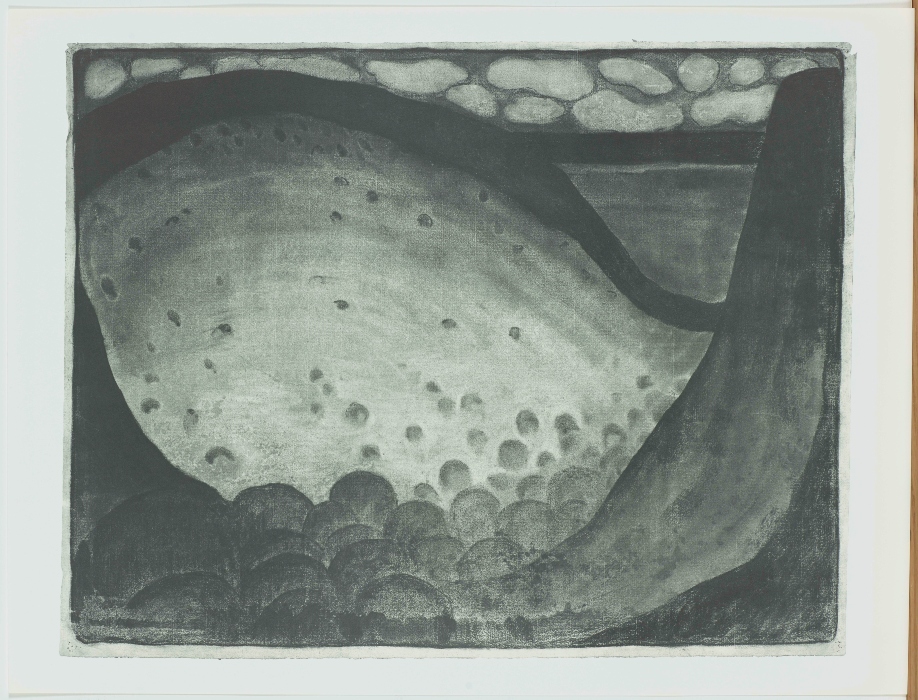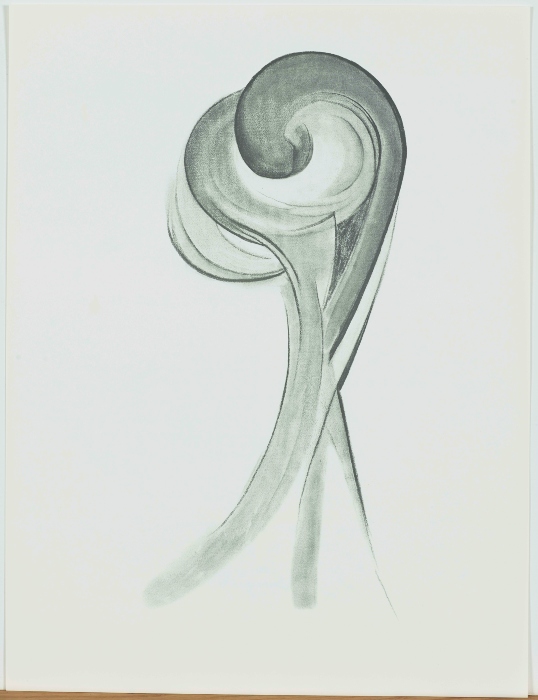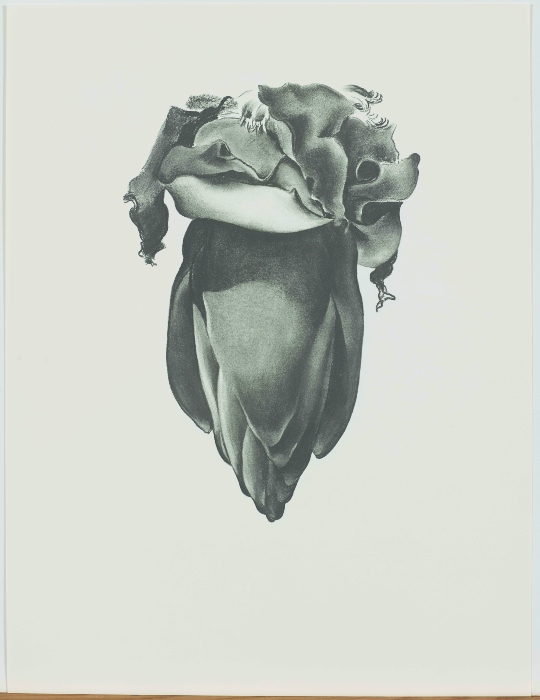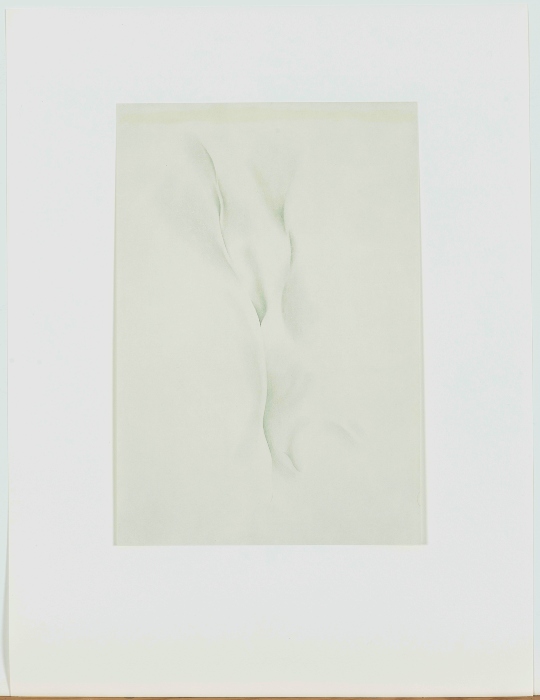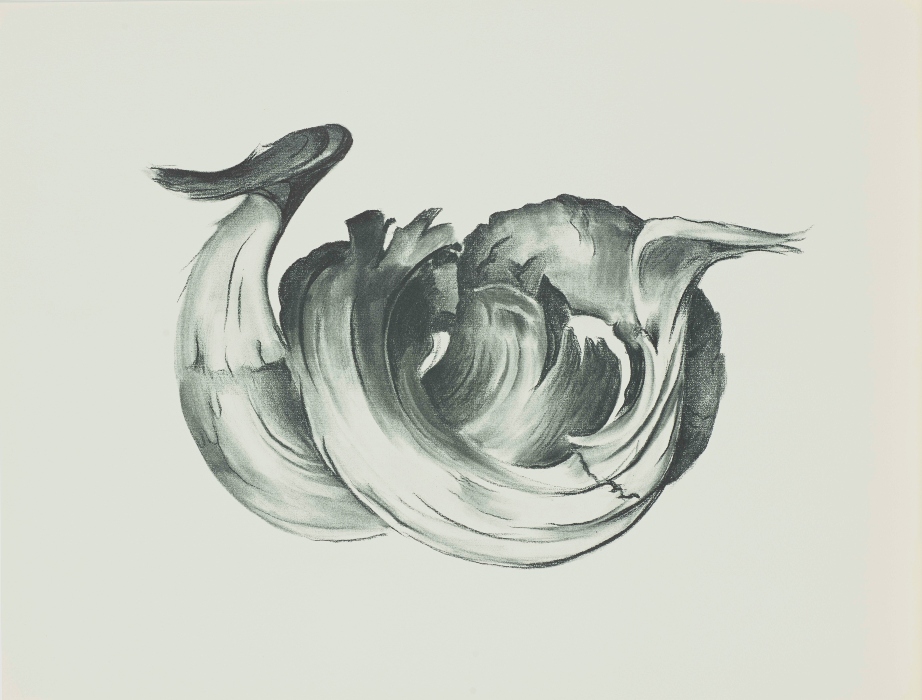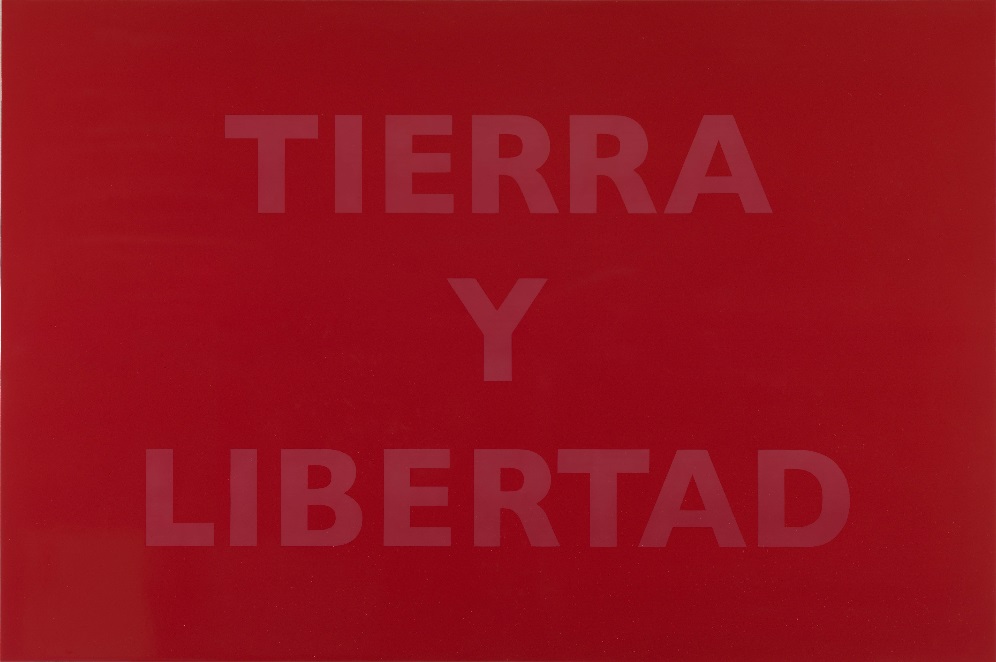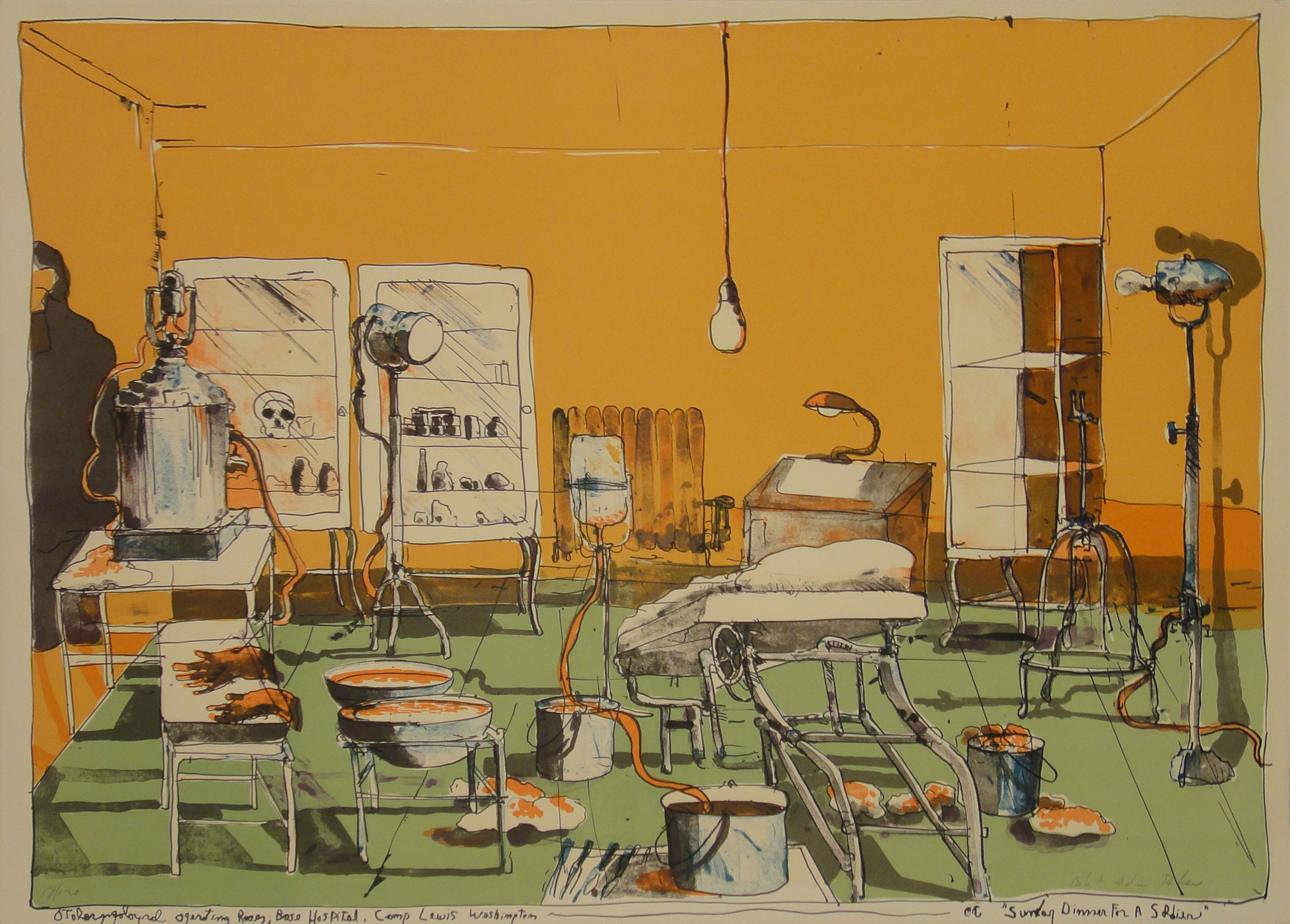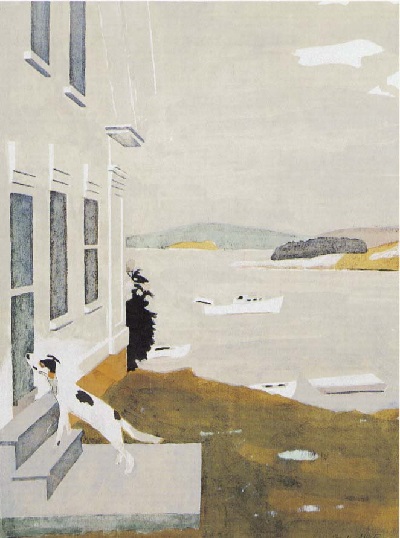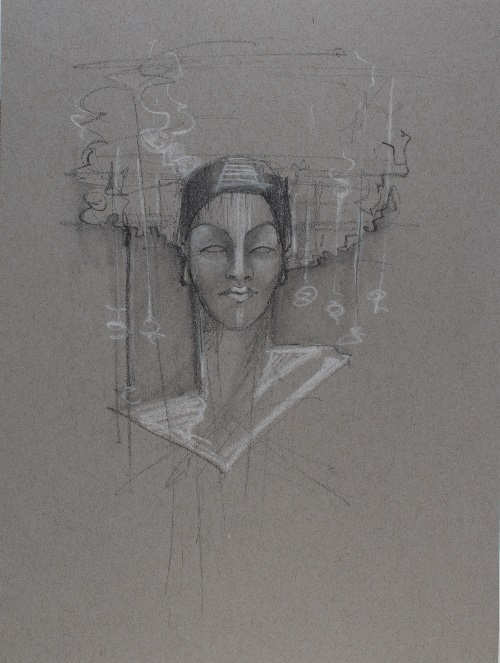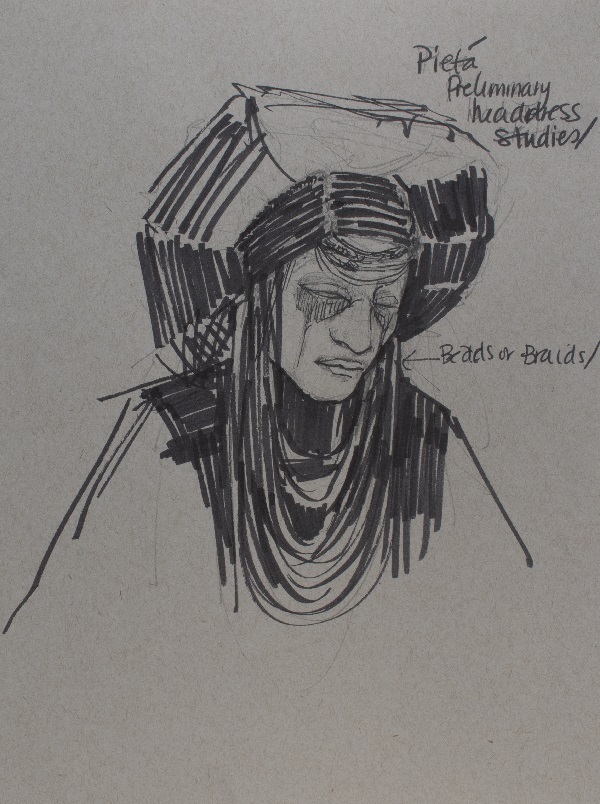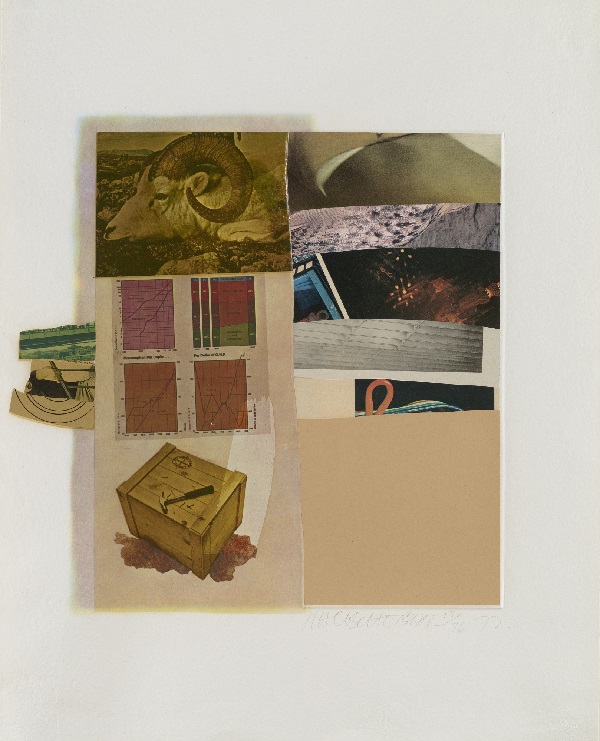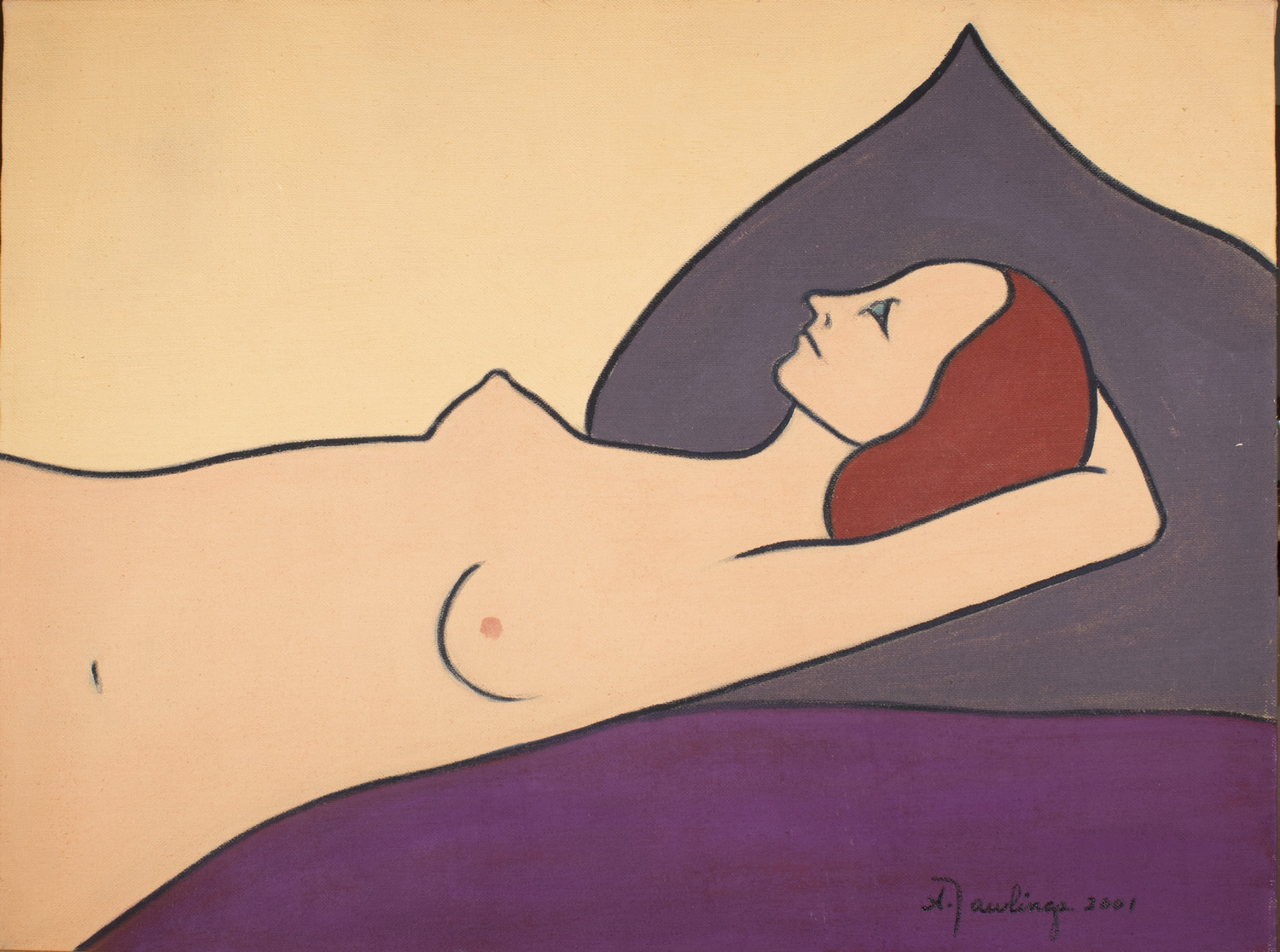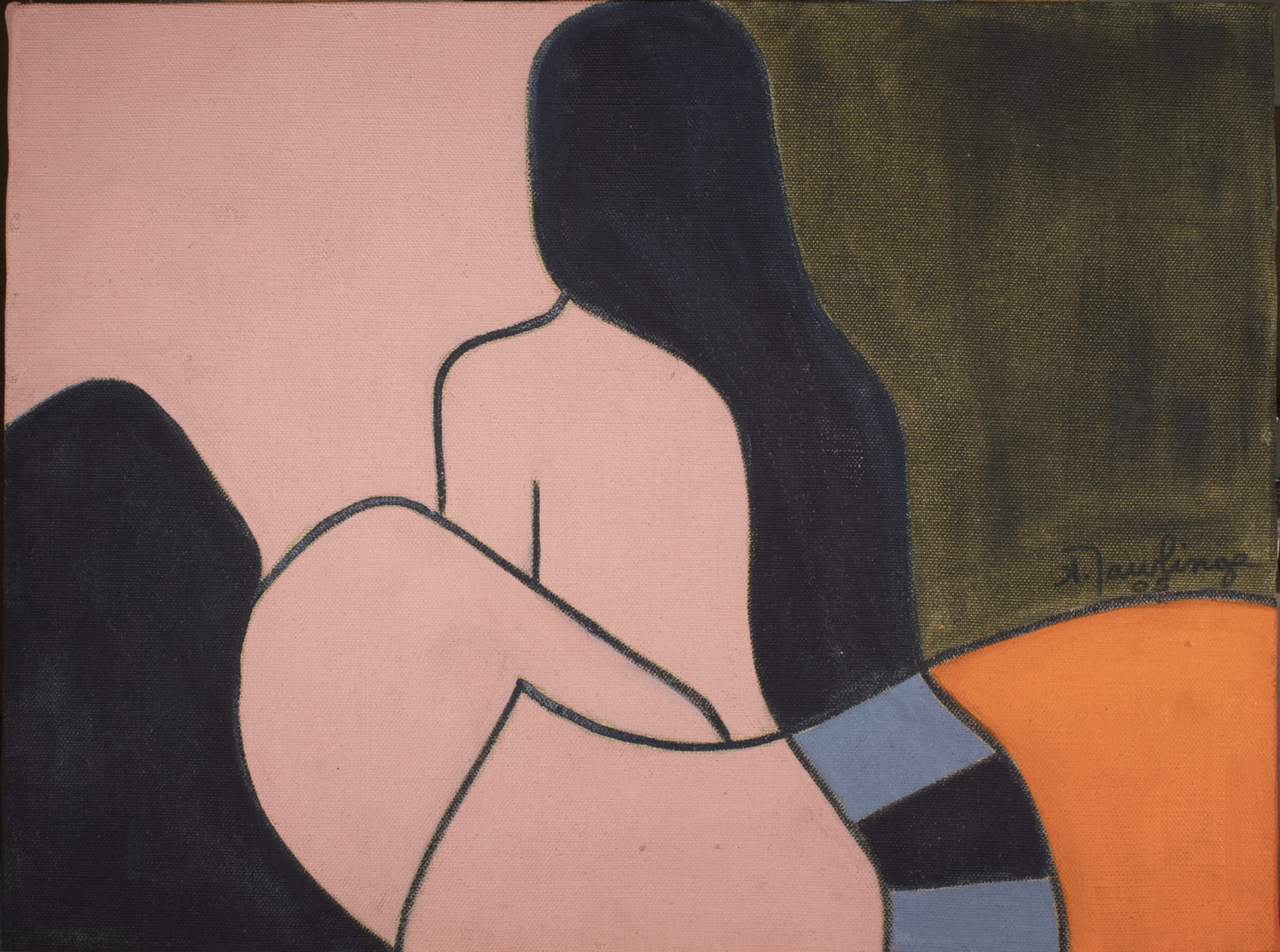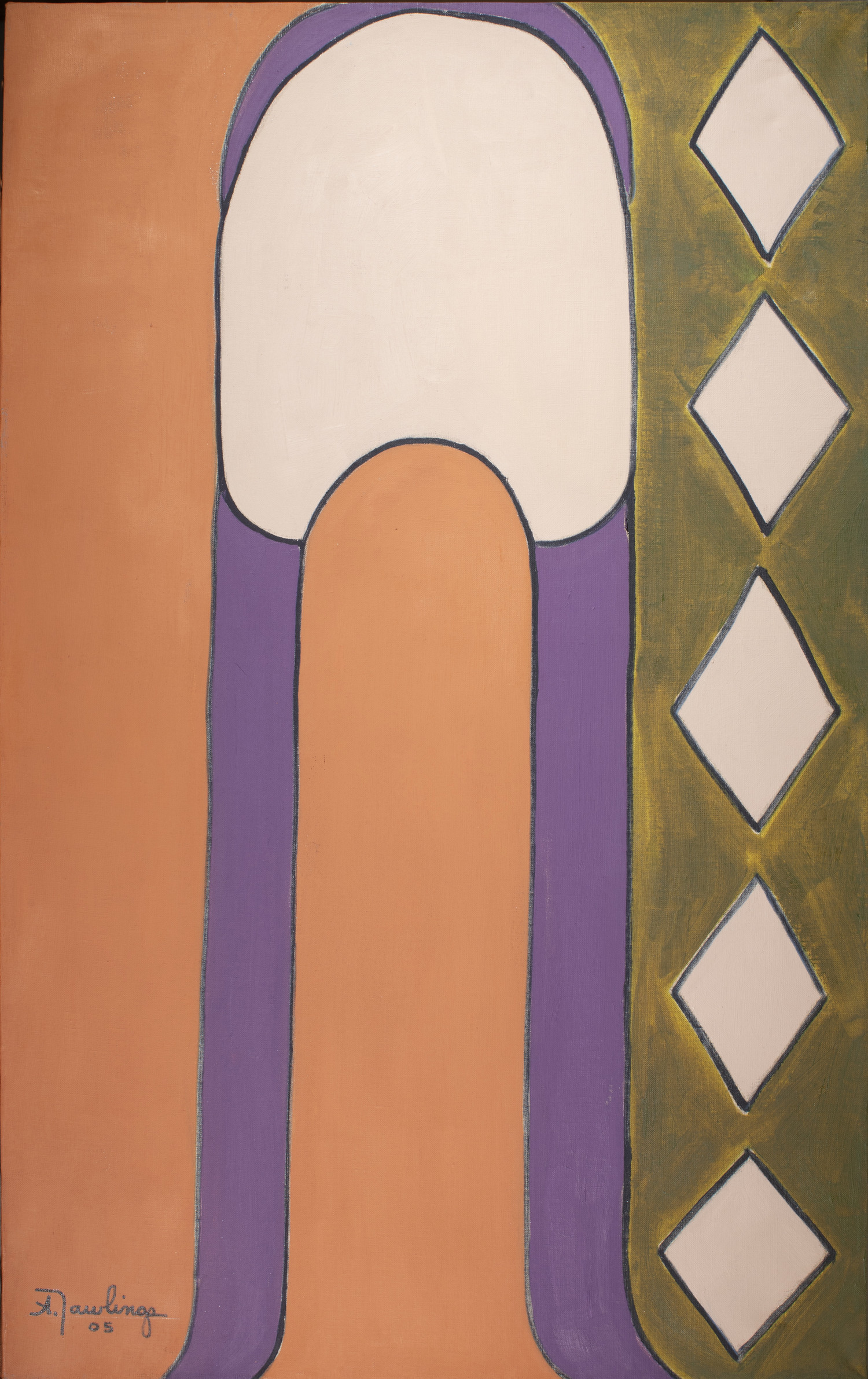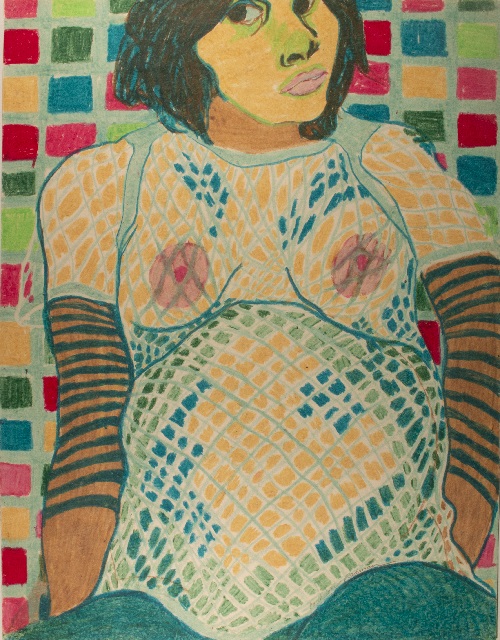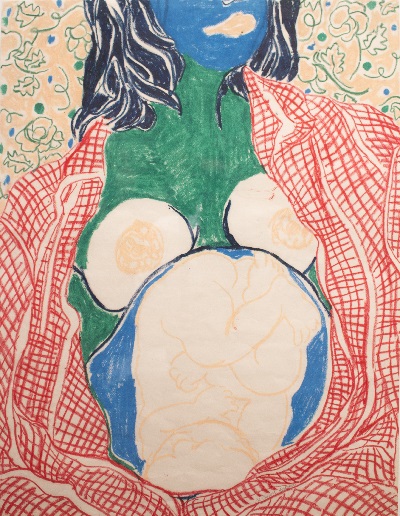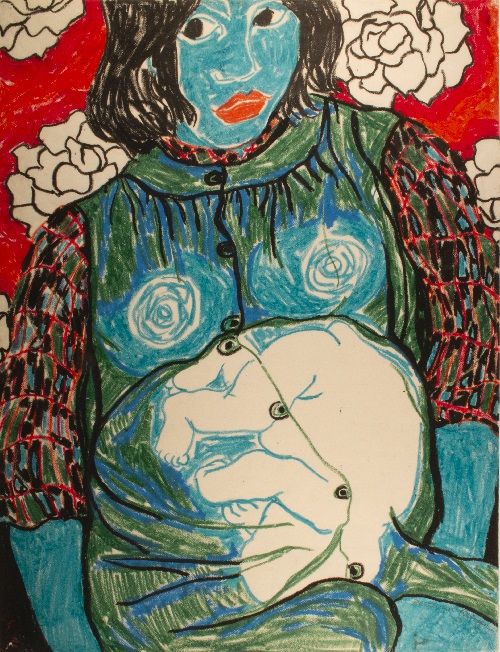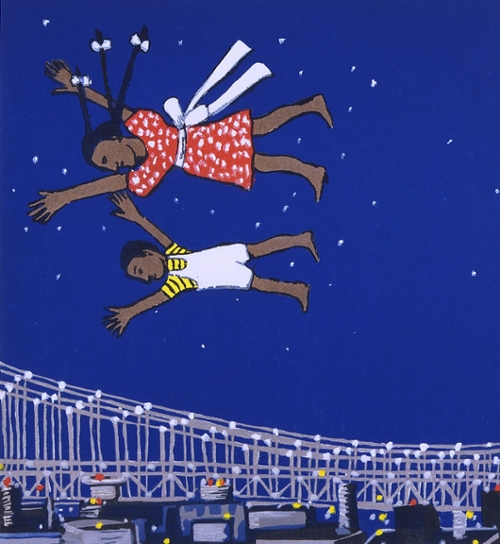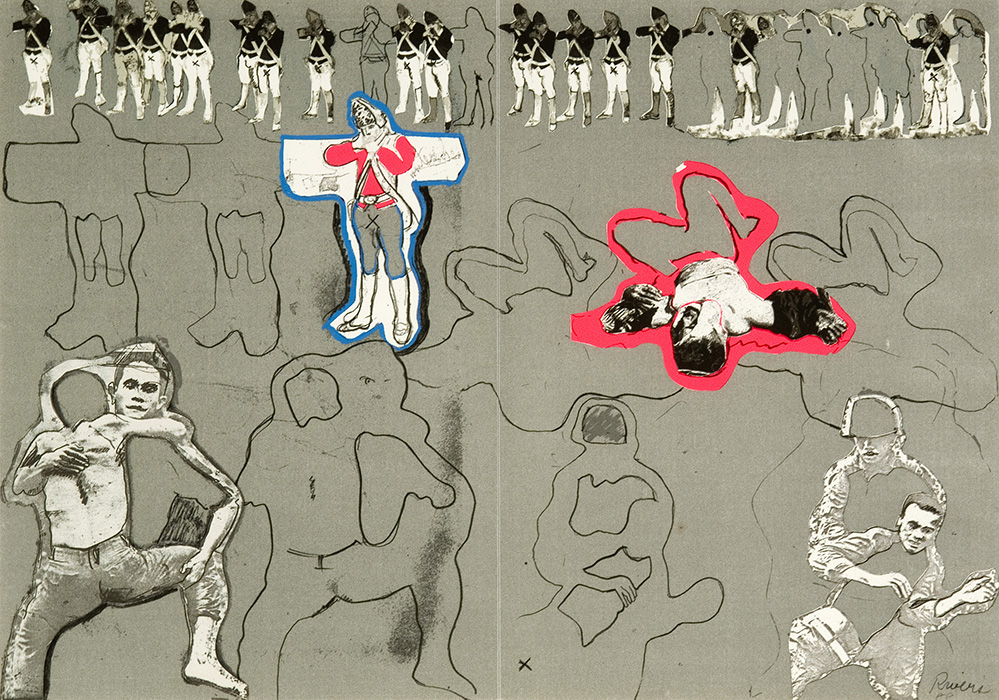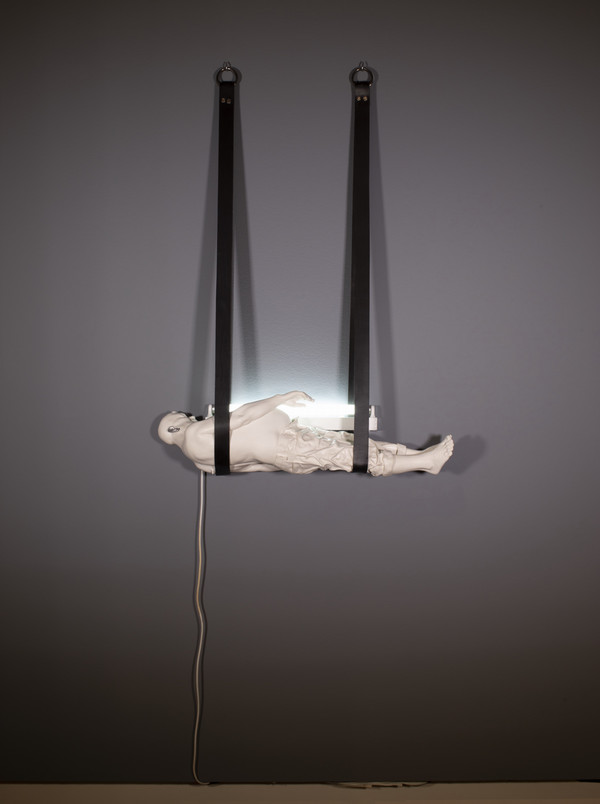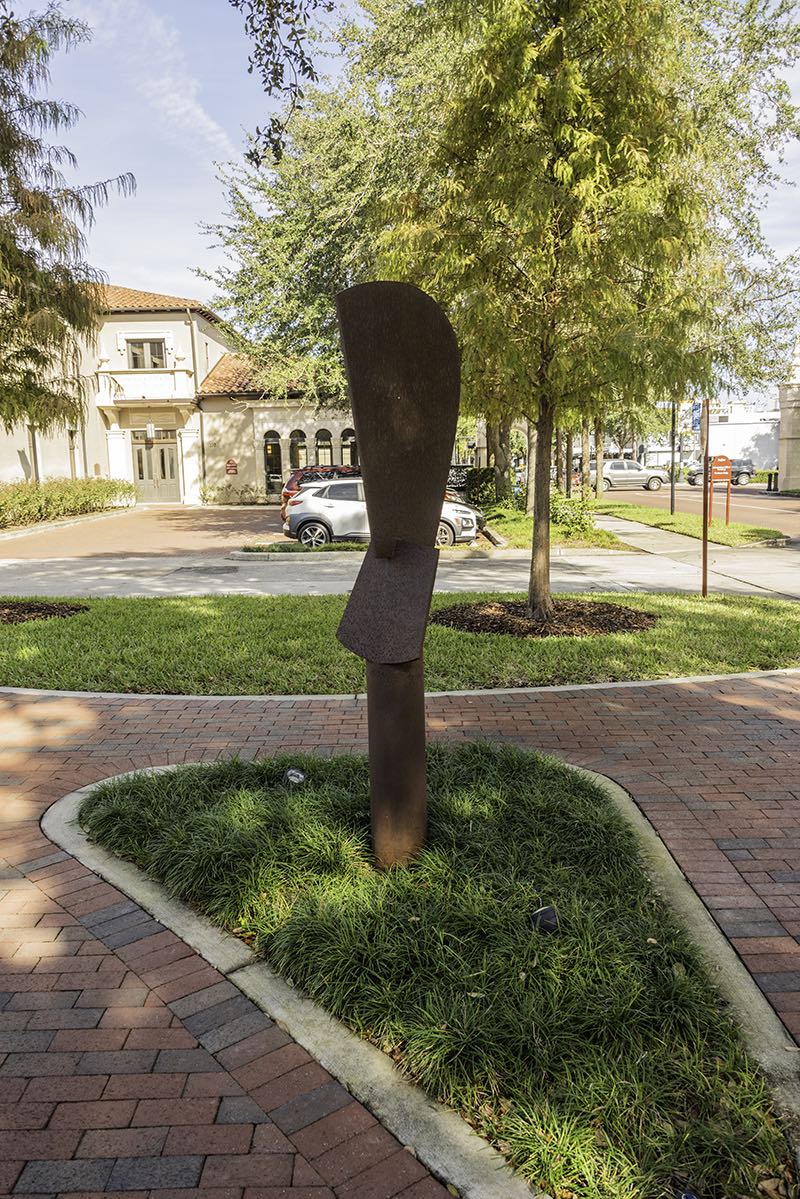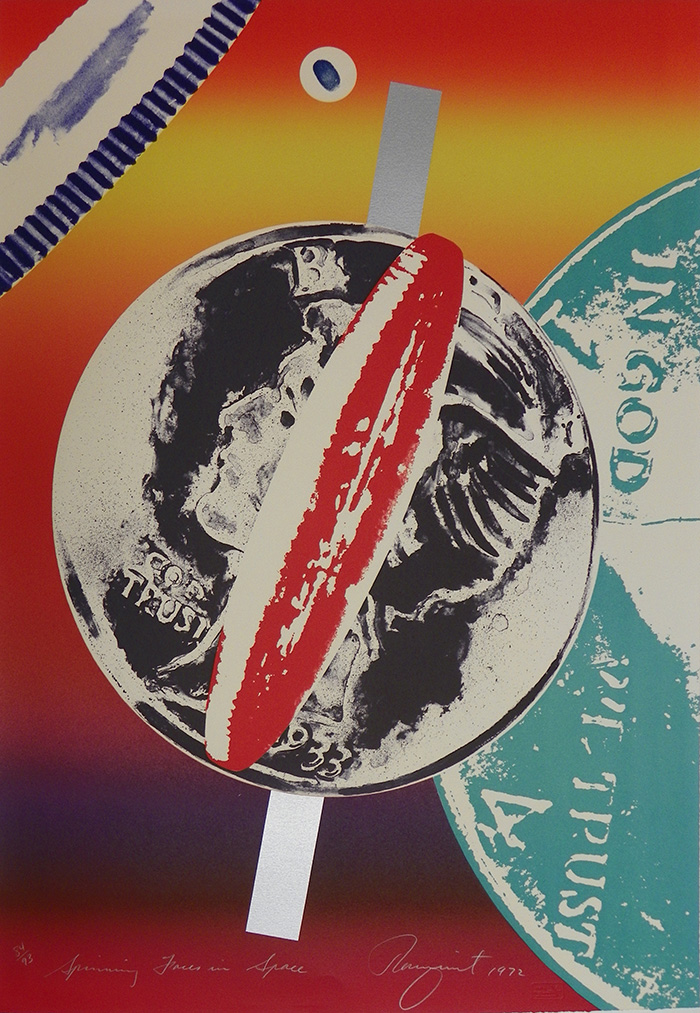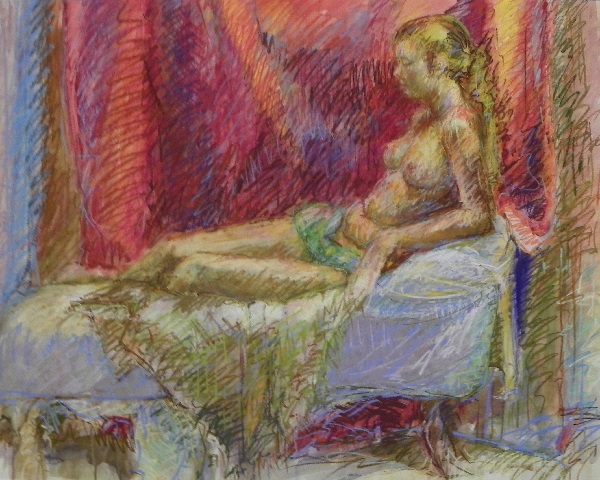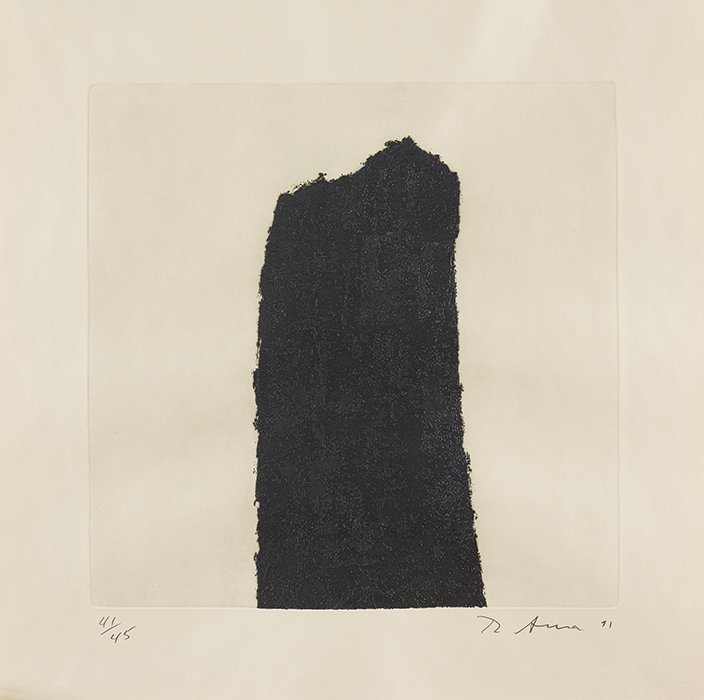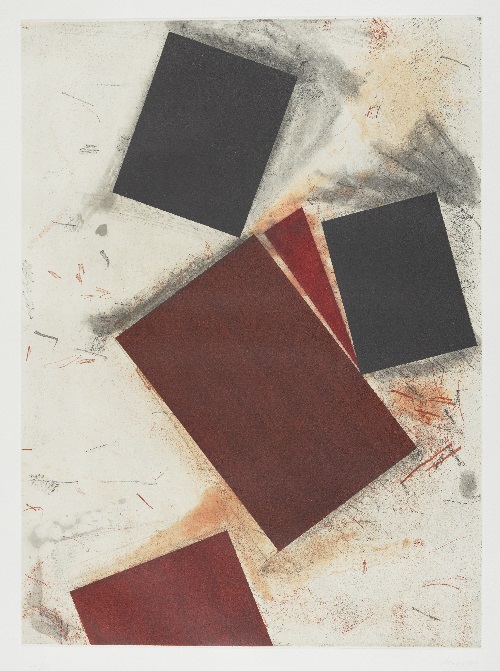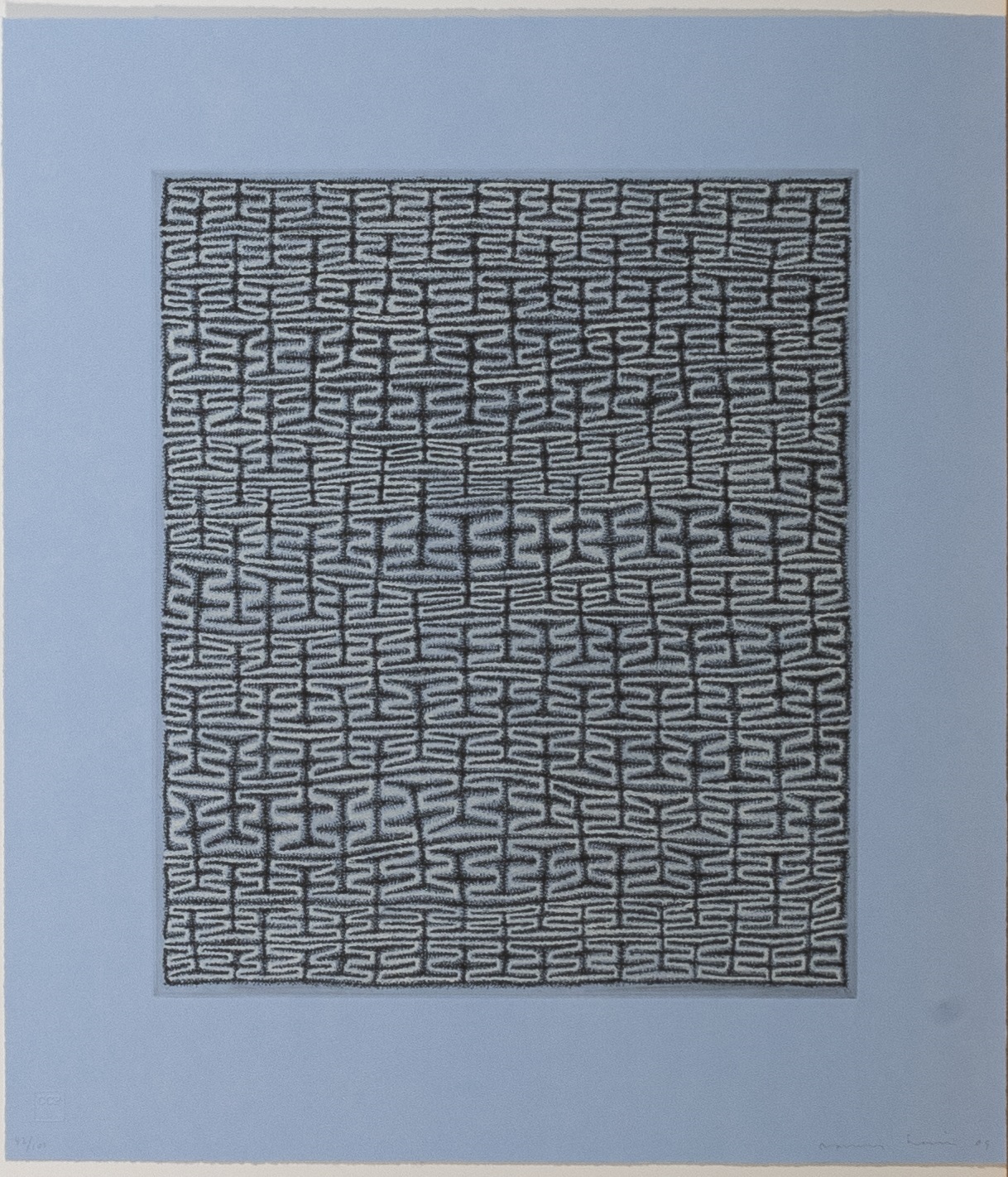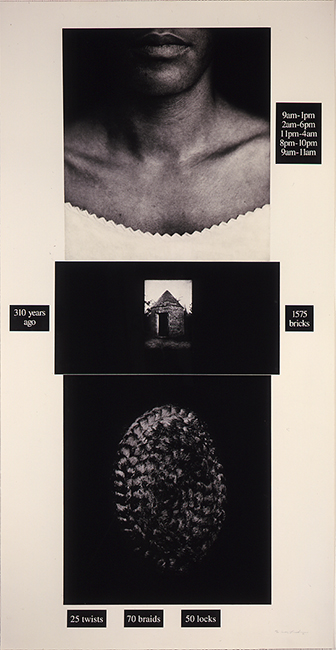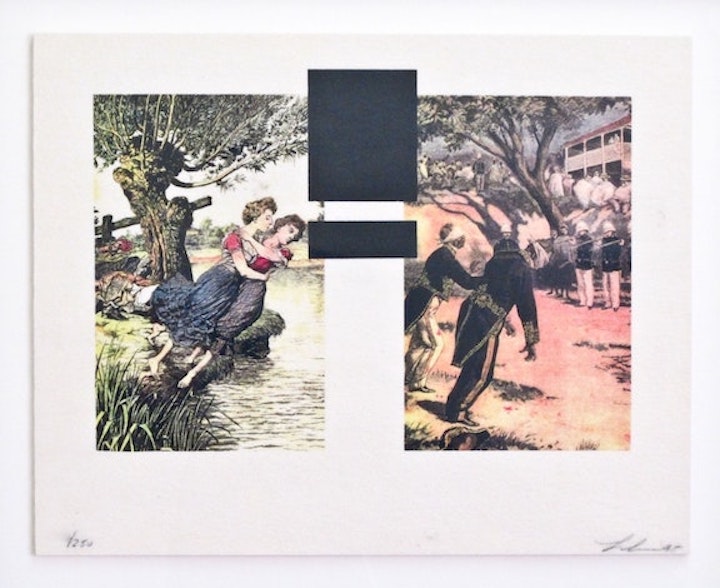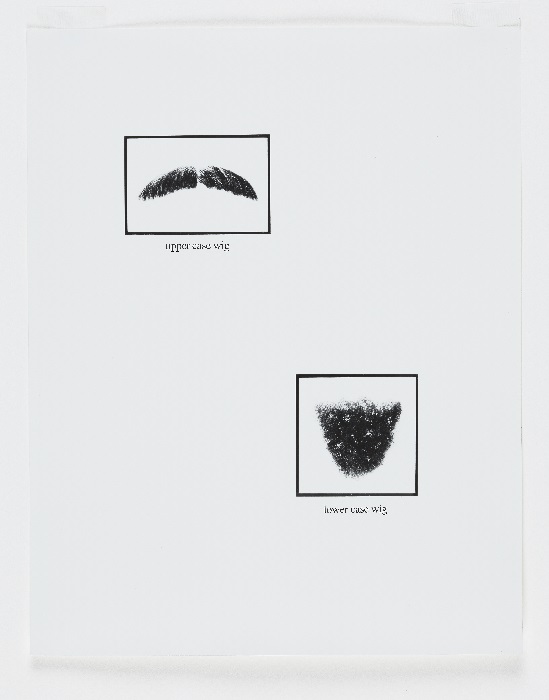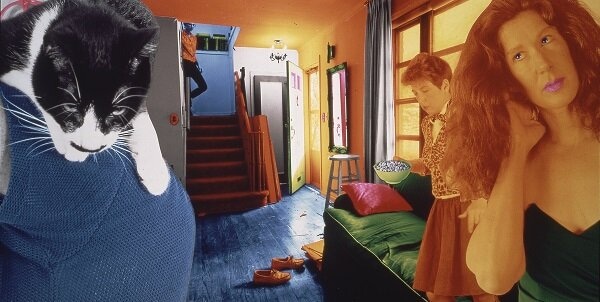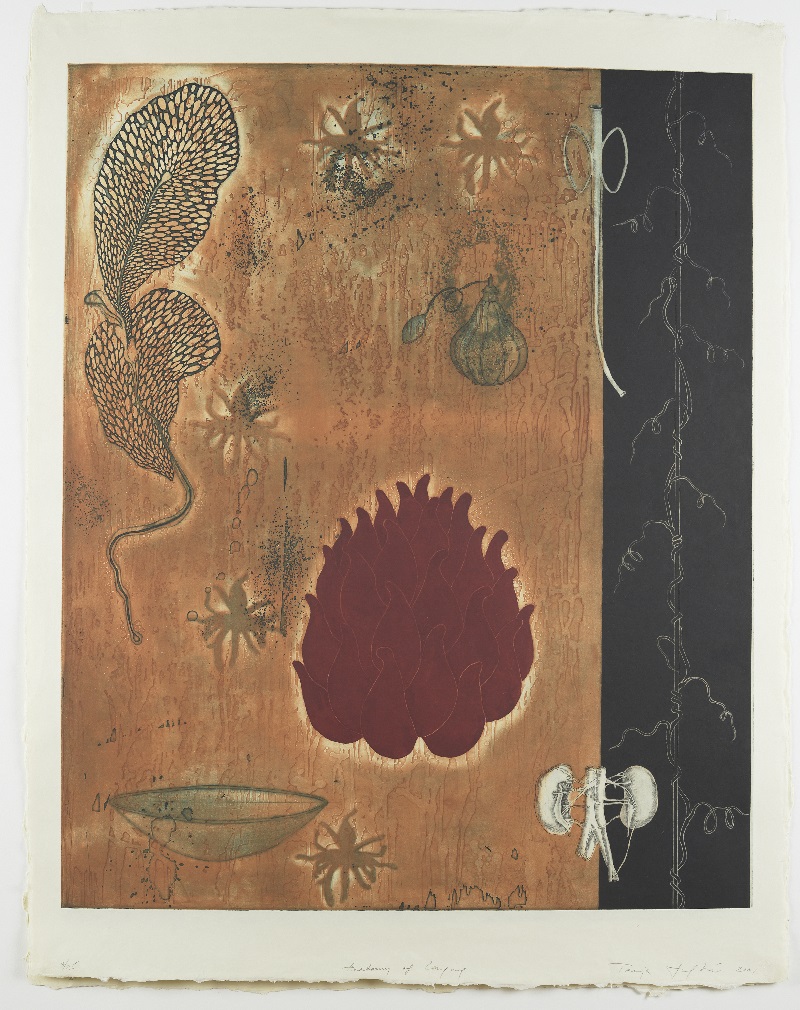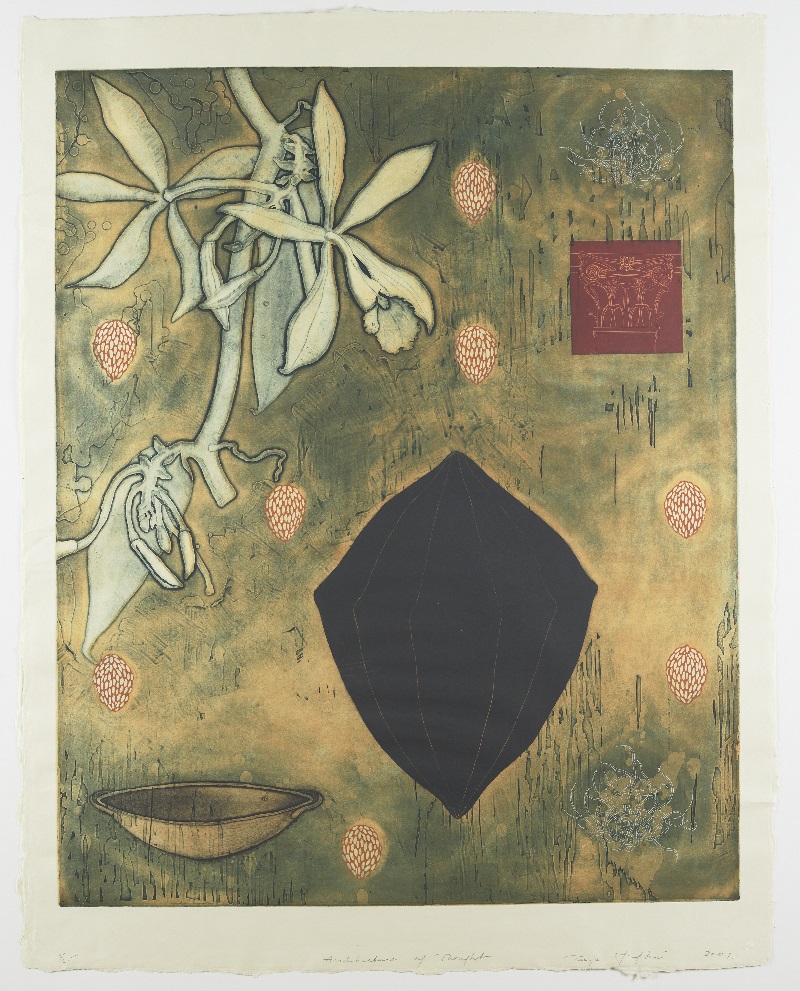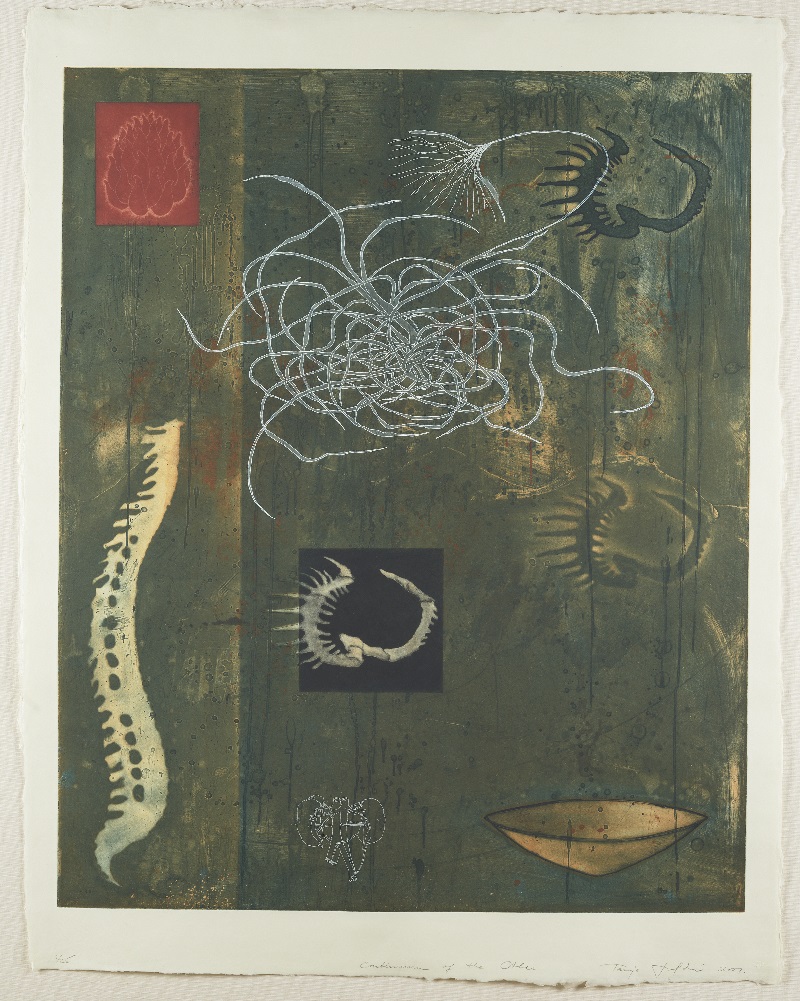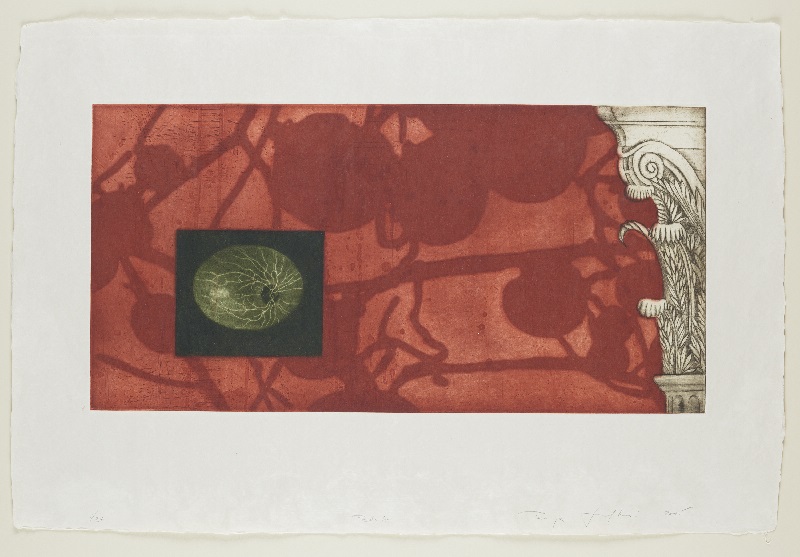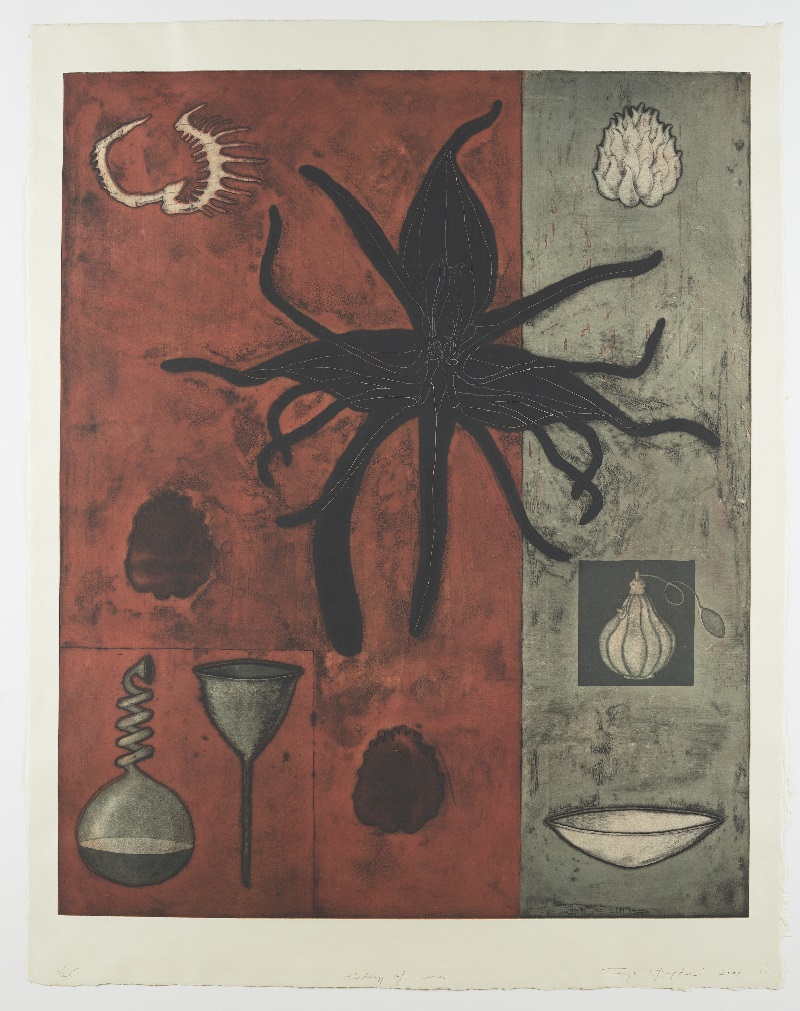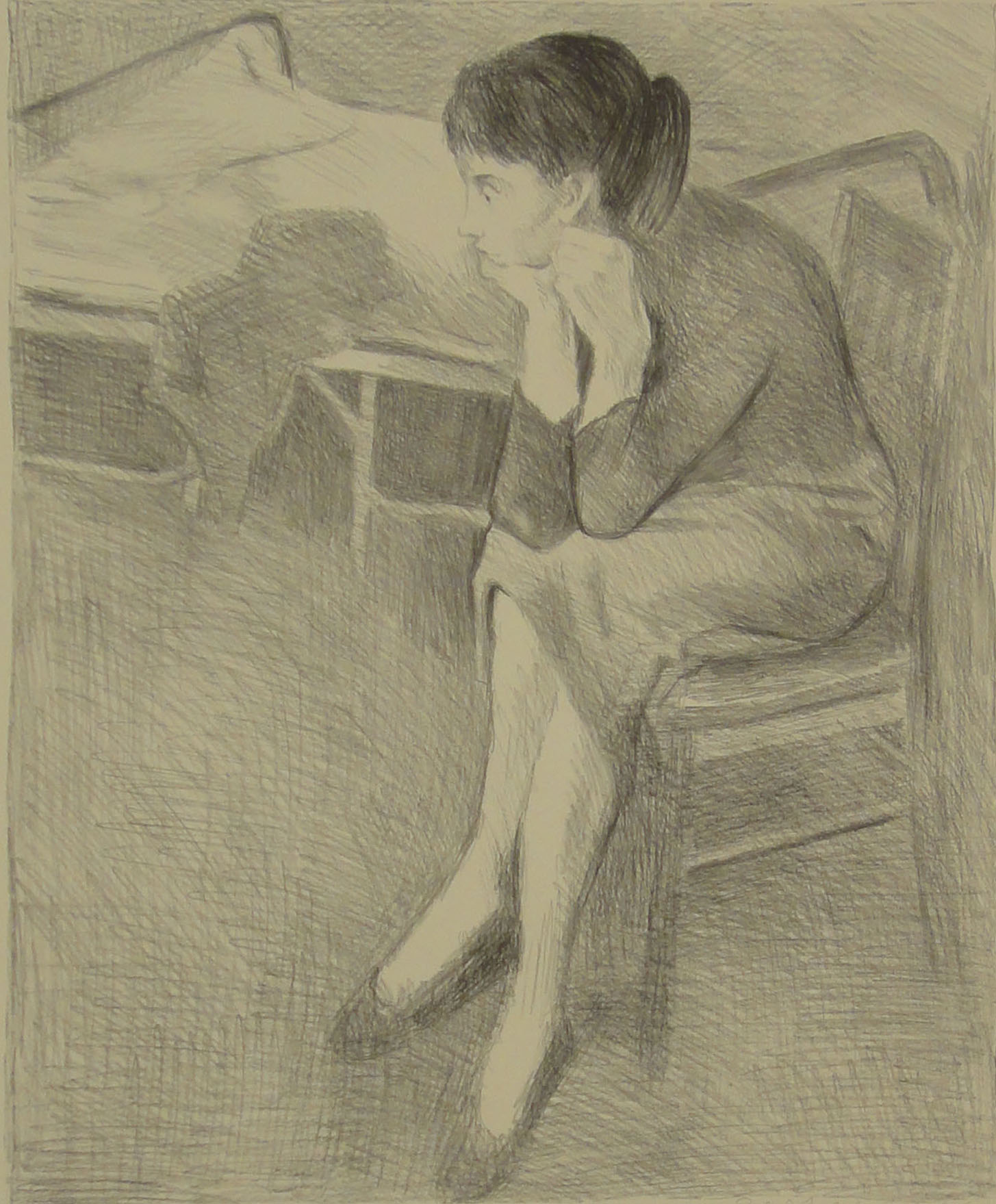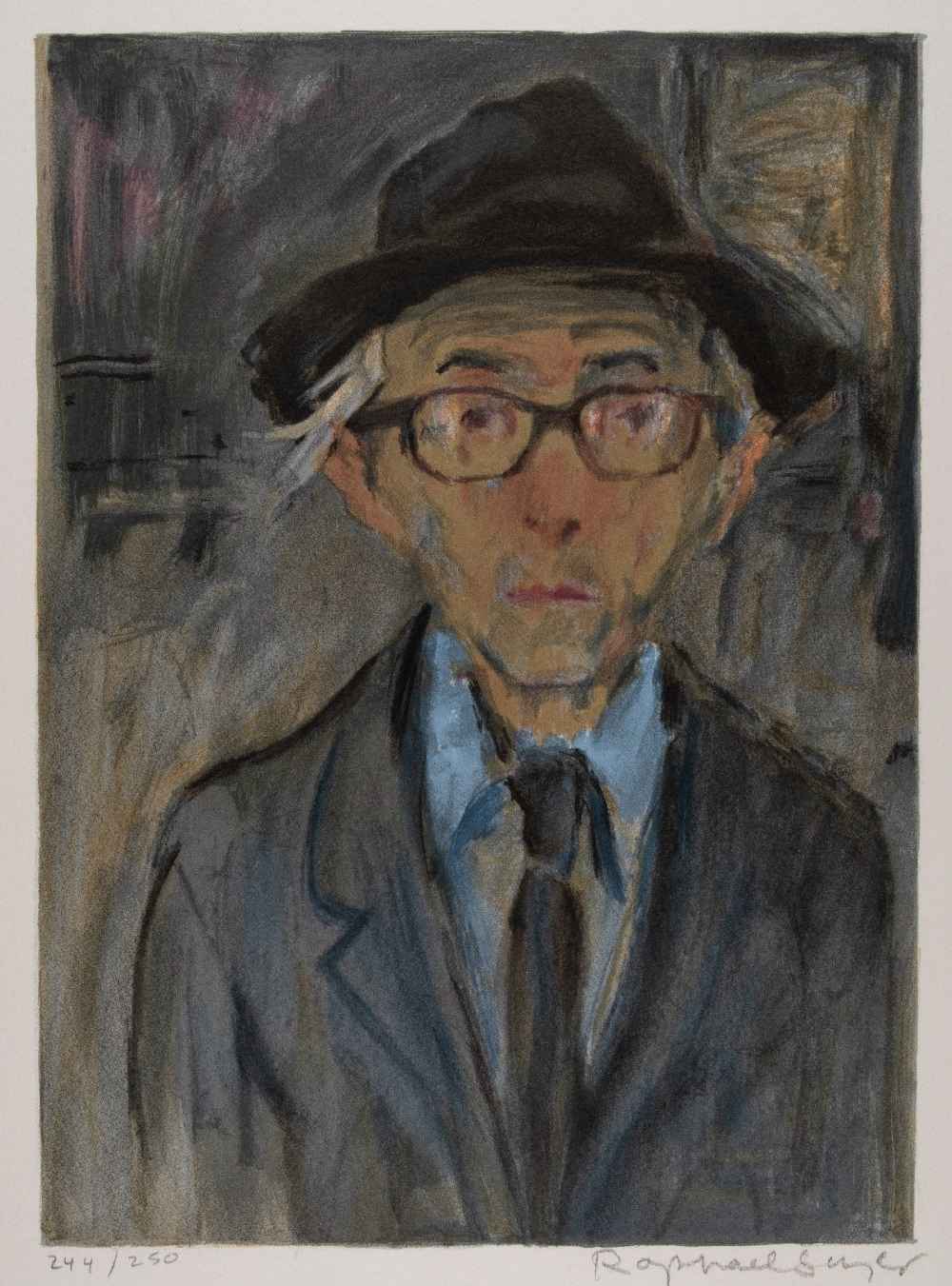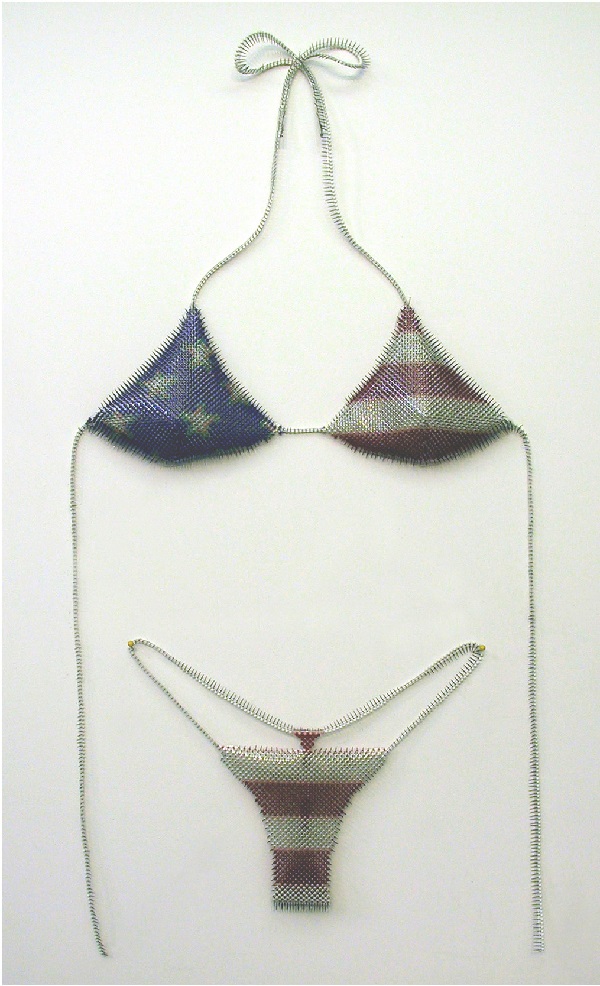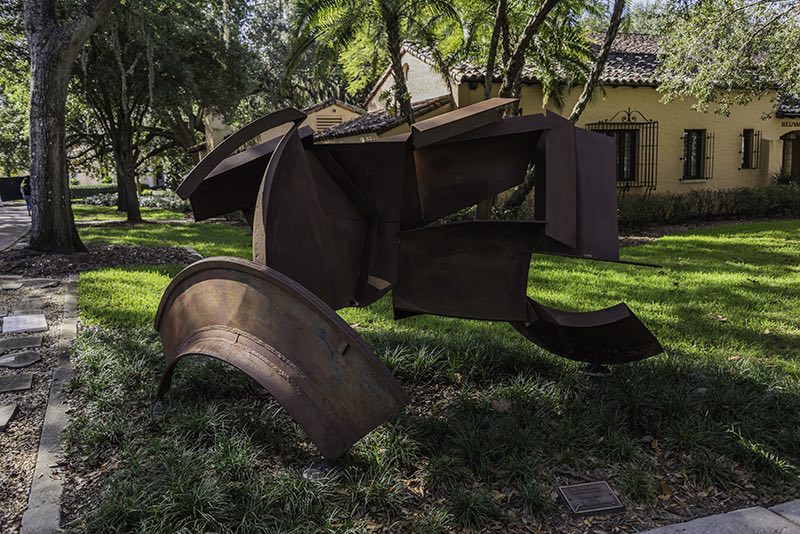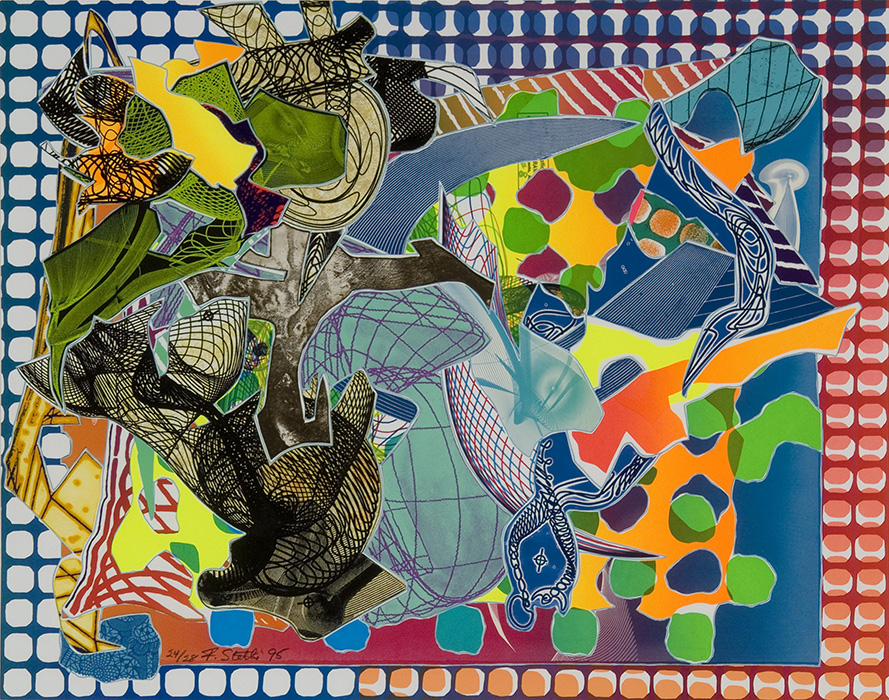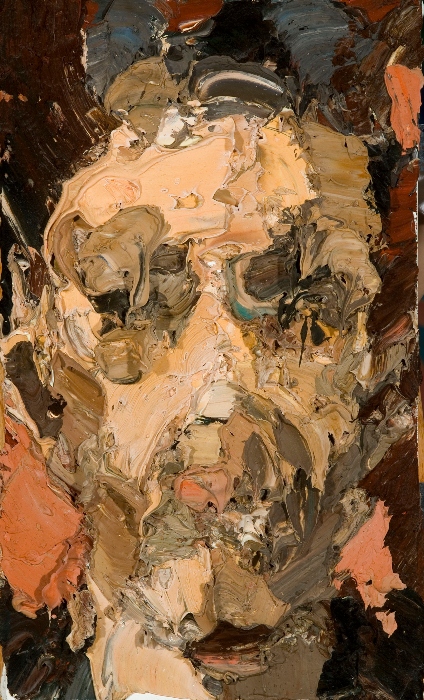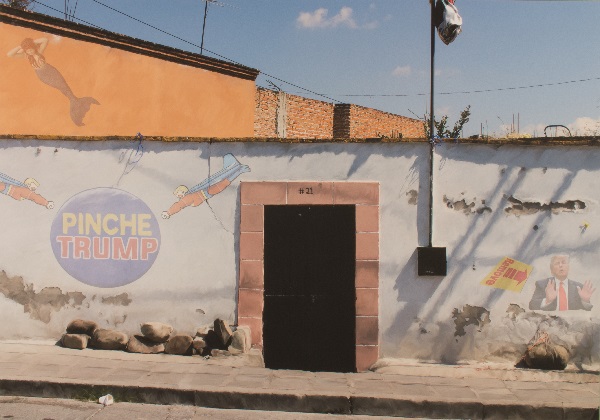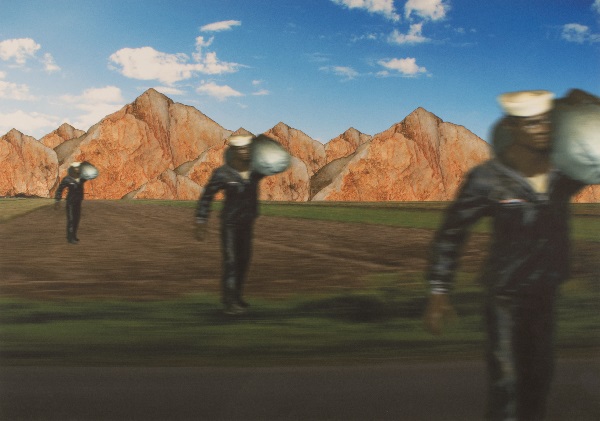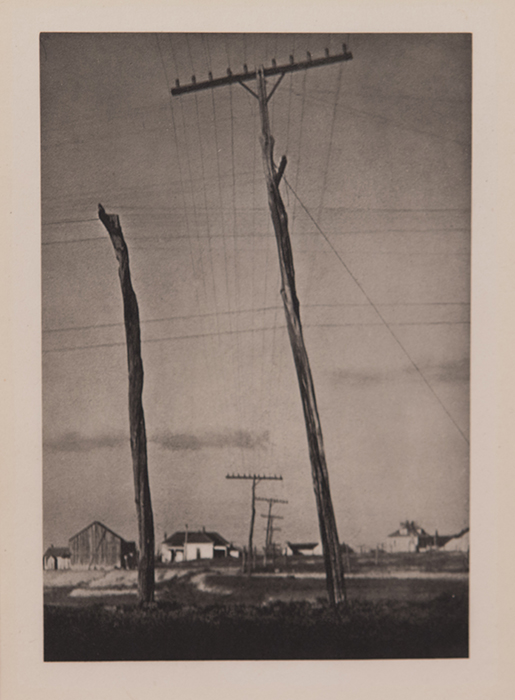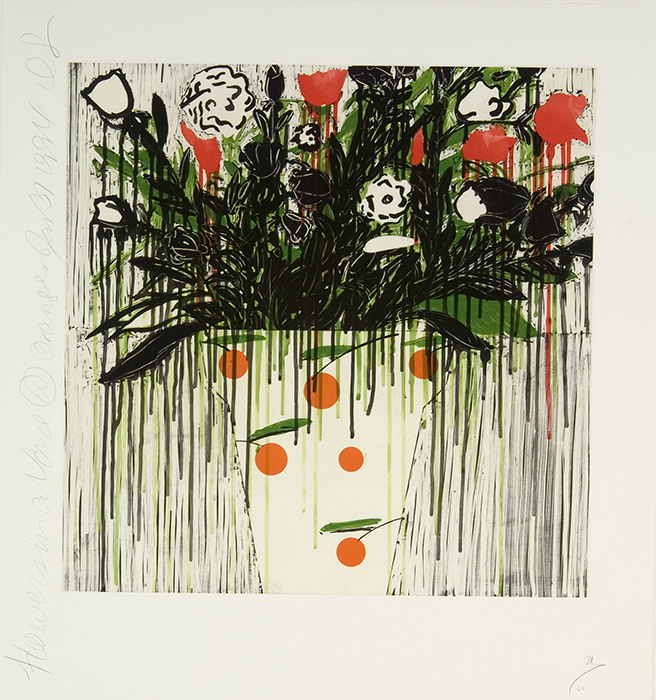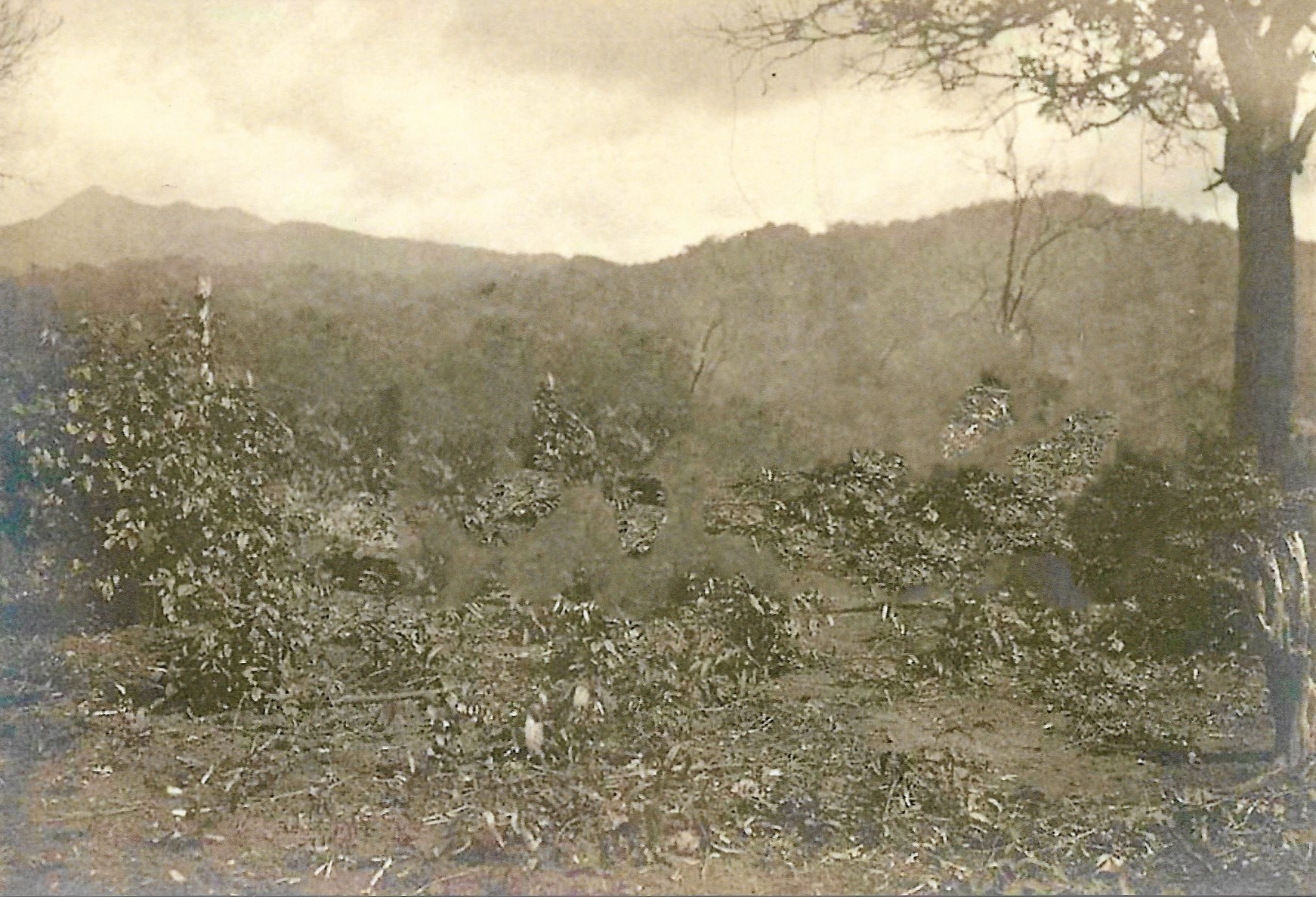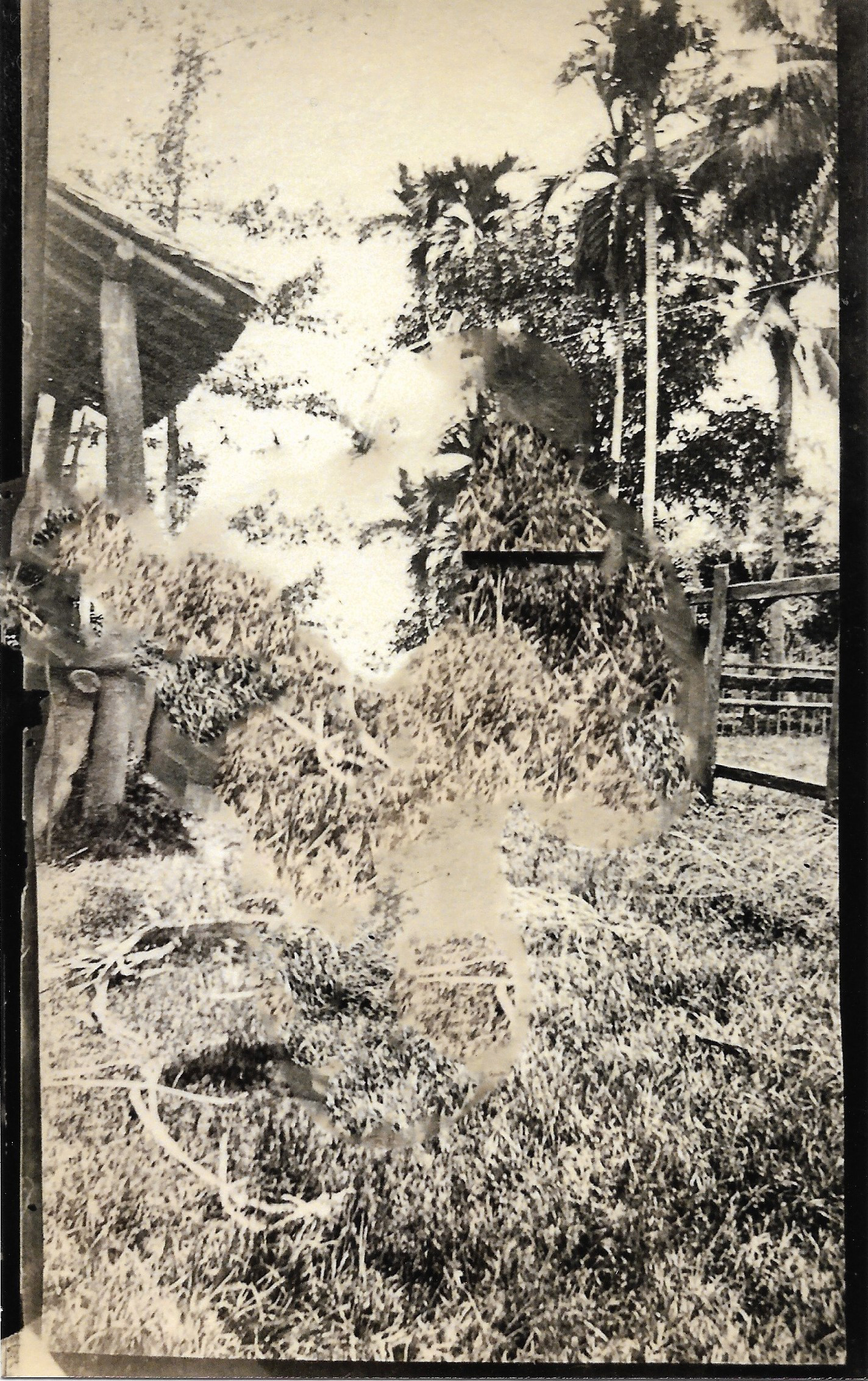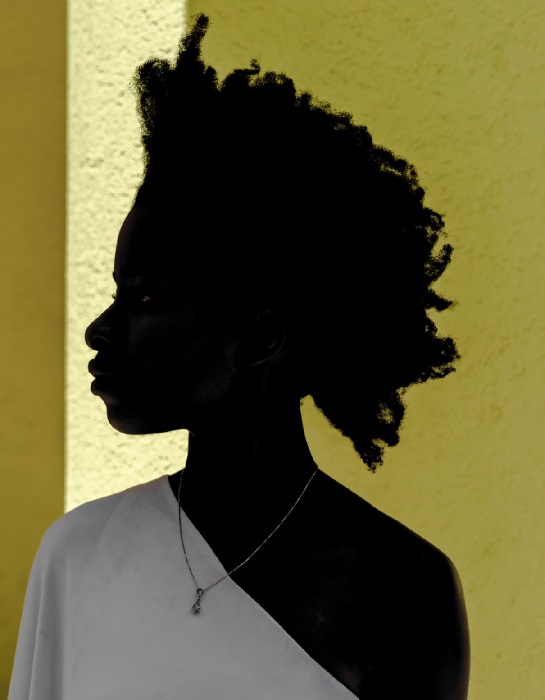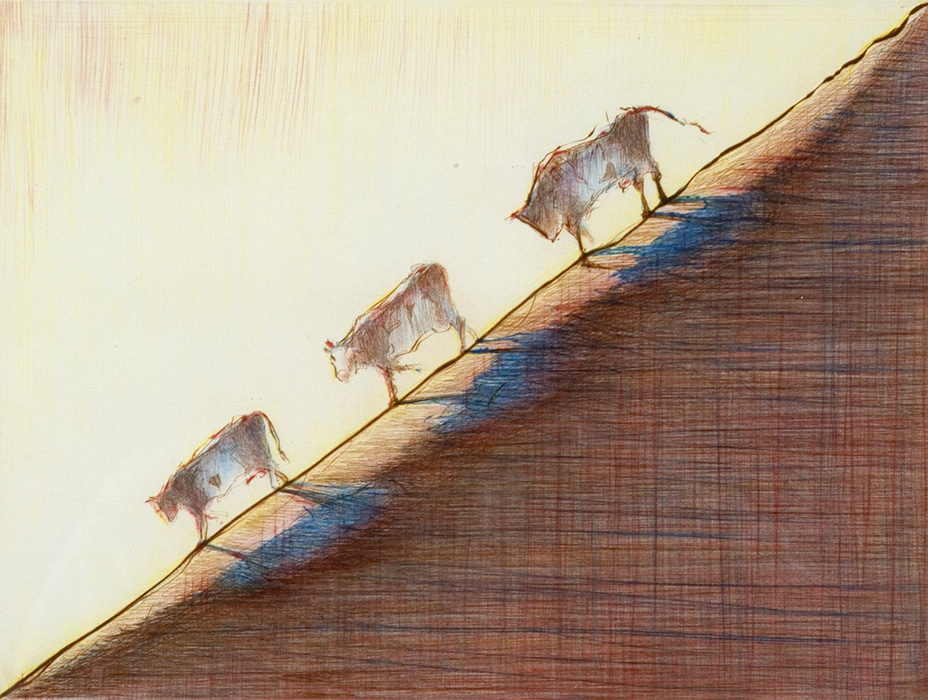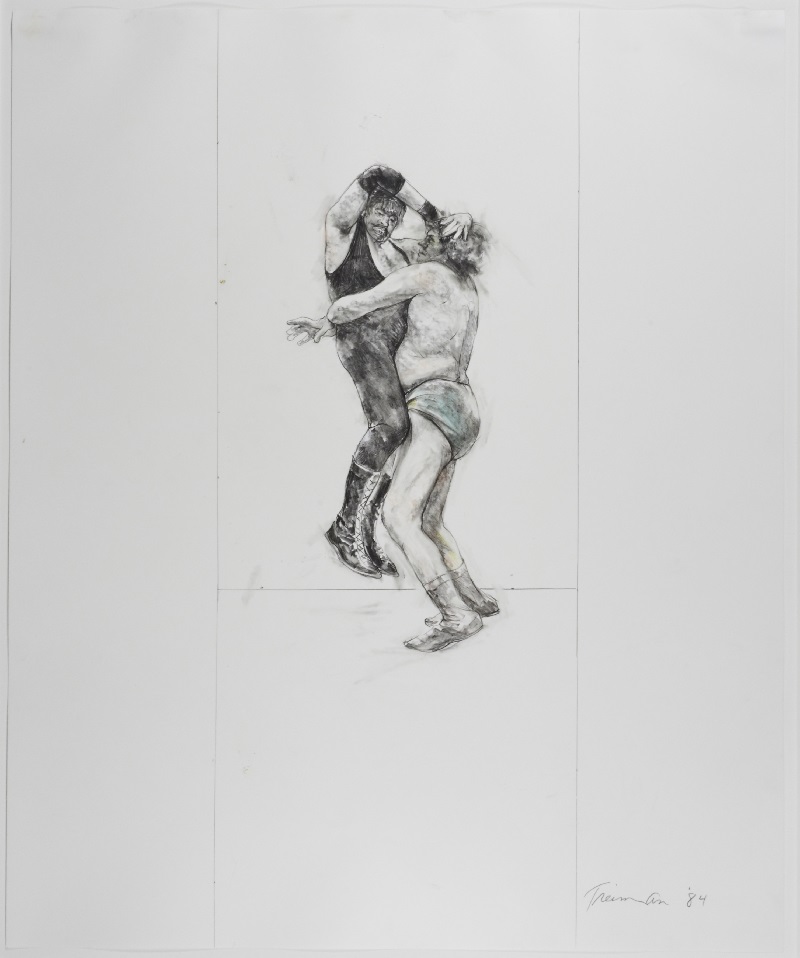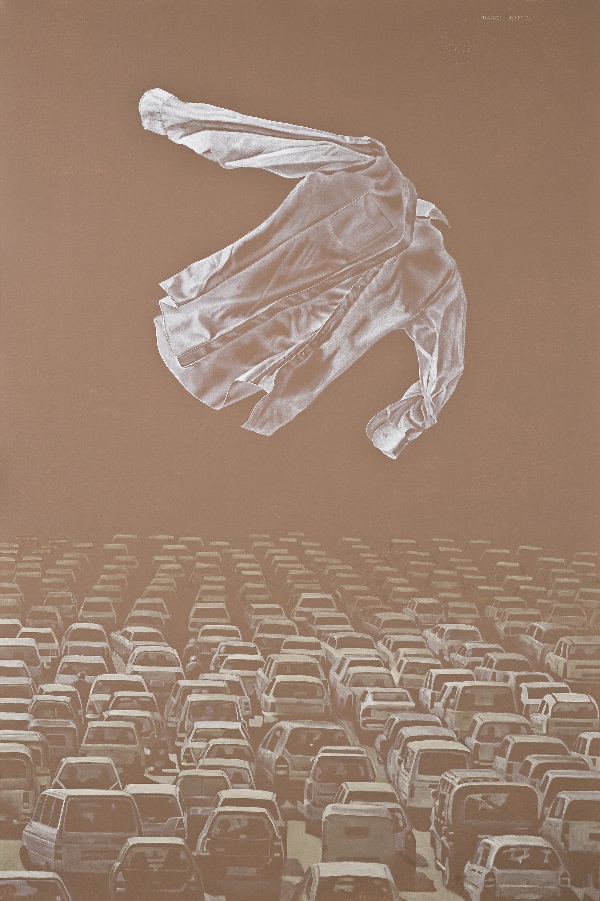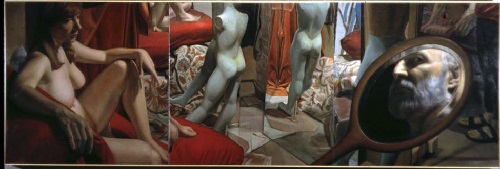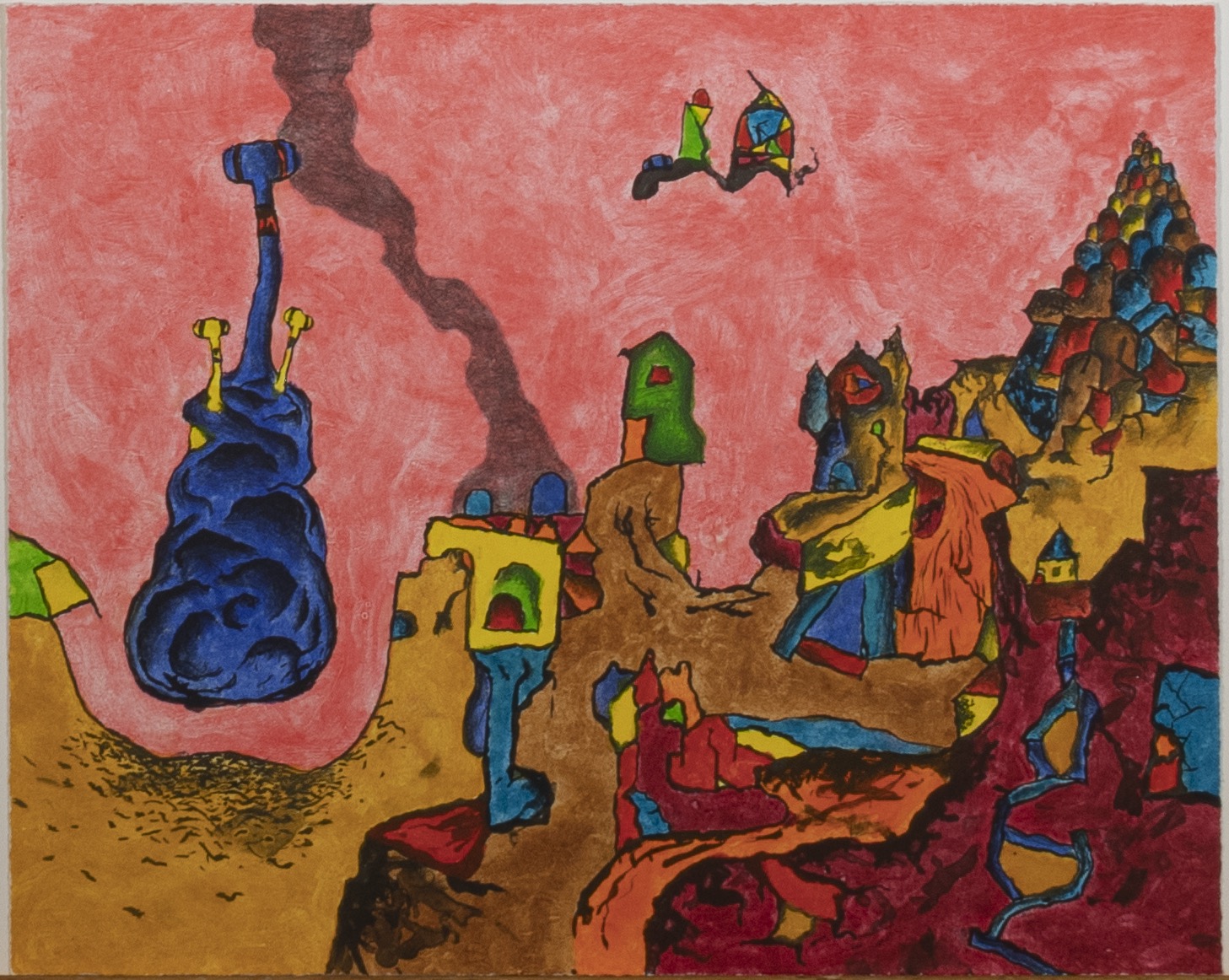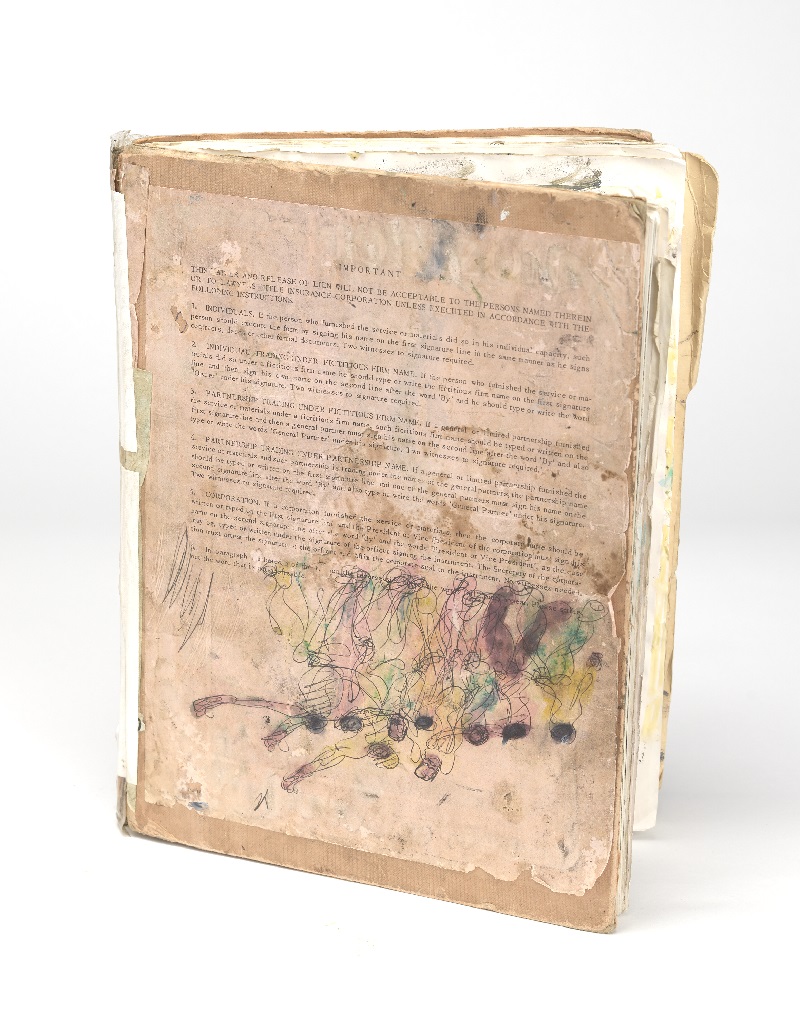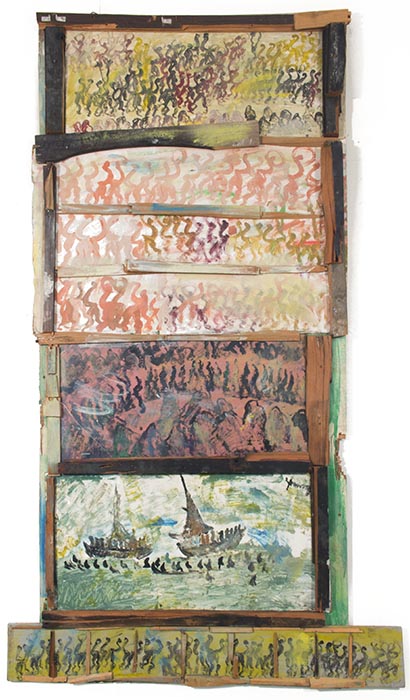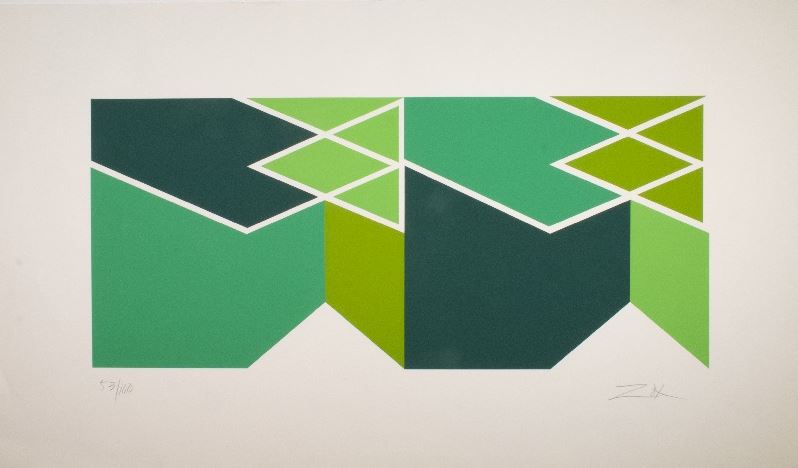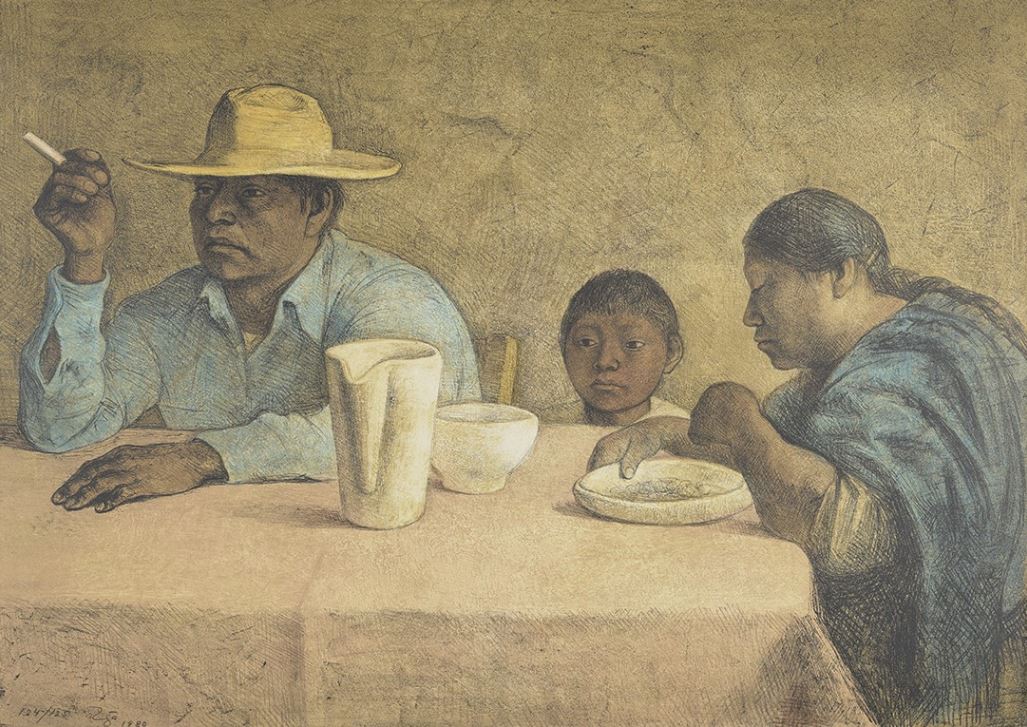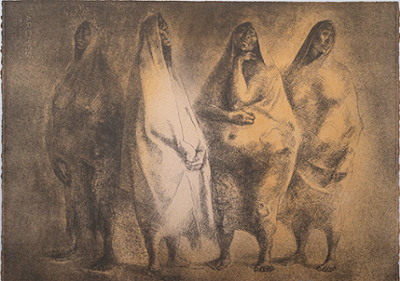Art Since 1950
Contemporary art is essential to the mission of a teaching art museum; it is the art that reflects our current reality, interprets our history, informs and molds us. Importantly on a college campus, contemporary art embodies interdisciplinary thinking and teaches about literacy, cultural currencies, and the interface of the creative process with socio-political and ethno-religious issues. At RMA, the contemporary art collection has experienced the most rapid growth over the last several years, starting with the creation of the Alfond Collection of Contemporary Art at Rollins College (one of our Featured Collections) in 2013. Due to the extraordinary generosity of Barbara ’68 and Theodore ’68 Alfond, this collection – now including more than 400 works – continues to grow. In parallel, other acquisitions address other areas of the contemporary art landscape, allowing our museum to be an active participant in the dialogue about the art of today and showcase art as an agent of change.
Contemporary art is an area of top priority for ongoing acquisitions. In recent years, we have intentionally focused on strengthening our holding by women and minority artists, especially African-American and Latino artists, offering diverse perspectives and approaches that reflect a multitude of experiences throughout our cultural history. Significant acquisitions include sculptural works by Elizabeth Catlett (1915-2012), Whitfield Lovell (b. 1959), and Rina Banerjee (b. 1963); paintings by Jacob Lawrence (1917-2000) and Ria Brodell (b. 1977); prints by Luis Camnitzer (b. 1937) and Jay Lynn Gomez (b. 1986); and a neon sculpture by Patrick Martinez (b. 1980).
PLEASE NOTE: Not all works in the Rollins Museum collection are on view at any given time. View our Exhibitions page to see what's on view now. If you have questions about a specific work, please call 407-646-2526 prior to visiting.
Artists Featured in This Section
Josef Albers
(American, 1888-1976)Homage to the Square, SP-VII, 1967
Silkscreen, sp viii, 53-125
Museum purchased from the Wally Findlay Acquisitions Fund 1990.6 © The Anni and Josef Albers Foundation/Artists Rights Society (ARS) New York, NY
Inspired by his long career as an educator and artist, Albers began the series Homage to the Square in 1948 while working at Black Mountain College, a radically experimental liberal arts college in the Blue Ridge Mountains of Western North Carolina. Believing that students could only understand artistic form through close observation and repetition of its individual elements, Albers encouraged his students to carefully examine the relationships between and among colors, lines, and other pictorial elements. This practice inspired his own work, resulting in the long-running series of paintings and silkscreens, which he continued after taking over the Department of Design at Yale, and after retiring from teaching in 1958.
First published in a portfolio of 12 in 1967, in 1972 Albers included this print in Formulation: Articulation, a series of prints which he felt encapsulated the entirety of his career. Despite his advanced age (he turned 84 in 1972), Albers supervised the printing at Ives-Sillman, which was run by two former students of his and which also printed Interactions of Color, his 1963 distillation of his ideas about color and its study and uses. These works, which the artist and critic Elaine de Kooning said could have come from no other artist, are indicative of his personality, which was both exacting and experimental, systematic and spontaneous.
Josef Albers
(German American, 1888-1976)Interaction of Color, 1963
Silkscreen
14 1/2 in. x 11 in. x 5 in.
Gift of William L. Whitney, 2002.3 © 2022 Josef Albers/Artists Rights Society (ARS), New York
Lynn Aldrich
(American, b. 1944)Pressed for Time, 1994
Ironing board, waxed paper, collected flowers, wood
35 x 53 x 14 in.
Gift of Peter Norton, 2016.16.1 © Lynn Aldrich
Taught to make keen observations on her surroundings by her research scientist father, Lynn Aldrich was raised to have an appreciation for science and the natural world. Though she received a BA in English and later an MFA in painting, Aldrich found her calling in the sculptural arts. Inspired by the revolutionary “ready-made” art of Marcel Duchamp, Aldrich’s work focuses on taking common household items and placing them in uncommon environments to be assessed as art. Though the items Aldrich chooses for her art inevitably possess certain connotations in the minds of viewers, Aldrich plays on these preconceived notions to inspire new ways of thinking about objects. Including an ironing board topped with pressed flowers, Pressed for Time invites us to reflect on the function of these objects and how they relate to the interactions between humans and nature.
Richard Anuszkiewicz
(American, 1930-2020)Reflection VII-Red Line, 1979
Silkscreen and acrylic on masonite
64 1/2 in. x 47 in. print
Gift of Charlotte Colman © Richard Anuszkiewicz/Artists Rights Society (ARS), New York 1990.18
Part of a generation of artists who came of age during the peak of Abstract Expressionism in the United States, Richard Anuszkiewicz eschewed the painterly, gestural style of that movement while embracing its interest in all-over compositions executed in large scale with bright acrylic paints. He was heavily influenced by his mentor Josef Albers, with whom the studied at Yale University, embracing the older artist’s interest in the relationships between colors, especially when rendered in precise, geometric shapes. Anuszkiewicz took up printmaking in the early 1960s, and like many artists of his generation originally viewed it as a means of reproducing his paintings in smaller and more accessible formats. He quickly realized the possibilities for further color experimentation inherent in lithography and silkscreen, however, and embraced printmaking as a core part of his artistic practice.
This print, one of a series of Reflections executed in 1979, is the result of a particularly fruitful period of experimentation Anuszkiewicz began in the mid-1970s. Silkscreen—in which pigment is forced through a mesh screen onto paper or other substrate—allowed him to make particularly large prints, especially when printed onto Masonite, a sturdy type of composite wood. Anusckiewicz began printing these works as many as four times, creating thick buildups of color. These objects, with their size and paint-like surfaces, approach the status of painting-print hybrids, creating hard-edged yet luminous surfaces that minimize their own objecthood, instead emphasizing the environmental impact of all that color.
Milton Avery
(American, 1885-1965)Pelican, 1951
Monotype
18 in. x 24 in.
Gift of the Milton Avery Trust, 1998.11 © The Milton Avery Trust/Artists Rights Society (ARS) New York, NY
Hailing from a working-class family, Milton Avery was the sole breadwinner for his mother and sisters starting at age twenty, working a variety of blue-collar jobs at night, leaving him time to study art during the day. It was only at age forty when he and his wife Sally moved to New York, where Avery was exposed to European and American modernism for the first time, that he devoted himself to his art full time. Sally’s work as an illustrator enabled him to focus on painting, and he developed a unique style that blended French Fauvism, American folk art, and his interest in the luminous possibilities of paint. Out of step with the social realism that dominated in the 1920s and 1930s, Avery’s thinly painted style and careful experimentation with color had a strong influence on Adolph Gottlieb, Barnett Newman, Mark Rothko, and other younger Abstract Expressionist painters whom he befriended in the 1940s.
This print was made in 1951 while Avery was in summer residence at The Research Studio in Maitland. Too weak to paint due to a recent heart attack, he instead explored the possibilities of monotype, a printmaking method in which ink or other media are applied directly to the printing surface, in this case glass. Using a sponge, he wiped the ink on the surface, creating thinly luminous bands of color that allowed the white of the paper to show through. This practice was hugely influential on his later painting, as he began to use sponges to apply his paint while also simplifying his forms. In this work as in other frequent representations of both birds and the sea, Avery evokes the sense of yearning alienation that he felt was a core aspect of the experience of modern life.
Peggy Bacon
(American, 1895-1987)Lamentable Lunch, 1952
Gouache on Paper
7 ½ in. x 5 in.
Gift of Anne M. Farr. 1997.7
Peggy Bacon, born to artist parents, followed in their footsteps by attending the Art Students League in New York during its heyday, where she studied with George Bellows, John Sloan, and other American realists. Though she trained as a painter, her earliest work was in drypoint, a printmaking medium in which the painter scratches a design directly on a metal plate with a specialized needle. During the 1920s and 1930s she turned to oil pastels, using them to execute a series of caricatures of her contemporaries in the New York art and intellectual worlds. These pastels, which demonstrate her flair for witty exaggeration, brought her a great deal of fame as they were published in The New Yorker, Vanity Fair, and other widely read magazines. She was also a prolific illustrator of books.
After about 1945, Bacon began to return to painting, working mostly in gouache in the 1940s and 1950s before returning to oils in her last years. Lamentable Lunch is a fine example of her gouache work, which turned from caricature to subtler—though still wittily ironic—portraits of everyday Americans. This painting demonstrates her mastery of the medium, a kind of opaque watercolor, as she uses her sweeping brushstrokes and fine eye for color to show an office worker eating a hurried meal of coffee, donut, and jelly sandwich, seemingly crammed into a café’s coat room. Bacon’s eye for everyday detail and sly sense of humor remained a constant throughout her career.
Myrna Báez
(Puerto Rican, 1931-2018)Pausa, 1989
Color Serigraph
41 ½ x 29 ¼ in.
Gift from the Collection of Benjamin Ortíz and Victor P. Torchia Jr. 2022.4 © Estate of Myrna Báez González
Rina Banerjee
(American, b. Kolkata, West Benghal, India, 1963)Her captivity was once someone's treasure and even pleasure but she blew and flew away took root which grew, we knew this was like no other feather, a third kind of bird that perched on vine intertwined was neither native nor her queens daughters..., 2011
Anglo-Indian pedestal 1860, Victorian birdcage, shells, feathers, gourds, grape wine, coral, fractured charlotte doll heads, steel knitted mesh with glass beads
83 7/8 x 83 7/8 x 72 in
Museum purchase from the Michel Roux Acquisition Fund, 2016.20
With her organic, carefully orchestrated sculptures, Rina Banerjee reveals a migration of ideas and cultural symbols. She interrogates historic objects— where they come from and the stories they can tell—in her distinctive works. In conceiving this work, the artist focused on domestic slavery. A Victorian birdcage, shaped like a large home, forms a central part of the composition. Birdcages reoccur across Bannerjee's diverse works. Here, the cage remains open, giving a sense of flight; the captive has fled bondage. Various meanings are assigned to objects by their creators and their owners. Banerjee ponders the value of goods and their perceived worth. Here, the prominent orange feathers were purchased from a website promising “authentic Asian goods,” while the large and whimsical gourds were grown locally in Florida and purchased on the land where they were harvested. In this work, Banerjee navigates the tension between the local and the global, and the notion of authenticity is explored and deconstructed. While the artist is interested in the movement of goods and people, her sculptures, like this one, testify to a migration of ideas as well. This work in particular is significant in her oeuvre not only for the ideas it imparts, but for its noteworthy presentations.
Leonard Baskin
(American, 1923-2000)Rat, ca. 1965
Ink
9 5/8 x 15 3/8 in.
Gift of Mr. Ralph E. Kaschai, 1979.24
Leonard Baskin was in many ways a man out of step with his times. Raised in a religious Jewish household in New Jersey and Brooklyn, Baskin was possessed throughout his career with a sense of the potential for apocalyptic doom latent in the human condition. Though he first came to prominence during the time of Abstract Expressionism, when artists eschewed the figurative and embraced new techniques and synthetic media, Baskin was a resolute traditionalist. Unlike many artists of his generation, he trained in Europe as a sculptor and printmaker, and preferred working with ancient materials like wood, copper, and ink over the bright acrylics embraced by his contemporaries.
In his drawings and prints Baskin often created grotesque human and human-animal hybrids, often diseased or in states of decay, a reflection of his preoccupation with the potential in humanity for moral decay. This ink drawing depicts a massive, distended rat, the dark washes of ink bleeding over the sketchily outlined form. The blackness overwhelms the tiny head, blotting out the creature’s eyes and blurring the line between life and death. Moving away from the head, the ink smears first to gray and then to white, which stands out against the creamy beige of the paper. This transition from black to white suggests something of a Manichean struggle between light and darkness, good and evil.
Jean-Michel Basquiat
(American, 1960-1988)Academic Study of the Male Figure, 1983
Brown screenprint on Okiwara paper
31 1/4 x 39 3/4 in.
Museum Purchase from the Michel Roux Acquisitions Fund, 2007.14
Internationally-renowned American artist, Jean-Michel Basquiat, defined his career through his works in painting and print. He often drew inspiration from his personal Puerto Rican and Haitian heritage. At the age of eight, Basquiat was hit by a car and suffered from several broken bones and internal injuries. While he was healing, his mother gave him the medical textbook Gray’s Anatomy. This period of trauma and recovery had a lasting effect on the artist, and the anatomical drawings found within the textbook served as early references for Basquiat’s later works. This work builds on that influence while it simultaneously recalls Leonardo da Vinci’s human anatomy studies. Basquiat’s work is often associated with the Neo-Expressionism art movement, in which the importance of the human figure was reasserted into the canon of contemporary art with a focus on emotion and subjectivity.
Gustave Baumann
(American, 1881-1971)Pecos Valley (drawing), ca. 1920
gouache and graphite on brown wove paper
11 1/2 in. x 13 1/4 in. print
Gift of the Ann Baumann Trust, 2013.35.1 © Ann Baumann Trust
Gustave Baumann immigrated to Chicago with his family when he was ten. The oldest of four children, he was forced to assume financial responsibility while still a teenager after his father abandoned Baumann, his mother, and siblings. He quickly found work in a variety of Chicago engraving shops, showing a facility for printmaking that led him to a successful career as a commercial illustrator with a particular specialty in package design. The year 1904 was a particularly auspicious one for Baumann, as he became a United States Citizen, using his newfound passport to travel back to Europe—specifically Munich—to study. In Germany, he immersed himself in the Jugendstil and Vienna Secession outgrowths of the Art Nouveau style he already favored, as well as further studying the Japanese wood block printing technique known as ukiyo-e.
Upon his return to the United States, Baumann resumed his career as a commercial artist while also setting aside time for artistic printmaking. He eventually relocated to Brown County, Indiana, some 230 miles south of Chicago and the site of an art colony surrounding the Hoosier School painter T.C. Steele. In 1918, after a year or so bouncing around New York State, Baumann visited New Mexico, making stops first in Taos and then Santa Fe, where he visited an exhibition of his prints. He ended up staying for the rest of his long life, becoming a fixture of the Santa Fe art scene while producing brightly colorful wood block prints of the stunning countryside of the Southwest.
Gustave Baumann
(American, 1881-1971)Pecos Valley (finished proof), 1921
Ink on Cream Zanders laid paper
13 1/2 in. x 17 in. print
Gift of the Ann Baumann Trust, 2013.35.2 © Ann Baumann Trust
Baumann based his prints on preparatory drawings and egg tempera sketches which he made on-site. Returning to his studio (which he called his workshop), he carefully carved a block of basswood—also known as linden—for each color in the finished composition, being careful that each block lined up precisely with the others to avoid blurring the final print. He worked with the same old-fashioned hand press—purchased in 1917—for his entire career. A perfectionist, he experimented with a variety of papers and inks, continually refining the mixtures of pigments, solvents, and fixatives in order to ensure durability, evenness, and luminosity of color. He also printed from dark to light—the reverse of the usual process—allowing him more subtle layering effects but vastly increasing the difficulty of ensuring everything lined up properly. As a result of his exacting nature, Baumann’s wood blocks were so carefully carved that they were often exhibited alongside the finished prints. His daughter, Ann, has maintained this tradition by ensuring that the blocks—as well as progressive proofs demonstrating their use—remain together in museum collections around the country.
This print depicts the Pecos River, which originates in Northwest New Mexico and flows south through West Texas, eventually emptying into the Rio Grande. In Baumann’s time the area was sometimes referred to as the American Tyrol, after the Alpine region of Italy and Austria. Baumann represents a lush mountainside dotted with the buildings of a small town, or perhaps a ranch. His use of a rich golden yellow—indicated as buff in a note on the tempera drawing—gives the scene a bright, luminous quality that contrasts with the darker tones of the trees, sky, and distant mountains.
Romare Howard Bearden
(American, 1911-1988)In the Garden, 1979
lithograph
28 3/4 x 21 1/8 in.
Gift of Mr. Saul Taylor, 1980.31.1 © 2023 Romare Bearden / Artists Rights Society (ARS), New York
Romare Bearden experienced the Great Migration—the decades-long movement of African Americans from the Jim Crow South to Northern cities—at a young age, when he moved with his parents from Charlotte, North Carolina to Harlem in New York City. During his childhood he spent time in Pittsburgh and the suburbs of Baltimore, two additional centers of Black life, but otherwise was a lifelong New Yorker. Nonetheless, he made frequent visits to Charlotte and other areas of the South to visit family, and the Black culture of the South informs much of his artistic production.
Bearden’s best known works blend Cubist collage practices with imagery taken from African and African Diaspora art and culture, and his collages and related works frequently feature conjur (Bearden’s preferred spelling) women, privileged members of the community who used African magical and ritual techniques passed down through the generation. For Bearden, conjur women symbolized and called forth a cultural space uninflected by racism, segregation, and other forms of prejudice. This lithograph, which draws much of its imagery from a collage and silkscreen of the same name, calls forth that tradition while also celebrating the beauty and fecundity of the South.
Romare Howard Bearden
(American, 1911-1988)Ritual Bayou (from the series Ritual Bayou), 1971
lithograph collage
15 1/8 x 21 1/8 in.
Gift of Mr. and Mrs. Robert L. Gardner, 1983.34.1 © 2023 Romare Bearden / Artists Rights Society (ARS), New York
Romare Bearden was a successful member of the New York art world from the 1930s to the early 1960s, when he first adopted the collage aesthetic for which he is known today. Early in his career he worked in a figurative style influenced by Mexican Muralism before moving towards abstraction during the heyday of Abstract Expressionism. He always felt a tension between his intense interest in the history of art and his desire to make work that was politically and socially relevant to his experience as an African American living in the United States. Inspired by the Civil Rights Movement, he began to experiment with collage, which proved to be the perfect medium to unite these two interests. Collage was important to Cubism and Dada, two avant-garde movements with explicitly social consciences, and it gave him a new vocabulary with which to depict both the joyous and sorrowful elements of the Black experience in the United States.
These lithographs, published in 1971 as part of a collaboration with Shorewood Publishers in New York, are all based on foundational collage works shown at his 1971 Museum of Modern Art exhibition. As with most of his printmaking practice, Bearden worked closely with Shorewood’s master printmaker, first using transfer paper to put the image onto a metal lithography plate, then putting in color and details by hand. After printing, he carefully reviewed each proof, returning to Shorewood to make changes until he was satisfied with the finished product. The result was a print that retained some of the handmade qualities and imagery of the collages while also standing alone as an original work of art. The name of the portfolio—Ritual Bayou—thus indicates the centrality of both African American cultural life and the process of iteration in Bearden’s work.
Romare Howard Bearden
(American, 1911-1988)Byzantine Frieze (from the series Ritual Bayou), 1971
lithograph collage
17 7/8 x 21 1/4 in.
Gift of Mr. and Mrs. Robert L. Gardner, 1983.34.2 © 2023 Romare Bearden / Artists Rights Society (ARS), New York
Romare Howard Bearden
(American, 1911-1988)Mississippi Monday (from the series Ritual Bayou), 1971
lithograph collage
16 1/2 in. x 21 1/4 in.
Gift of Mr. and Mrs. Robert L. Gardner, 1983.34.3 © 2023 Romare Bearden / Artists Rights Society (ARS), New York
Romare Howard Bearden
(American, 1911-1988)Memories (from the series Ritual Bayou), 1971
lithograph collage
15 1/8 x 21 1/8 in.
Gift of Mr. and Mrs. Robert L. Gardner, 1983.34.4 © 2023 Romare Bearden / Artists Rights Society (ARS), New York
In 1914, the young Romare Howard Bearden and his family emigrated from his native Charlotte, North Carolina to Harlem, New York during the movement known as the Great Migration. Living within the atmosphere of the culturally vibrant Harlem Renaissance, Bearden began creating art as an outlet for the expression of Black life. Though his career as an artist and activist thrived in New York, he reminisced on his childhood in the South, contemplating the relationship he and other Black people had with that context. Part of the series Ritual Bayou, Memories conveys the artist’s deep appreciation towards the North Carolinian landscape and its people. Using a collection of found images of birds, plants, and other natural symbols, Bearden incorporates the image of a female figure amongst the lush scenery. The combination of both human and natural elements conjures Bearden’s memories of life in the South.
Romare Howard Bearden
(American, 1911-1988)Carolina Interior (from the series Ritual Bayou), 1971
lithograph collage
18 x 21 1/4 in.
Gift of Mr. and Mrs. Robert L. Gardner, 1983.34.5 © 2023 Romare Bearden / Artists Rights Society (ARS), New York
Romare Howard Bearden
(American, 1911-1988)Reunion, 1971
lithograph collage
21 1/4 x 16 1/2 in.
Gift of Mr. and Mrs. Robert L. Gardner, 1983.34.6 © 2023 Romare Bearden / Artists Rights Society (ARS), New York
Romare Howard Bearden
(American, 1911-1988)Odysseus; Fall of Troy, 1979
Color screenprint on wove Lana paper
17 7/8 in. x 23 7/8 in.
Museum Purchase from the Wally Findlay Acquisition Fund, 1992.12 © 2023 Romare Bearden / Artists Rights Society (ARS), New York
Rosemarie Beck
(American, 1923-2003)Phaedra and Hippolytus, 2002
Oil on Canvas
17 5/8 x 20 1/8 in.
Gift from Betty L. Boer Franklin, 2019.6 © Rosemarie Beck Foundation
The child of Hungarian immigrants, Rosemarie grew up studying music, theater, and art history, majoring in the latter at Oberlin College. Except for a year spent at New York University’s Institute of Fine Arts, she did not study painting formally. A summer spent in Woodstock, New York just after her marriage brought her into contact with Bradley Walker Tomlin and Philip Guston, two of the rising generation of painters that would become known as the Abstract Expressionists. Under their tutelage—including a summer spent working in the Woodstock studio of Robert Motherwell—Beck developed her own Abstract Expressionist style based on the careful application of small lozenges of deep, luminous color. These works soon earned her acclaim as one of the notable figures in the second generation of the movement, including favorable reviews in both the artistic and mainstream presses.
Beck, however, could not shake the feeling that she was a figurative painter at heart, and she renounced her former abstraction at the end of the 1950s, embarking on a series of works indebted to Ovid, Shakespeare, and other canonical literary figures. She began to create groups of closely related works on these subjects while retaining her careful yet painterly style. Around the same time, she began a long career as a teacher, advocating tirelessly for the vitality of figurative art during a time when the art world was preoccupied with abstract and conceptual modes. The subject of Phaedra preoccupied her last years, in particular after her diagnosis with an inoperable brain tumor ended her teaching career. The story—of a woman who tragically and disastrously falls in love with her stepson before dying by suicide—seems to have allowed Beck to work through images of death as she herself lived out her last months.
Trevor Bell
(British, 1930-2017)Split Painting, 1980
Acrylic on canvas
84 x 84 in.
In Memory of Dr. Rita Bornstein, President, Rollins College, 1990-2004. 2024.2. © Estate of Trevor Bell, Courtesy Waterhouse & Dodd
British abstract artist Trevor Bell had a strong connection to Florida. Born in 1930, Bell moved to Tallahassee where he taught art at Florida State University for more than twenty years. His canvases are characterized by a colorful exuberance that gives form to imperfect yet sumptuous shapes. This painting, created during Bell’s time in Florida, is divided in two horizontal registers; the green and blue perimeter shapes almost connect but not quite, leaving areas where the purple and pink background moves forward. Bell’s approach to painting prioritized shape, color, and structure over narrative. However, his experience of the Florida landscape encouraged him to experiment and push the boundaries of abstraction: “I opened up and began using intense colors that I’d never used before. I called the paintings heatscapes.”
Dawoud Bey
(American, b. 1953)Janice Kemp and Triniti Williams, 2012
Archival pigment prints mounted on dibond
40 x 64 in (40 x 32 in individually)
Museum purchase from the Kenneth Curry Acquisition Fund, 2015.9., Image courtesy of the artist and Rena Bransten Gallery
From his early street photography made in Harlem, New York City, to his iconic portraits of high-school students, Dawoud Bey creates emotive pictures of humanity. Bey’s pictures inspect and reflect upon the notion of place, which is a central thread in the Birmingham Project, of which the work here is a part. On the morning of September 15, 1963, four African American girls were killed when Ku Klux Klan members bombed the 16th Street Baptist Church in Birmingham, Alabama. Later that same day, two African American boys were killed in separate incidents as a result of racial violence. To recognize these horrific tragedies on their 50th anniversary, Bey created a series of diptychs of residents of the city. He identified young people who were the ages of the victims and then found adults who were approximately the ages those victims would have been if they had lived. He juxtaposes the adults and youth in black-and-white photographs taken in the Bethel Baptist Church in the city's Collegeville neighborhood, chosen for its role in the Civil Rights Movement, and in the Birmingham Museum of Art. The subjects here, as they do across the entire series, look directly at the viewer, an exchange of gaze that heightens the emotional intensity of the work. Though photographed separately, they are paired together through their individual yet parallel poses. Separated across generations, they are united in their resilience and recognition of the terror and tragedy of September 15, 1963.
Gary Bolding
(American, b. 1952)Big Gulp Altarpiece - Triptych, 2003
Oil on panel
15 1/2 in. x 44 in.
Museum purchased from the Cornell Anniversary Acquisitions Fund, 2003.9 © Gary Bolding
Mark Bradford
(American, b. 1961)Life Size, 2019
Cast handmade cotton paper, pigment, gouache, ink, letterpress
12 x 9 x 1 in.
Gift of Benjamin Reed Hunter, 2022.35 © Mark Bradford
Matthew Brandt
(American, b. 1982)Long Lake, WA 2, 2012
C-print soaked in Long Lake water
30 in. x 38 1/2 in.
From the series "Lakes and Reservoirs." Museum purchase by the Cornell Contemporaries, 2013.36 © Matthew Brandt
Matthew Brandt developed the photograph of Washington's Long Lake using water from that lake. The water's chemically polluted makeup caused the colorful distortions, transforming his picturesque photograph into an abstracted, painterly image.
Rollins Professor of Environmental Studies Dr. Lee Lines believes addressing climate crisis will require "a fundamental reimagining of nearly everything we do with fossil fuels." By capturing with immediacy the otherwise delayed visual impacts of environmental degradation, artists like Brandt may play an important role in provoking the necessary change for a reimagined social-environmental order.
Ria Brodell
(American, b. 1977)Butch Heroes: Cora Anderson aka Ralph Kerwineo 1876-1932, 2017
Gouache on paper
17 3/4 x 12 3/4 x 1 1/2 in. (45.09 x 32.39 x 3.81 cm)
Museum purchase from the Anniversary Acquisitions Fund. 2018.6. Image courtesy of the artist and Gallery Kayafas
Ria Brodell
(American, b. 1977)Butch Heroes: Olga Nikolaevna Tsuberbiller 1885-1975 Russia, 2014
Gouache on paper
11 x 7 in.
Museum purchase with funds provided by the Diversity Council, Rollins College, 2018.5
Nathan Budoff
(American, b. 1962)Cosmic Love, 2017
Oil and shellac-base ink on canvas
Museum purchase from the Michel Roux Acquisition Fund, 2021.89 Image courtesy of the artist
Born in Brookline, Massachusetts, Nathan Budoff has lived in Puerto Rico for more than 25 years; the social and political context of the island as well as its environment have informed his practice. His recent body of work focuses on the Puerto Rican urban landscape and issues of dislocation and environmental deterioration.
In this painting, Budoff explores the contrasts between the urban and the natural environments. Against a light blue sky, an unrealistically large octopus and a squid hover over several iconic buildings in Santurce, Puerto Rico. The juxtaposition of impossible elements functions here as a metaphor for the imbalance in the man vs. nature relationship and its lasting impact. Budoff articulates a nuanced critique of the treatment of the environment in these tropical vistas; he invites us to imagine a world in which animals, however big or small in real life, take over our spaces: “I really wanted to bring forward the idea that other creatures live here with us, live all around us, and works like Cosmic Love are based on that conceit—what if our cities were really home to more than people and their dependents?”
Alexander Calder
(American, 1898-1976)Pyramids, 1970
Color Lithograph on Arches BSA
Gift of Mr. and Mrs. Robert L. Gardner, 1983.33 © Alexander Calder/Artists Rights Society (ARS) New York, NY
Alexander Calder is one of the most highly regarded artists of the twentieth century, revered for his playful and whimsical adaptation of the forms and intellectual commitments of modernism. Trained as an engineer, Calder became interested in art, briefly studying at the Art Students League before decamping to Paris, where he became famous for his whimsical Cirque Calder (Whitney Museum of American Art), constructed out of wire, fabric, bits of cork, and other found objects. This led to his development of a series of wire sculptures, an early indication of his abiding interest in negative space. Shocked by a visit to the studio of Piet Mondrian into an embrace of abstraction, Calder would invent the motorized wire sculptures that fellow artist Marcel Duchamp would christen mobiles in 1931. Calder and his wife Louisa moved back to the United States in 1933, settling in Roxbury, Connecticut, where the wide open spaces of the surrounding countryside inspired him to work in ever-larger scales, further exploring the relationships between and among form, light, color, and space.
Calder rocketed to international superstardom after the end of World War II, and spent the following productive decades continuing to produce sculptures at all scales. He also worked prolifically in gouache, an opaque version of watercolor that allows the artist the quick freedom and re-wetting ability of watercolor while being easier to control. These gouaches—aggressively marketed in particular by his Paris dealer, Aimé Maeght—also proved exceptionally popular in the 1960s, particularly among middle-class consumers who could not necessarily afford or house one of his sculptures. Calder, whose commitment to the democratization of modernist abstraction and leftist politics have sometimes gone underremarked, seized on this opportunity, commissioning a number of lithographs based on the gouaches and aimed at an even more widespread audience. This is one such object, showing Calder’s mastery of the relationship between positive and negative spaces.
Alexander Calder
(American, 1898-1976)Swirl, ca. 1975
maguey fiber
Gift of Ms. Eva Shapiro, 1984.12.3 © Alexander Calder/Artists Rights Society (ARS) New York, NY
Calder’s interest in the democratization of modernism stemmed from his political commitments, which included a staunch antiwar orientation (he was an outspoken supporter of the Spanish Republic during the 1930s) as well as a lifelong interest in humanitarian causes. In 1972 an earthquake demolished the Nicaraguan capital city of Managua, killing and wounding thousands and leaving many more homeless. Calder was one of many international celebrities who contributed to relief efforts (another was Puerto Rican baseball star Roberto Clemente, who died in a plane crash on his way to the country). He commissioned Guatemalan artisans to create tapestries based on his gouaches out of maguey, an indigenous fiber made out of a species of agave plant. These he sold to help fund relief efforts.
The tapestries highlight another aspect of Calder’s career that is sometimes under-studied, which is his longstanding interest in a wide variety of practical and decorative arts. He frequently created functional objects—including pitchers, ashtrays, and other tableware—for his home, and fashioned rattles and other toys for his children. He also collaborated with Braniff International Airways to decorate several of their DC-8 aircraft, as well as jewelry and textiles. These broad interests have led some art historians to view him with suspicion, concerned that he was undermining the intellectual seriousness of his work (and modernism more broadly) with these works. Calder, long known as a jocular and playful man, was unconcerned, preferring to spread his work to as wide an audience as he could. That flexibility also extended to the materials in which the works were executed, as he accepted the imperfect translations necessitated by the traditional weaving process in this and other maguey fiber works.
Alexander Calder
(American, 1898-1976)Star, ca. 1975
maguey fiber
Gift of Ms. Eva Shapiro, 1984.12.8 © Alexander Calder/Artists Rights Society (ARS) New York, NY
Alexander Calder
(American, 1898-1976)Floating Circus, ca. 1975
maguey fiber
Gift of Ms. Eva Shapiro, 1984.12.10 © Alexander Calder/Artists Rights Society (ARS) New York, NY
Alexander Calder
(American, 1898-1976)Grand A Avec Moustaches, 1969
Color Lithograph on wove paper
21 3/4 x 29 5/8 in. (55.25 x 75.25 cm)
Purchased by the Wally Findlay Acquisitions Fund, 1990.10 © Alexander Calder/Artists Rights Society (ARS) New York, NY
Luis Camnitzer
(Uruguayan, b. 1937)Timelanguage, 2016
Xerox toner on laid paper
48 x 114 in.
Museum purchase from the G.H. Smith Watch Key acquisitions Fund, 2017.8 © Luis Camnitzer (ARS), New York
Luis Camnitzer is a provocative thinker and artist. He makes work in myriad forms, choosing the format that he believes achieves his message or intent in the most direct manner. Like other conceptual artists, Camnitzer embraces the idea over the material manifestation of his creative practice.
Timelanguage derives from a body of work that includes rigorous consideration of the notion of time. The series of prints begins and ends with blank pages. The made up, composite term “timelanguage” unfolds across the successive prints, which evolve from a light gray to a final black image. Since the end and the beginning are a different color, but similar in composition, cyclical time as well as linear time become paramount here. Moreover, time is ephemeral and elusive. While modern society may feel governed by time, encapsulating the notion of time as a single entity remains a perplexing task.
Clarence Holbrook Carter
(American, 1904-2000)Balancing Act, 1976
Serigraph
35 in. x 26 in. print
Gift of Paul O. Koether © Estate of Clarence Holbrook Carter, 2003.6.1
Clarence Holbrook Carter demonstrated facility with the difficult medium of watercolor early in his life, a talent which led him to study at the Cleveland School of Art before embarking for Italy to study with Hans Hofmann in 1927. Upon his return Carter taught, first in Cleveland and then in a variety of other cities including Pittsburgh, Minneapolis, and Atlanta. His early paintings were generally of the hard-edged realist style of American Scene painters like Edward Hopper. In the 1940s his work began to incorporate strange, incongruous elements, a shift that led to his inclusion in the Museum of Modern Art’s American Realists and Magic Realists exhibition in 1943. Later in his career—particularly after around 1970—he began to work in a Surrealist mode, creating empty, preternaturally still spaces populated only with one or more egglike, ovoid shapes.
These two silkscreens date from that era in his work. For Carter, the ovoid shapes came to stand in for a variety of contradictory elements of the human condition, such as life and death; mortality and immortality; the discrete self versus the expansive consciousness; and certainty versus mystery. Balancing Act, this work’s enigmatic title, alludes to the relationship between the two eggs, the larger of which seems to balance—or not—precariously on the edge of the other. The single eye disrupts the picture’s symmetry, staring out from the larger egg while also luring the viewer in and opening the possibility of an inner depth.
Clarence Holbrook Carter
(American, 1904-2000)Fiery Furnace, 1978
Serigraph
35 in. x 26 in. print
Gift of Paul O. Koether © Estate of Clarence Holbrook Carter, 2003.6.2
William Castellana
(American, b. 1968)Boys holding Hands/Bedford Avenue, Williamsburg, Brooklyn, 2017
Archival pigment ink print
13 x 19 in.
Gift of the Artist, 2017.19.1 © William Castellana
Born in Italy and working in New York City, William Castellana is both a commercial and fine-art photographer. He primarily works in still-life, a practice which has helped him to develop a keen eye for composition and lighting. These photographs, part of a series called South Williamsburg, represent something of a departure for Castellana, who took to the street to document his Brooklyn neighborhood. South Williamsburg is renowned for its high concentration of observant Jews, in particular the Hasidic group known as the Satmars. South Williamsburg also is home to a large secular population, with the two groups generally sticking to opposite sides of the appropriately named Division Avenue. In making the series Castellana was inspired by Henri Cartier-Bresson and other street photographers, forfeiting his usual careful control for a freer and more spontaneous approach.
He captured his images in black-and-white using a digital camera. The seeming paradox of using a modern technology to make old-looking images is a nod to the way in which the Orthodox residents of South Williamsburg undoubtedly live in the modern world while also holding beliefs and traditions apart from it. Residents of the neighborhood speak on cell phones, follow the directions of streetlights, and otherwise exist in contemporary Brooklyn. At the same time, they sport haircuts and garb that points to their status as deliberate outsiders. Castellana himself is an outsider in this milieu, and as such he is limited to the public aspects of Hasidic culture in Brooklyn. This distance limits his view but also perhaps sharpens it, allowing him to focus on the most visually striking images without an insider’s cultural baggage.
William Castellana
(American, b. 1968)Boys sitting on Stairs/Lee Avenue, Brooklyn, NY, , 2013
Archival pigment ink print
13 x 19 in.
Gift of the Artist. 2020.30 © William Castellana
William Castellana
(American, b. 1968)Boys with Milk Crates/Wallabout Street, Williamsburg, Brooklyn, 2017
Archival pigment ink print
13 x 19 in.
Gift of the Artist, 2017.19.2 © William Castellana
William Castellana
(American, b. 1968)Kids on Street Corner/Lee Avenue, Brooklyn, NY, 2013
Archival pigment ink print
13 x 19 in.
Gift of the Artist. 2020.32 © William Castellana
William Castellana
(American, b. 1968)Kids sitting on Milk Crates/Lee Avenue, Brooklyn, NY, 2013
Archival pigment ink print
13 x 19 in.
Gift of the Artist. 2020.28 © William Castellana
William Castellana
(American, b. 1968)Three Boys Running/Lee Avenue, Brooklyn, NY, 2013
Archival pigment ink print
13 x 19 in.
Gift of the Artist. 2020.31 © William Castellana
William Castellana
(American, b. 1968)Untitled/Wilson Street, Williamsburg, Brooklyn, 2017
Archival pigment ink print
13 x 19 in.
Gift of the Artist, 2017.19.3 © William Castellana
William Castellana
(American, b. 1968)Women picking Food Container/Penn Street, Brooklyn, NY, 2013
Archival pigment ink print
13 x 19 in.
Gift of the Artist. 2020.29 © William Castellana
Elizabeth Catlett
(American, 1915 - 2012)Naima, 2009
Patinated bronze
11 1/2 x 9 1/2 x 5 1/2 in
Museum purchase from the Michel Roux Acquisition Fund, 2017.07 © Elizabeth Catlett/Artists Rights Society (ARS), New York
Elizabeth Catlett was known for sculptures that reflected both African American and Mexican identities. Catlett’s influences include the works of the Harlem and Chicago Renaissances, as well as modern and African art. Naima exemplifies the artist’s balance between the figurative and the abstract, potentially stemming from the influence of her mentor, modernist sculptor Ossip Zadkine (1888–1967). Catlett challenged Zadkine’s abstraction with her background in African art, blending her knowledge of the two to convey the essence of the subject without extraneous detail, but also without losing accessibility, as she created art to be consumed by everyday African American people. In keeping with this, she rejected the idea of the modernist “international figure,” instead creating a form that elicits sympathy from her viewers. Naima was inspired by her own granddaughter, Naima Mora, after she visited Catlett’s home in Mexico to study Spanish. Naima’s elongated profile fits within Catlett’s existing work, which draws from the cultural significance of the head in African art. In Yoruba figure sculpture, the head is the most vital part of a person. It is regarded as the epicenter of one’s individuality, sensory experience, nourishment, and wisdom. Just as Catlett wishes to portray the essence of her granddaughter, the head portrays the essence of human personality and the source of life in Yoruban culture, not only in the present, but also for the future.
Nick Cave
(American, b. 1959)Drive-By, 2011
Blue-ray Disc
16 minutes
Gift of Nilani Trent. 2019.12 © Nick Cave
Nick Cave’s work is characterized by community participation and celebration. Born in Fulton, Missouri, the artist creates pieces in which sculpture, performance, and dance converge. His “soundsuits” consist of elaborate costumes that cover the entire body concealing the wearer’s identity, gender, race, and age. The suits incorporate sequins, raffia, fabric, buttons, and other common materials, evoking diverse traditions and cultural practices. Together with dancers, choreographers, and community members, Cave orchestrates performances in public spaces where passersby are encouraged to join in and participate. The artist created the first soundsuit in 1992 in response to the beating of Rodney King, an African American man, by California police officers. This incident of police brutality led Cave to reflect on his own identity as a Black man and the vulnerability that presents in contemporary society. In this piece the suits are activated by movement and sound, creating a powerful visual that celebrates freedom and community. In the artist’s own words: “I felt like my identity and who I was as a human being was up for question. I felt like that could have been me. Once that incident occurred, I was existing very differently in the world. So many things were going through my head: How do I exist in a place that sees me as a threat?”
Read the Virtual Lavender Label for this work.
Jean Charlot
(American, b. Paris, France, 1898-1979)Hopi Snake Dance, 1952
Lithograph
19 x 15 in.
Gift of Charles and Julie Day Pinney, 2017.11.4 © Jean Charlot/Artists Rights Society (ARS), New York
The Hopi snake dance is a sacred ritual performed for centuries by Hopi men every August after days of preparation. It is a way to give thanks and to ask the spirits for good fortune. Created by French artist Jean Charlot, this image depicts a moment in the ritual when a dancer holds a snake in his mouth while the figure on the right calms the animal with a feather stick. In the 1940s and early ‘50s, the Hopi Reservation in Northeastern Arizona became a destination for travelers who were curious about the ritual, among them President Franklin D. Roosevelt. Eventually, the celebration of the ritual was closed to the public.
Charlot was born in France and moved to Mexico with his mother after his father’s passing in 1921. There, in the context of his maternal ancestors, the young artist flourished, playing a key role in the Mexican muralist movement of the 1920s. Eventually he moved to the U.S. where he worked as an educator, artist, and writer. This work is part of a series that depicts the Hopi Snake Dance mural Charlot created at Arizona State University where he taught summer courses. In 1949 the artist moved to Hawaii where he taught at the University of Hawaii at Manoa for almost two decades.
Jean Charlot
(American, b. Paris, France, 1898-1979)Hopi Snake Dance, 1956
16 3/8 x 12 1/2 in.
Gift of Charles and Julie Day Pinney, 2017.11.6 © Jean Charlot/Artists Rights Society (ARS), New York
This print was a result of the trip Charlot took to Tempe, Arizona to execute a mural at Arizona State University. As he did with his study of Mexican and Hawai’ian culture, Charlot rigorously prepared, reading an 1884 book—illustrated with chromolithographs—called The Snake Dance of the Moquis of Arizona by J. G. Bourke. While he was in Arizona he saw a group of Hopi perform the dance, executing the print with master lithographer Lynton Kistler in Los Angeles on his way back to Hawai’i. Charlot had hoped to sell copies of this print to Arizona State students for $5, but few were interested. As a result, Kistler estimates that only about 35 of the intended edition of 250 were ever printed.
Jean Charlot
(American, b. Paris, France, 1898-1979)Mock Battle, 1956
Color lithograph
21 1/2 x 14 3/8 in.
Gift of Charles and Julie Day Pinney, 2017.11.7 © Jean Charlot/Artists Rights Society (ARS), New York
Jean Charlot
(American, b. Paris, France, 1898-1979)The Dark Madonna, 1954
Lithograph
24 7/8 x 19 1/4 in.
Gift of Charles and Julie Day Pinney, 2017.11.8 © Jean Charlot/Artists Rights Society (ARS), New York
Influenced by the indigenous art and culture of Mexico, Jean Charlot represents in this image a tender moment between mother and child. Departing from the conventions of Western depictions of the Virgin Mary and the infant Jesus, Charlot reimagines the religious figures as a dark-skinned woman and small child. The composition is divided into two vertical registers creating a stark contrast between light and dark. On the left, the Madonna is depicted in profile while holding her son, both with eyes closed in an intimate scene that conveys warmth and care. The light veil over her head occupies most of the right side of the image leaving no room for background or contextual elements inviting viewers to focus on the faces of the figures and what they represent.
Charlot lived in Mexico during the 1920s where he worked as an artist and educator. He had an important role in Mexican modernism and in the muralist movement, first as an assistant to Diego Rivera and eventually as a muralist painter himself receiving numerous commissions for public buildings. Charlot created this image while working as an art professor at the University of Hawaii at Manoa. The impact of Mexican art and folklore on the artist’s stylistic and thematic choices is evident throughout his career.
Jean Charlot
(American, b. Paris, France, 1898-1979)Mock Victory, 1956
Color lithograph
21 1/4 x 14 1/2 in.
Gift of Charles and Julie Day Pinney, 2017.11.9 © Jean Charlot/Artists Rights Society (ARS), New York
Jean Charlot
(American, b. Paris, France, 1898-1979)Little Seamstress, 1974
Linocut and woodcut
6 1/4 x 8 5/8 in.
Gift of Charles and Julie Day Pinney, 2017.11.12 © Jean Charlot/Artists Rights Society (ARS), New York
Jean Charlot
(American, b. Paris, France, 1898-1979)Tagane daura vuravu/Ancient warrior, 1976
Lithograph
26 x 19 3/4 in.
Gift of Charles and Julie Day Pinney, 2017.11.15 © Jean Charlot/Artists Rights Society (ARS), New York
Jean Charlot
(American, b. Paris, France, 1898-1979)Sorcerer in Hala Grove, 1974
Lithograph
25 3/4 x 20 in.
Gift of Charles and Julie Day Pinney, 2017.11.16 © Jean Charlot/Artists Rights Society (ARS), New York
Jean Charlot
(American, b. Paris, France, 1898-1979)Spear Thrower, 1974
Silkscreen
20 x 25 3/4 in.
Gift of Charles and Julie Day Pinney, 2017.11.18 © Jean Charlot/Artists Rights Society (ARS), New York
Jean Charlot
(American, b. Paris, France, 1898-1979)Guatemala Pilgrim, 1973
Lithograph
9 x 11 1/2 in.
Gift of Charles and Julie Day Pinney, 2017.11.20 © Jean Charlot/Artists Rights Society (ARS), New York
Jean Charlot
(American, b. Paris, France, 1898-1979)Kava Ceremony, 1976
Lithograph
25 3/4 x 20 in.
Gift of Charles and Julie Day Pinney, 2017.11.21 © Jean Charlot/Artists Rights Society (ARS), New York
Jean Charlot
(American, b. Paris, France, 1898-1979)Hawaiian Drummer, 1950
Color lithograph
18 x 14 in. (45.72 x 35.56 cm) print
Gift of Charles and Julie Day Pinney, 2017.11.22 © Jean Charlot/Artists Rights Society (ARS), New York
Zoya Cherkassky
(Israeli, b. 1976)Russian tanks on the streets of Kiev, 2022
Archival inkjet print
11 x 17 in.
Museum purchase from the Michel Roux Acquisition Fund, 2022.6 © Zoya Cherkassky. Courtesy of the artist and Fort Gansevoort
Born and raised in the Soviet Union, Zoya Cherkassky moved to Israel when she was fifteen years old. Memories of her youth and of the landscape in which she grew up often inform her artistic practice. In this work, Cherkassky creates a strong visual statement denouncing the 2022 Russian invasion of Ukraine. A weary mother and small child hold each other tight as they witness Russian tanks rolling through the city of Kiev as the buildings in the background go up in flames. The scene captures the immediate threat to life and the destruction of the Ukrainian capital. In a public statement published shortly after the invasion began, Cherkassky reflected, “Most of the images from my project 'Soviet Childhood' are based on Kiev landscapes. Today I see all of them being bombed and burned by the Russians.” The artist created a limited edition of this print as a fundraiser for Ukraine relief, donating parts of the proceeds to the International Committee of the Red Cross to help mothers and families keep their children safe.
Joseph Cornell
(American, 1903-1972)Untitled (Derby Hat), 1972
Heliogravure
13 ¼ in x 10 ¼ in. Print
Purchased by the Wally Findlay Acquisitions Fund. 1993.3 © The Joseph and Robert Cornell Memorial Foundation/ Artists Rights Society (ARS), New York
One of the twentieth century’s most singular artists, Joseph Cornell developed a highly personal aesthetic and metaphysical vocabulary that was informed by his travels around New York City, his Christian Science faith, his encounters with Surrealism and other avant-garde art, and his interest in nature, time, astronomy, and a number of other subjects. A careful and at times obsessive collector, Cornell spent his entire life gathering materials in New York’s junk shops, categorizing them by subject matter in the voluminous files he kept in his Queens home. Over the course of his long and productive career Cornell produced dozens of collages and assemblages—the latter of which are frequently known as Cornell Boxes—out of these files, as well as several films.
This work, dating from near the end of his life, was created to benefit the charity Phoenix House, a nationwide drug treatment and prevention organization that primarily focused on treating children, adolescents, and families. Cornell—a lifelong lover of children—was moved to help the organization after he met a pair of teenaged addicts. Heliography is an early form of photographic printing, and its use reflects Cornell’s interest in Victorian motifs and technologies. The print’s combination of circles reflects his interest in both astronomy and time, the latter of which is also conjured by the reproduction of the iconic Big Ben. The title, Untitled (Derby Hat) is not clearly referenced anywhere in the print, contributing to its haunting, dreamlike qualities, which are further emphasized by the almost haphazard way in which the various elements seem to be joined together.
Earl Cunningham
(American, 1893–1977)Canal with Water Hyacinth, ca. 1960
Oil on masonite
16 x 20 in.
Gift of Mr. and Mrs. Thomas Yochum 2015.24
Imogen Cunningham
(American, 1883–1976)Pentimento, 1973
Photographic print
17 1/4 x 14 1/4 in.
Purchased with the Michel Roux Acquisitions Fund, 2013.14
The first time Imogen Cunningham photographed the transcendental painter Morris Graves was in 1950 on the grounds of his private retreat outside Seattle. An introspective portrait study of Graves who as a conscientious-objector had refused to enter the military during World War II resulted in his imprisonment, Cunningham’s photograph is considered a classic portrait. The photographer commented about the image, “Many people think it’s the only portrait I’ve made. You know, he’s never said whether he like it or not.”
Nearly twenty years later, in 1969, Cunningham sought out the reclusive Graves to include him in her venture After Ninety, a project about old age. He turned her down. She was persistent and several years later, in 1973, he agreed to have her photograph him, musing, “How can anyone refuse a 90-year old like Imogen anything?” Cunningham was 90 and Graves 63.
As a college student, Imogen studied chemistry and worked in the botany department of the University of Washington. She became interested in photography in 1905 working with a 4 x 5 camera ordered through a mail-order correspondence school. Gertrude Käsebier’s 1907 article published in The Craftsman inspired her. Cunningham worked in the Seattle studio of Edward S. Curtis, a chronicler of Amerindians, for two years beginning in 1907, learning the fine points of platinum printing and retouching of negatives. Following a fellowship to Dresden, Germany where she studied with a photo chemist, viewed the International Photographic Exhibition and artwork at museums, she opened a portrait studio in 1910 upon her return to Seattle.
Throughout her career that spanned 70 years Cunningham featured portraiture and images of the body including nudes, however she is most well known for the photographs emanating from her affiliation with the California formalists group F/64 that included photographers Edward Weston and Ansel Adams. The name derived from the f-stop on the camera that provided the sharpest focus and depth of field. Inspired by these associations Cunningham developed her early style—close-ups photographs of industrial complexes, botanical plants and flowers—calla lilies and magnolias blossoms. Ten of these photographic studies debuted in the exhibition Film und Foto featuring works by American and European artists held in Stuttgart, Germany in 1929.
Darryl Curran
(American, b. 1935)Food is Fun, 1978
CMYK screen print from camera
20 x 15 in.
Gift of the artist and The Museum Project. 2022.7. © Darryl Curran
Darryl Curran
(American, b. 1935)Nutrition Program (Clouds, Fast Food), 1971
Photo silkscreen
15 x 15 in.
Gift of the artist and The Museum Project, 2022.8 © Darryl Curran
Darryl Curran
(American, b. 1935)Nutrition Program (Figures, Clouds), 1972
Photo silkscreen
15 x 15 in.
Gift of the artist and The Museum Project, 2022.9 © Darryl Curran
Carlos Dávila Rinaldi
(Puerto Rican, b. 1958)Departure, 2009
Acrylic on canvas
72 x 48 in.
Gift of Anonymous ’86. 2020.34 © Carlos Dávila Rinaldi
For Carlos Dávila Rinaldi, airports are rich environments that stimulate his creativity: “People in a hurry, others lost looking for their gate or just learning of a delay, the all familiar airport scene where some of us begin to taste the rush of traveling to a familiar place or perhaps somewhere you’ve never been. Airports are my kind of habitat...sensory overload at its fullest.”
Bold, gestural markings across the surface of this work suggest the sights, sounds, and movement of passengers through a terminal. Thick, black lines, patches of bright yellow, and red evoke the fast-paced nature of this environment. Like catching a glimpse of a suitcase rolling by or the colorful pattern of a passenger’s clothing, each area of the painting conveys the intense and chaotic experience of the airport. In smaller light blue, lavender, white and gray sections of the work, the artist seems to capture details of objects around him, those perhaps perceived while glancing around the gate and taking it all in. Here, Dávila Rinaldi dissects his experience of travel and transforms it into an equally intense and fragmentary visual. His expressive abstract style is informed by tachism, a mid-twentieth century artistic style characterized by spontaneously applied patches of color and the emphasis on the artist’s feelings and individual experience.
Gene Davis
(American, 1920 - 1985)Green Giant, lithograph
26 in. x 29 in. print
Mr. Eugene Ivan Schuster © Estate of Gene Davis/Artists Rights Society (ARS), New York, 1991.23.5
Gene Davis
(American, 1920 - 1985)Sonata, 1981
lithograph
20 5/8 in. x 28 1/2 in. print
Gift of Mr. Eugene Ivan Schuster © Estate of Gene Davis/Artists Rights Society (ARS), New York, 1991.23.6
Gene Davis worked as a sports reporter and writing copy for the American Automobile Association before he decided to become a full-time painter. When he did, Abstract Expressionism was ascendant, and he joined the general trend for deeply personal, painterly abstractions. Like other members of what would become known as the Washington Color School, however, he soon began to tire of expressionism, instead beginning to evolve a cool, hard-edged style that embraced the line as its primary formal element. This shift brought him nearly instant recognition, as the influential critic Clement Greenberg included him in his landmark 1964 exhibition Post Painterly Abstraction. This success was followed by his inclusion in Washington Color Painters in 1965, alongside Kenneth Noland, Morris Louis, and other local abstractionists. Unlike these figures—Noland in particular—Davis always retained a less cerebral, more playful style, and he was a fixture as a teacher as well as in Washington cultural society.
Davis’s color sense was honed among Washington’s idiosyncratic Phillips Collection, where he gravitated in particular to the Impressionists as well as the work of Swiss modernist Paul Klee. He advised viewers to approach his works by singling out one of the colors, allowing their eye to travel from one instance of it to another. This sliding across the canvas—across what he termed its intervals—creates a sense of kaleidoscopic motion that is almost cinematic in its intensity. His invocation of the interval also points to his love of music, which he enjoyed for its analytic and mathematical precision as well as its expressive potential. Though he claimed to dislike romantic subject matter, preferring Steve Reich to Beethoven, for example, he also insisted upon the presence of a romantic component in his own work. The title of this work, Sonata, particularly reveals his musical bent. The irregular lines run vertically along the sheet, creating a shimmering visual counterpart to the repeated variations that form a musical composition.
Willem de Kooning
(American, 1904-1997)Two Women, 1973
Lithograph on paper
18 x 15 in.
Museum Purchase from the Wally Findlay Acquisition Fund, 1997.13
Willem de Kooning, one of America’s most influential twentieth century artists, was a first-generation Abstract Expressionist. Abstract Expressionism radically changed the way in which people thought about art, as artists began creating spontaneous, expressive, and emotional works. Improvisation in the artistic process produced a dynamism and energy seen in the use of gestural brushstrokes and bright, acidic colors. While his contemporaries moved away from representational imagery, de Kooning favored figural abstraction. The female nude was a recurring subject matter for the artist, and this work is emblematic of De Kooning’s artistic practice. He gained recognition in the artworld for his “Women” series created from 1950-1953, which comprised of six oil paintings titled Woman I through Woman VI. In his later work, Two Women, de Kooning depicts the female form with dynamic, expressive linework that emphasizes the movement and physicality of the figures.
Marianela de la Hoz
(Mexican, b. 1965)Estoy Necesitado de Carne (I Am in the Need of Flesh), 2010
Egg tempera painting and mixed media assemblage
3 1/2 x 10 x 10 in
Gift of Pierrette Burbank Van Cleve. 2015.5. Image courtesy of the artist
Einar and Jamex de la Torre
(Mexican, b. 1963 and 1960)Organ Exchange, 2011
Blown glass and mixed media
48 in. x 48 in.
Museum purchase from the Michel Roux Acquisition Fund. 2019.3. Image Courtesy of the artists and Koplin Del Rio Gallery
The Aztec calendar, toys, catholic figurines, mirrors, chains, plastic, glass, paper, glitter—this piece by Einar and Jamex de la Torre titled Organ Exchange contains as many materials as layers of meaning. Acquired for the museum’s permanent collection in 2019, on the occasion of their exhibition De La Torre Brothers: Rococolab, it brings together the world of kitsch and fine art. The carefully arranged conglomerate of objects and textures is emblematic of the De La Torre brothers’ unique aesthetic: contradictory, nuanced, bold, and, as they call it, maximalist. Einar and Jamex were born in Guadalajara, Mexico in 1963 and 1960 respectively. They moved to the U.S. at a young age and attended school in California, where eventually they studied art and discovered their passion for glassmaking. Currently, the artists live and work on both sides of the US-Mexico border with homes and studios in Ensenada and San Diego. Attuned to their experiences and surroundings, their artistic vision is informed by their experiences as Border artists whose identity is neither exclusively Mexican nor American, but instead enriched by both. The complexities of identity are at the core of the brothers’ creations; symbolism, history and humor are often the avenues they employ to examine them. In Organ Exchange the De La Torre Brothers examine the personal in the context of history and its collective implications.
Organ Exchange was inspired by the De La Torre Brothers’ experience with organ donation in 2001. After it was determined that a close relative needed a kidney transplant, the brothers were tested to find a match. The process led the artist-duo to create this work as a reflection on the value of the human body versus the value of its parts. The format evokes that of an Aztec calendar with a face in the center and the words “eat me” painted over the eyes. As we stand to observe the piece, our reflection is captured by several convex mirrors making us part of the work. Like cultural critics, Einar and Jamex oscillate between the personal and the political, the contemporary and the ancient, pointing out the irony of the new and the persistence of history. In their words: “Our art making process is sort of a laboratory where new compounds and hybrids are derived from vernacular cultural symbols.”
Jim Dine
(American, b. 1935)Blue Wash (Four Robes), 1991
etching with hand coloring
58 1/2 in. x 46 3/4 in. print
Purchased by the Friends and Partners of the Cornell Acquisitions Fund © Jim Dine/Artists Rights Society (ARS), New York 1992.3
Jim Dine first achieved recognition as part of the avant-garde Downtown scene in New York, experimenting with painting while also authoring and participating in Happenings at Judson Gallery and other artist-initiated, alternative art spaces in the Greenwich and East Village neighborhoods of Manhattan. Feeling out of place in the increasingly formalist and abstract avant-garde during the 1960s heyday of Minimalism, Dine moved, first to London—where he studied the work of Old Masters and temporarily abandoned painting in favor of drawing—and then to rural Vermont. During the 1970s he focused in particular on his printmaking, working in a variety of different print media, including lithography, etching, aquatint, woodcut, and a number of combinations thereof. Frequently working with master printmakers on both sides of the Atlantic, Dine began to push the limits of the medium, using not only traditional printmaker’s tools but also innovative ones, including power tools he purchased at hardware stores.
This print, which is notably large for an etching, highlights several of the features of Dine’s prolific printmaking practice. The image of the bathrobe reoccurs in his work from the 1960s to the 1990s, along with images of tools and other everyday objects. These repetitions caused Dine to be lumped in with the Pop Art movement, a connection he strenuously denies. Instead of the hard, shiny artifice of Pop, Dine sees these images as deeply personal, akin to self-portraits through the objects he holds close. Like many of his other prints, Dine released this one in a very small edition, in this case only 17. He frequently painted or otherwise altered individual prints, making them more like monoprints or even paintings than traditional examples of the medium.
Jim Dine
(American, b. 1935)Nancy Outside in July I, 1978
Etching
23 1/4 in. x 19 1/2 in. print
Gift of Chauncey P. Lowe, 1997.4. © Jim Dine/Artists Rights Society (ARS), New York, NY
This print is the first in a series of twenty-five portraits of Dine’s wife Nancy, executed in collaboration with the legendary Parisian master printmaker Aldo Commelynck, who worked with Pablo Picasso among other artists. Dine describes Commelynck as one of his best friends in the world, and their collaboration resulted in a moving multifaceted portrait of Nancy Dine. Dine’s printmaking of the mid-1970s to the early 1980s was heavily invested in portraiture, especially of Nancy and himself, as well as a sharp linearity that contrasts with the voluptuous Expressionism of both earlier and later works on paper. The tangled tousle of Nancy’s hair, in which the artist seems to have rendered each individual strand, is reminiscent of his earlier studies of human hair, while the smudges of pigment that help delineate the contours of her face seem almost like Dine’s handprints on the plate.
As he developed the Nancy Outside series, which he referred to as his “etching symphony” Dine continually returned to this first image, reworking and repurposing the same plate as he continued to experiment with the technical limits of the printmaking medium. His desire to push etching as far as it could go was inspired by his love of German Expressionists, who similarly explored the possibilities of print.
Mark di Suvero
(American, Shanghai, China, 1933 - )Moon Dog, 1981
nickel plated aluminum
19 in. x 16 in. x 5/8 in. sculpture
Purchased with the Friends and Partners of the Cornell Acquisitions Fund © Mark di Suvero, 1999.7
Mark di Suvero is best known for his monumentally scaled sculptures, which he first started making out of wood and other detritus found on the streets of post-industrial New York in the 1960s. After a construction accident left his legs paralyzed, he began to experiment with steel I-beams and other raw industrial materials, learning to use cranes and other heavy equipment in order to bend the massive components into their whimsical final forms. Di Suvero has long been interested in the concept of play, and frequently incorporates kinetic elements designed to attract viewers—including children—to engage with his work on a tactile as well as an intellectual level.
This sculpture, though much smaller in scale—di Suvero maintains that all of his work is human scale, reserving the term monumental for mountains and other geological formations—engages with the same themes. Part of a series of puzzles executed in collaboration with the legendary Gemini Graphic Editions Limited artist’s workshop and print studio in Los Angeles, Moon Dog reflects di Suvero’s interest in aluminum, titanium, and other “space age” materials during the 1980s. Created out of jigsaw-like interlocking pieces reminiscent of Chinese characters (di Suvero grew up in China), it can be arranged in a number of ways, including the vertical configuration shown in this photograph, which creates an interplay between right angles and smooth curves. Di Suvero—whose work is always abstract—chose the name while examining the piece under full moonlight, which must have emphasized its shimmering, luminous quality.
Emory Douglas
(American, b. 1943)Under the circumstances, the gains of revolution can be safeguarded against U.S. fascist aggression and the security of the people defended only when we reinforce our own defense power and are ready for action at all times., 1969
Offset lithograph on paper
15 x 22 3/4 in.
The Alfond Collection of Art, Gift of Barbara ’68 and Theodore ’68 Alfond, 2017.15.12 © Emory Douglas/Artists Rights Society (ARS), New York. Image courtesy of the artist.
Emory Douglas, who moved to San Francisco when he was eight, grew up in the segregated neighborhood of the Fillmore, where, like many African Americans of his generation, he was a frequent target of police harassment. At the age of twenty-one he enrolled in graphic design classes at City College in the city, and soon fell into the orbit of the playwright Amiri Baraka, who was undertaking a two-month artists’ residency at San Francisco State. Douglas designed sets for the writer, who introduced him to the crowd at the Black House, a cultural center at which he was staying during the residency. These residents included the actor and activist Danny Glover, as well as Eldridge Cleaver, who would become one of the founders of the Black Panther Party for Self-Defense, along with Bobby Seale and Huey Newton, who were frequent visitors to the Black House.
Douglas participated in several of the early Black Panther Party actions, including a 1967 armed demonstration at the California State House in Sacramento, after which he and most of the other Panthers were arrested. In aftermath of that event, as well as the murder of an unarmed teenager named Denzil Dowell by police in the East Bay city of North Richmond, the Panthers began to publish The Black Panther, a weekly underground newspaper which would come to have a circulation of over 100,000. Douglas soon took charge of the newspaper’s design and layout, and was named the BPP’s Minister of Culture, holding both roles until the early 1980s. At The Black Panther he adopted a style that blended the aesthetics of commercial art with leftist propaganda posters from Vietnam, Cuba, and the Middle East, using the newspaper and posters like these—based on images from the paper’s back page—to spread the BPP’s revolutionary message of Black self-reliance and self-defense.
Emory Douglas
(American, b. 1943)Only with the power of the gun can the black masses halt the terror, 1969
Offset lithograph on paper
15 x 23 in.
The Alfond Collection of Art, Gift of Barbara ’68 and Theodore ’68 Alfond, 2017.15.11 © Emory Douglas/Artists Rights Society (ARS), New York. Image courtesy of the artist.
Emory Douglas
(American, b. 1943)Warning to America-We are 25-30 million strong, 1970
Offset lithograph on paper
22 x 14 in.
The Alfond Collection of Art, Gift of Barbara ’68 and Theodore ’68 Alfond, 2017.15.7 © Emory Douglas/Artists Rights Society (ARS), New York. Image courtesy of the artist.
Emory Douglas
(American, b. 1943)The Lumpen-The Heirs of Malcolm have picked up the gun , Offset lithograph on paper
22 x 14 in.
The Alfond Collection of Art, Gift of Barbara ’68 and Theodore ’68 Alfond, 2017.15.8 © Emory Douglas/Artists Rights Society (ARS), New York. Image courtesy of the artist.
Emory Douglas
(American, b. 1943)Only on the Bones of the Oppressors can the People Freedom Be Found , 1969
Offset lithograph on paper
23 x 15 in.
The Alfond Collection of Art, Gift of Barbara ’68 and Theodore ’68 Alfond, 2017.15.10 © Emory Douglas/Artists Rights Society (ARS), New York. Image courtesy of the artist.
Emory Douglas
(American, b. 1943)In Revolution one wins, or one dies, 1969
Offset lithograph on paper
22 47/64 x 15 in. (57.73 x 38.1 cm)
The Alfond Collection of Art, Gift of Barbara ’68 and Theodore ’68 Alfond, 2017.15.9 © Emory Douglas/Artists Rights Society (ARS), New York. Image courtesy of the artist.
Jess T. Dugan
(American, b. 1986)Betsy, 2013
Pigment print
24 x 20 in.
Museum purchase with funds provided by the Diversity Council, Rollins College, 2014.6 © Jess T. Dugan
Jess T. Dugan is a photographer whose work largely focuses on members of the LGBTQ+ community. Betsy is a part of Dugan’s ongoing series Every Breath We Drew, which they started in 2011. In this series, Dugan depicts people with a variety of gender identities and sexual orientations, challenging the viewer to reflect on their own conceptions of identity. By revealing only the first name of the subjects and taking the pictures in personal spaces, such as their homes, Dugan encourages the viewer to connect with the subject(s) and look beyond their LGBTQ+ identity, seeing them as simply human. In many of their photographs the sitter gazes directly at the viewer. When you gaze back at Betsy, who do you see?
Brian Eno Peter Schmidt Pae White
(British b. 1948), (British born Germany, 1931-1980), (American b. 1963)Oblique Strategies: One Hundred Worthwhile Dilemmas, 1996
Plastic and paper
5 ½ x 5 ½ x 1 ½ in. (closed)
Gift of Suzanne Delehanty in honor of Teagan Walsh, Rollins Class of 2020, 2020.39
English musician, producer, and visual artist Brian Eno, in collaboration with designer Pae White and artist Peter Schmidt, revised and rewrote a deck of one hundred cards containing prompts to help with artistic inspiration. Originally created in 1975, Eno often used this game while working in the music studio to overcome creative barriers. By 1996 Oblique Strategies card decks were no longer in print. Eno created a fourth edition in collaboration with Pae White, who helped transform the typically black and white cards into a bright and colorful format. Found inside a Corian container separately titled “Bill’s Bad Bone” this card deck is meant to help artists find inspiration and motivation and is an example of how art drives creativity.
Alan Evan Feltus
(American, b. 1943)Interior Landscape, 1997
oil on poplar panel
20 1/2 in. x 17 in. painting
Purchased with the Cornell Anniversary Acquisitions Fund © Alan Feltus, Courtesy of Forum Gallery, 1998.8
Alan Feltus earned an MFA in painting from Yale University in 1968, during a time when abstraction dominated at the school, and Minimalism and Conceptual Art dominated the broader art world. Declining to follow those trends, Feltus instead developed a highly personal figurative style, one which won him the coveted Rome Prize in 1970. During his two years in Rome he engaged in deep study of classical and Renaissance art, drawing considerable influence from both ancient sculptures and Old Master paintings. Rather than working from models, as is common for figurative painters, Feltus works from photographs of artworks, combining features from various works into a single, rigorously composed whole.
This painting is representative of Feltus’s work since 1987, when he moved to Assisi in Italy. The enigmatic figure’s head is heavily influenced by Renaissance painting, perhaps Piero della Francesco, one of Feltus’s favorite touchstones. Dressed in indistinctly modern clothing, the androgynous figure is posed against a landscape and framed by an abstract square that evokes both the halos common in early quattrocento art and the architectural frescoes of the period. The rigid stillness of the scene, the figure’s questioning eyes and tilted head, and the small card which they seem to pass to their left combine to create an air of mystery.
Alan Evan Feltus
(American, b. 1943)Self-Portrait, 1996
graphite
12 1/2 in. x 10 in. drawing
Purchased with the Wally Findlay Acquisitions Fund © Alan Feltus, Courtesy of Forum Gallery, 2001.1
Born in Washington D.C., Alan Feltus is known for his figurative works, which often emphasize the quiet and enigmatic portrayals of men and women in interior settings. Feltus earned an MFA in painting from Yale University in 1968 when Minimalism and Conceptual Art dominated the art world. The artist decidedly departed from these trends to focus on a highly personal and unique figurative style, one which won him the coveted Rome Prize in 1970. In his practice, Feltus often incorporates the use of photography as a source for his portraits, as opposed to working with live models, as well as influences from classical sculpture, Old Master paintings, and Italian Renaissance art. In this self-portrait the artist appears looking out directly at the viewer, holding our gaze. The details in the representation of his hair, eyes, and mustache contrast with the ambiguous quality of the background. Feltus has lived and worked in Italy since 1987.
Larry Fink
(American, b. 1941)Poor People’s Campaign, Washington DC, May, 1968, 1969/2019
Archival pigment print
22 x 17 in.
Gift of Russ Rabito. 2020.51 © Larry Fink
Larry Fink
(American, 1941-2023)Freedom Now, Washington DC, August, 1963 (Many Shades of Concern), 1963/2019
Archival pigment print
17 x 22 in.
Gift of Russ Rabito. 2020.55 © Larry Fink
Larry Fink
(American, 1941-2023)Freedom Now, Washington DC, August, 1963, 1963/2019
Archival pigment print
22 x 17 in.
Gift of Russ Rabito. 2020.52 © Larry Fink
Born in Brooklyn, New York, Larry Fink began experimenting with a camera as a teenager. His work is broad in range, from capturing Hollywood parties for Vanity Fair, to documenting iconic figures and historical events. Fink shot the photographs displayed here on August 28, 1963, at the March on Washington for Jobs and Freedom, in Washington D.C. He released a reprinting of this image as a charity fundraiser with all proceeds going to the Until Freedom Organization, an advocacy group for racial justice. In an interview following the social unrest of 2020, in which Fink addressed the multiple facets of his career he stated: “Emotions are primary to all of us, and it’s that which allows us the empathy factor. In my way of thinking that’s how I need to photograph, to go inside the other person somehow and find what it is about them which is also about me.”
Larry Fink
(American, 1941-2023)Harlem Youth, Harlem, NY, July, 1964, 1964/2019
Archival pigment print
22 x 17 in.
Gift of Russ Rabito. 2020.53 © Larry Fink
Larry Fink
(American, 1941-2023)Malcolm X, Rally for Birmingham, Harlem, NY, May, 1963, 1963/2019
Archival pigment print
22 x 17 in.
Gift of Russ Rabito. 2020.54 © Larry Fink
Larry Fink
(American, b. 1941)Vietnam Moratorium, October, 1969, 1969/2019
Archival pigment print
17 x 22 in.
Gift of Russ Rabito. 2020.50 © Larry Fink
Larry Fink
(American, 1941-2023)Corcoran, Washington, DC, May, 1975, 1975/2019
Archival pigment print
22 x 17 in.
Gift of Russ Rabito. 2020.56 © Larry Fink
Larry Fink
(American, 1941-2023)Corcoran Benefit, Washington, DC, February, 1975, 1975/2019
Archival pigment print
22 x 17 in.
Gift of Russ Rabito. 2020.57 © Larry Fink
Larry Fink
(American, b. 1941)Washington Moratorium, Washington DC, November, 1969, 1969/2019
Archival pigment print
22 x 17 in.
Gift of Russ Rabito. 2020.49 © Larry Fink
Born in Brooklyn, New York, Larry Fink began experimenting with a camera as a teenager. His work is broad in range, from capturing Hollywood parties for Vanity Fair, to documenting iconic figures and historical events. In this photograph, Fink captures the events of November 15th, 1969, when as many 500,000 people marched on Washington, D.C. to demand the end of the war in Vietnam. Organized by the Vietnam Moratorium Committee, this demonstration is believed to be the largest anti-war protest in American history. In the image, a large crowd is gathered around the Washington Monument. A protester in the foreground raises a fist, a symbolic gesture of unity and resistance. This individual alone faces the viewer, crying out in a hazy sea of onlookers dwarfed by the imposing monument towering above.
Larry Fink
(American, 1941-2023)Allentown Art Museum, Allentown, Pennsylvania, December, 1975, 1975/2019
Archival pigment print
17 x 22 in.
Gift of Russ Rabito. 2020.58 © Larry Fink
Giorgia Fiorio
(Italian, b. 1967)At the Conservatory of St. Petersburg, The Boris Eifmann Company, December 1993, 1993
Silver gelatin print
9 x 9 in.
Gift from Lisa Towbin, 2023.39. Giorgia Fiorio © 1994
Italian artist Giorgia Fiorio began experimenting with photography when she was 20 years old, focusing on long-term projects shot in black and white. One of her earliest series captures American boxers in New York; she befriended key figures to become familiar with the internal dynamics of the scene. From her early career, Fiorio understood the importance of connecting with the communities she intended to photograph.
This selection of images is part of Fiorio’s series Des Russes, which documents life in the coal mines, factories, performance spaces, and prison camps in Russia. She entered the country in 1993, two years after the Communist government officially ended. Shortly after, she published the photographs accompanied by journal entries, their tone often matching the difficult circumstances of the subjects. Inspired by period literature, Fiorio “was convinced that in Russia I would find something as essential as what I had found with boxers in America.”
Giorgia Fiorio
(Italian, b. 1967)On Oktiabraskaïa Square, Moscow, May 1, 1994, 1994
Silver gelatin print
9 x 9 in.
Gift from Lisa Towbin, 2023.40. Giorgia Fiorio © 1994
Giorgia Fiorio
(Italian, b. 1967)At the D.M.Z. Steelworks, Donetsk, Ukraine, August 1994, 1994
Silver gelatin print
9 x 9 in.
Gift from Lisa Towbin, 2023.41. Giorgia Fiorio © 1994
Giorgia Fiorio
(Italian, b. 1967)At the Lager N°28 Disciplinary Camp, Mojaysk, Near Borodino, April 1994, 1994
Silver gelatin print
9 x 9 in
Gift from Lisa Towbin, 2023.42. Giorgia Fiorio © 1994
Giorgia Fiorio
(Italian, b. 1967)At the Conservatory of St. Petersburg, The Boris Eifmann Company, December 1993, 1993
Silver gelatin print
9 x 9 in.
Gift from Lisa Towbin, 2023.43. Giorgia Fiorio © 1994
Giorgia Fiorio
(Italian, b. 1967)At the Kurakovskaïa Mine, Silidovo in Donbass, Ukraine, July-August 1993, 1993
Silver gelatin print
9 x 9 in.
Gift from Lisa Towbin, 2023.44. Giorgia Fiorio © 1994
Giorgia Fiorio
(Italian, b. 1967)At Nakhymovskaïa Naval academy, St. Petersburg, April 1994, 1994
Silver gelatin print
9 x 9 in.
Gift from Lisa Towbin, 2023.45. Giorgia Fiorio © 1994
Giorgia Fiorio
(Italian, b. 1967)At Lager Disciplinary Camp N°20/6, Obukhovo, St. Petersburg, August 1994, 1994
Silver gelatin print
9 x 9 in.
Gift from Lisa Towbin, 2023.46. Giorgia Fiorio © 1994
Giorgia Fiorio
(Italian, b. 1967)At Sinaya Vorona Street Children's Shelter, St. Petersburg, April 1994, 1994
Silver gelatin print
9 x 9 in.
Gift from Lisa Towbin, 2023.47. Giorgia Fiorio © 1994
Giorgia Fiorio
(Italian, b. 1967)At Nakhymovskaia Naval Academy, St. Petersburg, April 1994, 1994
Silver gelatin print
9 x 9 in.
Gift from Lisa Towbin, 2023.48. Giorgia Fiorio © 1994
Giorgia Fiorio
(Italian, b, 1967)At the Butovka Donetzkaïa Mine, Spartak in Donbass, Ukraine, August 1993, 1993
Silver gelatin print
9 x 9 in.
Gift from Lisa Towbin, 2023.49. Giorgia Fiorio © 1994
Giorgia Fiorio
(Italian, b. 1967)At Sinaya Corona Street Children's Shelter, St. Petersburg, April 1994, 1994
Silver gelatin print
9 x 9 in.
Gift from Lisa Towbin, 2023.50, Giorgia Fiorio © 1994
Giorgia Fiorio
(Italian, b. 1967)At the Lager N° 20/6 Disciplinary Camp, Obukhovo, St. Petersburg, August 1994, 1994
Silver gelatin print
9 x 9 in.
Gift from Lisa Towbin, 2023.51. Giorgia Fiorio © 1994
Giorgia Fiorio
(Italian, b. 1967)At Mospinskaya Mine, Mospino in Donbass, Ukraine, August 1993, 1993
Silver gelatin print
9 x 9 in.
Gift from Lisa Towbin, 2023.52. Giorgia Fiorio © 1994
Giorgia Fiorio
(Italian, b. 1967)At the Bolshoi Theater, Moscow, November 1993, 1993
Silver gelatin print
9 x 9 in.
Gift from Lisa Towbin, 2023.53. Giorgia Fiorio © 1994
Giorgia Fiorio
(Italian, b. 1967)At the D.M.Z. Steelworks, Donetsk, Ukraine, August 1994, 1994
Silver gelatin print
9 x 9 in.
Gift from Lisa Towbin, 2023.54. Giorgia Fiorio © 1994
Giorgia Fiorio
(Italian, b. 1967)At the Panphilosvskaïa Mine, Donetsk, Ukraine, August 1993, 1993
Silver gelatin print
9 x 9 in.
Gift from Lisa Towbin, 2023.55. Giorgia Fiorio © 1994
Giorgia Fiorio
(Italian, b. 1967)At the D.M.Z. Steelworks, Donetsk, Ukraine, August 1994, 1993
Silver gelatin print
9 x 9 in.
Gift from Lisa Towbin, 2023.56. Giorgia Fiorio © 1994
Giorgia Fiorio
(Italian, b. 1967)At The St. Petersburg Conservatory, The Boris Eifmann Company, December 1993, 1993
Silver gelatin print
9 x 9 in.
Gift from Lisa Towbin, 2023.57. Giorgia Fiorio © 1994
Giorgia Fiorio
(Italian, b. 1967)At Nakhymovskaïa Naval Academy, St. Petersburg, April 1994, 1994
Silver gelatin print
9 x 9 in.
Gift from Lisa Towbin, 2023.58. Giorgia Fiorio © 1994
Giorgia Fiorio
(Italian, b. 1967)At the D.M.Z. Steelworks, Donetsk, Ukraine, August 1994, 1994
Silver gelatin print
9 x 9 in.
Gift from Lisa Towbin, 2023.59. Giorgia Fiorio © 1994
Giorgia Fiorio
(Italian, b. 1967)At the Dutovka Donetzkaïa Mine, Spartak in Donbass, Ukraine, August 1993, 1993
Silver gelatin print
9 x 9 in.
Gift from Lisa Towbin, 2023.60. Giorgia Fiorio © 1994
Giorgia Fiorio
(Italian, b. 1967)On Oktiabrskaïa Square, Moscow, May 1994, 1994
Silver gelatin print
9 x 9 in.
Gift from Lisa Towbin, 2023.61. Giorgia Fiorio © 1994
Giorgia Fiorio
(Italian, b. 1967)At the Lager N°20/6 Disciplinary Camp, Obukhovo, St. Petersburg, August 1994, 1994
Silver gelatin print
21 x 17 in.
Gift from Lisa Towbin, 2023.62. Giorgia Fiorio © 1994
Giorgia Fiorio
(Italian, b. 1967)At the Butovka Donetzkaía Mine, Spartak in Donbass, Ukraine, August 1993, 1993
Silver gelatin print
9 x 9 in.
Gift from Lisa Towbin, 2023.63. Giorgia Fiorio © 1994
Giorgia Fiorio
(Italian, b. 1967)At Nakhymovskaïa Naval Academy, St. Petersburg, April 1994, 1994
Silver gelatin print
9 x 9 in.
Gift from Lisa Towbin, 2023.64. Giorgia Fiorio © 1994
Giorgia Fiorio
(Italian, b. 1967)At the Sinaya Vorona Street Children's Shelter, St. Petersburg, April 1994, 1994
Silver gelatin print
9 x 9 in.
Gift from Lisa Towbin, 2023.65. Giorgia Fiorio © 1994
Giorgia Fiorio
(Italian, b. 1967)At the Lager N°20/6 Disciplinary Camp, Obukhovo, St. Petersburg, August 1994, 1994
Silver gelatin print
9 x 9 in.
Gift from Lisa Towbin, 2023.66. Georgia Fiorio © 1994
Giorgia Fiorio
(Italian, b. 1967)At the Kuibishevskaïa Mine, Donetsk, Ukraine, July-August 1993, 1993
Silver gelatin print
9 x 9 in.
Gift from Lisa Towbin, 2023.67. Georgia Fiorio © 1994
Giorgia Fiorio
(Italian, b. 1967)At the D.M.Z. Steelworks, Donetsk, Ukraine, August 1994, 1994
Silver gelatin print
9 x 9 in.
Gift from Lisa Towbin, 2023.68. Georgia Fiorio © 1994
Giorgia Fiorio
(Italian, b. 1967)At the Lager N° 28 Disciplinary Camp, Mojaysk, Near Borodino, April 1994, 1994
Silver gelatin print
9 x 9 in.
Gift from Lisa Towbin, 2023.69. Giorgia Fiorio © 1994
Giorgia Fiorio
(Italian, b. 1967)At Kuibishevskaïa Mine, Donetsk, Ukraine, July-August 1993, 1993
Silver gelatin print
9 x 9 in.
Gift from Lisa Towbin, 2023.70. Giorgia Fiorio © 1994
Giorgia Fiorio
(Italian, b. 1967)At the Lager N°20/6 Disciplinary Camp, Obukhovo, St. Petersburg, August 1994, 1994
Silver gelatin print
9 x 9 in.
Gift from Lisa Towbin, 2023.71. Georgia Fiorio © 1994
Giorgia Fiorio
(Italian, b. 1967)At the D.M.Z. Steelworks, Donetsk, Ukraine, August 1994, 1994
Silver gelatin print
9 x 9 in.
Gift from Lisa Towbin, 2023.72. Giorgia Fiorio © 1994
Giorgia Fiorio
(Italian, b. 1967)At the Lager N° 20/6 Disciplinary Camp, Obukhovo, St. Petersburg, August 1994, 1994
Silver gelatin print
9 x 9 in.
Gift from Lisa Towbin, 2023.73. Giorgia Fiorio © 1994
Giorgia Fiorio
(Italian, b. 1967)At the Bolchoi Theater, Moscow, November 1993, 1993
Silver gelatin print
9 x 9 in.
Gift from Lisa Towbin, 2023.74. Giorgia Fiorio © 1994
Giorgia Fiorio
(Italian, b. 1967)At the Butovka Donetzkaía Mine, Spartak in Donbass, Ukraine, August 1993, 1993
Silver gelatin print
9 x 9 in.
Gift from Lisa Towbin, 2023.75. Giorgia Fiorio © 1994
Giorgia Fiorio
(Italian, b. 1967)At the Lager N° 20/7 Disciplinary Camp, Yablonemka, St. Petersburg, April 1994, 1994
Silver gelatin print
9 x 9 in.
Gift from Lisa Towbin, 2023.76. Giorgia Fiorio © 1994
Giorgia Fiorio
(Italian, b. 1967)At Kuibishevskaïa Mine, Donetsk, Ukraine, July-August 1993, 1993
Silver gelatin print
9 x 9 in.
Gift from Lisa Towbin, 2023.77. Giorgia Fiorio © 1994
Giorgia Fiorio
(Italian, b. 1967)At Kuibishevskaïa Mine, Sililovo-Donbass, Ukraine, July-August 1993, 1993
Silver gelatin print
9 x 9 in.
Gift from Lisa Towbin, 2023.78. Giorgia Fiorio © 1994
Giorgia Fiorio
(Italian, b. 1967)At Nakhymovskaïa Vaval Academy, St. Petersburg, April 1994, 1994
Silver gelatin print
9 x 9 in.
Gift from Lisa Towbin, 2023.79. Giorgia Fiorio © 1994
Giorgia Fiorio
(Italian, b. 1967)At the Mospinskaïa Mine, Mospino in Donbass, Ukraine, July-August 1993, 1993
Silver gelatin print
9 x 9 in.
Gift from Lisa Towbin, 2023.80. Giorgia Fiorio © 1994
Giorgia Fiorio
(Italian, b. 1967)At the Butovka Donetzkaïa Mine, Spartak in Donbass Ukraine, August 1993, 1993
Silver gelatin print
9 x 9 in.
Gift from Lisa Towbin, 2023.81. Giorgia Fiorio © 1994
Giorgia Fiorio
(Italian, b. 1967)At the Lager N° 20/6 Disciplinary Camp, Obukhovo, St. Petersburg, August 1994, 1994
Silver gelatin print
9 x 9 in.
Gift from Lisa Towbin, 2023.82. Giorgia Fiorio © 1994
Giorgia Fiorio
(Italian, b. 1967)At Ozerky Street Children's Shelter, St. Petersburg, April 1994, 1994
Silver gelatin print
9 x 9 in.
Gift from Lisa Towbin, 2023.83. Giorgia Fiorio © 1994
Giorgia Fiorio
(Italian, b. 1967)At D.M.Z. Steelworks, Donetsk, Ukraine, August 1994, 1994
Silver gelatin print
9 x 9 in.
Gift from Lisa Towbin, 2023.84. Giorgia Fiorio © 1994
Giorgia Fiorio
(Italian, b. 1967)At D.M.Z. Steelworks, Donetsk, Ukraine, August 1994, 1994
Silver gelatin print
9 x 9 in.
Gift from Lisa Towbin, 2023.85. Giorgia Fiorio © 1994
Giorgia Fiorio
(Italian, b. 1967)At the Imeni Gazette S.S.D.B., Donetsk, Ukraine, August 1993, 1993
Silver gelatin print
9 x 9 in.
Gift from Lisa Towbin, 2023.86. Giorgia Fiorio © 1994
Giorgia Fiorio
(Italian, b. 1967)At Kuibishevskaïa Mine, Donetsk, Ukraine, July-August 1993, 1993
Silver gelatin print
9 x 9 in.
Gift from Lisa Towbin, 2023.87. Giorgia Fiorio © 1994
Giorgia Fiorio
(Italian, b. 1967)At the Lager N° 20/6 Disciplinary Camp, Obukhovo, St. Petersburg, August 1994, 1994
Silver gelatin print
9 x 9 in.
Gift from Lisa Towbin, 2023.88. Giorgia Fiorio © 1994
Giorgia Fiorio
(Italian, b. 1967)At Kuibishevskaïa Mine, Donetsk, Ukraine, July-August 1993, 1993
Silver gelatin print
9 x 9 in.
Gift from Lisa Towbin, 2023.89. Giorgia Fiorio © 1994
Giorgia Fiorio
(Italian, b. 1967)At the Lager N° 20/6 Disciplinary Camp, Obukhovo, St. Petersburg, August 1994, 1994
Silver gelatin print
9 x 9 in.
Gift from Lisa Towbin, 2023.90. Giorgia Fiorio © 1994
Giorgia Fiorio
(Italian, b. 1967)At Kuibishevskaïa Mine, Donetsk, Ukraine, July-August 1993, 1993
Silver gelatin print
9 x 9 in.
Gift from Lisa Towbin, 2023.91. Giorgia Fiorio © 1994
Giorgia Fiorio
(Italian, b. 1967)At the Sinaya Corona Street Children's Shelter, St. Petersburg, April 1994, 1994
Silver gelatin print
9 x 9 in.
Gift from Lisa Towbin, 2023.92. Giorgia Fiorio © 1994
Giorgia Fiorio
(Italian, b. 1967)At the D.M.Z. Steelworks, Donetsk, Ukraine, August 1994, 1994
Silver gelatin print
9 x 9 in.
Gift from Lisa Towbin, 2023.93. Giorgia Fiorio © 1994
Giorgia Fiorio
(Italian, b. 1967)At the Mariinsky Theater, St. Petersburg, December 1993, 1993
Silver gelatin print
9 x 9 in.
Gift from Lisa Towbin, 2023.94. Giorgia Fiorio © 1994
Giorgia Fiorio
(Italian, b. 1967)At Kuibishevskaïa Mine, Donetsk, Ukraine, July-August 1993, 1993
Silver gelatin print
9 x 9 in.
Gift from Lisa Towbin, 2023.95. Giorgia Fiorio © 1994
Giorgia Fiorio
(Italian, b. 1967)At the D.M.Z. Steelworks, Donetsk, Ukraine, August 1994, 1994
Silver gelatin print
9 x 9 in.
Gift from Lisa Towbin, 2023.96. Giorgia Fiorio © 1994
Giorgia Fiorio
(Italian, b. 1967)At the D.M.Z. Steelworks, Donetsk, Ukraine, August 1994, 1994
Silver gelatin print
9 x 9 in.
Gift from Lisa Towbin, 2023.96. Giorgia Fiorio © 1994
Giorgia Fiorio
(Italian, b. 1967)At Mospinskaïa Mine, Mospino in Donbass, Ukraine, July-August 1993, 1993
Silver gelatin print
9 x 9 in.
Gift from Lisa Towbin, 2023.97. Giorgia Fiorio © 1994
Allen Fireall
(American, 1954 – 2014)Mother Daughter Day, n.d.
Acrylic on canvas
26 ¼ in by 29 ¼ in.
Gift of Fred W. Hicks III. 2016.19.6 © Allen Fireall
Raised by his grandparents in Savannah, Georgia, Allen Fireall started drawing and painting when he was nine years old. Although he took art classes in school, he was mostly self-taught. The patterns and bright colors of women’s dresses and hats are prominent in his works showing his interest in garment design, which he learned as a teenager by looking at fashion magazines and store displays. Fireall eventually became an educator, and taught art at several institutions in Georgia. He considered himself “an artist historian,” painting scenes of daily life in the South, especially of African American Gullah/Geechee culture. In this vibrant work, several rows of women dressed in bright colors create a dynamic composition, while the seemingly younger women sit along the perimeter of the room against a backdrop of glass windows.
Eric Fischl
(American, b. 1948)The Dancers, 1994
two color aquatint on Rives BFK
23 3/4 in. x 17 1/2 in. print
Purchased by the Wally Findlay Acquisitions Fund © Eric Fischl/Artists Rights Society (ARS) New York NY, 1995.7
Eric Fischl rocketed into prominence in the art world in the late 1970s and early 1980s with his large-scale, closely rendered depictions of psychosexual dramas taking place against the backdrop of a staid suburbia much like that of his home on Long Island. Heralded as one of the foremost protagonists of the revival of painting, which had been declared dead in the wake of Abstract Expressionism and the rise of Pop, Minimalism, Performance, and other movements, Fischl studied at the California Institute of the Arts, where the curriculum was more conceptual and intellectual than technical. He was not trained as a painter, but rather decided to become one, finding that he had the manual skill and a temperament that was well suited to the medium.
Since his meteoric rise Fischl has continued his investigations of the human body, sexuality, and psychology in paintings, drawings, and prints. Printmaking, in particular, has been a constant of his work, allowing him to explore similar themes to his paintings but on smaller and more intimate scales. Fischl has generally eschewed the silkscreen favored by many recent artists, instead immersing himself in a variety of often more technically involved processes. This print—based on a drawing still in the artist’s collection that has been the basis for a number of works—is executed in aquatint, a variety of etching that produces a tonal effect through the affixing of varying amounts of acid-proof powdered rosin to a plate which is then exposed to an acid solution. Aquatint is especially well suited for printing in multiple colors, a feature which Fischl uses to emphasize the bold athleticism of the woman in the foreground, who stands out as compared to the male figure in the background both for her size and for the darker tones in which she is rendered.
Eric Fischl
(American, b. 1948)Rays, 1989
Color aquatint
40 x 58 x 2 1/2 in.
Gift of Jordan Block, 2017.3 © 2022 Eric Fischl/Artists Rights Society (ARS), New York
Eric Fischl
(American, b. 1948)Innertube, 1990
Color aquatint
40 x 58 x 2 1/2 in.
Gift of Jordan Block, 2017.4 © 2022 Eric Fischl/Artists Rights Society (ARS), New York
Audrey Flack
(American, b. 1931)Head of "Civitas", 1993
Bronze with Patina
30 1/2 x 21 x 21 in.
Museum Purchase from the Wally Findlay Acquisition Fund, 1993.4
Audrey Flack’s long career has closely followed the contours of the history of American art since the 1950s. She began her career working in the Abstract Expressionist tradition, making paintings that combined the movement’s thick impasto and all-over abstraction. Towards the end of the 1950s she began to feel that Abstract Expressionism was unable to meet the social and political needs of the moment, embarking on further study of anatomy and the Old Masters, in particular the Spanish Baroque. Her best-known works are in an intensely photorealist style that combines the hard-edged, plasticky look of Pop Art and advertising imagery with the dense detail and witty allusions of the vanitas still-life tradition.
More recently, Flack has begun to explore sculpture, in particular monumentally scaled sculptures of women that blend classical iconography with her signature hyper-realism. This portrait bust is a scaled-down version of a larger work, part of a massive public commission for the city of Rock Hill, South Carolina. Part of the Gateway, a new business district, the four heroically-scaled female Civitas figures pay tribute to the city’s history—in particular the textile industry—and the virtues of industry and knowledge it seeks to inculcate. Flack, who is self-taught in sculpture, has characterized it as both “New Millennium Neo-Classicism” and post-postmodernism, remarking on the latter term that “The irony and cynicism in postmodernism comes right out of Pop Art. And there’s no cynicism in my work.” Instead, she presents a sincere image of civic strength and virtue buttressed by a similar strength she identifies in female figures from the past, both historical and mythological.
Audrey Flack
(American, b. 1931)Macarena Esperanza, 1972
Lithograph
34 in. x 24 1/8 in.
Gift of Mr. and Mrs. Robert L. Gardner, 1982.14.2
Audrey Flack began her career working in the Abstract Expressionist tradition, making paintings that combined the movement’s thick impasto and all-over abstraction. Towards the end of the 1950s her focus shifted to the study of anatomy and the Old Masters, particularly the Spanish Baroque. This work shows Flack’s fascination with the sculptures of 17th century Spanish artist Luisa Roldán (1652 – 1706) and is part of a series that Flack created based on photos and postcards of representations of the Madonna that she saw during her travels in Spain. With close attention to detail, Flack depicts here the Macarena Esperanza from the Basilica de la Macarena in Seville. It was around this time that one of Flack’s daughters was diagnosed with autism; she has been open about how she connected with images of Mary as she faced challenging circumstances within her family: “Mary had also experienced a lot of sorrow and grief with her child; I identified with her. Now, I don’t feel that I am Mary, but she was probably a suitable role model for me.”
Mary Frank
(British-American, b. 1933)Did You Ever?, 2008
Etching, aquatint and engraving on Magnani Pescia soft white and Okawara for chine collé
29 3/4 x 22 1/8 in.
Gift from the Collection of Benjamin Ortiz and Victor P. Torchia Jr., 2021.79 © Mary Frank
Guillermo Galindo
(Mexican, b. 1960)Ropófono, 2013
Wood, contact microphones, immigrants clothing
36 x 48 x 36 in.
Museum purchase from the Michel Roux Acquisition Fund. 2018.19 Image courtesy of the artist
This work is part of Guillermo Galindo’s Border Cantos, a series that consists of assemblage instruments created from objects left behind by immigrants while attempting to cross the US-Mexico border, a highly militarized and dangerous region. Found objects might include castoff clothing, children’s backpacks, discarded food, or empty gun shells. The resulting instruments are inspired by indigenous musical traditions from around the world and are often paired with original scores and recorded orchestrations. Galindo imbues these items with life; in doing so, he sheds light on the human aspect of the immigration crisis. The title, Ropófono is a play on words composed of the Spanish ropa (clothes) and gramófono (gramophone), suggesting that the clothing that makes up the piece can tell (or sing) the stories of those who once wore the garments while attempting to enter the US.
Guillermo Galindo
(Mexican, b. 1960)Zapatofono, 2012
Shoe, gravel, wooden handle, amplified wooden tray
17 x 9 x 12 in.
Museum purchase from the Michel Roux Acquisition Fund. 2018.20. Image courtesy of the artist
Frances Gallardo and Nathan Budoff
(Puerto Rican, b. 1984) and (American, b. 1962)Untitled, Líneas y Abejas (Untitled, Lines and Bees), 2021
Mixed media on canvas
80 5/8 x 103 1/2 in.
Museum purchase from the Michel Roux Acquisition Fund, 2022.1
Frances Gallardo and Nathan Budoff created this work together over the course of several months. It is the culmination of a rich, collaborative process in which the artists mailed the canvas to each other between San Juan, Puerto Rico, and Ithaca, New York. Budoff began by drawing a few bees on a large piece of canvas and sending it to Gallardo in New York. She then added a network of dark lines to the surface, creating an architectural context for Budoff’s creatures. Subsequently, Gallardo mailed the canvas back to Budoff for his next intervention. The process continued for several months with each artist adding new elements and materials to the composition—charcoal, acrylic, shellac ink, and felt. The artwork evolved in real time, responding to the conceptual underpinnings of their two-person exhibition Growth, Breadth, and Terrain at the Rollins Museum of Art as it was being developed. Although each artist worked independently, they brought their techniques, interests, and vision together to finalize the work. The last intervention on the canvas was completed in July of 2021.
Frances Gallardo
(Puerto Rican, b. 1984)Javier, 2021
Collage, embroidery, color pencil and graphite on cut paper
17 x 20 in.
Museum purchase from the Michel Roux Acquisition Fund, 2021.90 Image courtesy of the artist
Frances Gallardo was born and raised in San Juan, Puerto Rico. Her artistic practice incorporates scientific data: from hurricane paths and satellite imagery to mosquitoes’ flight patterns, and the effects of Sahara Desert dust in the Caribbean. Research, along with her experience of the island’s landscape, and the study of its history and culture, are key components of her latest body of work. Partly inspired by the Puerto Rican tradition of bobbin lace weaving, Gallardo’s lace-like cutouts evoke that which cannot be seen, but whose effects are felt on an economic, cultural and environmental level. This work belongs to the Hurricane Series, a body of work the artist has been developing since 2009 that explores hurricanes as natural, cultural, and historical events. Satellite imagery informs each piece, which Gallardo transforms into a poetic and delicate object. After countless hours of observation and research of the images and animations in the National Oceanic and Atmospheric Administration (NOAA) digital archive, Gallardo creates a sort of portrait for each of the hurricanes, capturing through texture, form, and color their characteristics, structure, and movement. Named after a member of the artist’s family, Javier contains the force and energy associated with hurricanes, while also incorporating the intensive labor inherent in lace weaving and paper cutting. The piece emphasizes the overwhelming beauty in the forces of nature, something the artist has been drawn to from an early age: “Growing up in the Caribbean fostered an inevitable interest in hurricanes in me. Throughout their trajectory, they pull the atmosphere like a colossal spinning skirt, leave trace of choreographies on the landscape, and relay a distinct cadence in the economic, social, and political fabric of the islands.” The piece’s skewed perspective relates to the prevalence of computer monitors in our daily lives, present in our peripheral vision as we go about our routines; it is a reminder of the key role of technology in our familiarity with natural phenomena.
Gregory Gillespie
(American, 1936-2000)Portrait of Artist as Old Man, ca. 1989
oil on wood
25 in. x 21 3/4 in. painting
Purchased by the Cornell Anniversary Acquisitions Fund © Estate of Gregory Gillespie, Courtesy George Adams Gallery, 2000.9
Gregory Gillespie came of age as an artist in the late 1950s, towards the end of the heyday of Abstract Expressionism, and studied at the San Francisco Art Institute in the early 1960s under such Bay Area Figurative painters as Elmer Bischoff and Richard Diebenkorn. Gillespie rejected the wide open, painterly brushwork of both movements, instead settling on a minutely rendered realism influenced by the Italian Old Masters. He was indebted, however, to Abstract Expressionism for his approach to painting, which was grounded in the complexities of individual psychology, demonstrating an almost obsessive need to investigate the contours of individual experience through his work. This is particularly true in his self-portraits, which make up a large percentage of his overall oeuvre.
This late self-portrait—painted on wood panel, another practice he gleaned from his close study of Renaissance art—is typical of his explorations of his psyche in paint. Gillespie represents himself standing close against a nondescript green background, his shoulders squared to the picture plane and his head tilted to his right. A small smile—or perhaps a wry grimace—plays on his lips. The painter is unflinching in the honesty with which he represents himself, including the deep folds in his neck and around his mouth, his near-total baldness (including age spots), and his slightly red-rimmed eyes. His blue shirt is rendered with comparatively little detail, increasing the powerful focus on the aging artist’s exploration of his own physical and emotional selfhood.
Sam Gilliam
(American, b. 1933)Blue and Red (And Again), 1967
Acrylic on Canvas
90 x 40 in.
Gift of Mrs. Elizabeth Phillips, 1997.17 © Sam Gilliam/Artists Rights Society (ARS), New York
Born in Tupelo Mississippi, Sam Gilliam grew up in Louisville, Kentucky, attending the University of Louisville for both undergraduate and graduate school. He did not become an abstract painter until the 1960s, when he moved to Washington, D.C. There he became aware of the Washington Color School, a group of painters including Helen Frankenthaler and Kenneth Noland, who had been experimenting with pouring heavily diluted acrylic paints on raw, unprimed canvases. This process results in luminous admixtures of swirling color, with the weave of the canvas visible through the painted surface.
Blue and Red (And Again) dates from a turning point in Gilliam’s career. In 1967—the year this painting was created—Gilliam’s soak-stain abstractions took a new direction, as he began to crumple, hang, or otherwise distort the physical surfaces of his canvases as they dried, creating new splotches, swirls, and similar effects. He also frequently began to incorporate touches of metallic and other bright paints in his work, as can be seen in the metallic blue droplets which stipple the surface of this painting. He stretched many of these paintings on beveled-edged stretches which gave them a greater volume than standard paintings. These experiments with three-dimensionality would result in 1968 in the series he called the Drape paintings. Eschewing stretchers entirely, these works are suspended from gallery ceilings and walls, and can be hung to complement any given exhibition space, rather than existing in fixed configurations.
Sam Gilliam
(American, b. 1933)Chakaia, 2009
Serigraph on fabric
25 x 30 in.
Michel Roux Acquisition Fund, 2010.5 © Sam Gilliam/Artists Rights Society (ARS), New York
Sam Gilliam’s rise to prominence in the art world (he represented the United States at the Venice Biennale in 1972) coincided with the rise of the interrelated Black Power and Black Arts Movements. Both movements were skeptical of visual abstraction, preferring artworks which they believed spoke directly to the Black experience in America. This excluded Gilliam and his fellow Black abstract artists, even though many of them considered both their lives and their artworks as engaged in the same struggles for freedom and equality. Gilliam participated in the 1963 March on Washington, and always considered his abstract work inextricably bound up with his blackness. He has commented on his work’s relationship to jazz—both a quintessentially abstract art form and a quintessentially Black one—as well as to the flowing rivers of the American South, particularly in his hometown of Louisville, Kentucky. He views his own insistence on abstraction as an activist gesture, a refusal to allow the imperfections and injustices of the wider world to impinge upon his artistic vision.
Gilliam, a longtime teacher at the Corcoran School of Art, Maryland Institute College of Art, and Carnegie Mellon University, has long referenced other artists in his work, including both historical painters and contemporaries. This silkscreen is inspired by and dedicated to fellow African American artist Chakaiah Booker, whose wearable found-object sculptures build upon the abstract legacy of Gilliam’s Drapes and work by other Black abstract artists The print’s intricately crumpled forms and skeins of color lend it a complex delicacy, while its irregular shape speaks to the kinetic dynamism of both artists’ work.
Jay Lynn Gomez
(American, b. 1986)Hilario and Hector Waiting for their Check, 2013
Acrylic on magazine paper
13 x 9 7/8 in.
Museum purchase from the Michel Roux Acquisition Fund, 2013.40 © Jay Lynn Gomez
Born and raised in California, Jay Lynn Gomez depicts the often-overlooked Hispanic workers of Beverly Hills and Hollywood whose labor keeps these cities clean and luxurious for wealthy upper-class residents. Here, Gomez paints on a ripped magazine page to highlight the laborers responsible for creating ‘magazine ready’ scenes. Through the luxury bag positioned in the center of the work, Gomez suggests that the viewer is the one in a position of privilege – the person about to pay the landscapers. The figures’ faces are blurred, allowing them to represent anyone, and calling attention to the fact that these hard workers are often overlooked in everyday life. Gomez prompts viewers to consider “can I picture the faces of the people who keep our community clean and picture ready?
Jay Lynn Gomez
(American, b. 1986)Portrait of an Affluent Family, 2013
Acrylic on magazine paper
6 ½ x 9 in.
Museum purchase from the Michel Roux Acquisition Fund, 2013.41
Jay Lynn Gomez was born in San Bernardino, California in 1986 and currently lives and works in Los Angeles. Across different media, Gomez makes visible the too-often invisible physical effort of construction laborers, landscapers, nannies, and other unrecognized workers. In this work, she takes a glossy magazine page and inserts the labor that remains absent in the constructed image of domestic life as depicted in advertising, home décor, and fashion magazines. The thinness of the page and the torn edges emphasize the tangible quality of the forms and reinforce the experience of flipping through the pages of a magazine like Architectural Digest and ripping out a page of interest.
The artist began with magazine interventions as a result of her own experiences as a nanny and the labor of her parents who immigrated from Mexico. Her ghostly figures appear in posh surroundings, as exemplified by this pool scene. Her work resonates beyond Southern California. Gomez explains: “What I am painting about isn’t anything new—it’s in fact very familiar, immediately recognizable to everyone without getting lost in translation. Labor is everywhere, the cast is different, but the role is the same.” The artist’s work recognizes laborers working in Los Angeles and beyond, and in doing so fills a void in visual culture and popular consciousness.
Nancy Graves
(American, 1939-1995)Time Shapes the Stalactite, 1991
etching and silkscreen
51 1/2 in. x 52 in. print
Purchased with funds donated by SunTrust, N.A. to the Cornell Anniversary Acquisitions Fund © Nancy Graves, Artists Rights Society (ARS), New York, NY 1994.5
Nancy Graves came of artistic age in the 1960s, part of a group of Yale School of Art MFA graduates that included Chuck Close and Richard Serra, among others. Graves and these contemporaries often had little in common in terms of artistic style, but what they did share was a feeling that the heroic, mythic individualism practiced by the Abstract Expressionists and the highly formalist abstraction championed by Clement Greenberg were exhausted. The result was a profusion of artistic styles and movements, including Conceptualism, post-Minimalist sculpture, and an embrace of hyper-realist representation. Graves combined all of three of these impulses in a practice that included sculpture, painting, and printmaking. A constant—not matter the medium—was her embrace of scientific research, which was inspired by a childhood spent among the natural history collections at the Berkshire Museum in her hometown of Pittsfield, MA as well as by the new possibilities opened up by satellite photography and NASA’s moon landings. During her later career she also increasingly blended references to the history of art as well as archaeology, in particular Paleolithic cave paintings and other artifacts of the remote human past.
This print, one of series executed in collaboration with 2RC Edizioni d'Arte, Rome, is indicative of this shift. It incorporates references to pointillism and Matisse’s fauvism, ancient art (a fourth-century Roman head, rendered in pink dots and swirls, appears in several works of this era), and drawings of fish, shells, and other natural forms. The wavy blue lines that traverse the canvas are reminiscent of both stylized representations of water and topographical maps, another of Graves’s favorite motifs. This large work—over four feet by four feet—is also a technical marvel, blending etching and silkscreen to an image that is at once delicate and bold, handmade and precise.
William Gropper
(American, 1897 – 1977)A New Bill, ca. 1950
Lithograph
13 3/4 in. x 19 1/8 in.
Gift of Mrs. Ruth Funk, 2001.4.6
Born in New York’s Lower East Side, William Gropper was raised in an impoverished Ukrainian-Romanian immigrant family, which motivated the artist’s interest in addressing issues of social injustice in his work. In 1917, a 20-year-old politically engaged Gropper joined the New York Tribune as an illustrator and later worked for several other major publications. This particular image clearly characterizes the artist’s acerbic criticism of American politics. In A New Bill, Gropper comments on the inefficiency and corruption of the U.S. Congress by depicting a parody of a legislative session: a stereotypical aged male senator passionately pontificates to a disinterested audience of fellow legislators. Although the artist points out the congressional ineptitude of his own time, he also offers a timeless narrative that takes on new meaning when considered from our contemporary point of view.
Raul Guerrero
(American, b. 1945)Estudio, Berlin, 1980
serigraph
15 x19 1/8in. print
Gift of the artist © Raul Guerrero, 2014.4.1
Raul Guerrero was born in Brawley, California, a small town just across the border from Mexicali, Mexico. His early work was profoundly influenced by the borderlands culture of 1960s Southern California, as well as the burgeoning Chicano Art Movement. Influenced by an older generation of Southern California artists—like John Baldessari and Ed Ruscha—who had represented the region’s landscape and culture, Guerrero attended the Chouinard Art School in Los Angeles, graduating in 1970. Inspired by a landmark 1963 Marcel Duchamp exhibition at the Pasadena Art Museum, Guerrero developed an interest in European Modernism. After graduating from Chouinard he sold all his possessions and went to Europe and North Africa, immersing himself in the varied artistic cultures he found on his travels.
Upon returning to Los Angeles Guerrero worked in installation and mixed media for a time before turning to this series, called Five Cities after the various travel destinations depicted. Guerrero started the prints with scratchboard, which is covered in white clay and black ink. By scratching the ink with a stylus, the artist can reveal the white clay, creating a drawing where the image is represented in white. He then photographed the works with a large camera, using the resulting negatives to create acetates from which he printed silkscreens. Guerrero’s goal for the series was to create a series of mental snapshots in a stark, graphic mode that reduced individual expression, a reflection of his interest in Marcel Duchamp and other highly conceptual artistic practices.
Raul Guerrero
(American, b. 1945)Accidente: Monte Alban, 1980
serigraph
15 x19 1/8in. print
Gift of the artist © Raul Guerrero, 2014.4.2
Raul Guerrero
(American, b. 1945)Madrugada: Nueva York, 1980
serigraph
15 x19 1/8in. print
Gift of the artist © Raul Guerrero, 2014.4.3
Raul Guerrero
(American, b. 1945)Desayuno: Englewood, 1980
serigraph
15 x19 1/8in. print
Gift of the artist © Raul Guerrero, 2014.4.4
Raul Guerrero
(American, b. 1945)Café: Tanger, 1980
serigraph
15 x19 1/8in. print
Gift of the artist © Raul Guerrero, 2014.4.5
In 1971, at the tail end of his European travels, Guerrero ended up in Tangiers, Morocco, where he decided to stay for a while, attracted by the inexpensive cost of living. While there, he made a series of works depicting Morocco’s café culture, which centered around mint tea and kief, the local mixture of cannabis and tobacco smoked out of long pipes. The inscription on the wall reads “the kief destroys the body and the mind.” Rather than Guerrero’s editorializing, the writing references anti-marijuana posters of the time. The vast clouds of smoke, which waft in from the right and threaten to obscure the poster, thus represent Guerrero’s wry commentary on its ineffectiveness. The artist’s work in a variety of media frequently references less-than-officially-sanctioned leisure activities, stemming from his early experiences in Tijuana’s red light district, a rite of passage for Southern California young people in the 1960s.
Philip Guston
(American, b. Montreal, Canada, 1913-1980)The Street, 1970
Lithograph
22 ¼ x 30 inches
© The Estate of Philip Guston, courtesy Hauser & Wirth, 1982.10.5
Philip Guston, the son of Jewish immigrants who had fled anti-Semitism and violence in Eastern Europe, had a career that was both singular and perfectly in tune with the artistic currents of the twentieth century. He attended the Los Angeles Manual Arts High School with Jackson Pollock, with whom he would remain lifelong friends. During the 1930s he worked on Works Progress Administration murals in Los Angeles, before moving to New York at Pollock’s urging, where he became one of the most in-demand muralists on the Federal Art Project. In the late 1940s he was living in Woodstock, in upstate New York, where he was frequently visited by Pollock, Willem de Kooning, and other pioneers of the Abstract Expressionist movement. Under their influence he gradually abandoned his figurative art, coming to make dense, painterly abstract works dominated by cadmium red, his favorite color.
This small oil sketch dates from his Abstract Expressionist period. He painted it in the studio of fellow Abstract Expressionist Franz Kline for the Austrian-born American actress Hedy Lamarr, who was a fan of his work. Its quick, sketchy execution and mischevious use of the arrow-through-the-heart motif mark it as a relative anomaly in the artist’s oeuvre. It evokes a playful and sociable vision of Abstract Expressionist painters, one which punctures the mythic individualism which has often characterized the movement.
Philip Guston
(American, b. Montreal, Canada, 1913-1980)A Birthday Wish, 1968
Oil on paper
24 x 30 in. painting
Gift of Dr. and Mrs. Daniel Sharkey © The Estate of Philip Guston, courtesy Hauser & Wirth, 2015.6
In the late 1960s, alarmed by the chaos at the 1968 Democratic National Convention in Chicago and what seemed to be rising rightwing violence that reminded him of the 1930s, Guston began to reintroduce figurative elements in his art, his way of directly confronting what he saw as a political and moral emergency. He unveiled the resulting works in 1970 at an exhibition at New York’s Marlborough Gallery. The show was panned by critics, who were at that moment championing the detached cool of Pop and Minimalism, both of which were far from Guston’s seemingly cartoonish imagery of hooded figures, shoes, cigarettes, bricks, and other opaque and frequently personal symbols. Though these works were disdained by critics at the time, they have since come to be seen as urgently important, examining the lingering effects of anti-Semitism, the Holocaust, and right-wing violence on the American psyche, as well as exploring Guston’s own evolving relationship to his life and art.
Like many other artists of his generation, Guston began experimenting with lithography in the 1960s, and the medium played a key role in his formulation of his new figurative aesthetic. The Street, made during the height of the backlash to the Marlborough show, is his first print to fully utilize his new iconography. Like his other prints—and unlike the paintings in a similar vein, which made ample use of cadmium red and other favorite colors—this one is fully black-and-white. It utilizes lithography’s ability to convey a rich, painterly line, and thus represents a fusion of his contemporaneous drawing, painting, and printmaking practices. After this work Guston turned away from lithography for a time, returning to medium only late in his life, when health problems prevented him from working on his preferred large-scale canvases.
Al Held
(American, 1928-2005)Untitled A, 1967
Indian ink on paper
22 1/2 in. x 34 1/2 in.
Purchased by Friends of the Cornell Acquisitions Fund, 1989.210 © 2022 Al Held/Artists Rights Society (ARS), New York
Manuel Hernández Acevedo
(Puerto Rican, 1921-1988)Desahuciar (Eviction), 1960
Color screenprint
20 1/2 x 14 3/16 in.
Gift of the Collection of Benjamin Ortiz and Victor P. Torchia Jr., 2022.37. Manuel Hernández Acevedo / Artists Rights Society (ARS), New York
A prominent printmaker of the ‘50s generation in Puerto Rico, Manuel Hernández Acevedo is best known for his representations of daily life on the island. His simplified compositions and vibrant colors capture the unique character of the developing mid-century urban landscape, its people and their traditions. Born in Aguas Buenas in 1921, Hernández Acevedo moved to San Juan as an adult; with only a fourth-grade education, he held numerous jobs until he became an employee of the División de Educación de la Comunidad or DIVEDCO (Puerto Rican Division of Community Education) under the supervision of artist and educator Irene Delano (1919 – 1982). It is in that context, working side by side with painters, printmakers, and illustrators that Hernández Acevedo developed his technical and creative skills. This work, the first by this artist to enter the RMA’s collection, shows the effects of gentrification and displacement on the local population.
Charlie Hewitt
(American, b. 1946)Marker, 2011
Eight color woodcut on Masa paper
23 x 16 in.
Gift from the Collection of Benjamin Ortiz and Victor P. Torchia Jr., 2021.80 © Charlie Hewitt
Born in 1946, multimedia artist Charlie Hewitt grew up immersed in Lewiston, Maine's French Canadian mill-working communities. Hewitt's work reflects the strength and energetic spirit of the working class culture in New England that provided the backdrop for his childhood and much of his working life. His prints, sculptures, and paintings find their stylistic origins in expressionism and surrealism, employing bold, contrasting color palettes and geometric shapes. As a young adult in New York City, Hewitt began to establish his reputation as a color woodcut printmaker by working at Robert Blackburn’s printmaking workshop in 1975. In 2010, Hewitt moved back to Maine with his wife, Katie Carey, to purchase and renovate several properties that they would transform into artist studios. Together, they have founded the "Electric Garage" in Jersey City, New Jersey, and the "Electric Greenhouse" in Portland, Maine, as community spaces to foster public creativity and community.
In his eight-color woodcut, Marker, Hewitt employs a playful dynamism, as a variety of bold colors and amorphous shapes seem to conjure a face. Colorful streaks displaying movement and irregularity suggest a black mustache and a green and brown beret against a bright yellow face. The artist created this print by cutting and carving a selection of mahogany and birch veneer blocks. The final product, printed on masa paper, was completed by printing the blocks in eight runs on a Vandercook-proof press at Vinalhaven Press in the artist’s home state of Maine.
Felrath Hines
(American, 1913–1993)Untitled (abstract watercolor), n.d.
watercolor painting
6 3/8 in x 4 7/8 in.
Gift of Dorothy Fishter, Wife of the Artist © Felrath Hines. Image courtesy of artist estate 2012.2
Felrath Hines moved to New York City in 1946 after studying and working in Indianapolis and Chicago. In New York he was at the epicenter of the American art world’s embrace of the gestural, painterly visual language of Abstract Expressionism. He moved even closer to the center of that world when he began an apprenticeship at the workshop of master framer Robert M. Kulicke, whose spare, modern frames were preferred by Franz Kline, Robert Motherwell, and other Abstract Expressionists. This initial experience with the technical aspects of modern art led him to a career in art conservation, which he practiced first as owner of his own conservation company and then as Chief Conservator at the National Portrait Gallery starting in 1972. In fact, conservation was his primary career until 1984, when he retired as the Chief Conservator at the Hirshhorn Museum and Sculpture Garden.
Around the time of his move from New York to Washington, D.C. in 1972, Hines’s work shifted from an Abstract Expressionist style to a more geometric Hard Edge abstraction, mirroring a shift in the broader art world around that time. This undated watercolor, despite the seemingly gestural mode of application of pigment, likely dates from around that time or later. In it, Hines lays his colors next to and on top of one another, exploring the ways in which they contrast, mingle, and overlap as they soak into the paper, informing a future composition utilizing his preferred precise, orderly composition.
Felrath Hines
(American, 1913–1993)Study for ‘Third Movement’, Ca. 1989
drawing
24 in. x 22 in.
Gift of Dorothy Fishter, Wife of the Artist © Felrath Hines. Image courtesy of artist estate 2012.3
Felrath Hines
(American, 1913–1993)Third Movement, 1989
Pastel
20 x 18 in.
Gift of Dorothy Fishter, Wife of the Artist © Felrath Hines. Image courtesy of artist estate 2012.4
Felrath Hines
(American, 1913-1993)Mirage, 1958
Oil on Canvas
36 x 50 in.
Gift of Dorothy Fisher, Wife of the Artist © Felrath Hines. Image courtesy of artist estate 2012.6
This work dates from the height of Hines’s Abstract Expressionist period, though it also presages his shift to a more geometric form of abstraction in the 1970s. In it, he lays swirls of paint on top and beside one another in a thick impasto, exploring the rhythmic variations in color and texture the technique produces. At the same time, the area of this experimentation lays in a tight bound, surrounded by a whitish-blue framing element that contains and limits this Abstract Expressionist riot, suggesting his future interest in tightly controlled forms.
Hines’s work of this period indicates his deep engagement with the broader art world, as does his participation in Spiral, a group of African American artists who originally came together in 1963 to participate in the March on Washington. Meeting in the Manhattan studio of Romare Bearden, the artists discussed issues related to African Americans in the art world as well as their differing approaches to art making. The group had one exhibition before disbanding in 1965, though the many of the artists who participated regard it as an important and formative moment in their careers. Other than with Spiral, Hines mostly refused to exhibit in works dedicated to African American artists, arguing that the work of artists working in wildly different styles should not be considered together simply because they shared a racial identity. This refusal—plus his move from New York to Washington, D.C. in 1972—may have kept him from achieving as much recognition as he otherwise might, but his prolific late-career output and an increasing art world appreciation for Black abstract artists has done much to correct that historical oversight.
Felrath Hines
(American, 1913–1993)Eclipse, 1984
Oil on linen
33 x 18 in (83.82 x 45.72 cm
Gift of Dorothy Fishter, Wife of the Artist © Felrath Hines. Image courtesy of artist estate 2012.7
Hans Hofmann
(American, 1880-1966)Composition in Blue, 1952
Color silkscreen with gouache addition
22 1/4 in. x 17 in.
Gift of Mrs. Ruth Funk, 2001.4.7 © 2022 Hans Hofmann/Artists Rights Society (ARS), New York
Maury Hurt
(American, 1934-2013)Artist in His Studio on the Summer Solstice, 1977
Oil on Masonite
16 x 25 in.
Gift of the artist and his mother, Mrs. Helen Hurt. 1996.11
Jasper Johns
(American, b. 1930)Untitled, 1977
screenprint
9 1/2 in. x 9 1/2 in. print
Gift of Chauncey P. Lowe, 1997.2 © Jasper Johns/Licensed by VAGA at Artists Rights Society (ARS), NY
Jasper Johns is one of the most influential artists of the late twentieth century. Getting his start as a painter, Johns is widely credited with helping to inaugurate the art world’s transition from the heroic autobiographical orientation of Abstract Expressionism to the more conceptual currents represented by Pop, Minimalism, and other, later movements. By using familiar, even rote, motifs like targets and American flags in his early paintings, he was able to decouple the painting’s physical nature from its meaning, exploring the way different mediums and materials changed the look and feel of the works. Beginning in the early 1960s he began to work closely with a variety of printmaking techniques, beginning with lithography and expanding to include etching and silkscreen. Printmaking allowed him to further expand his exploration of technique, structure, and process.
This silkscreen dates from the decade—roughly spanning 1972 to 1983—when Johns’s work shifted from his recognizable symbols into full abstraction. Known as his crosshatch period for the series of marks (which don’t actually ever cross) that fill the surfaces of his paintings and prints—which Johns claims to have gathered from a design painted on a car he saw in Manhattan—this era of Johns’s work saw him continually reworking this pattern, often in carefully limited palettes of primary or secondary colors. Though this and similar works may seem chaotic and random, they actually are the product of careful and systematic planning, and careful examination of the marks reveals complex, almost indecipherable patterns. The addition of the newsprint underneath the secondary colors of orange, violet, and green recalls Johns’s ongoing fascination with the medium, which he had collaged into his paintings as early as the mid-1950s.
Tobi Kahn
(American, b. 1952)Patuach Sagur Patuach, 2012
acrylic on wood
9 3/4 x 12 3/8 x 8 3/4 in.
A Gift from the Acorn Foundation, funded by Barbara and Theodore Alfond, in honor of Bruce A. Beal Director Ena Heller. 2015.8.1 © Tobi Kahn
This sculpture – a ceremonial object for Rosh Hashana (Jewish New Year) – is Kahn’s artistic invention, a modern take on the centuries-old Jewish ritual of tashlikh. Since the Middle Ages, on the first day of Rosh Hashana Jews go from temple to a body of flowing water and throw in breadcrumbs, symbolically casting away (tashlich comes from the Hebrew word “to cast”) the transgressions they committed during the previous year. Recognizing that, especially in modern urban settings, access to water is not guaranteed, Kahn introduces this sculptural box where transgressions can be locked away, out of sight: time starts again, fresh, with every New Year. According to the artist, “This vessel is designed to hold the invisible memories of our own darkness and harm, disappointments we accrue but can shed every year.” Convenient for our modern lives, the object nonetheless allows us to be faithful to established ritual.
Wolf Kahn
(American, b. Stuttgart, Germany 1927–2020)Trees Along the Delaware, 1983
pastel
23 in. x 21 in.
Gift of Courtney Hinman, R' 00 © Wolf Kahn/Artists Rights Society (ARS), New York 1999.3
Wolf Kahn lived an eventful life. Born in Stuttgart and raised in Frankfurt, he narrowly escaped Nazi Germany as part of the famed Kindertransport of Jewish children to the United Kingdom in the last months before the start of World War II. He eventually rejoined his father and other siblings in New York, where he graduated from the city’s High School of Music and Art alongside fellow future artist Allan Kaprow. Upon his discharge from the Navy he enrolled at the New School, but found he yearned to study art. He thus used his GI Bill benefits to study at the famed painting school of fellow German immigrant Hans Hofmann. Kahn quickly absorbed the master’s abstract principles while never abandoning his own commitment to painting the world around him. In addition to Hofmann, the witty, erudite Kahn—who earned a bachelor’s degree from the University of Chicago in a single year of study—was attracted to the work of a number of other European modernists, including Chaim Soutine and Pierre Bonnard.
This work dates from Kahn’s comfortable and productive middle age. His palette lightened considerably in the late 1950s, under the influence of his wife, the late abstract painter Emily Mason. He also discovered pastel, which he came to consider the medium upon which all of his other art was based. From the 1970s he heavily invested himself in exploring the landscapes around his and Mason’s farm in North Brattleboro, Vermont, occasionally venturing elsewhere to work on a commission. This depiction of the Delaware River likely came on such an occasion. Kahn—who remained active as a painter well into his eighties—was particularly taken with bright orange, which he called “one of those really good attention-grabbing colors,” using it to blend the landscape tradition with Hofmann-inflected formalism, all during a period when the art world had largely abandoned painting and other traditional mediums in favor of performance art and other conceptual paradigms. In this work Kahn abandons any attempt at representational color, blending bright orange, white, and acidic yellow in a way that calls forth the strong, active line and brushstroke of his Abstract Expressionist peers.
Jun Kaneko
(Japanese, b. 1942)Untitled, 2003
Glazed ceramic
Gift of Alan Ginsburg. 2017.17
Jun Kaneko was born in Nagoya, Japan in 1942, and he currently maintains a studio in Omaha, Nebraska. Kaneko is a pioneer in the realm of monumental ceramics, but he also works in other media, including sumi ink on paper, acrylic on canvas, bronze and glass sculpture, textile design, and opera production design. In 2012, he was hired as a set designer for a rendition of Wolfgang Amadeus Mozart’s 1791 masterpiece The Magic Flute at the San Francisco Opera, where he displayed two monumental ceramic heads—much like this work—in front of the opera house.
This sculpture from Kaneko’s Head series is an example of the large ceramic works for which Kaneko is best known. He considers the series to still be in an early “experimental stage,” referencing the various questions that remain in his mind about the effects generated upon viewing the works. Regardless, Kaneko is one of the only artists in the world to produce and glaze by hand ceramics at this scale.
Jane Kent
(American, b. 1952)The Wonderful Mr. Man, 2013
Aquatint, mezzotint and roulette on Magnani Pescia white paper
22 x 15 in.
Gift from the Collection of Benjamin Ortiz and Victor P. Torchia Jr., 2021.81 © Jane Kent
Born in New York City in 1952, Jane Kent attended the University of the Arts in Philadelphia, Pennsylvania, where she earned a Bachelor of Fine Art in printmaking, followed by studies at the London College of Printing in England. She taught at Princeton and Brown, among other prestigious institutions, and is currently Professor in the art department at The University of Vermont in Burlington. Kent’s artistic practice focuses on the creation of vibrant abstract images that convey a sense of playfulness and experimentation. She used unfolded cardboard boxes as templates to build the composition in this work. Although not exactly a portrait, the resulting image loosely suggests a male figure: “Taking my clues from the image as I was making it, I thought about my husband and titled this print The Wonderful Mr. Man.”
Robert Kipniss
(American, b. 1931)As if an Island, Lithograph
9 x 10 1/2 in.
Gift of James White, 2014.2.19 © Robert Kipniss
Robert Kipniss
(American, b. 1931)The Balanced Rock, 2004
Mezzotint
26 1/8 x 22 1/4 in.
Gift of James White, 2014.2.2 © Robert Kipniss
Robert Kipniss
(American, b. 1931)Camelback Mountain and Cloud, 2009
Mezzotint
25 x 23 in.
Gift of James White, 2014.2.7 © Robert Kipniss
Robert Kipniss
(American, b. 1931)Central Park, 1961
Oil on panel
30 x 30 in.
Gift of James F. White, 2013.2 © Robert Kipniss
Robert Kipniss
(American, b. 1931)Central Park (study), 1961
Pencil on paper
8 1/4 in. x 5 1/4 in
Gift of James F. White, 2013.1 © Robert Kipniss
Robert Kipniss
(American, b. 1931)Composition in Black, Gray and White, 2005
Mezzotint
12 x 11 1/8 in.
Gift of James White, 2014.2.3 © Robert Kipniss
Robert Kipniss
(American, b. 1931)For Laurie, 2005
Mezzotint
22 1/2 x 31 in.
Gift of James White, 2014.2.4 © Robert Kipniss
Robert Kipniss
(American, b. 1931)Ghosts II, 20th century
Drypoint
11 x 8 7/8 in.
Gift of James White, 2014.2.17 © Robert Kipniss
Robert Kipniss
(American, b. 1931)Incandescence II, 2011
Mezzotint
12 x 10 1/2 in.
Gift of James White, 2014.2.9 © Robert Kipniss
Robert Kipniss
(American, b. 1931)Leaves and Chair, 2006
Mezzotint
21 3/4 x 26 5/8 in.
Gift of James White, 2014.2.5 © Robert Kipniss
Robert Kipniss
(American, b. 1931)Pages from a sketchbook #1, 2003
Drypoint
13 1/2 x 11 3/8 in.
Gift of James White, 2014.2.13 © Robert Kipniss
Robert Kipniss
(American, b. 1931)Pages from a sketchbook #2, 2003
Drypoint
15 1/2 x 13 in.
Gift of James White, 2014.2.14 © Robert Kipniss
Robert Kipniss
(American, b. 1931)Pages from a sketchbook #3, 2003
Drypoint
15 x 11 1/4 in.
Gift of James White, 2014.2.15 © Robert Kipniss
Robert Kipniss
(American, b. 1931)Pages from a sketchbook #4, 2007
Drypoint
11 x 15 in.
Gift of James White, 2014.2.16 © Robert Kipniss
Robert Kipniss
(American, b. 1931)Pillars, 2008
Oil on canvas
28 x 22 in.
Gift of James F. White, 2013.3 © Robert Kipniss
Robert Kipniss
(American, b. 1931)The Poet's House, 2013
Mezzotint
14 x 15 3/4 in.
Gift of James White, 2014.2.12 © Robert Kipniss
Robert Kipniss
(American, b. 1931)The Poet's House (drawing), 2013
Graphite
5 x 6 1/8 in.
Gift of James White, 2014.2.22 © Robert Kipniss
Robert Kipniss
(American, b. 1931)The Poet's House (plate), 2013
Copper plate
9 1/2 x 11 3/4 in.
Gift of James White, 2014.2.21 © Robert Kipniss
Robert Kipniss
(American, b. 1931)Porches at Evening, Lithograph
10 1/2 x 8 3/4 in.
Gift of James White, 2014.2.20 © Robert Kipniss
Robert Kipniss
(American, b. 1931)Rooftops and Chimney, 2009
Mezzotint
14 x 10 in.
Gift of James White, 2014.2.8 © Robert Kipniss
Robert Kipniss
(American, b. 1931)Rooftops, Lakeville, 2002
Mezzotint
14 1/2 x 10 1/2 in.
Gift of James White, 2014.2.1 © Robert Kipniss
Robert Kipniss
(American, b. 1931)Still Life with Knife and Fruit, 2007
Mezzotint
19 1/2 x 14 3/8 in.
Gift of James White, 2014.2.6 © Robert Kipniss
Robert Kipniss
(American, b. 1931)Strong Trees in the Wind, 2011
Mezzotint
14 1/2 x 10 1/2 in.
Gift of James White, 2014.2.10 © Robert Kipniss
Robert Kipniss
(American, b. 1931)Through Bedroom Curtains, 1983
Lithograph
24 x 21 3/4 in.
Gift of James White, 2014.2.18 © Robert Kipniss
Robert Kipniss
(American, b. 1931)Trees and Trees II, 2012
Mezotint
12 3/8 x 10 3/8 in.
Gift of James White, 2014.2.11 © Robert Kipniss
Robert Kipniss
(American, b. 1931)Untitled, 2014
Mezzotint on Revere ivory
13 3/4 x 18 in.
Gift from the Collection of Benjamin Ortiz and Victor P. Torchia Jr., 2021.82 © Robert Kipniss
Early in his career, Robert Kipniss was devoted to both painting and poetry. As his family grew, the artist took on additional jobs and focused on painting and printmaking in his spare time. After his discharge from the Army in 1958, Kipniss moved to New York City and settled with his wife in an apartment near Central Park, where he spent long hours sketching trees, rocks, and plants. The landscape has been consistently central to his practice: “The landscapes were magical for me, at least they felt that way. They gave me a great sense of life.” In this work, a house with a single small window in the background and a bare tree in the foreground creates a profound sense of quiet solitude. Kipniss began experimenting with mezzotint (which literally means ‘middle tone’) in the early 1990s; this technique allows him to work significant areas of tonal darkness that result in an atmospheric mood.
Amer Kobaslija
(Bosnian American, b. 1975)Red Tide, 2019
Oil on aluminum
84 x 60 in.
Gift of the artist. In memory of Mirsad Kobaslija. 2021.2 © Amer Kobaslija
Born in Bosnia in 1975, Amer Kobaslija creates works of art that affirm his presence in a particular place and time, documenting his experiences and layering his own story. For him, painting is a way of chronicling his experience of different geographies, but also of the many people he encounters and befriends. Such is the case with Red Tide, a recent acquisition to the museum’s permanent collection. In the painting, a man stands tall, towering over a small dog between his feet. He looks down, pensive, his hands at his sides. Wearing only his shorts, his bare feet planted on the ground and his chest exposed, the man contemplates the devastation caused by natural phenomena. He was a friend of Kobaslija. They visited Ichetucknee Springs in Florida where the artist photographed him. Kobaslija’s friend passed away shortly after that day. Part of a series informed by his life experiences in Florida, the work memorializes the artist’s friend and comments on the dire situation of the environment. The scene is a reminder of the uneven effects of the climate crisis. The gestural application of paint highlights the man’s expression and the precarious circumstances that surround him.
Kobaslija shares some thoughts about Red Tide: “While working on the painting, I remembered my deceased friend and the time we had spent together. I was thinking about the fragility of life and how fleeting it all is. The meaning and meaninglessness of it all. And how vulnerable our environment is, even more so in the age of global warming and the oceans rising. Living in the subtropical lowlands of Florida, the consequences of the impending natural catastrophe could be dire.”
This painting is an effective example of how a work of art can speak to an individual’s experience while simultaneously articulating a point of view about universal concerns. There is much more to explore in the work: allusions to religious symbolism, the dead fish and tree stumps as a vanitas scene, the significance of a dog in the foreground as a metaphor for loyalty and dedication, and the rich markings that make the man’s face and body almost as if he were coming to life right before our eyes. A moment of vulnerability, but also of beauty, in a world where, to borrow Kobaslija’s words, life is fragile, and everything is fleeting.
Wifredo Lam
(Cuban, 1902-1982)Untitled, 1967
Lithograph
25 3/4 x 19 3/4 in.
Gift from the Collection of Benjamin Ortiz and Victor P. Torchia Jr. 2024.9
Wifredo Lam was a key figure in the history of modern art. Born in 1902 to a Chinese father and a Cuban mother, Lam graduated from the School of Fine Arts in Havana before studying in Madrid at the Museo del Prado. Lam’s work reflects his rich cultural heritage and interest in European modernism and Caribbean culture.
This work is one of twelve prints included in Flight, a portfolio published in 1971 to raise funds for the International Rescue Committee, a humanitarian organization aiding “those affected by conflict and disaster.” Likely in response to the Vietnam War, Lam conveys a sense of tension and urgency that characterized this era. In the work, several machine-like creatures confront each other in a surreal scene, and in the background, blurry shapes emphasize chaos and uncertainty.
Jacob Lawrence
(American, 1917-2000)Revolt on the Amistad, 1989
Silkscreen
35 x 25 3/8 in.
Museum Purchased from the Wally Findlay Acquisition Fund, 1995.26., © Jacob Lawrence/Artists Rights Society (ARS), New York
This silkscreen print, a late-career collaboration between the American painter Jacob Lawrence and the Washington, D.C. master printer Lou Stovall, depicts the violent first moments of the outbreak of the famed slave revolt on the Spanish slave ship La Amistad. This action, after which the ship was captured by the United States, eventually resulted in the slaves earning their freedom and returning to Sierra Leone. The revolt and subsequent trial were an instant sensation, galvanizing the nascent abolition movement in the United States and remaining a potent symbol of Black resistance to oppression over the intervening decades.
Lawrence is one of America’s best-known modern artists, as well as a luminary of the Harlem Renaissance. Inspired by historians like W.E.B. Du Bois, whose work he read at the famed Schomburg Center for Research in Black Culture at the 135th Street Branch of the New York Public Library, Lawrence embarked in the late 1930s and early 1940s on several series depicting important figures and events in Black history, including Toussaint L’Ouverture, Harriet Tubman, and the Great Migration. Working in gouache, a kind of opaque watercolor, he used his mastery of Cubist approaches to form and color to bring the visual tenets of high modernism together with his didactic approach to history. In this print that mastery is on full display, as the twisting figures fight, swinging long curved knives in the desperate struggle for freedom. The roiling waters of the Atlantic Ocean along the bottom of the image serve as a grim reminder of the price of failure.
Sidney Lazarus
(American, 1912-1973)Swamp, 1952
Ink wash on beige wove paper
7 1/2 x 8 1/2 in. print
Museum Purchase, 2016.2 © Sidney Lazarus
Born in the Bronx to Jewish parents who owned a dressmaking shop, Sidney Lazarus showed precocious talent in drawing, so much so that he was consistently bored with conventional schooling. Fortunately, his parents recognized and nurtured his talent, and in 1931 he won a scholarship to study at the Art Students League. In 1932 he became the youngest contributor to Americana, a short-lived satirical magazine that featured works by the master caricature artists Peggy Bacon and Miguel Covarrubias, as well as poems by e. e. cummings and art by John Sloan and George Grosz. A lively—if somewhat inconsistent—career as a commercial illustrator followed, with Lazarus working in the Education Department of the Metropolitan Museum of Art, for DC and other comic book publishers, and for television studios doing line drawings of actors that were sent to newspaper editors for publicity.
All the while he also made art, though he resisted all attempts by well-meaning friends to encourage his commercial success. In the early 1950s, while continuing to work as an illustrator, he committed to making small finished ink drawings, which he kept in a portfolio in his studio. Calling them “Primagraphs” because they flowed directly from his mind without purpose, premeditation, or an intended audience, they were made only for his private contemplation. This, one of the earliest such works, shows his commitment to figurative Surrealism even as Abstract Expressionism overtook the American art world. An enigmatic boat stands at the direct center of the scene, flanked on all sides by shimmering water and close, even oppressive plant growth. As with his other Primagraphs, the outsider is left to wonder at his purpose, or what the image meant to him, if it meant anything at all.
Doris Leeper
(American, 1929-2000)Untitled, N.D.
Metal and paint
3 3/8 x 16 x 25 in.
Gift from the Mary Jane Urban Trust, 2016.7.12
Doris Leeper
(American, 1929-2000)Untitled Tondo, ca. 1960
Oil on masonite
21 in.
Gift of Dr. Dyer Moss, '61, 1995.13
Doris Leeper
(American, 1929-2000)Six Variations, 1984
Serigraph
27 ¾ x 27 ¾ in.
A Friend’s Foundation Trust on behalf of Mr. and Mrs. Frank Hubbard and Mr. and Mrs. Charles Fratt. 1989.209
Doris Leeper
(American, 1929-2000)Split Square Triangle VII, 1973
Oil on Masonite
12 x 12 in
Gift from the Mary Jane Urban Trust
This work demonstrates Doris Leeper’s ardent commitment to geometric abstraction. While she originally chose representational imagery and practiced with paint in an expressionist manner, her mature approach, as evidenced here, was minimal and exhibited a commitment to hard edges. Although this small-scale work serves as an excellent example of her abstract compositions, much of Leeper’s works, both sculptures and paintings, were large in scale. The flat and thin application of paint is typical of her painting; moreover, the intense red and pink hues present here are not uncommon in her work. She employed a varied palette but was actively engaged with bright colors.
Despite being raised in North Carolina, Doris (known as “Doc”) Leeper, who moved to Florida in 1958, is now considered to be one of state’s most significant artists. She exhibited throughout the state and some of her works can be seen in public spaces today such as the Orlando International Airport, the campus of the University of Central Florida, and at the Atlantic Center for the Arts, of which she was a co-founder. Leeper was further supported in the region by several corporations that acquired her work. The Museum possesses 50 works by Leeper in its permanent collection, ranging from early pieces that reveal her expressive approach to representational art, to her more recognized and dedicated Minimalist aesthetic. In addition to paintings, prints, and assemblages, the museum houses some sculptural work, including maquettes made in anticipation of public art projects.
Roy Lichtenstein
(American, 1923-1997)American Indian Theme III, 1980
Woodcut
35 in. x 26 3/4 in.
Purchased with the 100th Anniversary Acquisitions Fund, 1996.2 © Estate of Roy Lichtenstein
In the early 1970s, after having established himself as one of the foremost pioneers of Pop Art in the United States, Roy Lichtenstein moved to Southampton, on Long Island, with his wife Dorothy. There he stayed more-or-less apart from the art world, devoting himself to at least sixteen series of works that were based on past artistic movements and styles. Working largely from reproductions, Lichtenstein translated and adapted the work of a wide variety of artists into his signature linear, colorful style. In doing so, the artist was continuing his investigation of what he called “clichés”—that is, aspects of artistic and popular culture which he considered banal, an impulse that had previously resulted in his celebrated comic book imagery of the mid-1960s. Towards the end of the 1970s he devoted himself to a group of images based on American Indian imagery, inspired by the Surrealist artist Max Ernst’s fascination with similar subjects.
These works—generally more linear than other works in the Surrealism series—do not reproduce individual works, nor do they pay heed to cultural differences among Native American groups. Instead, Lichtenstein intentionally jumbles his references, presenting motifs from a wide variety of different cultures in order to reconstruct the stereotypical view of “the Indian” so familiar from both twentieth century popular culture and the “primitivist” inclinations of artists like Ernst. Lichtenstein worked largely from reproductions printed in books and exhibition catalogues, a practice which allowed him to focus on artworks and artifacts as printed matter, rather than as works of art. Executed in collaboration with Tyler Graphics, this woodcut forms part of a series that allowed Lichtenstein to blend highly saturated color with the natural grain of the printing blocks, bringing his work a new richness and texture.
Richard Lindner
(American, b. Hamburg, Germany, 1901-1978)Red Head, 1971
lithograph print
29 1/4 in. x 22 in.
Gift of Mr. and Mrs. Robert L. Gardner. 1982.10.7 © 2020 Richard Lindner / Artists Rights Society (ARS), New York
Born in Hamburg to a German-Jewish father and an American mother, Richard Lindner grew up in Nuremburg before working as a commercial illustrator in Munich and Berlin. With the rise of the Nazis in 1933 he fled to Paris, where he intermingled with the city’s community of avant-garde writers and artists, including Pablo Picasso and Gertrude Stein. Upon the Nazi invasion of France, he moved again, this time to New York City, where he quickly established himself as a commercial illustrator in the city’s booming publishing industry. It was in New York, firmly in middle age, that he took up painting. Though the United States was in the midst of a mania for Abstract Expressionism, Lindner established a personal style based on European antecedents, including the acidic social satire of the Weimar German neue Sachlichkeit (New Objectivity) and the hard-edged mechanical cubism of Fernand Léger.
Like other artists in the 1960s and 1970s, Lindner took up lithography, which was well suited to translating painterly effects of line and color, to reach a broader audience. This work, which depicts an intense, monumental vision of a modern woman, reflects the artist’s interest in modern women, who he felt were stronger and thus more visually interesting than men. Her darkly shadowed eyes stare out at the viewer, transfixing the gaze even as she looms to encompass the entire picture plane, offering a vision of femininity that is less concerned with delicacy or beauty than with power.
Richard Lindner
(American, b. Hamburg, Germany, 1901-1978)Fun City, 1971
Lithograph print
28 in. x 40 in.
Gift of Mr. and Mrs. Robert L. Gardner. 1983.32.1 © 2020 Richard Lindner / Artists Rights Society (ARS), New York
This is the first and titular print in Lindner’s Fun City portfolio, which explores the people and scenery of Lindner’s adopted home of New York. The city—which he knew from his American mother’s descriptions—held a fascination for Lindner even before he visited, and once he arrived, he reveled in the carefree life of the city’s red-light districts, including Times Square, Coney Island, and St. Marks Place, on the Lower East Side (now called the East Village). This print captures the spirit of the portfolio perfectly, as Lindner represents the city with colorful, abstract lettering and the grinning—or perhaps leering—figure featuring a moustache, sunglasses, and bright red lipstick. The pair of huge breasts over which the figure presides point to another aspect of Lindner’s work, which is his interest in gender-bending and androgyny, long staples of New York’s freewheeling demimonde.
Richard Lindner
(American, b. Hamburg, Germany, 1901-1978)Lollipop, 1971
lithograph print
25 3/4 in. x 20 ¼ in.
Gift of Mr. and Mrs. Robert L. Gardner. 1983.32.2 © 2020 Richard Lindner / Artists Rights Society (ARS), New York
Richard Lindner
(American, b. Hamburg, Germany, 1901-1978)Hit, 1971
lithograph print
25 1/4 in. x 19 3/4 in.
Gift of Mr. and Mrs. Robert L. Gardner. 1983.32.3 © 2020 Richard Lindner / Artists Rights Society (ARS), New York
Richard Lindner
(American, b. Hamburg, Germany 1901-1978)24 Hour Self Service, 1971
lithograph print
25 5/8 in x 20 in
Gift of Mr. and Mrs. Robert L. Gardner. 1983.32.4 © 2020 Richard Lindner / Artists Rights Society (ARS), New York
Richard Lindner
(American, b. Hamburg, Germany, 1901-1978)St. Mark’s Place, 1971
lithograph print
25 1/8 in. x 19 3/4 in.
Gift of Mr. and Mrs. Robert L. Gardner. 1983.32.5 © 2020 Richard Lindner / Artists Rights Society (ARS), New York
Richard Lindner
(American, b. Hamburg, Germany, 1901-1978)Out of Towners, 1971
lithograph print
25 5/8i n. x 20 in.
Gift of Mr. and Mrs. Robert L. Gardner. 1983.32.6 © 2020 Richard Lindner / Artists Rights Society (ARS), New York
Richard Lindner
(American, b. Hamburg, Germany, 1901-1978)Uptown, 1971
Lithograph print
25 ½ in. x 20 in.
Gift of Mr. and Mrs. Robert L. Gardner. 1983.32.7 © 2020 Richard Lindner / Artists Rights Society (ARS), New York
Richard Lindner
(American, b. Hamburg, Germany, 1901-1978)New York Men, 1971
lithograph print
25 1/8 in. x 19 7/8 in.
Gift of Mr. and Mrs. Robert L. Gardner. 1983.32.8 © 2020 Richard Lindner / Artists Rights Society (ARS), New York
Richard Lindner
(American, b. Hamburg, Germany, 1901-1978)Poet, 1971
lithograph print
25 5/8 in. x 19 1/2 in.
Gift of Mr. and Mrs. Robert L. Gardner. 1983.32.9 © 2020 Richard Lindner / Artists Rights Society (ARS), New York
In addition to teaching at Brooklyn’s Pratt Institute—a position which freed him from needing to work as an illustrator—Lindner mingled with a wide variety of New York characters, including abstract painters and Beat poets. In this print, he reproduces a famous picture of the Beat icon Allen Ginsberg in an Uncle Sam hat. Shirtless, the poet peers out at the viewer, while a second, smaller version of the same image peeks around the corner. Images such as these, which engage with themes of celebrity and multiplicity, caused Lindner to be associated with Pop Art. Lindner disavowed such associations, claiming that to his mind the only Pop artists were Andy Warhol and Claes Oldenburg. Further, he said that he was closer to Hard Edge painter, and that if he were a collector, he would only buy abstract art. Though there is an element of irony in this statement, the print’s bright, carefully delineated planes of flat color also speak to his work’s associations with contemporaneous abstraction.
Richard Lindner
(American, b. Hamburg, Germany, 1901-1978)Fifth Ave., 1971
lithograph print
25 5/8 in. x 19 7/8 in.
Gift of Mr. and Mrs. Robert L. Gardner. 1983.32.10 © 2020 Richard Lindner / Artists Rights Society (ARS), New York
Richard Lindner
(American, b. Hamburg, Germany, 1901-1978)Shoot, 1971
lithograph print
25 5/8 in. x 20 in.
Gift of Mr. and Mrs. Robert L. Gardner. 1983.32.11 © 2020 Richard Lindner / Artists Rights Society (ARS), New York
Richard Lindner
(American, b. Hamburg, Germany, 1901-1978)First Ave., 1971
lithograph print
25 5/8 in. x 19 5/8 in.
Gift of Mr. and Mrs. Robert L. Gardner. 1983.32.12 © 2020 Richard Lindner / Artists Rights Society (ARS), New York
Richard Lindner
(American, b. Hamburg, Germany, 1901-1978)On, 1971
lithograph print
25 5/8 in. x 20 in.
Gift of Mr. and Mrs. Robert L. Gardner. 1983.32.13 © 2020 Richard Lindner / Artists Rights Society (ARS), New York
Richard Lindner
(American, b. Hamburg, Germany, 1901-1978)Girl With Hoop, 1971
lithograph print
25 3/4 in. x 20 3/8 in.
Gift of Mr. and Mrs. Robert L. Gardner. 1983.32.14 © 2020 Richard Lindner / Artists Rights Society (ARS), New York
Richard Lindner
(American, b. Hamburg, Germany, 1901-1978)Couple with a Snake, 1971
Lithograph print
28 in. x 21 5/8 in.
Gift of Mr. and Mrs. Robert L. Gardner. 1984.13.6 © 2020 Richard Lindner / Artists Rights Society (ARS), New York.
Whitfield Lovell
(American b. 1959)Patience, 2004
Charcoal on wood, radio
56 x 35 x 20 in.
Museum purchase from the Michel Roux Acquisition Fund, 2015.10
The sources for many of Whitfield Lovell’s figurative drawings come from found photographs. He collects objects and serves as an archivist, and he transforms historic photographs of black Americans into his own highly recognizable visual art form of wood constructions. Here, a woman’s stately elegance is reinforced by her high collar, long sleeves, and the bustle of her dress. The source image for this drawing is likely a studio portrait. Lovell’s hand renders the woman’s figure and the creases and draping of her dress in a highly naturalistic manner.
In addition to the use of found photography, and the presentation of his drawings on reclaimed wood, the juxtaposition of an object, here a radio, is a common attribute of the artist’s oeuvre. Some of the works he creates with musical instruments play music, while others, like Patience, do not. Lovell avoids literal readings between the objects and the drawings in his work, and instead encourages a visual experience of surprise and heightened intrigue. For example, the cathedral-style radio presented here was popular in the early 1930s and the woman’s dress relates to the late nineteenth century. Despite being from different eras, the work possesses a similar ornamental architecture. His wood forms with found-object juxtapositions yield distinctive tableaux with an “incantatory quality.”
Robert Peter Mangold
(American, b. 1937)Five-Color Frame, 1986
Woodcut
25 in. x 21 in. print
Gift of Mr. Robert Brown © 2020 Robert Mangold / Artists Rights Society (ARS), New York 1991.5
Coming of age in the era of Abstract Expressionism, Robert Mangold was one of many artists of his generation who sought an alternative to that movement’s preference for visible brushwork and thick impasto. His solution was to minimize his hand, using rollers and spray guns to apply careful, even layers to canvases he had meticulously shaped using customized wooden and metal stretchers. This attention to the fact that his paintings were objects in addition to ideas led Mangold to be frequently categorized alongside Minimalist sculptors such as Donald Judd and Robert Morris, though the latter two artists tended to reject the viability of painting as a medium after Abstract Expressionism. Mangold has been noncommittal about this label, acknowledging that he shared similar concerns and ideas to the Minimalists, but declining to fully embrace it. Even as Minimalism has receded from the art scene Mangold has continued to explore the possibilities posed by color, form, and the painting’s objecthood.
This woodcut, executed in collaboration with San Francisco’s Crown Point Press, is related to a group of canvases Mangold started executing in 1983. Called the Frame Paintings, these works saw Mangold arranging rectangular, monochromatic canvases so as to form frames. These frames were joined by ovoid and other shapes drawn in pencil, creating conceptual unities that also hint at physical ones. The woodcut medium is particularly well suited to Mangold’s work at this time. The grain of the wood block remains visible in the printed ink, mirroring Mangold’s practice during the later 1970s and 1980s of painting with half-loaded rollers, creating a mottled and streaked effect on his canvases. The ovoid shape in this print—like others of this period—at first seems perfect, but on closer inspection is revealed to waver and otherwise deviate from perfection, part of Mangold’s broader project of using geometry in his art without yoking himself to it.
Jane Manus
(American, b.1951)Girls Night Out, 1984
Painted aluminum
Museum purchase from the Wally Findlay Acquisitions Fund. 1991.18
In the 1970s, Jane Manus learned how to weld metal at the Art Institute of Boston. This moment would come to define the public sculptures of Manus, many of which are large, all of which are composed of welded sheets of painted aluminum. She often employs a monochromatic color palette of highly saturated red, blue, yellow, or black, resulting in sculptural compositions that not only contrast their surroundings but also appear extremely vibrant.
The Rollins Museum of Art has acquired three sculptures by Manus--a Rollins College alum. Although her body of work is almost entirely abstract, each sculpture maintains a unique identity and many of her works are titled to suggest their creation by a female artist. This sculpture, entitled Girls Night Out, references the contemporary practice of a "gno," where a group of female friends will shop, dine, and party extensively and unapologetically.
Patrick Martinez
(American, b. 1980)Then They Came For Me, 2016
Neon
20 1/2 x 26 x 3 in.
Gift of Susan and Bob Battaglia and Margie Pabst Steinmetz and Chuck Steinmetz
The phrase presented here in pink and green neon is a haunting reminder of the fragility of personal security and of a just society. The statement is attributed to the Protestant pastor Martin Niemöller, who spoke out against Germans who were complicit in the rise of Nazi power and the horrors experienced by Jews and others during World War II. Variations of his original, spoken quote exist. One version cites him follows:
First they came for the Socialists, and I did not speak out—
Because I was not a Socialist.
Then they came for the Trade Unionists, and I did not speak out—
Because I was not a Trade Unionist.
Then they came for the Jews, and I did not speak out—
Because I was not a Jew.
Then they came for me—and there was no one left to speak for me.
Patrick Martinez, born and raised in Los Angeles, gleans inspiration from daily life in his city. In the case of this work, driving home from his studio at night he witnessed various businesses' use of neon. The format of Then They Came for Me derives from ATM signage. Neon beckons people to a particular business, and this type of plea for attention functions in a different, though related manner in this piece, within a contemporary context fraught with political and racial tension. Martinez is deeply impacted by issues such as police brutality and immigration legislation, which are important to his family, friends, and community. Moreover, popular culture—from neon signage to hip-hop music, graffiti, and even Pee-Chee school folders—seeps into his work.
Patrick Martinez
(American, b. 1980)Racism Doesn’t Rest During a Pandemic Pee Chee (No Justice No Peace), 2020
Four-color offset folder print
12 x 18 in.
Museum purchase from the Michel Roux Acquisition Fund. 2020.36 © 2020 Carlos Patrick Martinez
Patrick Martinez
(American, b. 1980)Po-lice Misconduct Misprint (natural yellow), 2016
Pigment print on paper-double-side
12 x 9 in.
Anonymous donation, 2016.17.1, Image courtesy of the artist and Charlie James Gallery
Patrick Martinez
(American, b. 1980)Po-lice Misconduct Misprint (natural blue), 2016
Pigment print on paper-double-side
12 x 9 in.
Anonymous donation, 2016.17.2, Image courtesy of the artist and Charlie James Gallery
Patrick Martinez
(American, b. 1980)Po-lice Misconduct Misprint (mint), 2016
Pigment print on paper-double-side
12 x 9 in.
Anonymous donation, 2016.17.3, Image courtesy of the artist and Charlie James Gallery
Patrick Martinez
(American, b. 1980)Po-lice Misconduct Misprint (pink), 2016
Pigment print on paper-double-side
12 x 9 in.
Anonymous donation, 2016.17.4, Image courtesy of the artist and Charlie James Gallery
Antonio Martorell
(Puerto Rican, b. 1939)Libro de las esquelas, 2018
Book, collage on felt
20 x 48 x 3 in (opened)
Gift of the artist, 2020.68. Image courtesy of the artist
Antonio Martorell
(Puerto Rican, b. 1939)¿Quéslaque? Es que la…, 2018
Acrylic, collage and calligraphy on felt
94 x 141 in.
Museum purchase from the Michel Roux Acquisition Fund. 2019.9. Image courtesy of the artist.
On September 20, 2017, Hurricane María made landfall in Puerto Rico, devastating the island and upsetting the lives of its 3.4 million residents who were without power in some areas for months. The deadly storm caused over $80 billion in damages, collapsed the island’s power grid, and destroyed infrastructure. In the days and weeks following the natural disaster, the death toll reported by the government became the center of a controversy. While the government of Puerto Rico insisted that the official death toll was 64, studies conducted by Harvard and George Washington Universities revealed the death toll was at least 2,975. It was not until August 2018, nearly a year after the hurricane, that the local government raised the official death toll to the estimated 2,975, which was 46 times higher than its original count.
One of Puerto Rico’s most prolific contemporary artists, Antonio Martorell was compelled to create ¿Quéslaque? Es que la… as a response to the Puerto Rican government’s unwillingness to acknowledge the true number of fatalities in the official narrative. In this work, the artist presents the outline of the island’s map composed of darkened, crossed-out obituaries, representing the massive loss of life as a result of the storm. This somber imagery coupled with the stark black background underscores the sense of death and mourning. The words ¿Quéslaque? Es que la… float in the dark space above and below the landmass and provide additional meaning to the image. To the question ¿Quéslaque? a slang phrase that asks whassup?, the response is Es que la… a reference to the word esquela, or obituary. This phrase also represents the beginning of an excuse or a failed explanation: es que la... means “what it is, is that...” This phrase was commonly heard from government authorities who, when confronted, provided insufficient answers to questions concerning the death toll.
A third level of meaning alludes to Puerto Rico’s political status and its relationship to the U.S.: es que ELA points to the official name of the Commonwealth of Puerto Rico: Estado Libre Asociado de Puerto Rico (ELA). This translates to Free Associated State, or Commonwealth, and for the artist, it signifies the territory’s colonial status. Following the hurricane, many denounced the insufficient aid given to Puerto Rico by the United States. This left many in Puerto Rico with their basic needs unmet. As a result, hundreds of thousands of Puerto Ricans left the island altogether to seek better living conditions elsewhere. For Martorell, a vocal advocate for the victims and their families, “it is sacred order to bury the dead, name them, and count them so they are not forgotten.”
Rania Matar
(Lebanese, b. 1964)Cyrus, Brookline, Massachusetts, 2020
Archival pigment print
37 1/8 x 44 ¼ in.
Gift of the artist. 2021.6 © Rania Matar
Rania Matar developed her series On Either Side of the Window during the Coronavirus pandemic of 2020. Cyrus, portrayed here, personifies hope in a world navigating the realities of confinement and isolation. Vivid colors and an androgynous figure striking an elegant pose confront the outside world from behind a window. Cyrus’ hopeful facial expression entices the viewer with curiosity. Who are they? What is their story? Matar’s photograph transforms the viewer into a witness, gazing into Cyrus’ home. With masculine, sharp features and a graceful, feminine facial expression, Cyrus’s androgyny encourages the viewer to consider how gender is defined in the twenty-first century. Matar prompts the viewer to ask: What is gender? How do I identify? Who am I?
Rania Matar
(Lebanese, b. 1964)Lea, Beirut, Lebanon, 2019
Archival pigment print
12 ½ x 15 in.
Museum purchase from the Michel Roux Acquisition Fund. 2020.37 © Rania Matar
On August 4, 2020 a devastating explosion in the city of Beirut, Lebanon, caused more than 150 deaths and left thousands injured. It is estimated that more than 300,000 people were displaced, many still suffering the physical, financial, and emotional effects of the disaster. Shortly after the blast, Lebanese American photographer Rania Matar made available a limited edition of this photograph of a young woman in Beirut to raise funds for the relief efforts. In partnership with Social and Economic Action for Lebanon (SEAL), a non-profit and non-political organization, Matar used her artistic platform to assist those in need. By selecting this image, Matar highlights the resiliency and strength of the Lebanese people: “For me it says so much about Lebanon: its beautiful architecture, its destruction but also its resilience, its inspiring young generation that still hasn’t lost faith in the country, the strength, and the courage of its women, and much more, but...also the colors that are reminiscent of the flag.”
Rania Matar
(Lebanese, b. 1964)Mia and Jun, Allston, Massachusetts, 2020
Archival pigment print
37 1/8 x 44 ¼ in.
Gift of the artist. 2021.5 © Rania Matar
Hugh F. McKean
(American, 1908-1995)Chapel View from Lake, 1986
Oil on Canvas
21 1/2 x 29 1/2 in.
Gift of Mrs. Charlotte Geyer, 1996.8
Richard McLean
(American, b. 1934)Banana Beau, 1980
color lithograph
22 3/8 in. x 29 7/8 in. print
Mr. Eugene Ivan Schuster © Richard McLean Estate, 1991.23.11
Richard McLean, who studied with Richard Diebenkorn at the California College of Arts and Crafts, was one of the leading painters of the Photorealist movement of the 1960s and 1970s. Working in oil, watercolor, and lithography, he created minutely observed images of Western subjects, in particular horses. For his earliest works he used black-and-white halftone reproductions of race and show horses he found in magazines, adding his own color as he translated them to paint. He soon graduated to taking his own photographs, which allowed him greater control over the composition of his works.
McLean preferred to show horses in the calm moments before or after races or shows, often accompanied by the trailers which transported them from the stable to the track. These settings provided a greater array of textures and qualities of light with which to engage, including shiny chrome wheels, sun-dappled animals, and areas of dark shadow. Like other Photorealists, McLean’s work engages with a complex interplay between the banality of his subject matter and the intense detail evoked by his minute attention to the reproduction of individual photographic objects. Photorealism emerged as a reaction to both Pop and Minimalism, invoking the former’s focus on everyday imagery while embracing the latter’s interest in the specificity of the art object and the slippage between different mediums.
Richard McLean
(American, b. 1934)Jack Magill's Bourbon Jet, 1979
22 1/2 in. x 29 7/8 in. print
11 x 8 1/2 inches framed
Mr. Eugene Ivan Schuster © Richard McLean Estate, 1991.23.12
Richard McLean
(American, b. 1934)Lucky Penny, 1980
color lithograph
22 1/2 in. x 29 7/8 in. print
Mr. Eugene Ivan Schuster © Richard McLean Estate, 1991.23.13
Jerome Meadows
(American, b. 1951)An Underlying Truth, 2008
Mixed Media
19 3/4 x 24 1/2 in.
Gift of Fred W. Hicks, 2015.2.3. Image courtesy of the artist.
Savannah based mixed media artist Jerome Meadows focuses on large scale public art projects. His work often addresses sociological, political, as well as contemporary social issues in America. While one can see a typical American Flag, beyond first glance one notices that Meadows has placed newspapers, U.S. currency, and photographs as well as children’s toys and band aids throughout the composition. The sum of these objects against the U.S. flag help suggest that there is a tension existing between the often innocent American public and the political unrest and turmoil that is part of the past and present of the country. Borrowing its name from the 2006 environmental documentary An Inconvenient Truth by Al Gore, the use of collage presents how when viewers look beyond the surface level, they can find the truth about what truly defines who Americans are as people.
Richard Meier
(American, b. 1934)El Giorgio, 2016
Silkscreen with hand embellishment on 320 gram Coventry Rag paper
16 x 16 in.
Gift from the Collection of Benjamin Ortiz and Victor P. Torchia Jr., 2021.83 © Richard Meier
Elsa María Meléndez
(Puerto Rican, b. 1974)Quiero más o la pelea del cuerpo, 2017
Intaglio and xerographic printed puppets, wooden box lined with screen printed textiles and commercial fabrics, embroidery, foam and synthetic padding
25 x 26 x 8 in.
Museum purchase from the Michel Roux Acquisition Fund, 2023.36. Image Courtesy of the artist
What factors determine beauty and desirability in contemporary society? Which feminist strategies advance the cause for equality? These questions underpin Elsa María Meléndez’s thematic choices. Committed to denouncing lukewarm empowerment campaigns in Puerto Rico that inadvertently perpetuate patriarchal attitudes towards women’s roles, the artist creates irreverent representations in which she often inserts her self-portrait. In this box construction the female figure on the bottom right mocks and laughs at the woman standing next to her, who looks out with a frustrated expression. On the backside of the piece, two women engage in a violent act: one appears with a swollen eye, while tearing out a piece of the other’s green hair. Reminiscent of puppet theaters, this work questions manifestations of feminism and the socio-cultural factors that contribute to narrow definitions of female beauty.
Elsa María Meléndez
(Puerto Rican, b. 1974)Ustedes aquí adentro, esto es bien violento (You in Here, This is Very Violent), 2019
Serigraph on textiles, sewn, embroidered and stuffed, scraps of fabric, cushion stuffing, foam and synthetic materials
13 x 43 x 11 1/2 in.
Museum purchase from the Michel Roux Acquisition Fund. 2021.3 © Elsa María Meléndez
Elsa María Meléndez is a Puerto Rican artist whose installations discuss political issues surrounding social insubordination, fragility and human perversity. Melendez’s works present immersive environments made of textiles and embroidered constructions—techniques and materials steeped in feminist traditions as symbols of the power and quiet strength of a woman’s private inner sphere. In Ustedes aquí adentro, esto es bien violento, Meléndez confronts viewers with an exploration about the conflicts surrounding female sexuality and agency. Using the iconography of a flower to represent a metaphor for life and the interiority of women’s genitals, the oversized fabric creation, pieced together from collected material, presents viewers with an intimate space made overtly public. The installation reacts to the political situation in Puerto Rico from March 2019 surrounding the PS 950 law, which restricted access to safe and legal abortions, and emphasizes women’s continued lack of independence over their own bodies. In her work, Meléndez presents situations in which the direct or indirect consequences of precarious political, social, and cultural conditions arise: “When the viewer approaches the flower, he/she leans forward to explore the interior. The act of opening the petals made of fluffy fabric refers to the violence in the preparation of the laws that could tear off women’s rights under the control of a society and government.
Marilyn Minter
(American, b. 1948)Pamela Anderson, 2007
C-print
25 3/4 x 19 1/8 x 1 3/4 in.
Gift of Peter Norton, 2020.63 © Marilyn Minter, Courtesy Regen Projects and LGDR
Marilyn Minter’s works often emphasize the beauty of physical imperfections, accentuating skin texture, body hair, and marks on the skin. Minter’s photographs are not retouched, nor do they depict idealized women. In Pamela Anderson, the famous actress and model’s freckles are clearly visible instead of being removed to create an airbrushed finish. Minter’s work also often depicts overt feminine sexuality. In this image, water cascades from Anderson’s chin, drawing the viewer’s eye to her exposed breasts and singular nipple. Facing the camera in the nude is a vulnerable state, but Minter confronts viewers with a woman holding ownership over her body. Instead of objectifying Anderson to appeal to male viewers, Minter encourages viewers to be entranced by an empowered woman asserting her sexuality.
Robert Motherwell
(American, 1915-1991)Africa 1, 1970
Screenprint on paper
31 7/8 in. x 23 1/8 in. print
Gift of Mr. Mark Cosgrove © Robert Motherwell/Artists Rights Society (ARS) New York, NY, 1996.20
Robert Motherwell studied philosophy at Stanford and Harvard Universities before moving to New York to study art history under Meyer Schapiro at Columbia. Schapiro introduced him to the community of expatriate Surrealists then congregating in WWII-era New York. It was during visits to the studios of these artists—most notably the Chilean who went by Matta—that Motherwell began to develop his own ideas about painting, which were heavily influenced by his intertwined interests in European painting and philosophy. In particular, he adapted the Surrealist technique of psychic automatism—in which the artist allows the laws of chance to in part dictate the form of an artistic production—to his own preference for abstract painting. This brought him into alignment with Jackson Pollock and other artists who were coalescing into the group that would become known as the Abstract Expressionists immediately after the war.
Motherwell became one of the few intellectuals associated with the movement, a fact which has sometimes worked to obscure his achievements as a painter. His breakthrough series of Elegies to the Spanish Republic fused his interests in poetry, history, and gestural automatism, establishing one of the primary motifs that would guide his career. This print—one of a series executed in collaboration with London’s Kelpra Studio—is a perfect example of his adaptation of the monumental automatism of the Elegies to the medium of printmaking. Motherwell was the most prolific printmaker of the Abstract Expressionists, and by 1970 he had begun to incorporate a variety of print mediums into his artistic practice. The inherent seriality of printmaking proved to be a powerful adjunct to his interest in variations on a theme, and the silkscreen allowed him to capture both the inky blackness and the fine details of his automatic drawings.
Vik Muniz
(American, Brazilian, South American, b. 1961)Untitled, 1999
Hard-paste porcelain with enamel
12 ½ in diameter
Gift of Suzanne Delehanty in honor of Teagan Walsh, Rollins Class of 2020. 2020.40 © 2022 Vik Muniz / Artists Rights Society (ARS), New York
Mixed-media artist Vik Muniz works with unusual materials such as food, trash, and toys to recreate and photograph iconic and historical artworks by artists such as Jacques-Louis David, Mark Rothko, and Andy Warhol. This work, also known as Medusa Marinara, is a recreation of Caravaggio’s 1597 painting Head of Medusa rendered in pasta. Using this medium, Muniz’s art can be displayed or used as a serving dish, allowing the image of Medusa to be revealed as food is removed. Through this type of work, the artist investigates the meanings viewers derive from images as they are appropriated and redeployed in popular culture, crossing from the realm of fine art to the mass produced. Muniz examines the notions of originality and appropriation and how each relates to artistic creativity.
Takashi Murakami
(Japanese, b. 1962)Oval, 2000
Plastic with compact disc
10 1/4 x 7 3/8 x 7 3/8 in.
Gift of Suzanne Delehanty in honor of Teagan Walsh, Rollins Class of 2020, 2020.44 © Takashi Murakami/Kaikai Kiki Co., Ltd. All Rights Reserved.
Elizabeth Murray
(American, 1940-2007)The Giant Maiden #1, 1972
Oil on Canvas
54 x 54 in. (137.16 x 137.16 cm) painting
Gift of Thomas W. Papa, 2016.25
Elizabeth Murray came of age during a transitional era of American art, when painterly abstraction was being eclipsed by Pop, Minimalism, and other movements which were invested in the three-dimensional objecthood of the work of art. Murray, who grew up drawing the characters she saw in animated films and on the newspaper comics page, experimented with a blend of Pop imagery and sculptural form early in her career. That began to change around 1969, when she completed her move from San Francisco to New York City, having first spent two years teaching at a small college in Buffalo. Once in New York she immersed herself in the city’s art scene, which was transitioning away from Pop and Minimalism to a variety of more conceptual and process-based artistic processes. The realities of economic life in New York—as well as the birth of her son—caused Murray to turn away from sculpture and bright acrylics and back to oil on canvas, which she found was easier to work with while caring for a young child.
This work dates from a transitional moment when she was working out the terms of her abstract painting, a shift that would soon result in very large, often shaped canvases. This relatively modest work consists of a dark, muddy, and scumbled surface, the color of which she developed while closely studying the work of Spanish Cubist Juan Gris. This surface is crisscrossed by blue and red lines which create a series of irregular geometric shapes. Murray, who always embraced the materiality of the painted surface, engages here with some of the terms of contemporaneous hard-edged abstract painting without sacrifices her commitment to earthy, even embodied materiality.
Alice Neel
(American, 1900-1984)John in a Striped Shirt, 1979
Lithograph
1980.31.3
After the end of the WPA Neel moved uptown, to Spanish Harlem, where her sometimes turbulent personal life did not stop her from developing her signature incisive portrait style. Honed on her friends, family, and neighbors, this style combines bright, expressionistic color with an incisive ability to capture sitters’ deep inner psychology. John in a Striped Shirt dates from this period of her life, and depicts the businessman John Rothschild, Neel’s onetime romantic companion who became one of her most steadfast friends until his death in 1975. Rothschild’s heavily lined face and blank gaze hint at depths of emotional feeling, suggesting a fraught relationship between painter and sitter that stands at odds with Neel’s well-recorded affection for Rothschild, and his for her. It was this quality of Neel’s work, her ability to find the ambivalent, human core at the heart of a person, that would drive her late-in-life fame, as she turned her bright colors and incisive wit to portraits of New York City art world elites such as the artist Andy Warhol (1970, Whitney Museum of American Art) and the critic and poet Frank O’Hara (1960, National Portrait Gallery). These portraits would bring her a measure of the fame and financial security that had eluded her throughout her long and prolific career.
Georgia O'Keeffe
(American, 1887-1986)Blue Lines (1916), 1968
offset lithograph on Rives BFK paper
25 in. x 19 in. print
© Georgia O'Keeffe Museum / Artists Rights Society (ARS), New York. Purchased by the Cornell Anniversary Acquisition Fund , 2006.4.1
Georgia O’Keeffe was one of the most popular, original, and prolific American artists of the twentieth century. She is now best known for her depictions—often in extreme close-up—of flowers, bleached bones, and other details of the natural world. Early in her career, however, she was working in complete abstraction, one of the earliest American artists to do so. After early studies at the School of the Art Institute of Chicago and Art Students League, she lived a semi-peripatetic life, working variously as a commercial artist and art teacher. In 1915 she sent a selection of drawings to her friend Anita Pollitzer, who was living in New York. Pollitzer showed them to Alfred Stieglitz, the famed photographer, gallerist, and proponent of modernism. He was delighted, exhibiting the drawings and inviting O’Keeffe to come to New York for further study. They soon shared a studio, and Stieglitz (whom O’Keeffe would eventually marry) indefatigably promoted her work until his death in 1946.
The ten lithographs in this portfolio were the result of an interesting and unusual collaboration. In her later years O’Keeffe, in consultation with her assistant Doris Bry, selected ten of her drawings to be reproduced as a demonstration of the full breadth of her work in charcoal and graphite. The artist made subtle changes to some of the drawings, in order to best take advantage of the possibilities of the lithographic medium. The ten were published by Atlantis Editions, Bry’s imprint, in an edition of 230. Two of the drawings were borrowed from the Metropolitan Museum of Art for the portfolio’s production, while the other eight have since the artist’s death made their way into prominent museum collections.
Georgia O'Keeffe
(American, 1887-1986)Drawing Number 13 (1915), 1968
offset lithograph on Rives BFK paper on Rives BFK paper
24 3/4 in. x 18 7/8 in. print
© Georgia O'Keeffe Museum / Artists Rights Society (ARS), New York, Purchased by the Cornell Anniversary Acquisition Fund, 2006.4.2
Georgia O’Keeffe
(American, 1887-1986)Abstraction IX (1916), 1968
offset lithograph on Rives BFK paper on Rives BFK paper
24 3/8 in. x 18 7/8 in. print
© Georgia O'Keeffe Museum / Artists Rights Society (ARS), New York, Purchased by the Cornell Anniversary Acquisition Fund, 2006.4.3
Georgia O'Keeffe
(American, 1887-1986)Drawing Number 8 (1916), 1968
offset lithograph on Rives BFK paper on Rives BFK paper
24 1/4 in. x 18 3/4 in. print
© Georgia O'Keeffe Museum / Artists Rights Society (ARS), New York, Purchased by the Cornell Anniversary Acquisition Fund, 2006.4.4
In the 1978 book Georgia O’Keeffe: Some Memories of Drawings, also published by Atlantis Editions, O’Keeffe reflected on both the creation of the drawings and the production of this portfolio. Of this image (the original of which is now at the Whitney Museum of American Art in New York), O’Keeffe reflected “I have made this drawing several times—never remembering that I had made it before—and not knowing where the idea came from.” Probably made while she was living in either Virginia or Texas, just before she moved to New York, it perfectly encapsulates her early abstract style. During this period of her life, she was deeply immersed in the ideas of Wasily Kandinsky, who’s Concerning the Spiritual In Art was translated to English in 1914. This and similar drawings reflect her efforts to tap into a well of unconscious feeling to guide her creation of form, rather than relying on references to the natural world.
Even after she abandoned pure abstraction in favor of references to the natural world (albeit frequently quite abstracted ones), O’Keeffe returned to drawing again and again, using charcoal, pencil, pastel, and watercolor to work out formal problems, explore gradations in tone, and quickly record visual ideas for further study. Spirals and spiral-like forms also reoccur frequently throughout her work, particularly in her representations of the reproductive parts of flowers and in her intensely colorful evocations of the landscape in her adopted home of Northern New Mexico.
Georgia O'Keeffe
(American, 1887-1986)Drawing Number 9 (1915), 1968
offset lithograph on Rives BFK paper on Rives BFK paper
25 in. x 19 in. print
© Georgia O'Keeffe Museum / Artists Rights Society (ARS), New York, Purchased by the Cornell Anniversary Acquisition Fund, 2006.4.5
Georgia O’Keeffe
(American, 1887 - 1986)Drawing Number 15 (1916), 1968
offset lithograph on Rives BFK paper on Rives BFK paper
19 in. x 24 1/2 in. print
© Georgia O'Keeffe Museum / Artists Rights Society (ARS), New York, Purchased by the Cornell Anniversary Acquisition Fund, 2006.4.6
Georgia O'Keeffe
(American, 1887-1986)Drawing Number 12 (1917), 1968
offset lithograph on Rives BFK paper on Rives BFK paper
24 in. x 19 in. print
© Georgia O'Keeffe Museum / Artists Rights Society (ARS), New York, Purchased by the Cornell Anniversary Acquisition Fund, 2006.4.7
Georgia O'Keeffe
(American, 1887-1986)Banana Flower (1933), 1968
offset lithograph on Rives BFK paper on Rives BFK paper
21 3/4 in. x 14 3/4 in. print
© Georgia O'Keeffe Museum / Artists Rights Society (ARS), New York, Purchased by the Cornell Anniversary Acquisition Fund, 2006.4.8
In addition to the six formative drawings she had sent for exhibition at 291, O’Keeffe included in the portfolio examples of her later work. This is the only example of her representation of flowers, the type of work she is best known for, in the group. The result of a trip to the Bahamas in 1933 or 1934, it shows her in an intensely observational, even analytic mode of looking. In Georgia O’Keeffe: Some Memories of Drawing she writes of the stifling heat, which prevented her from spending as long as she would have liked looking at the banana plant near her rented house, while her reluctance to destroy the flower’s beauty kept her from cutting it and taking it inside. Despite this limitation the drawing—and this print—is a tour-de-force of close observation. O’Keeffe’s mastery of the medium of charcoal allowed her to quickly yet accurately capture the velvety softness of the main mass of the flower as well as the feathery, even wispy ends of individual petals. The lithographic medium, meanwhile, is perfectly suited to reproducing the subtleties of texture and tone she achieved in the original charcoal.
Georgia O’Keeffe
(American, 1887-1986)Drawing Number 40 (1934), 1968
offset lithograph on Rives BFK paper on Rives BFK paper
16 1/8 in. x 11 in. print
© Georgia O'Keeffe Museum / Artists Rights Society (ARS), New York, Purchased by the Cornell Anniversary Acquisition Fund, 2006.4.9
Georgia O'Keeffe
(American, 1887-1986)Ram's Horns (ca. 1949), 1968
offset lithograph on Rives BFK paper on Rives BFK paper
18 5/8 in. x 24 5/8 in. print
© Georgia O'Keeffe Museum / Artists Rights Society (ARS), New York, Purchased by the Cornell Anniversary Acquisition Fund, 2006.4.10
Rubén Ortiz-Torres
(Mexican, b. 1964)Toma de Tijuana, 2013
Urethane and thermochomic pigment on resin
48 x 72 x 12 13/64 in.
Image courtesy of the artist and OMR Gallery, Mexico City, 2016.3.2
Rubén Ortiz-Torres uses the ubiquitous phrase “Tierra y Libertad” (Land and Liberty) which appeared in banners, photographs, and murals related to the Mexican Revolution (1910–20), in a new context with this Minimalist work. A battle cry for the people, this potent slogan became associated with the Mexican revolutionary Emiliano Zapata, who fought for agrarian reform. However, more specifically the artist evokes Ricardo Flores Magón here and “the anarchist political slogan hoisted above Tijuana in the early twentieth century.” Flores Magón founded the Mexican Liberal Party (Partido Liberal Mexicano, or PLM) in 1905. Some of his followers led an insurrection in Baja California in 1911 that led them to briefly control cities such as Tijuana and Mexicali. Here, Ortiz-Torres’ title, Toma de Tijuana, refers to that history.
In this work, Ortiz-Torres embraces Minimalism, but through his own distinctive translation of this artistic movement. The bright-red hue of the work emphasizes the bold and direct intention of the original slogan as a political statement that represented the landless people and galvanized the working classes in both rural and urban settings. But the letters do not mimic the boldness of the red. Instead, the viewer perceives the text only as a result of close-looking. The minimal finish of the text emphasizes the unique surface of red and its material properties. The surface also references the Light and Space Movement of the 1960s and 1970s, during which California-based artists placed emphasis on finishes, environment, and perception. He interrogates representations of Mexican identity and as a result produces new forms from which we can reimagine that past and rethink the future.
Robert Andrew Parker
(American, b. 1927)Sunday Dinner for a Soldier, 1971
Lithograph
22 in. x 30 in.
Gift of Mr. and Mrs. Robert L. Gardner, 1982.10.8 © Robert Andrew Parker
American artist Robert Andrew Parker is known for his paintings and prints of figures, landscapes,and animals, as well as his work as a scenographer for operas and films. He brings his penchant for shallow stage sets and biting drama to Sunday Dinner for a Soldier, part of "Ten Lithographs by Ten Artists," a series of prints based on the World War II-era poems of battlefield poet Keith Douglas. Douglas's poems recall the bleak relaity of a British solider fighting in the battlefields of Egypt in the 1940s. Mirroring the dark tone of the poem, the print depicts an operating room in a hospital at Camp Lewis in Washington state. The orange and military greens along with the sarcastic title create a particularly morbid scene of surgery and suffering.
Tom Peterson
(American, 1930-2018)The Divine Comedy, 2001
Oil on canvas
Donated by the Family of Tom Peterson. 2019.5
Tom Peterson was a Professor of Art at Rollins College from 1958 to 1992. Although initially trained in painting, Peterson expanded his artistic practice to include sculpture, photography, and printmaking, frequently collaborating with other artists in the Orlando area. In this painting, Peterson referenced multiple episodes from The Divine Comedy, including Inferno XIII. This canto describes the Wood of the Suicides in the Seventh Circle of Hell. In the Inferno, violence against oneself is punished by the transformation of the body into a gnarled tree. After reaching the Wood, Dante unknowingly plucked a twig from the body of a damned soul, and blood gushed from the wound. On the left side of the composition, Peterson depicted Beatrice in triplicate, modeled by his fellow artist Rima Jabbur. Recurring threes by both Peterson and Dante represent the Holy Trinity and reference the practice of Biblical numerology.
Judy Pfaff
(American, b. London, England, United Kingdom, b. 1946)Rattattoo, 1996
etching and lithograph
10 in. x 54 1/2 in. print
Purchased by the Cornell Anniversary Acquisitions Fund © Judy Pfaff Artists Rights Society (ARS) New York, NY, 1997.15
After graduating with her MFA from the Yale School of Art in 1973, Judy Pfaff moved to New York City, where she joined an art scene that was charting a path away from the austere intellectualism of Minimalism. Building on her work for her MFA thesis, Pfaff was at the forefront of the revival of installation art in the 1970s, creating a series of complex, room-sized assemblages of found materials. Unlike many of her colleagues—as well as forerunners like Dada artist Kurt Schwitters—whose found object assemblages were made of junk, garbage, and other detritus of modern life, Pfaff primarily works in new materials, which she regards as free of the physical as well as intellectual traces of previous materials. In creating her works she relies on a mix of careful planning and insight, informed by her close and long-running study of a variety of intellectual sources, including biological forms like shells and bones; scientific illustrations; views from microscopes; Buddhist texts; and more.
Pfaff has worked in a variety of printmaking mediums since her student days. Rather than merely reproducing her three-dimensional works, Pfaff’s printmaking practice has evolved in tandem with her installations and works on paper are frequently incorporated into the larger works. As with many of her prints, this one makes use of two different printmaking mediums, in this case lithography and etching. Suffused with bright color, Rattatoo is dense with the same allusions as her larger-scale works, including hand-written text, schematic forms reminiscent of diagrams of sound waves, and, to the right, a profusion of brightly colored biomorphic forms reminiscent of microscopic representations of human cells under microscopes.
Fairfield Porter
(American, 1907-1975)The Dog at the Door, 1971
Lithograph
40 1/8 x 31 1/8 x 1 3/8 in.
Gift of Mr. and Mrs. Robert L. Gardner, 1982.10.10 © Fairfield Porter/Artists Rights Society (ARS), New York
Born in Winnetka, Illinois, Fairfield Porter developed an interest and critical eye for art from his mother at an early age. His years as an art student at Harvard University and later as a member of the Art Students' League pushed him towards creating socially relevant and realist works which he continued to do throughout his career. Porter kept his realist style even during the height of Abstract Expressionism as he favored presenting figures clearly and celebrating the ordinary. For the artist “the extraordinary is everywhere.” Due to this point of view, his practice focused mostly on depictions of landscapes, domestic interiors, and portraits.
This work is part of a portfolio titled Ten Lithographs By Ten Artists. Like many of his works, The Dog at the Door presents an ordinary moment with a sense of calm through his use of soft and warm light as well as the color white. In this work Porter creates an image that can be interpreted in multiple ways.
Wanda Raimundi-Ortiz
(American, b. 1973)Untitled, 2016
Graphite and white charcoal on paper
12 x 9 in.
Museum purchase from the Michel Roux Acquisition Fund, 2018.3 © Wanda Raimundi-Ortiz
Wanda Raimundi-Ortiz
(American, b. 1973)Untitled , 2016
Graphite and white charcoal on paper
12 x 9 in.
Museum purchase from the Michel Roux Acquisition Fund, 2018.4 © Wanda Raimundi-Ortiz
Wanda Raimundi-Ortiz
(American, b. 1973)Untitled (preparatory sketch for Pietá, 2016
Graphite and ink on paper
12 x 9 in.
Museum purchase from the Michel Roux Acquisition Fund, 2018.2 © Wanda Raimundi-Ortiz
Robert Rauschenberg
(American, 1925-2008)Horsefeathers 13 I (Ram's Head), 1972
Mixed media
33 1/8 x 27 5/8 in.
Museum purchase from the Wally Findlay Acquisition Fund, 1990.7 © Year Robert Rauschenberg/Artists Rights Society (ARS), New York
Annette Rawlings
(American, b. 1943)Purple Sheet, 2001
Oil on Linen
18 x 24 in.
Gift of F. Hawryliw, 2023.13 © Annette Rawlings
American artist Annette Rawlings is a key figure in the history of the Coconut Grove art scene in South Florida. Born in 1943, the artist faced challenging circumstances growing up away from her parents and later working several jobs. She found a welcoming community of artists, writers, and musicians in Coconut Grove, where she flourished as a painter. As an adult, Rawlings experienced the energy and vibrancy of locations and contexts that inform her work to this day—from New York City to Germany and Central America, her journey is reflected in her choice of color and subject matter. The works on view here show her commitment to the representation of the female form and to the experimentation with flat areas of color and unexpected perspectives. These are the first works by Rawlings to enter the RMA’s permanent collection.
Annette Rawlings
(American, b. 1943)Summer Nudes - Yevette, 2005
Oil on Linen
18 x 24 in.
Gift of F. Hawryliw, 2023.14 © Annette Rawlings
Annette Rawlings
(American, b. 1943)Figures from Mexico - Ensenada, 2005
Oil on Linen
28 x 23 7/8 in.
Gift of F. Hawryliw, 2023.12 © Annette Rawlings
Helen Redman
(American, b. 1940)Enmeshed, 1964
Oil pastel on paper
25 1/2 x 19 1/2 in.
Gift of the artist, 2016.15.1 © Helen Redman
Helen Redman
(American, b. 1940)Belly Full, 1964
Oil pastel on paper
24 x 18 in.
Gift of the artist, 2016.15.3 © Helen Redman
Moving away from the abstract, Pop, and minimalist trends dominant in the 1960s, Helen Redman’s work investigates personal subjects that are often absent from contemporary art. The aging female body, pregnancy, illness, and loss are fundamental to her art practice. Part of a larger series, this work addresses Redman's loss of her first daughter, Paula, when she was five months pregnant with her daughter Nicole. In her pregnancy portraits Redman often shows the fetus ensconced in her abdomen, providing a literal window into what can often seem an opaque stage of life. Although these self-referential images convey her pain and sorrow, they also function as signifiers of the possibilities for the future: “This early experience of death profoundly affected my feelings towards pregnancy, filling me with an intense awareness of responsibility for the new life inside me and an emotional mix of fear and hope.”
Helen Redman
(American, b. 1940)Under Wraps, 1964
Oil pastel on paper
25 1/2 x 19 1/2 in.
Gift of the artist, 2016.15.2 © Helen Redman
Moving away from the abstract, Pop, and minimalist trends dominant in the 1960s, Helen Redman’s work investigates personal subjects that are often absent from contemporary art. The aging female body, pregnancy, illness, and loss are fundamental to her art practice. Part of a larger series, this work addresses Redman’s loss of her first daughter, Paula, when she was five months pregnant with her daughter Nicole. In her pregnancy portraits Redman often shows the fetus ensconced in her abdomen, providing a literal window into what can often seem an opaque stage of life. Although these self-referential images convey her pain and sorrow, they also function as signifiers of the possibilities for the future: “This early experience of death profoundly affected my feelings towards pregnancy, filling me with an intense awareness of responsibility for the new life inside me and an emotional mix of fear and hope.”
Faith Ringgold
(American, b. 1930)Tar Beach, 1983
Woodcut on paper
12 x 11 in.
Museum Purchase from the Wally Findlay Acquisition Fund, 1995.27 © Faith Ringgold/Artists Rights Society (ARS), New York
Artist Faith Ringgold’s practice addresses female independence and racial equality. Ringgold uses various media such as painting, quilting, and literature, and many of her works revolve around themes of African American history and identity. Tar Beach is based on Ringgold’s narrative quilt, inspired by her childhood memories growing up in Harlem, New York. The narrative features the story of Cassie, a young girl who escapes the summer heat of the city by relaxing on the roof of her apartment building, the “beach,” with her family. She fantasizes of leaping off the roof and flying over the city. In this image, Cassie flies above the city and over the George Washington Bridge. This act of flying becomes a metaphor for Cassie’s freedom and contrasts the masculine icon of the bridge.
Larry Rivers
(American b. Bronx, New York City, United States 1923 – 2002, Southampton, New York, United States)Those who fire, those who run, 1970
Silkscreen and collage
19 in. x 27 in.
© Estate of Larry Rivers/Artists Rights Society (ARS) New York, NY. Purchased with the Wally Findlay Acquisition Fund. 1990.12
Larry Rivers shocked and scandalized the art world with his 1953 painting Washington Crossing the Delaware (Museum of Modern Art, New York), which used the gestural, all-over painting style of Abstract Expressionism to recreate one of the most recognizably kitschy images in American culture, Emanuel Leutze’s 1848 painting of the same name at the Metropolitan Museum of Art. In embracing the figure, Rivers was betraying the resolutely abstract formalism that dominated the art world as well as anticipating the Pop artists of the 1960s. Unlike Andy Warhol, Roy Lichtenstein, and others of that generation, who reproduced the crisp edges and smooth finish of commercial art imagery, however, Rivers always retained an interest in the handmade and expressive draftsmanship and brushwork he learned as a student at the famed Hans Hofmann School.
Throughout his career, Rivers carefully examined both American history and the work of other artists. This print is one of several screen prints he made based on a 1968 mural commemorating the Boston Massacre for the New England Merchants National Bank of Boston in 1968. The bank is on the site of the Massacre, and the mural was commissioned to mark the event’s 200-year anniversary. Rivers used the commission to comment on the historical event’s parallels with current events, specifically the Civil Rights Movement and the ongoing American war in Vietnam. A line of British Redcoats—some of which have been reduced to ghostly, haunting outlines—prepare to fire not upon a mob of eighteenth-century protestors, but rather upon wounded and dying victims of police brutality and American soldiers. The print’s serial reproduction of borrowed imagery further reinforces the sense that historic injustice is not merely the province of the past, but also of the present.
Bernardi Roig
(Spanish, b. 1965)Dimoni Cucarell (última siesta), 2021
Polyester resin, marble dust, leather, and light
44 x 32 x 8 in.
Gift of Beatriz and Graham Bolton, 2022.10 © Bernardi Roig
The tradition of Mallorcan "dimonis" - spirits that can be at once malevolent, friendly, and mischievous - is a reminder of the fluidity of belief and the ways in which spirituality and religion mix and enrich each other, reflecting local traditions and evolving with time. Street festivals featuring bonfires and torch-carrying dancers dressed as devils were originally pagan rituals around the summer solstice, but became subsumed into Saints' celebrations after the advent of Christianity. Chief among them is the Feast of St. John, which falls close to the solstice, and the Feast of St. Anthony, for whom the devilish figures have come to represent the temptations suffered by the saint during his ascetic life. Roig's 21st century depiction of one of these popular spirits - a reminder of the tradition continuing to be very much alive - shows him reclining, presumably asleep. The neon next to his body evokes his power over fire, while at the same time introducing the contrasting symbolism (night/day; good/evil) always associated with the figure.
James Rosburg
(American, b. 1957)Navigator, 1994
Weathered steel
Gift of Helen A. DeGray. 1998.1
Born in Sioux City, Iowa in 1957, James Rosburg is a contemporary sculptor. He was encouraged to pursue design as a profession by his grandfather who was a civil engineer. Although Rosburg did not pursue civil engineering directly, he has drawn parallels between the practices of his late grandfather and his own artistic endeavors, often finding inspiration in industrial elements. Currently, he works with weathered steel, welded aluminum, and found metal objects, which he often combines in simple yet dizzying sculptural compositions.
Rosburg’s works are often meant to be viewed from multiple angles. This sculpture, Navigator, resembles a stylized human profile from one angle and a surgical scalpel from another, and yet the composition was formed from only three constituent shapes. In this way, Rosburg reflects his goal of transmitting complicated ideas with deceivingly simple compositions.
James Rosenquist
(American, 1933-2017)Spinning Faces in Space, 1972
Multicolor lithograph and screenprint on Arches Cover
33 in. x 23 ¼ in.
Gift of Mr. and Mrs. Robert L. Gardner, New York, NY,1982.14.3. © Estate of James Rosenquist/Artists Rights Society (ARS) New York, NY
Born in Grand Forks, North Dakota, James Rosenquist grew up in the wide-open, billboard-dotted plains of the Midwest. He spent the summer after his freshman year at the University of Minnesota painting the Phillips 66 logo on gas stations and billboards. After he moved to New York to study art the Art Students League this experience would pay off, as he was able to talk himself into the local billboard painters’ union, working to support himself by painting advertisements around the city. His work in the advertising industry also informed his work as an artist. In the early 1960s he began to develop a smoothly painted style inspired by billboards as well as popular photography he found in Life magazine. His interest in pop culture and advertising developed at the exact same moment as Andy Warhol, Roy Lichtenstein, and other painters were exploring such themes, and the group soon became known as Pop artists.
This print dates from a period of turbulence in Rosenquist’s life. He and his wife and young son had been in a terrible car accident in 1971, on their way to work at the acclaimed Graphic studio at the University of South Florida in Tampa. The experience deeply shook Rosenquist, and he often called the period from the accident to about 1977 as the least productive in his career. Scholars and collectors have come to prize his prints of this era, however, perhaps because they introduce new, more personal motifs. One such motif was the spinning, which Rosenquist included as a reference to the process of counting and the passing of time. The prominence of the motto “In God We Trust” might also reference the painter’s feelings of powerlessness at watching his family hospitalized and permanently injured by the accident.
Nancy Jean Roth
(American, b. 1960)Anna Sue, 1982
Pastel
36 x 45 in.
B/V Purchase Award, 1982.3
A 1982 graduate of Rollins College, Florida native Nancy Roth was a double major in math and studio art. Roth was very involved on campus: she was part of the Fine Arts House, a club which included students who were interested in art, theater, and poetry, and was the art section editor for Brushing magazine and the Tomokan yearbook. She received two major awards for her areas of study including the John Tiedtke Award in Art for her paintings and photography.
During her time as a student, Roth traveled to Paris where she studied French and Impressionist artists. In a publication for the Rollins Sandspur Roth explained that she was interested in “the emotional inspirations which moved great artists” and described how she would envision Degas, Mary Cassatt, and their muses.
Anna Sue was first presented in a senior art show alongside several of her other drawings and photographs that were influenced by her time in Paris presenting viewers with a romantic yet realistic depiction of life in the French capital. Roth imbues a traditional reclining nude composition with her own contemporary viewpoint through her use of bright colors and vibrant, gestural markings.
Emilio Sanchez
(Cuban, 1921 - 1999)Untitled, Blue House with White Shutters, St. Barts, ca. 1975
Oil on Canvas
25 ¼ x 31 1/8 x 1 ½ in. painting
Gift of the Emilio Sanchez Foundation, 2012.1
Richard Serra
(American, b. 1938)Heimaey III, 1991
etching
23 7/8 in. x 23 3/4 in. print
Purchased with the Cornell Anniversary Acquisitions Fund © Richard Serra/Artist Rights Society (ARS) New York, NY, 1997.14
Richard Serra is best known for his large scale works in steel, in particular the COR-TEN variety, which is designed to take on a stable rusted appearance after exposure to the elements. He is also, however, a dedicated draftsman, and sketches in notebooks nearly every day. He likens the act of drawing to exercise for the eye, believing that an artist’s eye is like any other muscle which must be developed and maintained. Since 1972—early in his career—he has worked in a variety of print mediums, as well, and regards his drawing, printing, and sculptural work as intertwined strands of the same artistic process.
This large etching was one of 29 works he executed in collaboration with the Gemini G.E.L. print workshop in 1990, a group which he has referred to as among his most significant graphical work. The prints resulted from his largest site-specific sculpture, which was commissioned by the City of Reykjavik and the Icelandic national government for Afangar Island, just off the coast. The island is an historic preserve, containing the archaeological remnants of Iceland’s first settlement, dating to the ninth century. For the work—also entitled Afangar—Serra selected eighteen basalt columns arranged in irregular pairs around the edge of the island, based on rises and falls in the local topography. The prints developed out of the dozens of sketchbooks he filled during his creation of the piece. His first experiments with etching, Heimaey III and its brethren have been categorized by the artist and studio as “intaglio constructions” for the ways in which they involve the layering of several sheets of paper to support the massive amounts of ink (up to a pound on the larger prints) that has been pressed into the printed surface. The resulting deep black, monolithic images recall both the basalt columns of Afangar and the terrain of the island, which is starkly volcanic and denuded of all plant life.
Joel Shapiro
(American, b. 1941)Untitled, 1990
Aquatint on hannamuhle paper
29 3/8 in. x 21 5/8 in.
Museum purchase from the Wally Findlay Acquisition Fund, 1992.5 © 2022 Joel Shapiro/Artists Rights Society (ARS), New York
Yinka Shonibare
(British-Nigerian, b. 1962)Untitled, 2002
Cast resin, plastic, wood, paper, and fabric
12 ¾ x 8 x 10 ½ in.
Gift of Suzanne Delehanty in honor of Teagan Walsh, Rollins Class of 2020, 2020.42 © 2022 Yinka Shonibare / Artists Rights Society (ARS), New York
Born in London and raised in Nigeria, Yinka Shonibare’s dual African and English cultural identity plays an important role in his work. In his practice Shonibare investigates issues of race, class, identity, and themes of colonialism as many of his pieces often reference Britain’s relationship to its former colonies and Victorian era trends. Questioning what it means to create authentic African art, Untitled combines aspects of Shonibare’s identity. The piece is a replica of his London home which incorporates traditional West African “Dutch wax print” textiles covering chairs and the bed. Shonibare explained that he has an interest in the “global trajectory of the fabric, and the way we perceive it as being essentially African but it's not.” Like other pieces by Shonibare, this work evolved out of an investigation on the concept of authenticity, its meaning in a globalized, multicultural world, and perpetuated notions reinforced by stereotypes.
James Siena
(American, b. 1957)Shaded Recursive Combs (second version), 2009
Etching on Hahnemüle Bugra Sapphire Blue
19 1/4 x 17 in.
Gift from the Collection of Benjamin Ortiz and Victor P. Torchia Jr. 2021.85 © James Siena
Experimenting with pattern, medium, and scale, James Siena pushes the boundaries of visual sensations. By basing his geometric repetitions on a decided set of visual algorithms, Siena creates a pleasurable tension between the individualized lines and the overall image. His use of repeating imagery also evokes Pre-Columbian, African, and Islamic art, particularly textile works. Siena has stated that in his creative practice, “I don’t make marks. I make moves.” This work reflects the sentiment, employing a design with an inherent rhythm while ensuring each horizontal segment produces its own unique effect. The lines in the work almost seem to hum, their varying widths creating a visual thrumming and implying a sonic nature by almost mimicking the form of sound waves.
Lorna Simpson
(American, b. 1960)III, 1994
Cedar box containing felt, ceramic, bronze and silicone rubber
13 1/2 x 5 5/16 x 2 1/8 in.
Gift of Suzanne Delehanty in honor of Teagan Walsh, Rollins Class of 2020, 2020.38. Image courtesy of the artist and Hauser & Wirth © Lorna Simpson
Lorna Simpson, known as a pioneer of conceptual photography who utilizes text and images to confront conventions of gender, race, and memory, also experimented with sculpture and installation works during the 1990s. The recurring wishbone motif in works of this period alludes to the fragility and resistance of the body and reflects on the act of, and expectations around, wish-making.
This work was one of 5,000 commissioned by the Peter Norton Family Foundation to be mailed to friends and family as a holiday greeting. The wooden box with the engraved roman numerals III holds three wishbones made of ceramic, bronze, and rubber. The tradition of pulling the wishbone at holiday dinners comes into question when some of these materials would likely be unbreakable, asking the viewer to consider whether or not all wishes can be easily granted.
Lorna Simpson
(American, b. 1960)Counting, 1991
Photogravure and screenprint
73 3/4 x 38 in.
Museum purchase from the Anniversary Acquisition Fund. 1998.10.
Lorna Simpson discovered photography while she was a student at the School of Visual Arts in New York City. An internship at the renowned Studio Museum in Harlem led her to meet a number of contemporary artists, most notably Carrie Mae Weems, who urged Simpson to join her in graduate school at the University of California, San Diego. The curriculum at UCSD was heavily tilted towards performance, conceptual, and other intellectual forms of artistic production, and Simpson quickly evolved a practice that combined her interest in photography with careful—and usually quite pointed—interrogations of the systems and structures that undergird American society, particularly its racism and misogyny. In particular during her early period, dating roughly from 1985 to 1995, Simpson made a series of works that blended photography—most often pictures of anonymous Black women—with snippets of text that both explain and complicate the images they accompany.
Counting, like may works from Simpson’s early career, engages directly with the historical—and historicized—experience of Black femininity. Three photographs—of a woman, a smokehouse, and woman’s hair—are surrounded, buttressed, and complicated by a series of numbers. Simpson’s work often challenges portrait conventions by foregrounding Black women while obscuring or effacing their faces in a complex process of both counteracting and highlighting their historical erasure through racial and sexual violence. The inclusion of the smokehouse, which is connected to the era of slavery with the label “310 years ago,” makes this connection explicit. The work’s assertive, even obsessive, insistence on counting calls further attention to the history of slavery by recalling the fact that, for much of American history, people of African descent were little more than commodities, property to be counted on one side or the other of a ledger.
Lorna Simpson
(American, b. 1960)Untitled (from SITE Santa Fe Benefit), 1995
Four-color electrostatic heat transfer on felt
9 x 11 in.
Museum purchase from the Michel Roux Acquisition Fund. 2020.2 © Lorna Simpson. Image courtesy the artist and Hauser & Wirth
This work, which Simpson executed to benefit a contemporary art space in Santa Fe, New Mexico, continues her engagement with historical memory, archives, and racialized violence. The print reproduces two pieces of found ephemera, both likely from the nineteenth or early twentieth centuries. On the left, a pair of young white women hold one another as they tip over a riverbank, about to plunge into the water below. On the right, a pair of blindfolded Black men in military uniforms are in the process of being executed by firing squad. A mixture of white and Black spectators, the latter most likely enslaved laborers and the former their enslavers, look on. The two pairs of figures—black and white, male and female—are united by their shared postures, as well as by the pair of black bars which slightly overlap both scenes. By pairing these two formally similar but thematically quite different images, Simpson calls attention to the very different historical subjectivities that undergird white and Black Americans. A pose indicative of a whimsical sunny day is rendered, for people of African descent, into a sinister symbol of systematic racialized violence.
Lorna Simpson
(American, b. 1960)Upper and Lower Case Wigs, 1994
Gelatin silver print
Gift of Peter Norton. 2020.64 © Lorna Simpson. Image courtesy the artist and Hauser & Wirth
A pioneer of conceptual photography, Lorna Simpson is best known for her large-scale works combining images and text. Simpson’s photography often questions and challenges conventional views on gender, sexuality, race, identity, and culture in the United States. Many of her pieces created between 1985 and 1995 incorporate text to complicate the meaning of the image and provide commentary on a variety of issues. In this work, Simpson comments on race and gender by exploring representations of hair, an often-important part of African American history, identity, and culture. Using humorous text and a hierarchical placement of the “upper case wig and lower case wig,” Simpson questions notions of propriety and examines how perceptions of gender and culture shape our relationships and experiences.
Sandy Skoglund
(American, b. 1946)The Sound of Food, 1986
Dye transfer print
11 3/8 in. x 21 3/8 in.
Purchased by the Cornell Friends Memorial Fund for Cecilia Lasbury. 1995.5. Sandy Skoglund ©1986
Tanja Softic
(Bosnian-American, b. 1966)Anatomy of Longing, 2001
Intaglio
44 x 36 in.
Gift of Dr. Michael and Wendy Henner in honor of Drew Henner, Rollins class of ’17 and Sophie Henner, Rollins class of ’20, 2020.7 © Tanja Softic
Tanja Softic
(Bosnian-American, b. 1966)Architecture of Thought, 2001
Intagilo
44 x 36 in.
Gift of Dr. Michael and Wendy Henner in honor of Drew Henner, Rollins class of ’17 and Sophie Henner, Rollins class of ’20, 2020.5 © Tanja Softic
Tanja Softic
(Bosnian-American, b. 1966)Continuum of the Other, 2001
Intaglio
44 x 36 in.
Gift of Dr. Michael and Wendy Henner in honor of Drew Henner, Rollins class of ’17 and Sophie Henner, Rollins class of ’20, 2020.8 © Tanja Softic
Tanja Softic
(Bosnian-American, b. 1966)Febrile, 2006
Intagilo, chine colle
15 x 30 in.
Gift of Dr. Michael and Wendy Henner in honor of Drew Henner, Rollins class of ’17 and Sophie Henner, Rollins class of ’20, 2020.4 © Tanja Softic
Tanja Softic
(Bosnian-American, b. 1966)History of Love, 2001
Intaglio
44 x 36 in.
Gift of Dr. Michael and Wendy Henner in honor of Drew Henner, Rollins class of ’17 and Sophie Henner, Rollins class of ’20, 2020.6 © Tanja Softic
Raphael Soyer
(American, born in Russia, 1899-1987)Woman, 1979
Lithograph
Gift of Mr. Eugene Ivan Schuster
Raphael Soyer
(American, born in Russia, 1899-1987)Self Portrait, 1980
Color lithograph
22 x 16 in.
Gift of Mr. Eugene Ivan Schuster. 1991.23.18. Reproduced with permission of Estate of Raphael Soyer
The Russian-born Raphael Soyer, who immigrated to the United States at age twelve with his parents and siblings, including his twin brother Moses, who was also an artist, always considered himself a “New York Painter,” often referring to the city as his “country.” This print is based on an unlocated 1980 painting called Quo Vadis (roughly translated as “Where are you going?) in which Soyer appears as one of several figures on the streets of New York. Soyer often represented himself in his signature gray flannel suit and fedora hat. His red-rimmed eyes and wispy white hair speak to his advanced age, as does the tired sag of his shoulders. On the other hand, he faces the viewer squarely and unflinchingly. The vision is one of an artist who, if not exactly at ease, seems perfectly integrated with the city he had long called home.
Devorah Sperber
(American, b. 1961)French Cut Bikini, 2001
Map tacks on clear vinyl
41 x 19 x 5/8 in.
Gift of Peter Norton, 2020.65 © Devorah Sperber
Devorah Sperber
(American, b. 1961)Thong Bikini, 2001
Map tacks on clear vinyl
41 x 19 x 5/8 in.
Gift of Peter Norton, 2020.66 © Devorah Sperber
Michael Steiner
(American, b. 1945)Barbaric, 1990
Weathered steel
Gift of Emmett McTigue, 1998.18
Michael Steiner began his career in fine arts at a young age, first showing his sculptures in a 1963 exhibition at the Fischbach Gallery in New York when he was only 18. Initially, he referred to his creations as “primary structures,” referencing the sharp and often rusted geometric planes that composed his sculptural artifacts. In this weathered steel sculpture--entitled Barbaric--Steiner attempts to render abstract subject matter that generates unique perspectives when viewed from different angles, reminiscent of Cubist sculpture of the early 1900s.
More recently, however, Steiner has shifted to pursuing compositions that challenge the relationships between weight, space, and location. Created in 1990, this sculpture predicts the later developments in Steiner’s career that have come to define his recent metal sculpture. Increasingly, he has moved away from the explicit definition of the boundaries of each component piece of steel, generating sculptures that morph and flow as a single sheet of metal folds over itself.
Frank Stella
(American, b. 1936)East Euralia, 1995
mixed media
24 in. x 30 1/4 in. print
Purchased by the Friends and Partners of the Cornell Acquisitions Fund © Frank Stella/Artists Rights Society (ARS), New York, NY, 1997.12
Frank Stella was skeptical of printmaking when master printmaker Kenneth Tyler—then of Gemini GEL in Los Angeles—approached him with a proposal that they work together on a series of prints. Tyler persisted, however, convincing Stella to try out lithography. The artist soon warmed to the medium, inaugurating a thirty-plus year collaboration with Tyler. In the 1980s Stella and Tyler began working on several series of prints based on literature, including a series of hundreds of prints based on the chapter titles from Herman Melville’s seminal novel Moby-Dick. East Euralia comes from a similar series, based on the Dictionary of Imaginary Places by lberto Manguel and Gianni Guadalupi, a whimsical catalogue of fictional places from a wide range of world literature. These print series were for Stella a way of restoring some of the narrative possibilities of abstraction, which he felt had grown moribund under the influence of formalist critics during the 1960s and 1970s.
The Imaginary Places series represent some of the most technically complex printmaking not just in Stella’s oeuvre, but in the medium’s history. Stella and Tyler blend lithograph, screen printing, and several types of etching and engraving, as well as printing from found materials such as scrap aluminum. Each print is based on a collage Stella assembled from a mix of new materials and motifs borrowed from older proofs. Then, he, Tyler, and other printers created a single master plate out of individually inked smaller components. Some of the Imaginary Places prints had over a hundred such pieces, each of which used its own custom color blend. These were printed on handmade sheets of paper, many of which were custom embossed to align with relief elements on the printing plate. The result is a stunningly complex, brightly colored effort to extend the narrative possibilities of abstract art.
David Stern
(American, b. Essen, Germany, 1956 - )Self-portrait, 1999
Oil on Canvas
28 in. x 17 in. painting
Purchased by B. R. Chamberlain Foundation for Public Enrichment and the Anniversary Acquisitions Fund © David Stern/Artists Rights Society (New York, NY), 2003.3
Born in Essen, Germany, David Stern spent his early career in nearby Cologne, establishing himself as a member of Germany’s postwar figurative painting scene. Looking for a change in scenery, he and his wife decided to emigrate to the United States in 1994, settling in New York. Since then, he has made the city, its streetscape, and its people his primary subjects. He was in the city during the attacks of September 11, 2001, creating a series of paintings showing the resilience and community-mindedness of everyday New Yorkers in the immediate aftermath. Throughout his career he has also engaged in portraiture, both of himself and of others, using these exercises as a way of working out closely related themes and formal problems. Self-portraiture was particularly important to him after he moved to New York, as he found the city overwhelming and hard to comprehend—painting and drawing himself allowed him to continue to work while he adjusted to his new surroundings.
This painting is a fine example of his portrait work, as well as his approach to the materiality of the artwork. Stern uses large quantities of oil paint, layering it on the canvas in a thick impasto. This lends his work a three-dimensional, even sculptural quality, in which the physical properties of the paint are as important as the object(s) depicted. Stern’s use of a loose, painterly style has led critics to consider him a part of the Neo-Expressionist generation of the 1980s, as well as a throwback to the German Expressionists of the first decades of the twentieth century. Stern denies both categorizations, however, insisting that he is a figurative painter in the seventeenth century Dutch tradition. His careful study of nature, commitment to a studio practice, and use of a rich panoply of browns and yellows that seem derived from the thin Northern European light all further support this assertion.
Michael Stone
(American, b. 1945)The End of Democracy, 2013
Digital c-print
17 x 22 in.
Photograph © Michael Stone, 2018.7
Growing up in Los Angeles, Michael Stone was fascinated by television, in particular the local news and matinee rebroadcasts of old movies. He also loved the billboards, which in Southern California were nearly all about the entertainment industry. Encouraged by his father, an industrial draftsman for Douglas Aircraft, he studied industrial design at the University of California, Los Angeles. As a senior he happened to take a photography class, which eventually resulted in his studying the medium with renowned professor Robert Heinecken in UCLA’s graduate program. Stone’s early work consisted of images he had taken from the KCLA evening news wrapped in thick plastic and hung from rotating convenience store sales racks. The images featured such hot-button issues and figures as the Vietnam War and Ronald Reagan, and by wrapping them in thick plastic and displaying them like postcards or other consumer goods Stone made a pointed commentary about the way Americans consume their news and politics.
Stone moved to eastern Washington State in 1978 to teach, and soon found that his remote location made transporting his sculptures difficult and tedious. As a result, he switched to two-dimensional works, photographing assemblages he created out a mixture of toys and other found materials which he then retouched by hand. With the advent of Adobe Photoshop and other digital tools Stone’s work shifted again, as he found the software a convenient replacement for the physical work of cutting and retouching negatives and finished prints. His work retained its biting, satirical edge, even as the exact medium in use shifted. In this work a silhouette of Uncle Sam leers as an airplane wing slices through the very pillars of democracy as they jut out of some nameless Middle Eastern desert, satirizing the banal brutality and spiritual toll of America’s cycle of endless twenty-first-century wars.
Michael Stone
(American, b. 1945)Pinche Trump, 2017
Digital c-print
17 x 22 in.
Gift of the artist and The Museum Project, 2018.10 © Michael Stone
Michael Stone
(American, b. 1945)US Arms, 2009
Digital c-print
17 x 22 in.
Photograph © Michael Stone, 2018.9
Michael Stone
(American, b. 1945)Endless Deployment, 2011
Digital c-print
17 x 22 in.
Gift of the artist and The Museum Project, 2018.8 © Michael Stone
Paul Strand
(American, 1890–1976)Telegraph Poles, 1915
Photogravure print
Purchased with the Michel Roux Acquisitions Fund, 2013.27
A native New Yorker, Paul Strand attended the progressive Ethical Culture School, where he was influenced by sociologist and amateur photographer Lewis Hine, who headed the progressive high school’s photography club. Hine also introduced Strand to Alfred Stieglitz and the Photo-Secession, then the premier group of artistic photographers in the United States. After mastering the dominant Pictorialist style, Strand was shocked and inspired by his encounter with modern painting at the famed 1913 Armory Show. As a result, he began to question the gauzy painterly aesthetic of Pictorialism, instead becoming a pioneer of what became known as “straight photography.” Unlike Pictorialism, in which practitioners retouched and otherwise altered their negatives to achieve desired painterly effects, straight photography valorized the unretouched negative, emphasizing that the artistic act takes place when the photographer captures the image itself.
This photograph comes from a crucial moment in Strand’s career, when he was first formulating the aesthetic that would become straight photography. He had embarked on a cross-country tour in support of his business selling photographs of college campuses to students and alumni, also taking the opportunity to absorb and experience as much American scenery as possible. This photograph was taken in Texas, perhaps near Austin. Its stark, straightforward capture of the rural scene, using the telegraph poles as both subject matter and framing device, demonstrates Strand’s investigation of the formal qualities of light and space, in particular the ways the natural world and built environment can approach abstraction. Upon his return to New York, he continued to make similar photographs, soon showing a portfolio of his recent work to Stieglitz. The older impresario was impressed, immediately giving the young artist a solo exhibition at his gallery 291. Stieglitz also published many of the prints (including this one) as photogravures in Camera Work, the influential journal of which he was the editor, cementing straight photography as the new dominant style in America.
Donald Sultan
(American, b. 1951)Black and Blues, 2007
Spit bite aquatint on Magnani Pescia soft white
22 3/4 x 21 3/8 in.
Gift from the Collection of Benjamin Ortiz and Victor P. Torchia Jr., 2021.86 © Donald Sultan
Born in North Carolina to parents actively involved in the arts community, Donald Sultan was encouraged to pursue art professionally from an early age. He rose to prominence in the 1970's as part of the New Image Movement and gained popularity by producing large-scale works that depict everyday objects in new ways. For him, this practice aims "to pare down the images to their essence and capture the fleeting aspect of reality by pitting the gesture against the geometric--the gesture being the fluidity of the human."
Sultan's work Black and Blues is representative of much of his oeuvre, depicting the simplicity of the floral subject with black petals and pops of rich blue color at the flower's core. He depicts the flower motif emphasizing elements of modern design such as repetitions and flat, simplified forms.
Donald Sultan
(American, b. 1951)Flowers in a Vase with Oranges, 1994
etching
23 1/2 in. x 23 3/8 in. print
Purchased by the 100th Anniversary Acquisitions Fund © Donald Sultan, 1996.3 © Donald Sultan/Artists Rights Society (ARS), New York
In his painting practice, Donald Sultan uses a mix of vinyl kitchen tiles, spackle, and bituminous roofing tar to explore a few favorite motifs. These motifs include man-made images like telephone poles, cigarettes, and factory smokestacks; natural ones including flowers and citrus fruits; and wholly abstract, thickly biomorphic forms. His attraction to industrial materials rises both out of his childhood observing his father’s tire business and his interest in the Old Masters, particularly the thick, black backgrounds of seventeenth century still lifes. Floral arrangements are a particularly fruitful subject for Sultan, because of the way their seemingly natural forms are belied by their long history of cultivation and manipulation by humans. This blend of artificiality and naturalism is reinforced by the process of arranging, in which individual stems and blooms are combined in unnatural ways, and often held in place by wire and other manmade materials.
Sultan’s interest in printmaking developed in the 1980s, when he discovered he could use the powdered resin used in aquatint etching as a drawing material, applying it to the plate (his preferred material is industrial copper) and then melting it to achieve the thick, slightly runny effects of his tar paintings. This print blends all of his interests from the 1980s and early 1990s, including tulips, tarry blacks, and the repeated geometric forms from his works in cut vinyl flooring. The print, like his large-scale paintings, thus transmutes a recognizable subject into the realm of abstraction. Sultan has long insisted that all of his work—regardless of subject matter—is fundamentally abstract. This return of emotional and narrative content to abstraction places him among a broader generation of artists in a broad array of mediums who rebelled against the rigid formalism of the 1960s and 1970s.
Stephanie Syjuco
(American, b. 1974)Blind Spot (Artifact 047), 2024
archival pigment print
7 x 5 in.
Museum purchase from the Michel Roux Acquisition Fund, 2024.23 © Stephanie Syjuco
Stephanie Syjuco
(American, b. 1974)Blind Spot (Artifact 012), 2024
archival pigment print
4 x 5 7/8 in.
Museum purchase from the Michel Roux Acquisition Fund, 2024.24 © Stephanie Syjuco
Stephanie Syjuco
(American, b. 1974)Blind Spot (Artifact 034), 2024
archival pigment print
7 9/16 x 4 3/16 in.
Museum purchase from the Michel Roux Acquisition Fund, 2024.25 © Stephanie Syjuco
Shawn Theodore
(American, b. 1970)Portrait of Amanda S. Gorman, 2018
Archival pigment print
Museum purchase from the Michel Roux Acquisition Fund. 2021.4 © Shawn Theodore. Image courtesy of Kahn Contemporary
Shawn Theodore’s work is characterized by a consistent affirmation of visual storytelling, often portraying Black individuals and communities. Thedore met poet Amanda S. Gorman in Los Angeles in 2018 while attending a grant award ceremony and quickly became friends. The encounter resulted in an improvised photoshoot the following day. With a high contrast of light and shadow, Theodore captured Gorman’s profile against a neutral background, creating a striking cropped composition. Born in Los Angeles in 1998, Amanda S. Gorman is the first National Youth Poet Laureate. Gorman's poem The Hill We Climb, which she delivered at the inauguration of the 46th president of the United States, has drawn national and international praise for its call for unity, action and change. The last few verses of the poem are a direct invitation for each of us to become agents of change:
When day comes, we step out of the shade,aflame and unafraid.
The new dawn blooms as we free it.
For there is always light,
if only we’re brave enough to see it.
If only we’re brave enough to be it.
Wayne Thiebaud
(American, b. 1920)Three Cows, 1991
Drypoint etching on English Somerset paper
18 1/4 in. x 20 1/8 in. print
Purchased by the Wally Findlay Acquisitions Fund © Wayne Thiebaud/Artists Rights Society (ARS) New York, NY, 1992.6
Wayne Thiebaud is best known for his glistening, thickly impastoed depictions of pies, cakes, and other confections. These depictions—and similar representations of candy shops, deli counters, and other mundane Americana—led him to be lumped in with the Pop artists who were ascendant when he first achieved critical notice in the early 1960s. Unlike Warhol, Lichtenstein, and similar artists, however, Thiebaud examined his commercial subjects with much less ironic disdain, instead working to evoke pleasure, both in terms of the lush thickness of his handling of paint and to the cool sweetness of the American dessert. It is his sense of being an American—and in particular a Californian—that informs Thiebaud’s broader oeuvre, which includes landscapes, figures, and toys, in addition to sweet treats.
Thiebaud first began to paint landscapes in the 1960s, focusing in particular on the area in and around his longtime home of Sacramento, eventually branching out to include scenes of Yosemite mountains and San Francisco hills. This etching, which is based on a 1966 pastel drawing called Cow Ridge, might depict the agricultural land at the edges of California’s Central Valley, or it might hearken back to the artist’s memories of Southern California (where he was raised) or Arizona (where he was born). In the print the artist does not so much outline forms as build them up out of the scratchy line left by the drypoint needle. The result is a scene that evokes the harsh, shimmery light of the late desert afternoon, the only shadows visible coming from the stoic and steadfast cattle as they make their way down the hill.
George Tooker
(American, 1920-2011)Window, 1994
Lithograph
23 3/4 in. x 19 3/4 in. print
Purchased with funds donated in memory of Joanne Knoechel. 1997.16
George Tooker first came to prominence as part of a group—also including Paul Cadmus and Jared French—that were frequently dubbed “magic realists.” Tooker never cared for the label, which he felt incorrectly related his work to that of the Surrealists. Rather than dreams, Tooker felt he always painted based closely on reality, albeit abstracted through his particular sensibilities. It was from Cadmus, as well as Reginald Marsh, with whom he studied at the Art Students League, that Tooker learned to use egg tempera, an ancient medium that is little more than egg yolk and pigment mixed together. Tempera requires patience and deliberation to use properly, and Tooker rarely made more than two paintings in a year. Heavily influenced by the Old Masters he saw on a trip to Europe shortly after World War II, Tooker used old techniques and references to create thoroughly modern visions of American social life in the second half of the twentieth century.
This lithograph is based in his Window Series of paintings, begun in 1954 when he and his partner (fellow painter Bill Christopher) were living in Brooklyn. Looking out the top-floor window of their brownstone, Tooker frequently observed his neighbors through their open windows. The series, which frequently featured interracial and racially ambiguous couples, was Tooker’s homage to their relaxed intimacy. It was also a pointed political statement—Tooker and Christopher were involved in the 1965 Selma Civil Rights march—in favor of interracial romance during a time when such couples were largely ignored and actively discouraged in white America. This print is based most closely on his 1958 painting Window III, with the black-and-white format serving to render the two figures ambiguous in terms of age, race, and even gender. Coming from late in his life, it sums up Tooker’s careful approach to artmaking as well as his progressive cultural politics.
Joyce Treiman
(American, 1922 – 1991)Untitled (Wrestlers), 1984
Pencil and colored pencil on paper
17 x 14 in.
Gift from Betty L. Beer Franklin, 2019.7 © Joyce Treiman
Rafael Trelles
(Puerto Rican, b. 1957)La autopista del sur (The Southern Highway), 2011
Oil and acrylic on canvas
73 ¾ x 49 ½ in.
Museum purchase from the Michel Roux Acquisition Fund. 2019.8. Image courtesy of the artist.
Born and raised in Santurce, Puerto Rico, Rafael Trelles creates works characterized by the exploration of profound subject matter and by an unparalleled handling of the pictorial medium. In this painting, a white shirt floats above a crowded highway, filled with endless rows of cars stuck in a traffic jam below. A metaphor for the plight of contemporary humankind, the empty shirt functions as a visual representation of solitude as it drifts over the chaos. Inspired by Julio Cortázar’s (1914-1984) short story "La Autopista del Sur," first published in 1964, Trelles’ austere painting contemplates social relations in times of crisis. Here, the soft and airy fabric of the shirt contrasts with the hard geometry of the stationary cars which, like in the story, are trapped in a months-long gridlock. By dividing the composition in two registers that contrast and complement each other, the artist comments on the complex nuances of individual and collective experience.
John Ward
(American, b. 1938)Artist and Model, 1990
Oil on canvas
36 ½ x 109 ½ in.
Purchased with funds donated by Juanita Miller and Mariolina and Romano Salvatori, 2003.2
Chuck Webster
(American, b. 1970)Land of Plenty, 2018
Stone lithograph and Carborundum aquatint on Hahnemühle copperplate bright white 300gsm
16 x 20 in.
Gift from the Collection of Benjamin Ortiz and Victor P. Torchia Jr., 2021.88 © Chuck Webster
Born in Binghamton, New York, Chuck Webster often utilizes thick black linework and comic-style motifs to create images. The cartoonish style and focused linework of artists Carroll Dunham, Philip Guston, and Paul Klee heavily influence Webster’s artistic practice. Focused on the process of creation rather than the product, Webster often experiments with non-traditional materials. Land of Plenty, a stone lithograph, is emblematic of his process and style. This work depicts an industrialized yet rather bleak landscape using rich, warm colors, sharp shapes outlined in black, and his recurring mallet motif. These formal elements contrast with the title, as the saying “land of plenty” suggests the idea of American abundance and financial stability. This tension between the visuals and the expectations set by the title offers a point of entry to consider definitions of plentifulness in contemporary American society.
Purvis Young
(American, 1943-2010)Untitled, 1981-87
Altered book with drawings
12 x 10 x 3 in.
Gift of Mariolina and Romano Salvatori, 2018.24 © Purvis Young/Artists Rights Society (ARS), New York
Born in Miami’s Liberty City neighborhood, Purvis Young spent most of his life in Overtown, another of the city’s predominantly Black neighborhoods. Young’s earliest memories of life in Miami were of Jim Crow segregation, and he lived through the upheavals of the twentieth century, including Civil Rights, riots, the anti-Vietnam War protests, drugs, and the “urban renewal” that frequently sundered African American neighborhoods. It was in response to these events—and the pain, anger, and loss they caused—that he began painting, first in the 1960s at the height of the anti-war movement. Though he dropped out of school in ninth grade, Young was an accomplished autodidact, spending hours poring over art books at the Miami Public Library. He was a fixture in Overtown, bursting into prominence with his large mural—painted on scraps of plywood nailed to walls and streetlamps—that covered Goodbread Alley, a well-known street near his home.
Often working with discarded materials, Young altered books by gluing paper sketches and doodles on their pages. In this work, the artist painted, collaged and sketched over the pages of a 1959 issue of Horizon, a hardcover art and literary magazine published until 1989. Through the creation of these types of works, Young challenges our preconceived notions about art’s appearance, form, and content.
Purvis Young
(American, 1943-2010)Golf Course of America, 2002
Household paint on plywood
82 x 48 x 2 in. (208.28 x 121.92 x 5.08 cm)
Gift of Jordan Bock, 2016.18 © Purvis Young/Artists Rights Society (ARS), New York
Young developed a strong personal iconography, one that included the writhing figures of Black Americans, Native American warriors, and angelic heroes, among others. In this large multi-panel work from late in his career he blended all of those motifs in a complex composition constructed out of a variety of wooden scraps. Young considered the frames an important part of his compositions, as they helped to establish that all the people inside were a part of the neighborhood, bound together by geographic proximity and the shared pain of being Black in the United States. In their rhythmic, concerted undulation they seem to echo the classical and jazz music he listened to while he worked, while the strong, painterly brush strokes evoke the work of Vincent Van Gogh and beloved artistic influences.
Purvis Young
(American, 1943-2010)Untitled, 1981-87
Altered book with drawings
13 x 10 x 4 1/2 in.
Gift of Mariolina and Romano Salvatori, 2018.25 © Purvis Young/Artists Rights Society (ARS), New York
Larry Zox
(American, 1937-2006)Green Composition, 1973
Linocut lithograph
21 x 36 in.
Gift of Eugene Ivan Schuster, 1991.23.22 ©2021 Larry Zox/Artist Rights Society (ARS), New York
Francisco Zúñiga
(Mexican, b. Costa Rica, 1912-1998)La Comida, 1980
Color lithograph
24 ½ x 34 ¾ in.
Gift of Dr. and Mrs. Daniel Sharkey, 2015.7
A small family sits at the table in a modest interior setting in this work by Costa Rican born, Mexican artist Francisco Zúñiga. Renowned for his sculptures of indigenous women, Zúñiga’s figural representations are characterized by an emphasis on volume and form. In this image, the father and the young child look beyond their space while the mother fixes her gaze downward on the plate in front of her. The quiet scene captures the dignity of work and the importance of family, two constant themes in the artist’s work.
Francisco Zúñiga
(Mexican, b. Costa Rica 1912-1998)Cuatro figuras (Four Figures), 1972
Lithograph on Arches paper
16 1/4 x 22 1/2 in.
Gift from the Collection of Benjamin Ortiz and Victor P. Torchia Jr., 2022.39
Francisco Zúñiga was born in 1912 in San José, Costa Rica where his father, Manuel María Zúñiga worked as a sculptor of religious statues. At a young age Zúñiga became his father’s studio assistant and quickly learned how to work with stone and different types of wood. In the 1930s the young artist moved to Mexico where he continued his training, eventually becoming a prolific sculptor and teacher. Best known for his representations of indigenous women, Zúñiga’s figures are characterized by an emphasis on volume and form. In this image, four female figures appear against a non-descript background, each of them seen from a slightly different angle. Zúñiga’s dignified treatment of the female form celebrates the non-idealized body, and the monumentality and power of women in culture.

